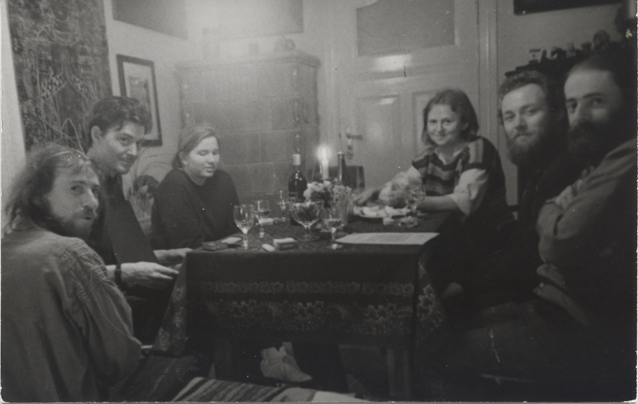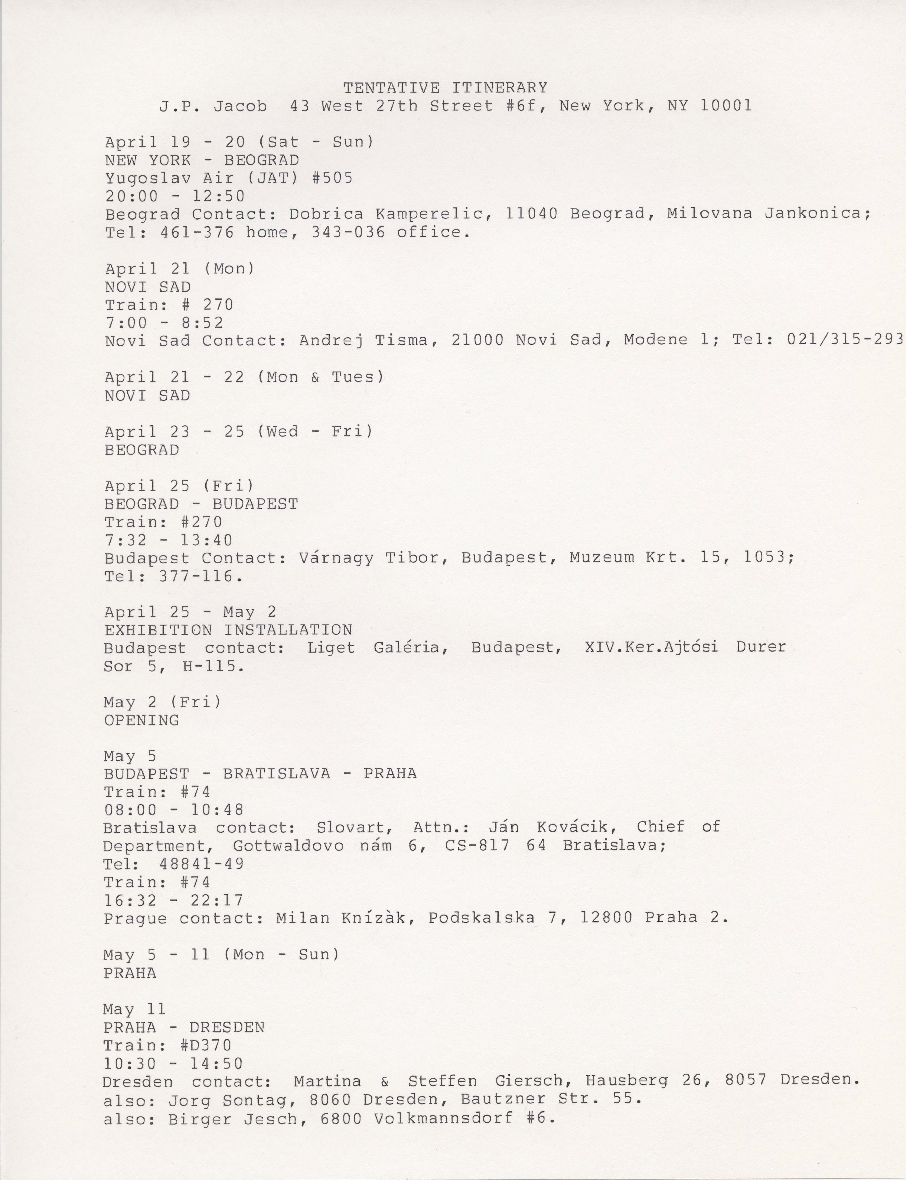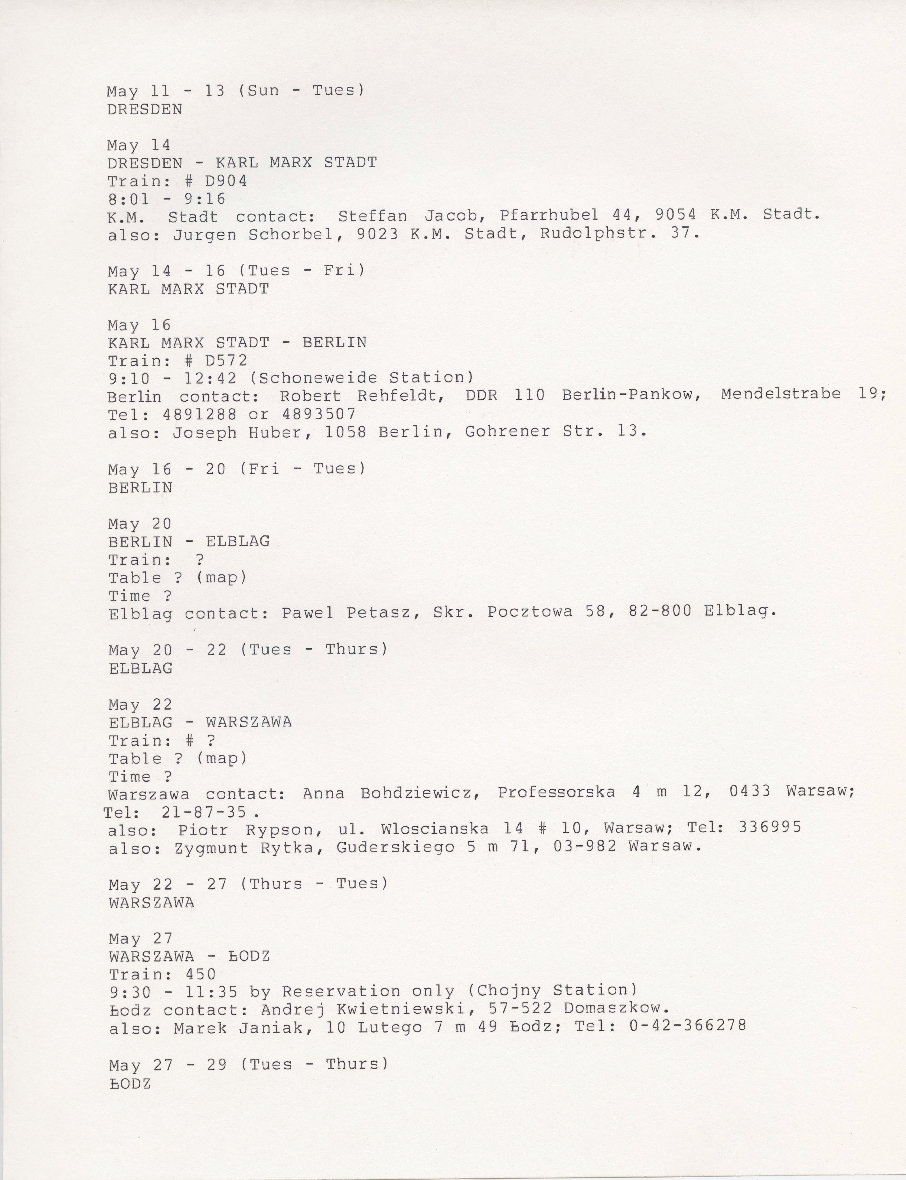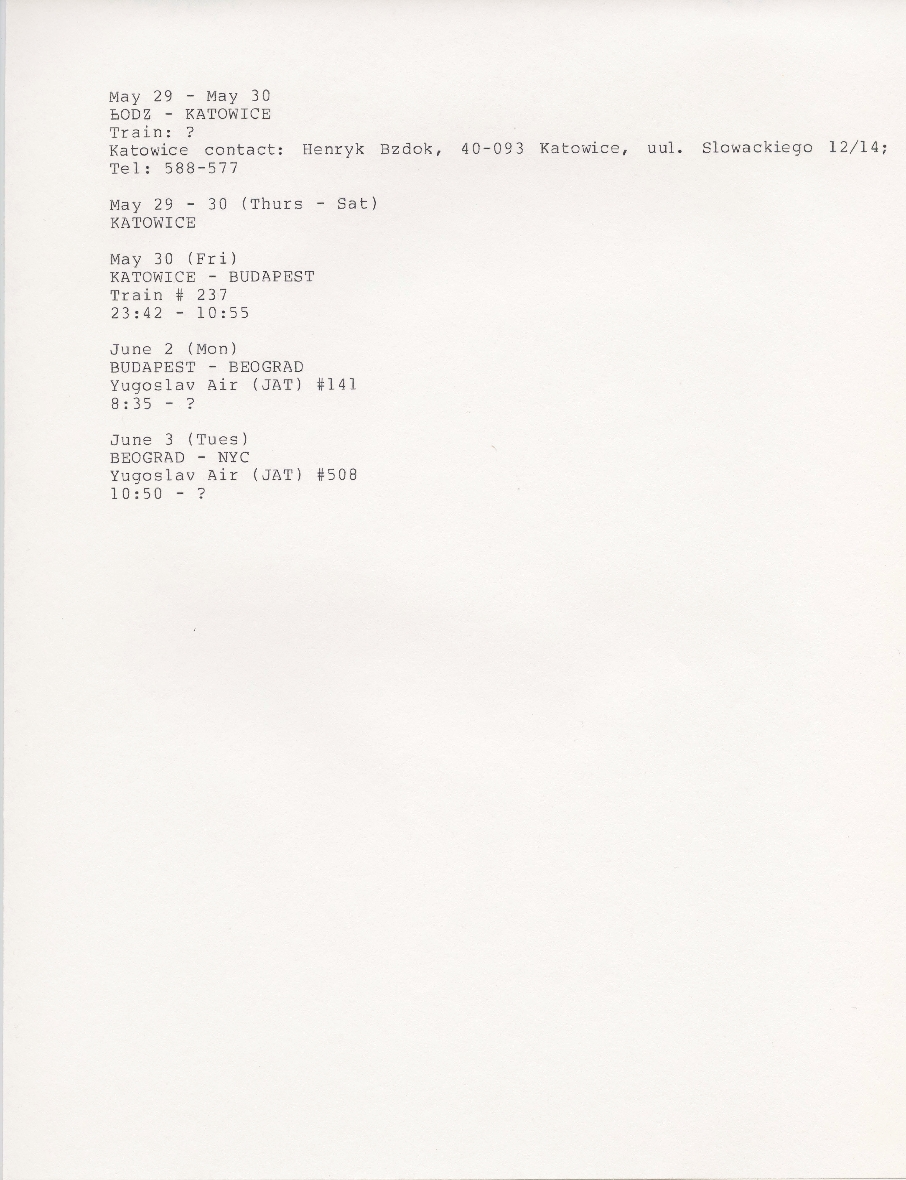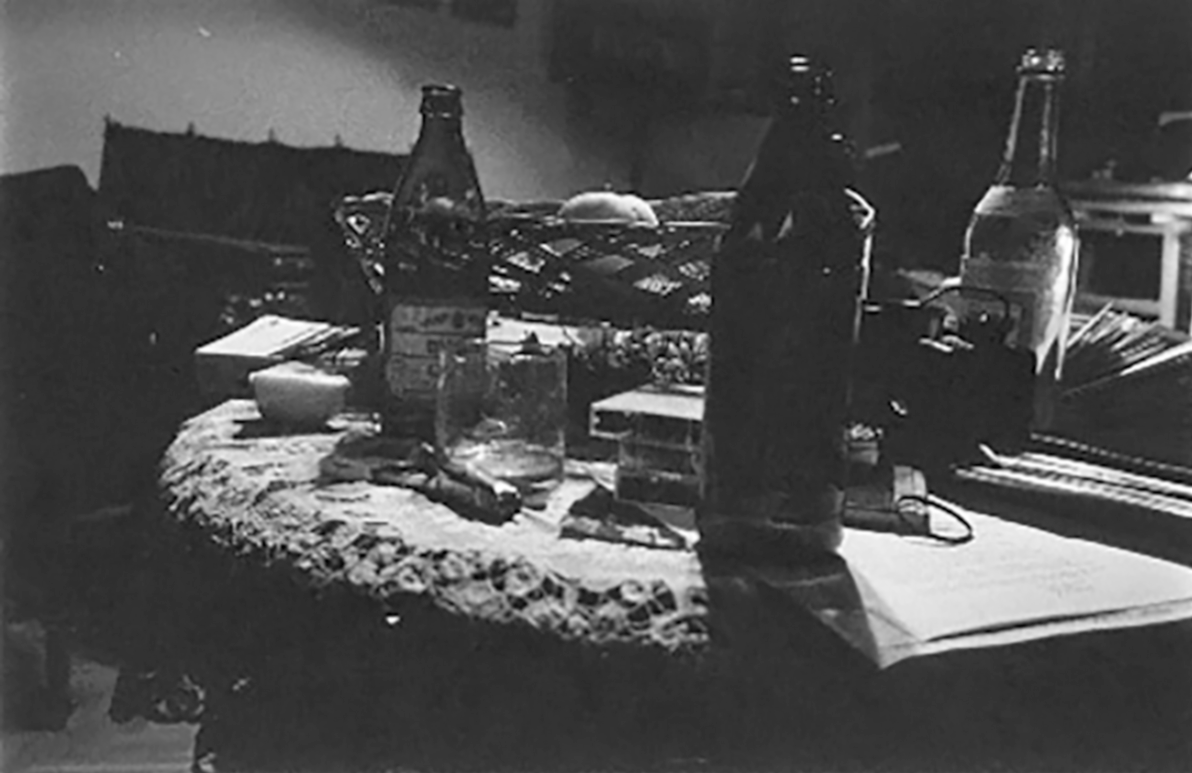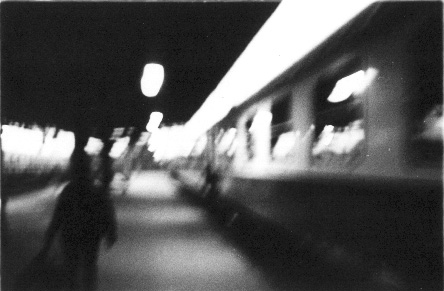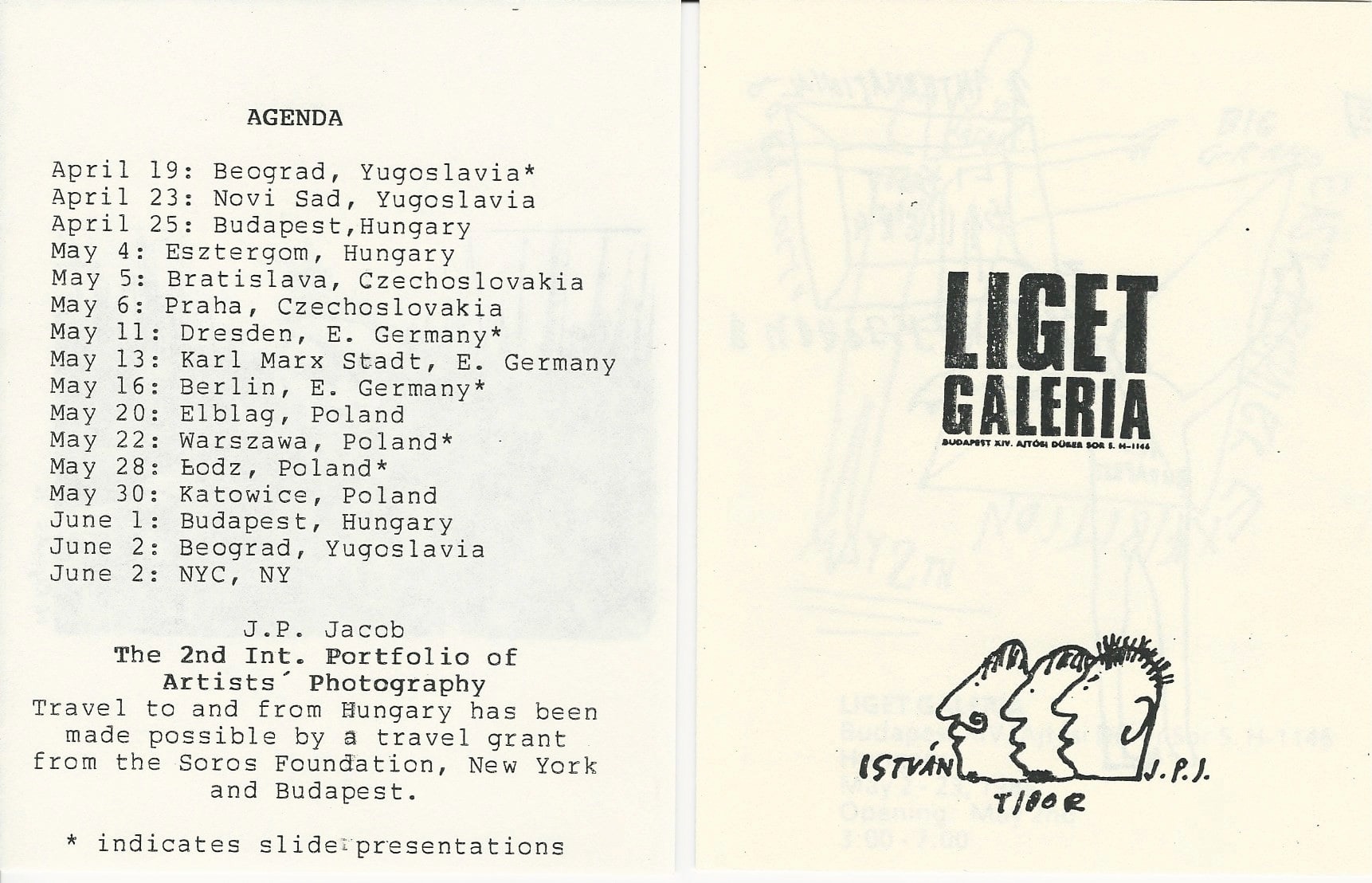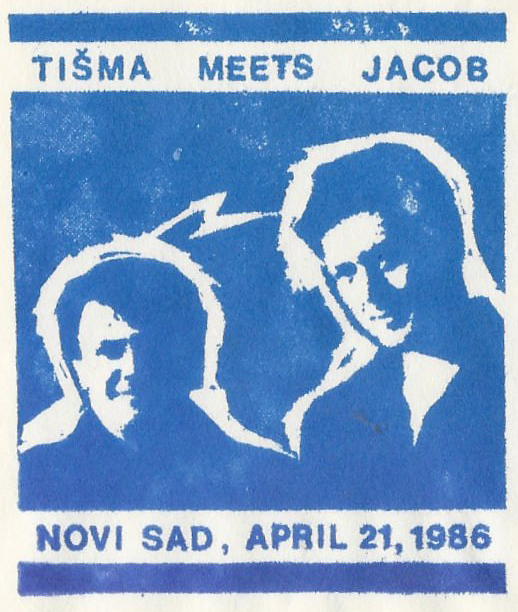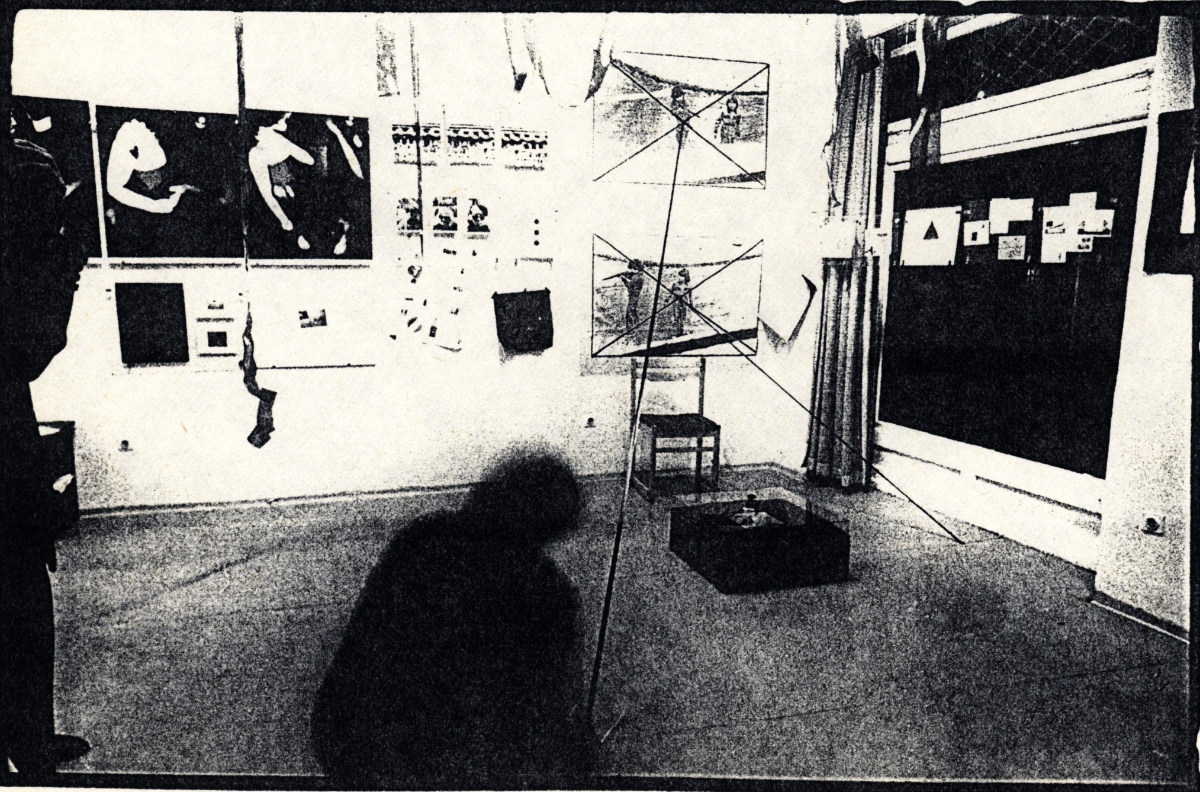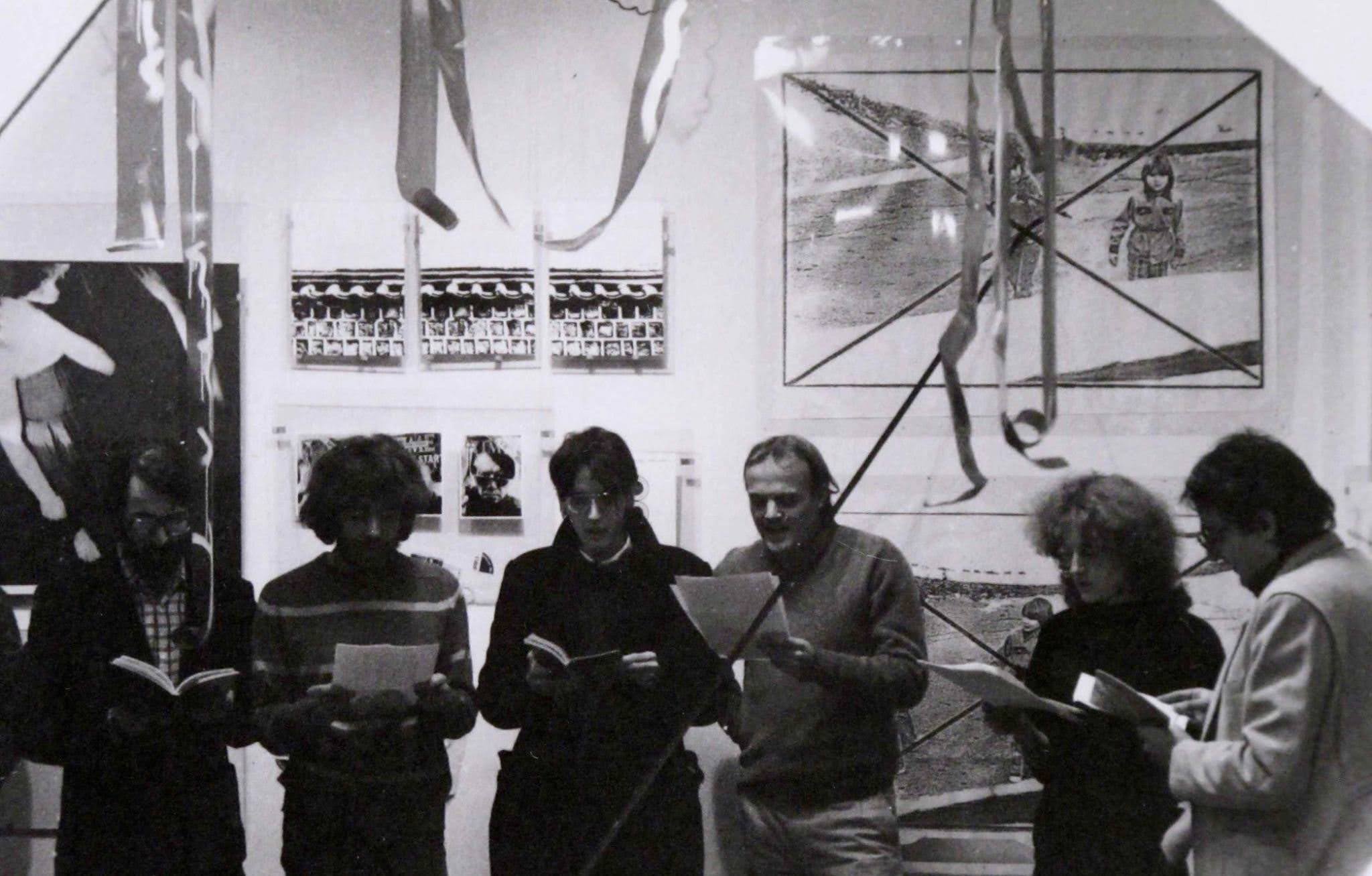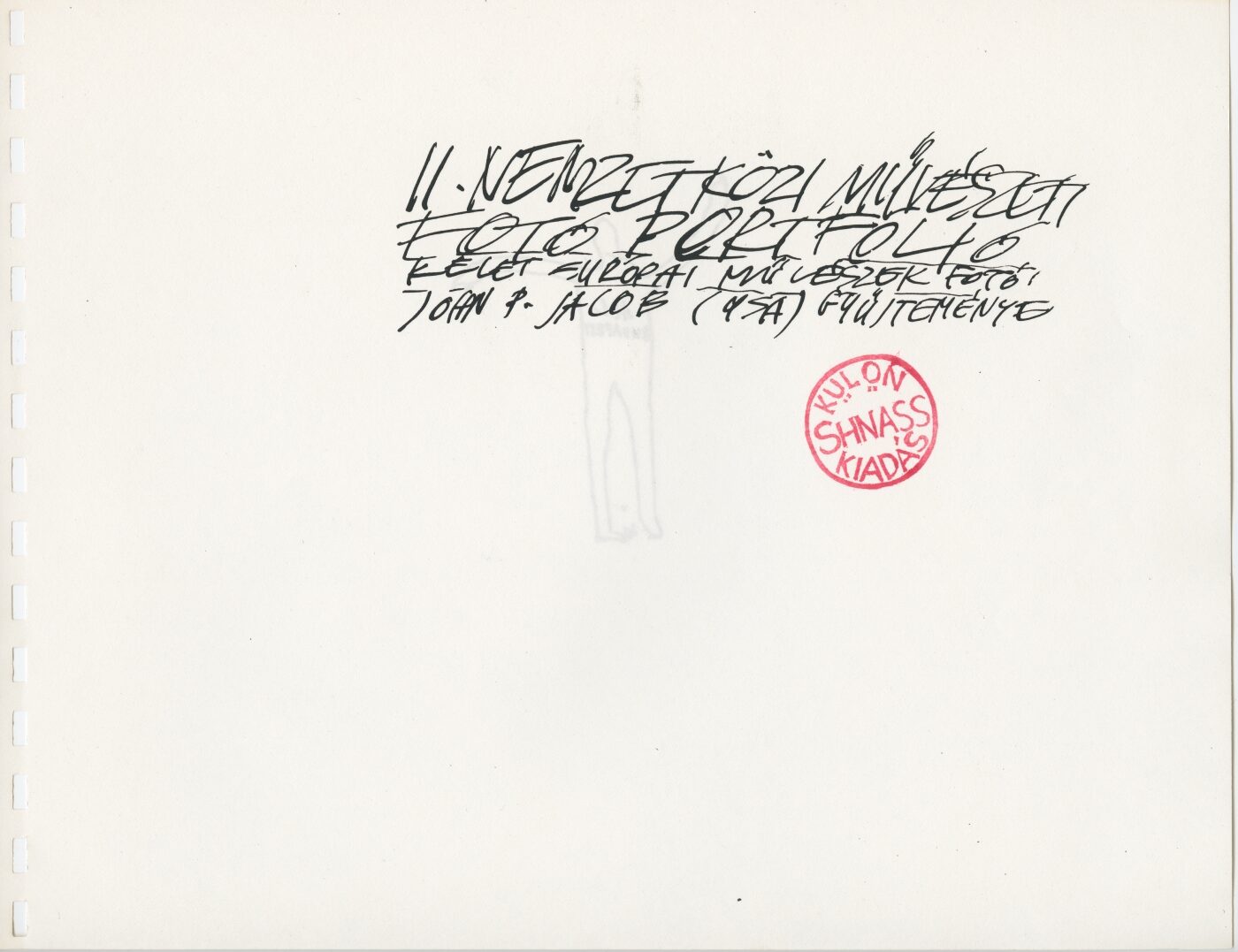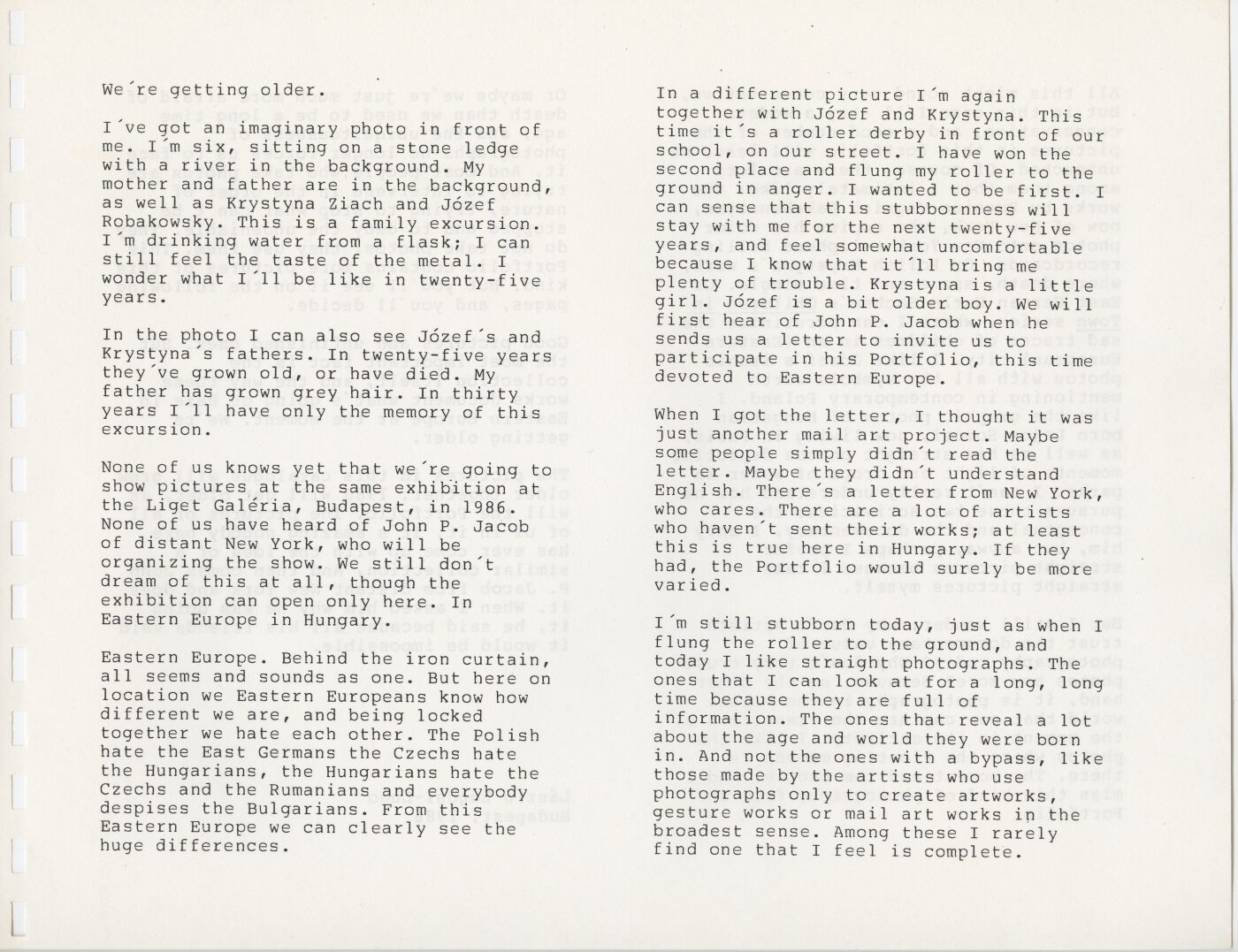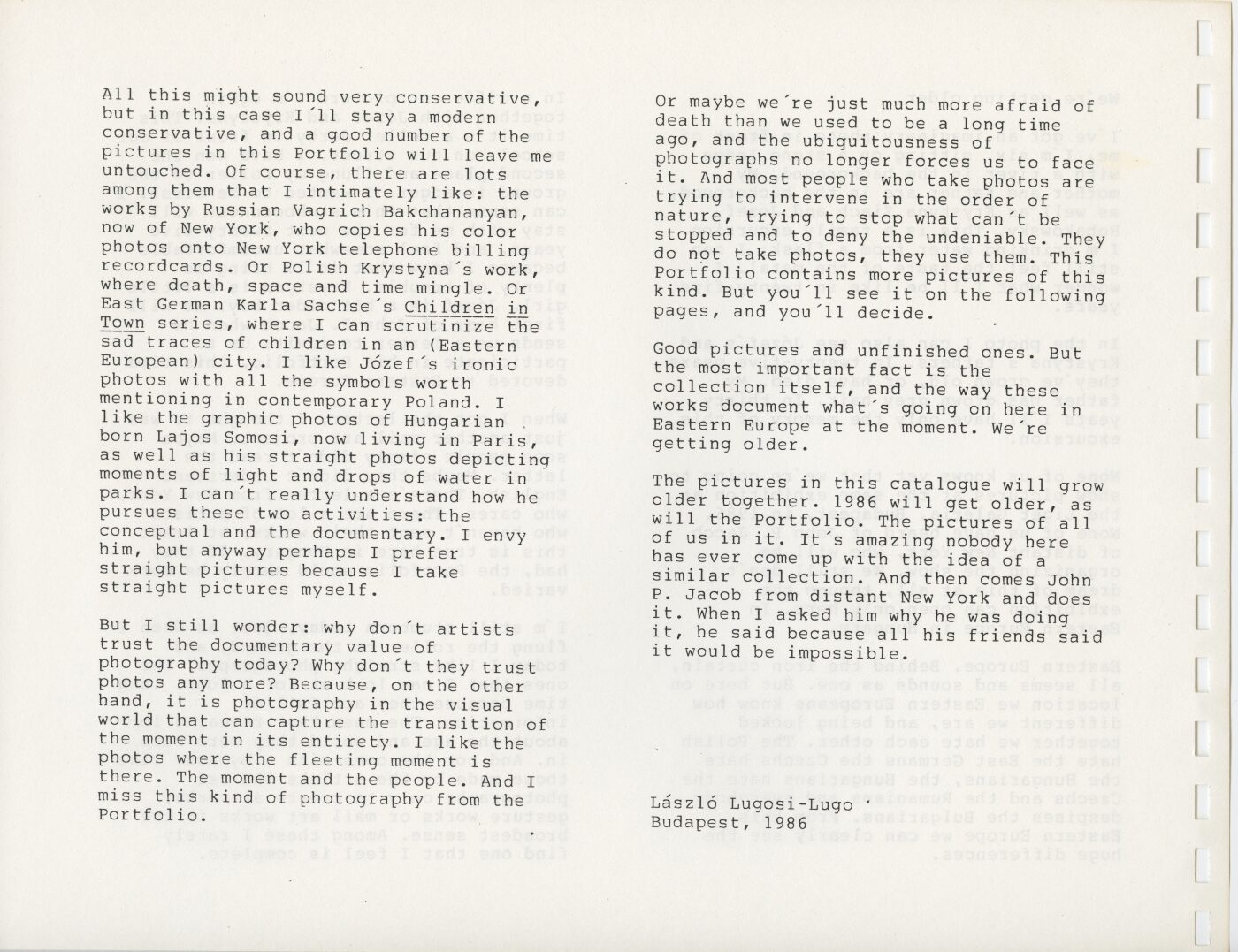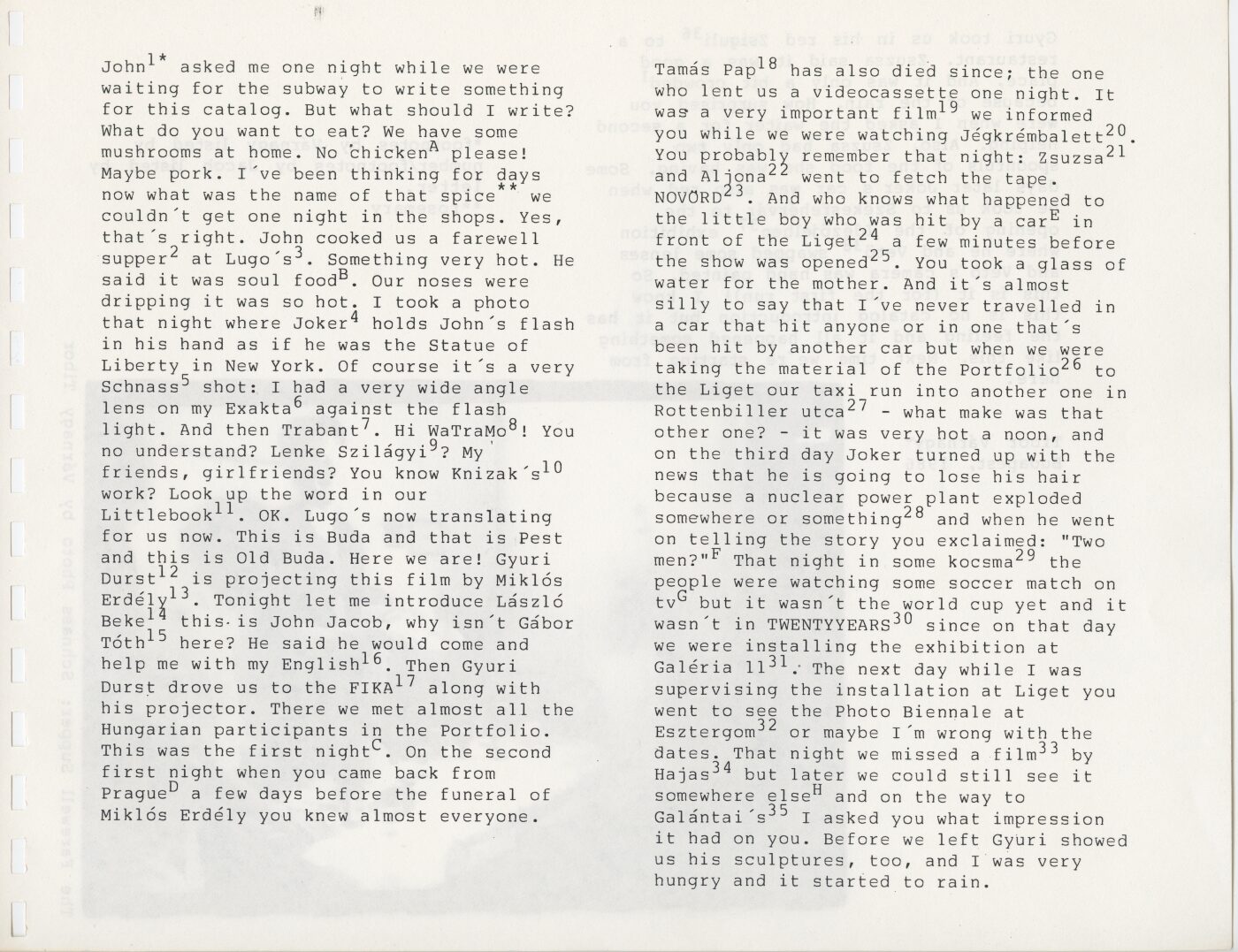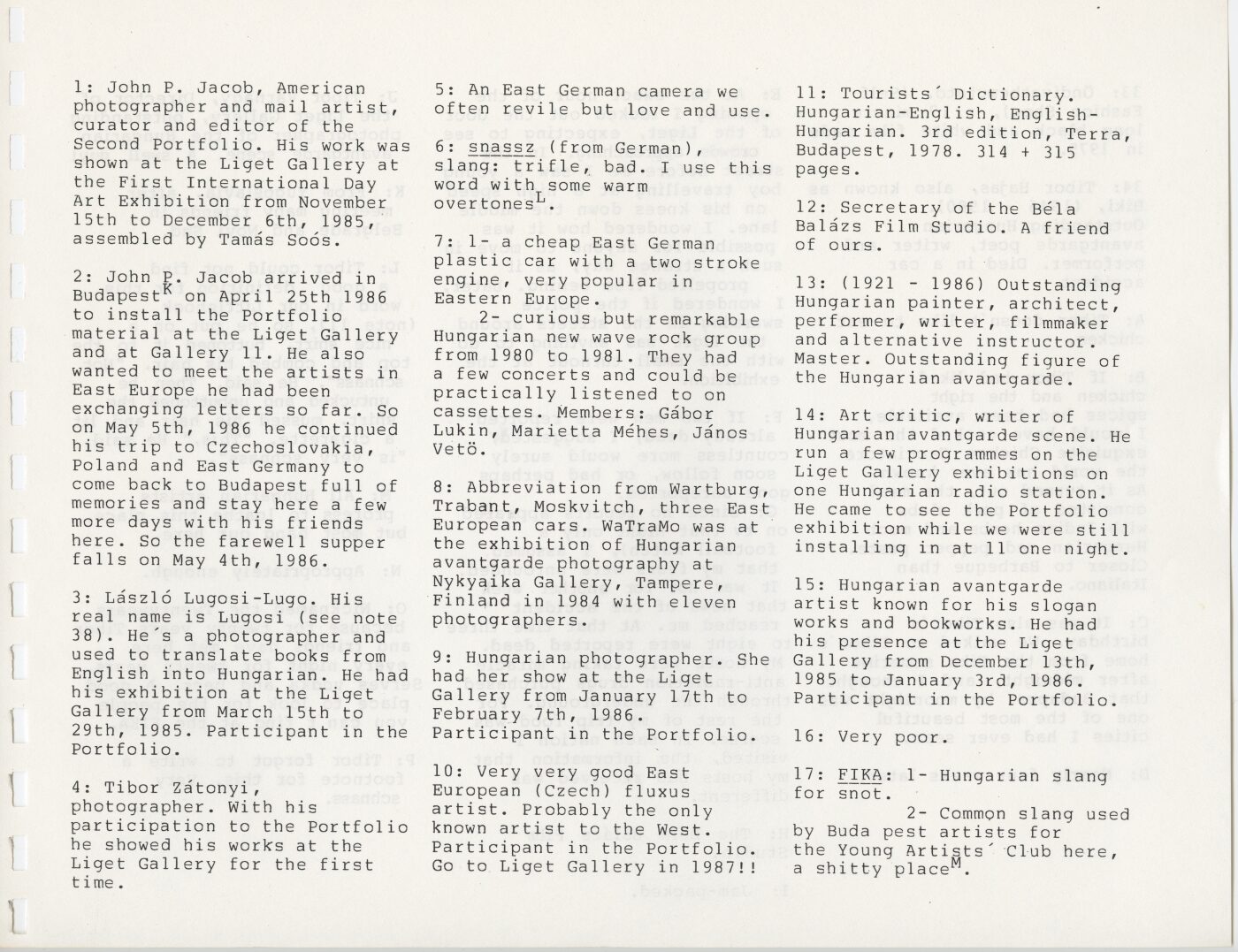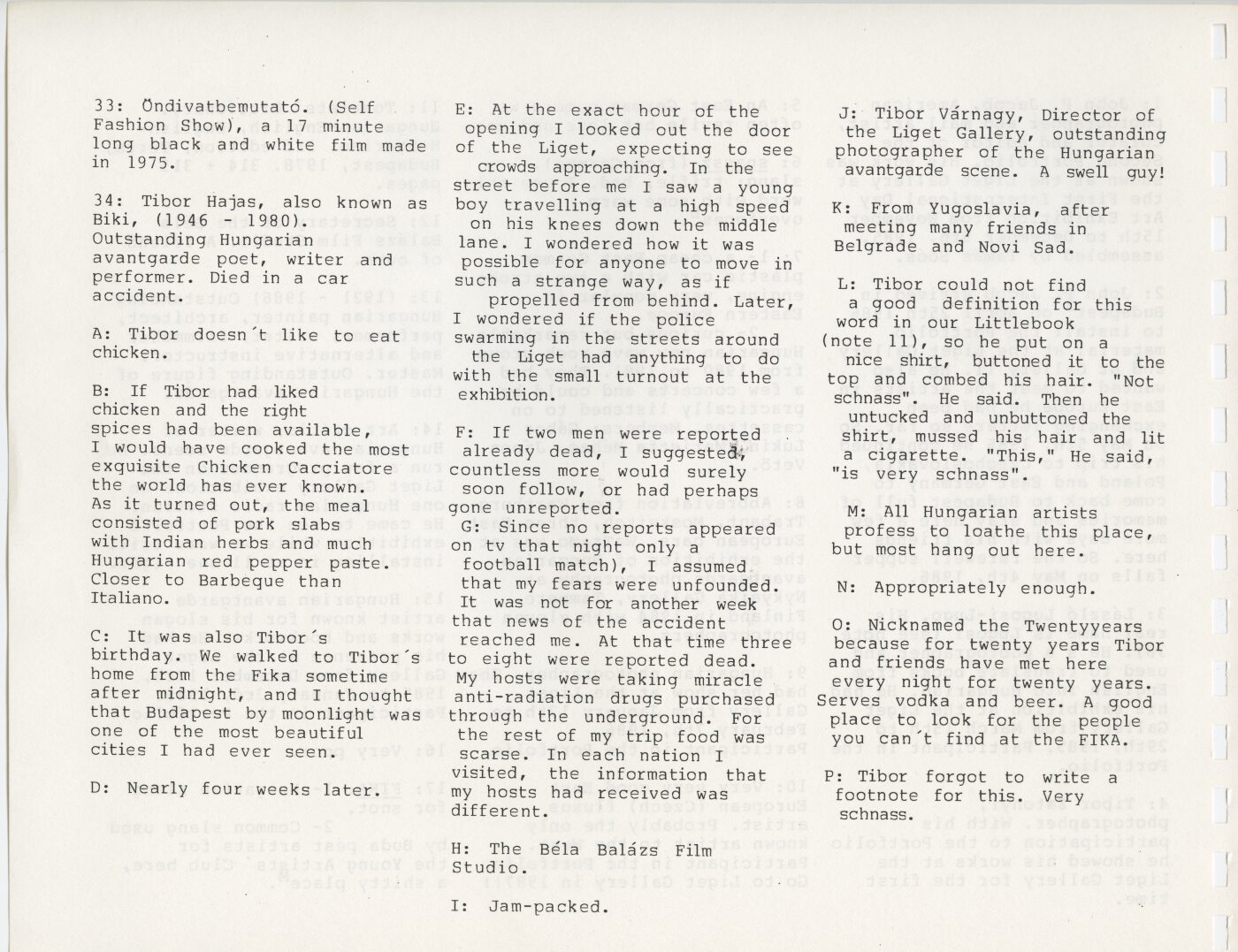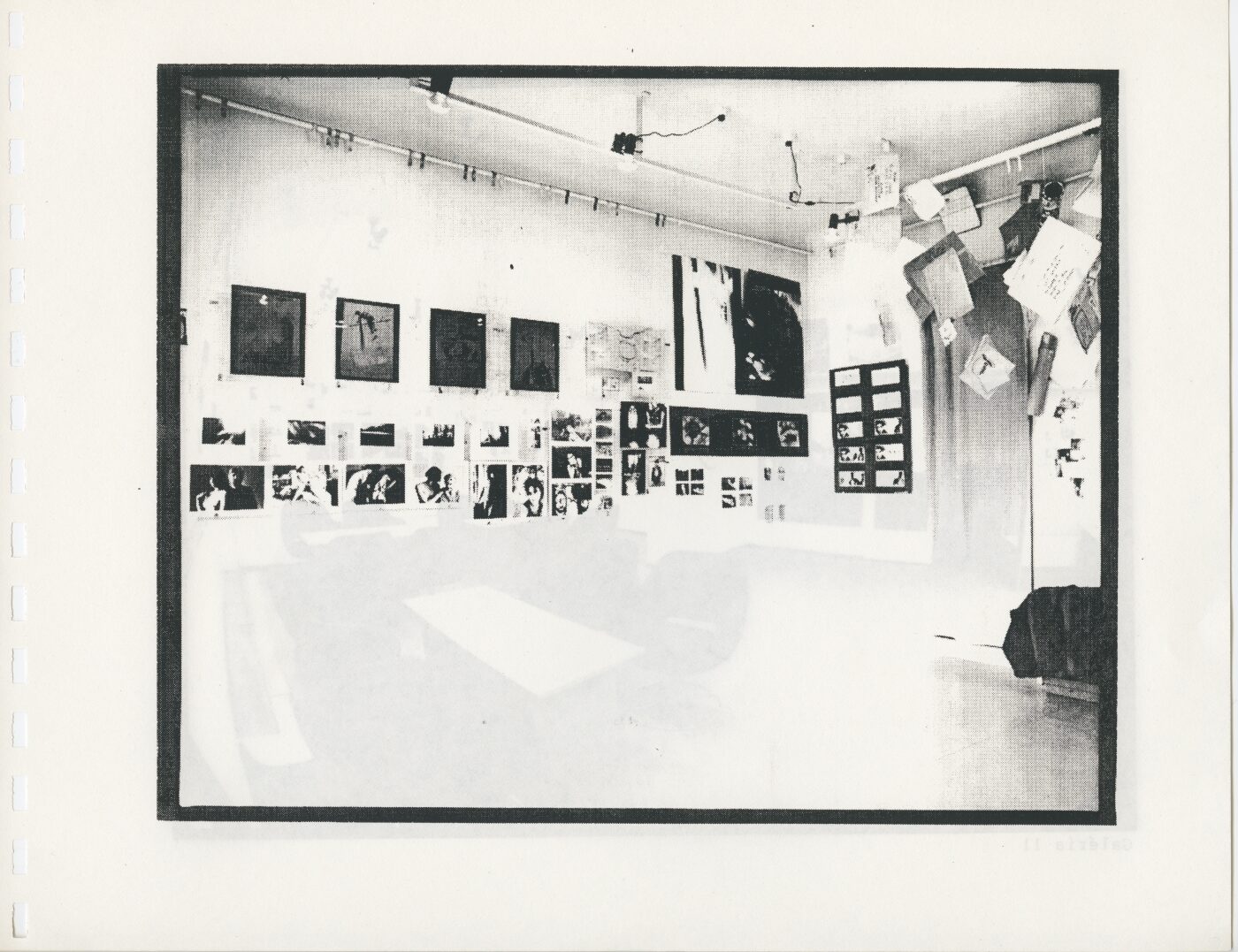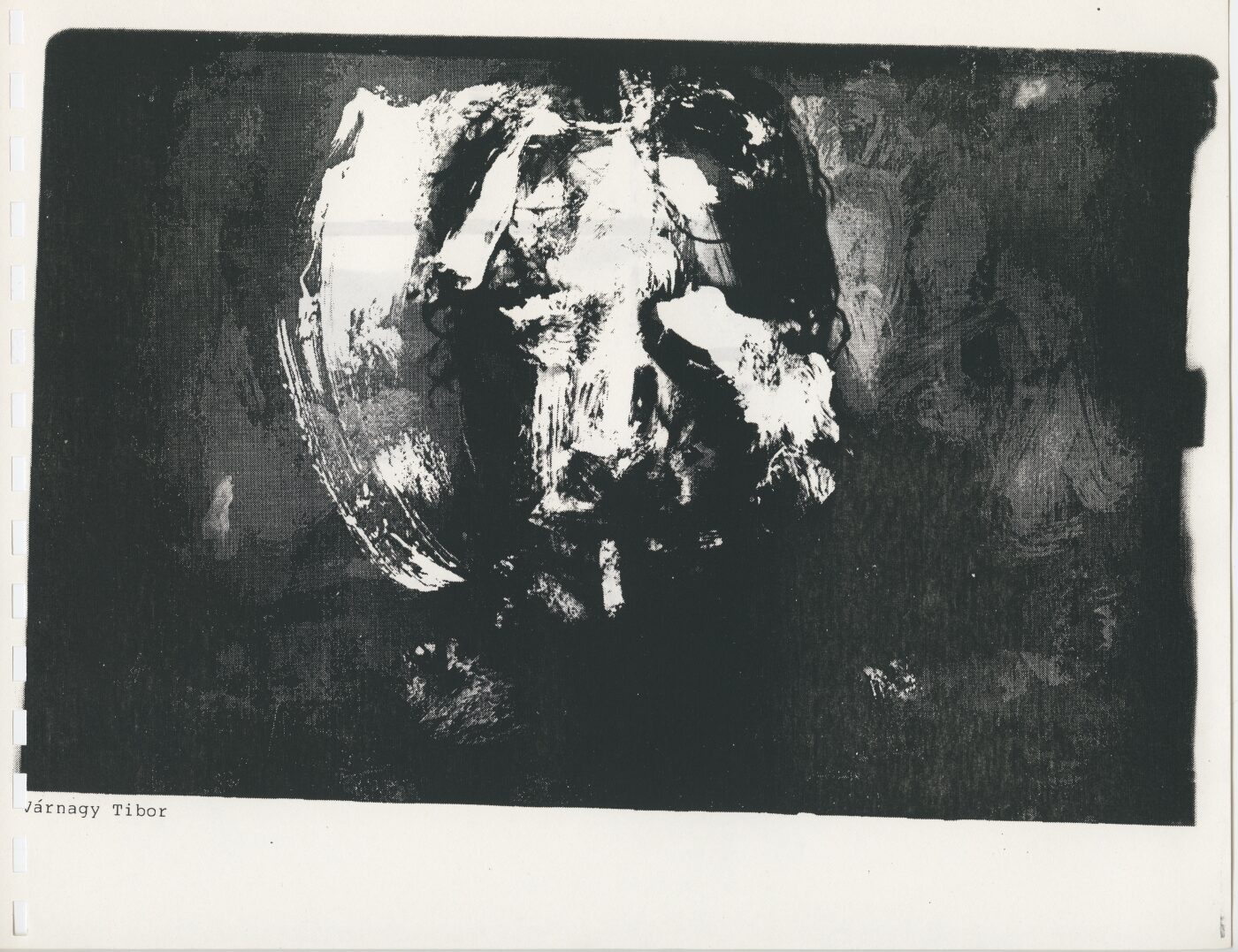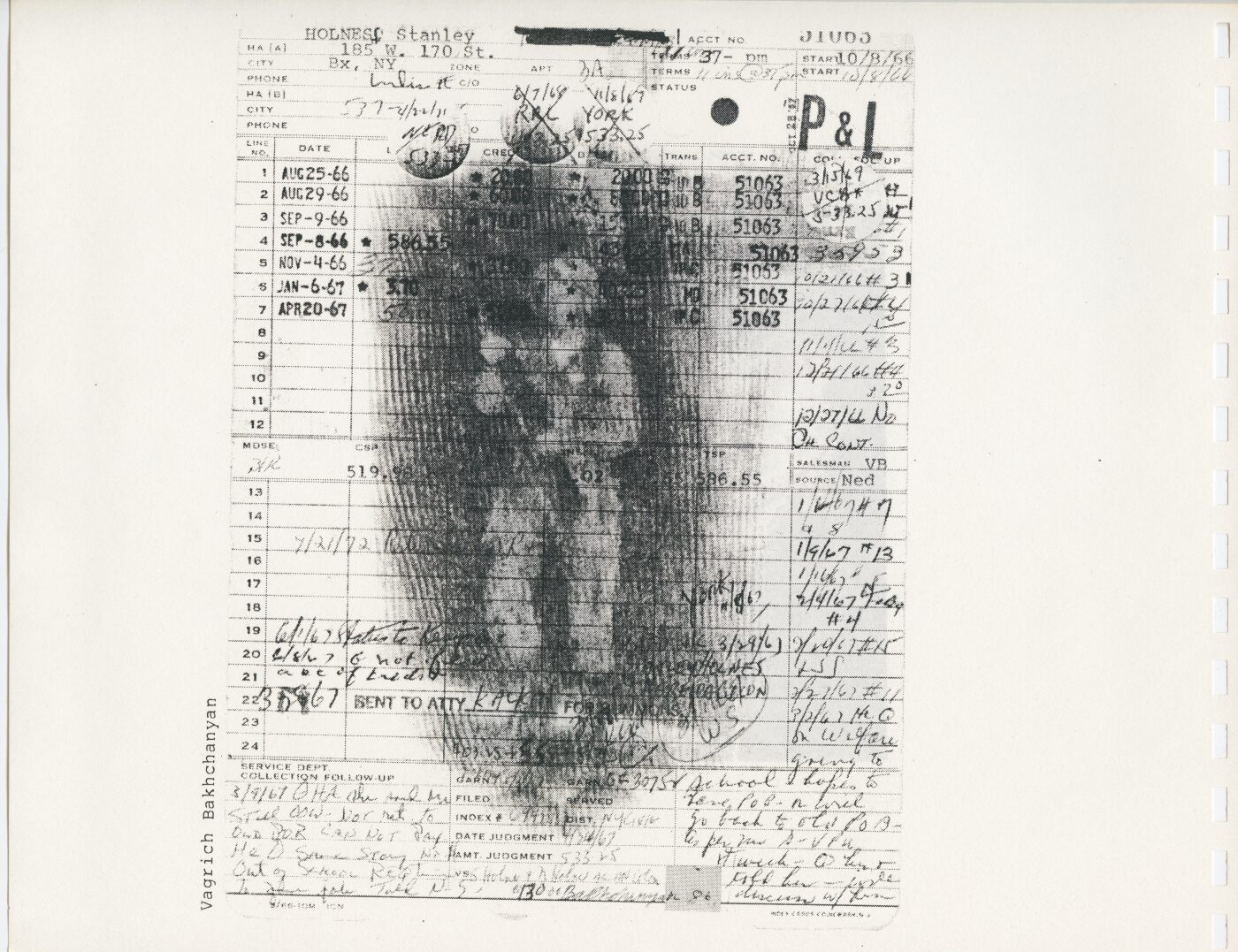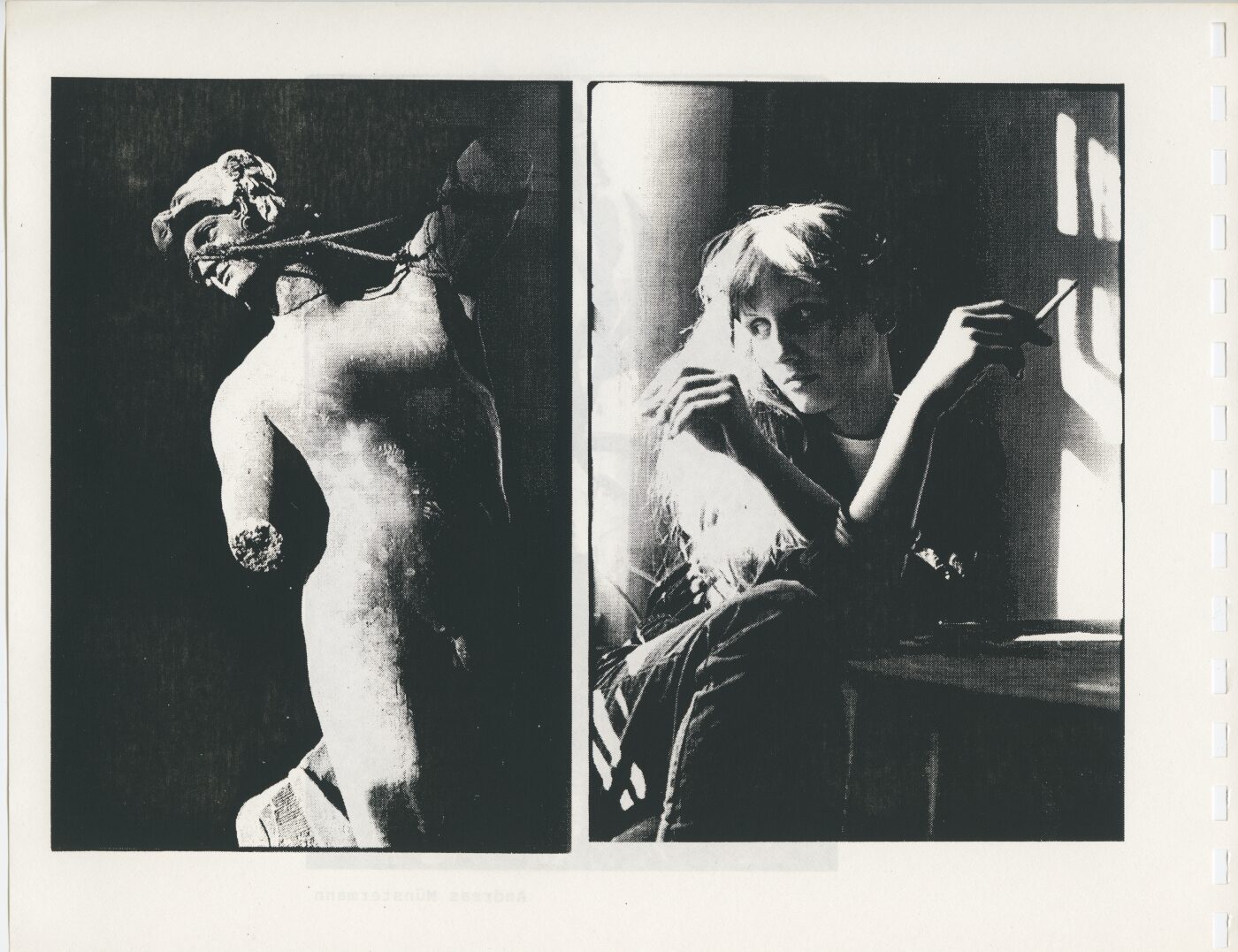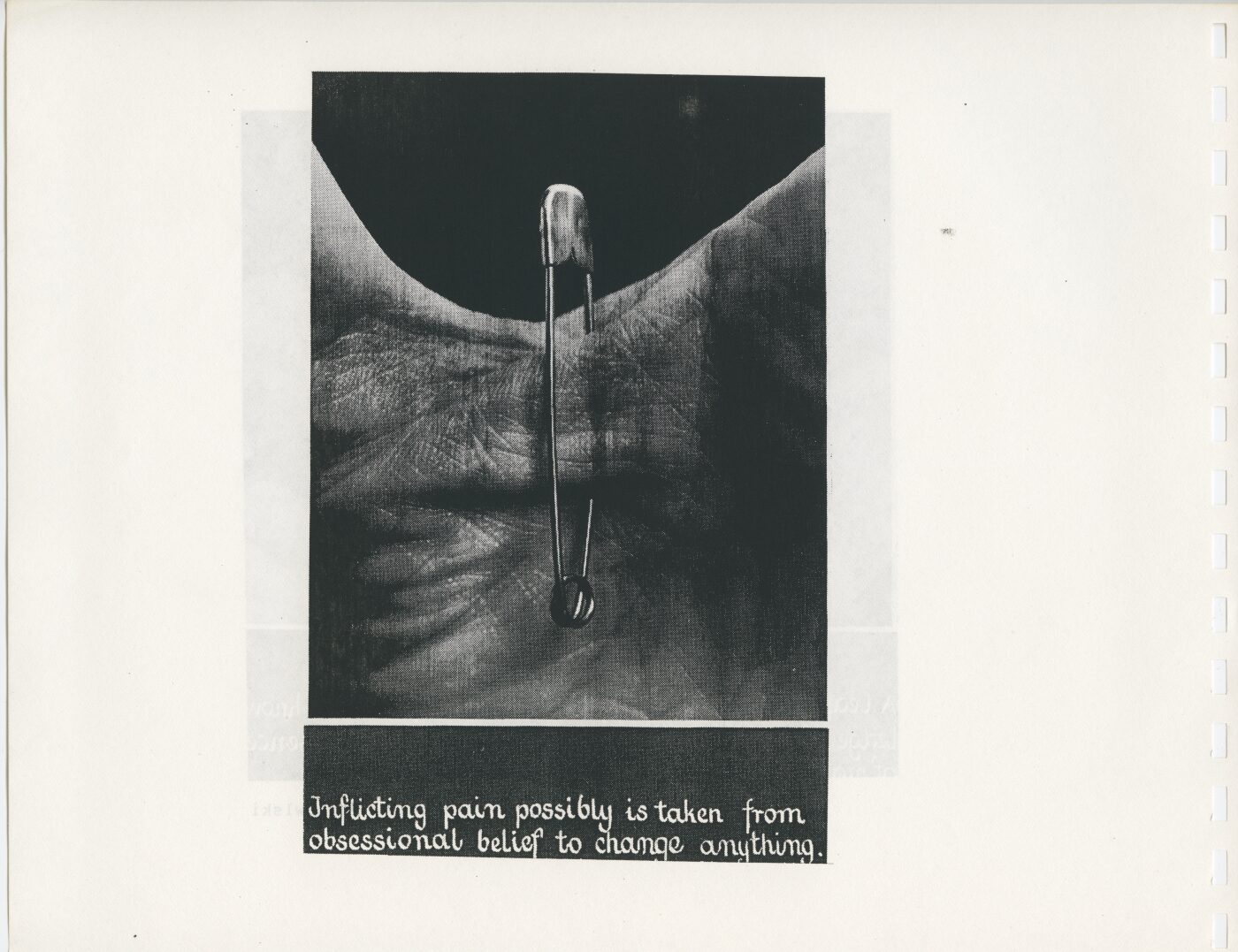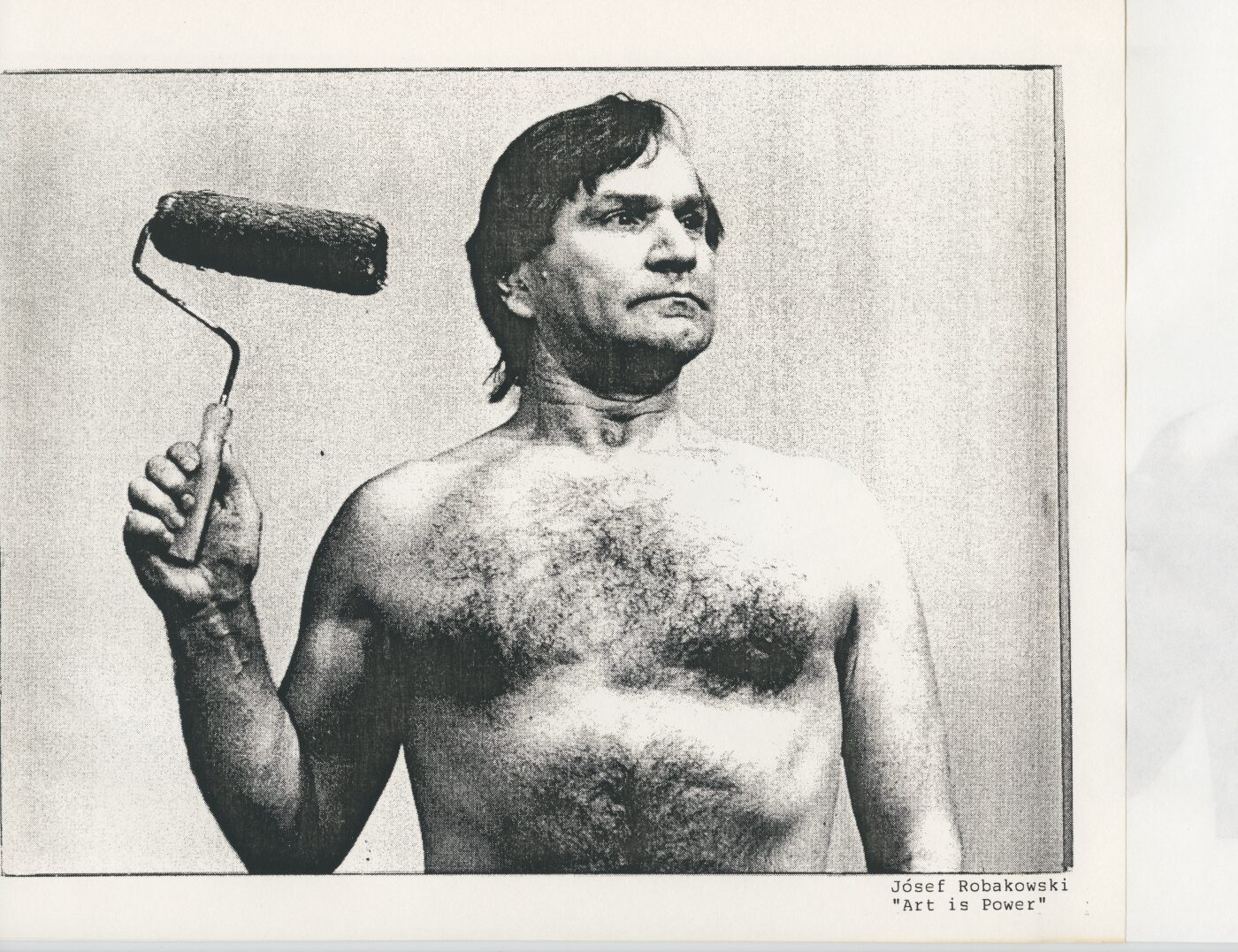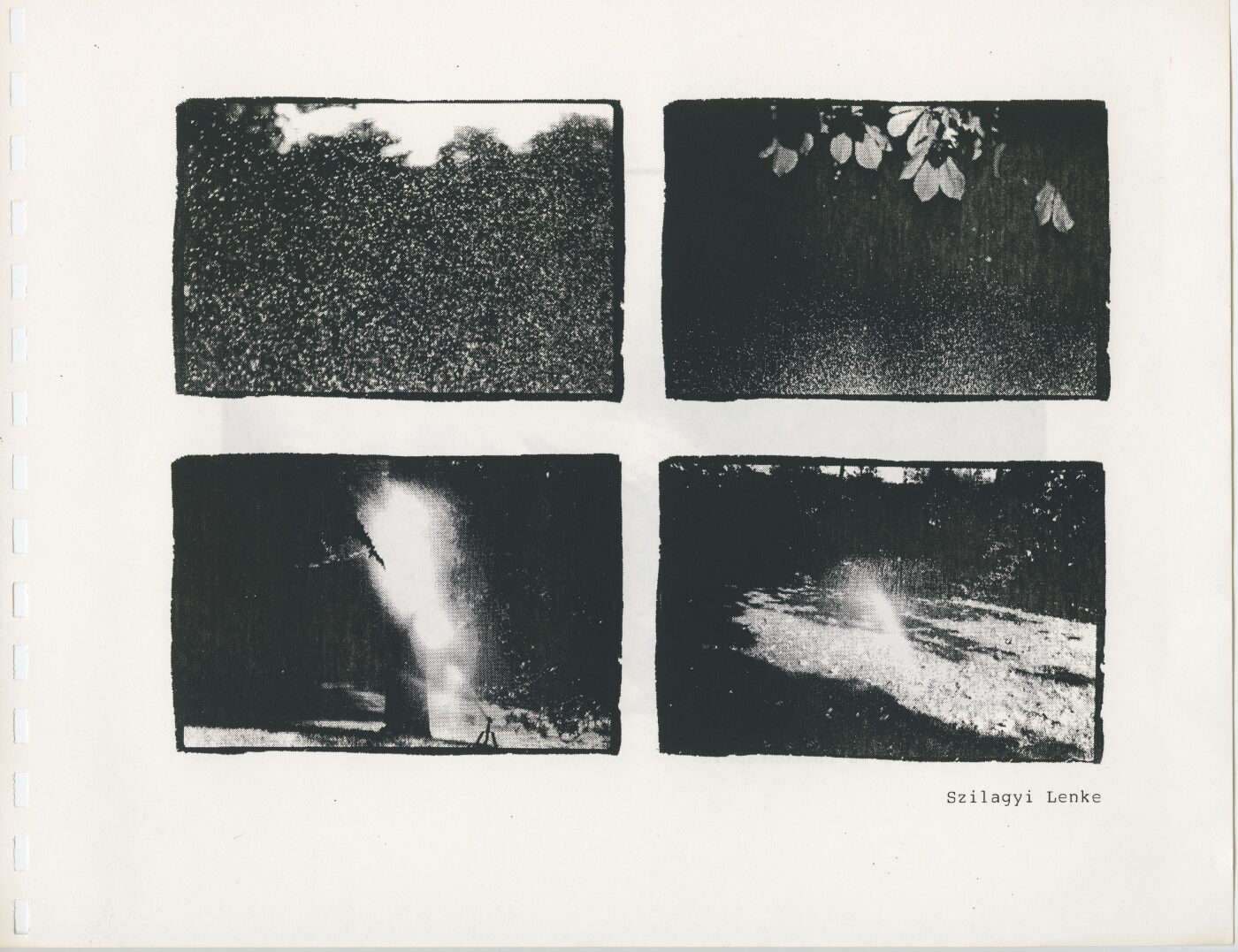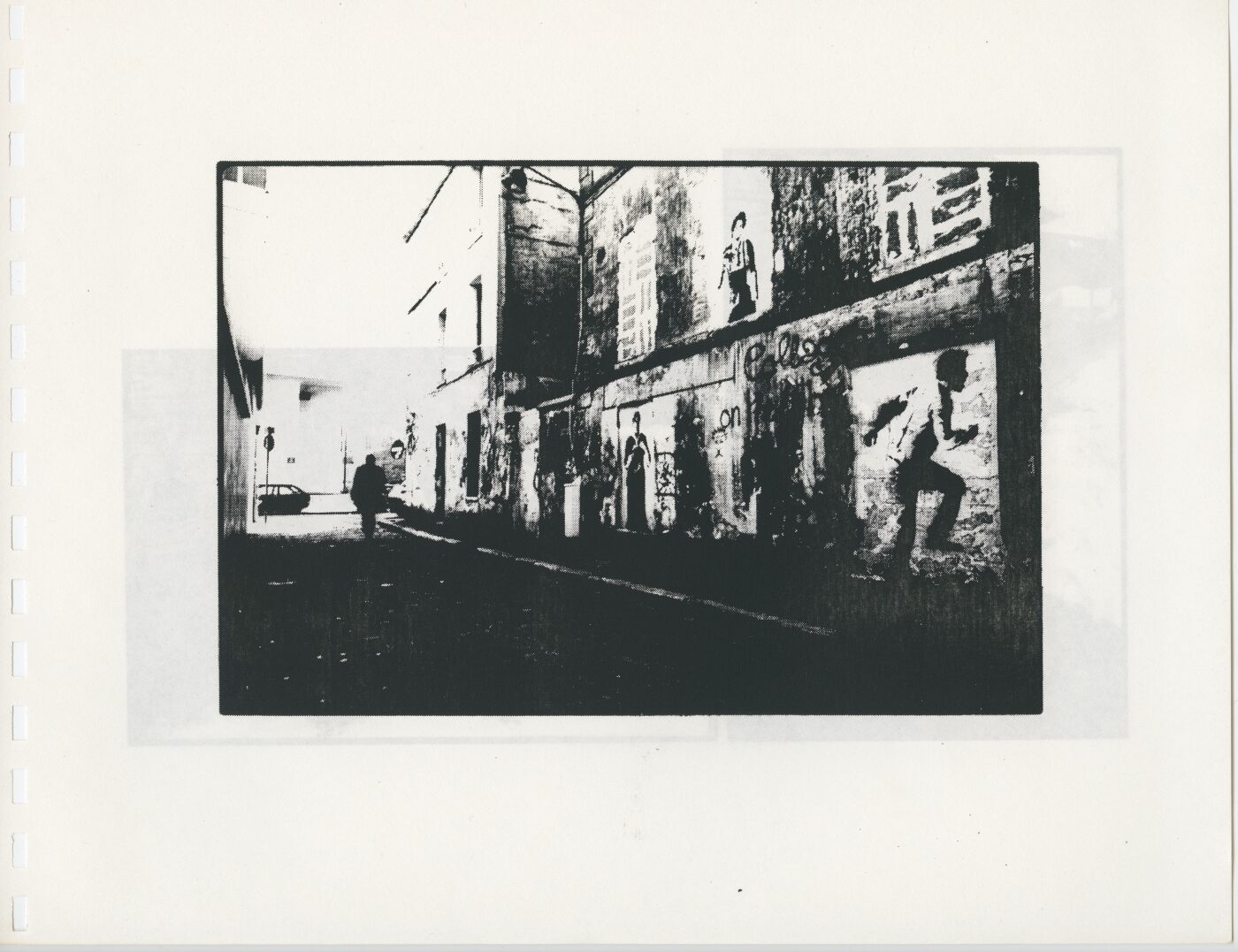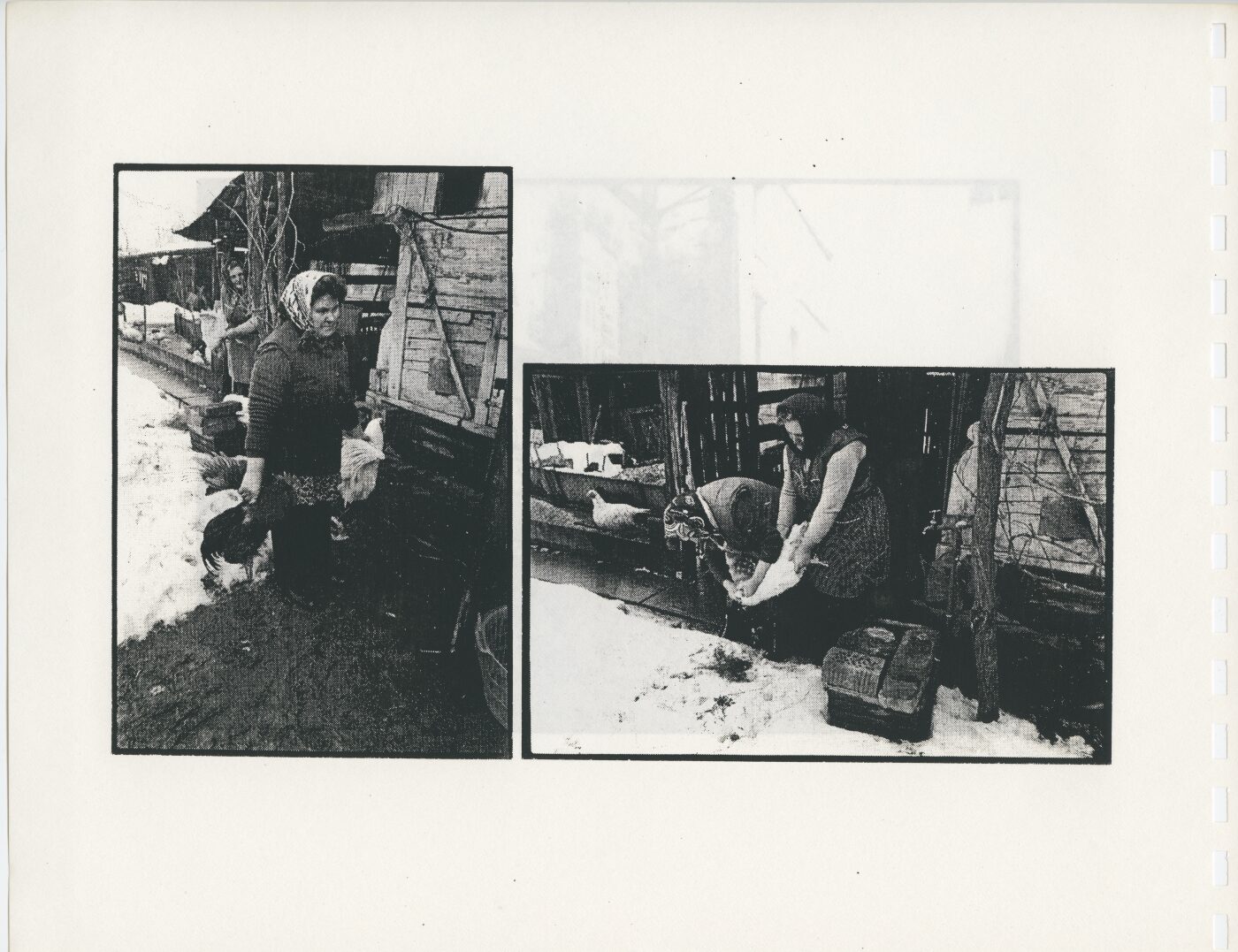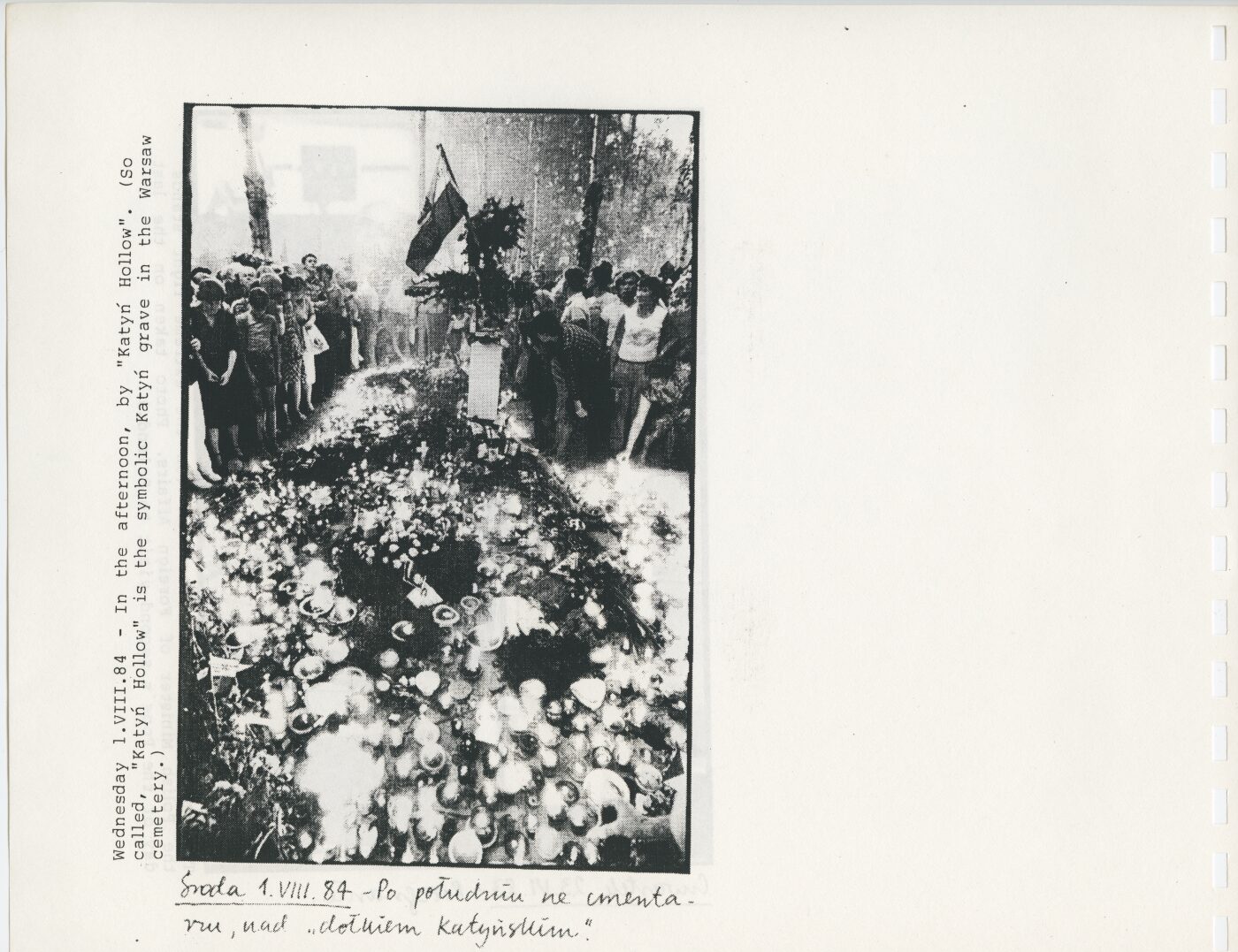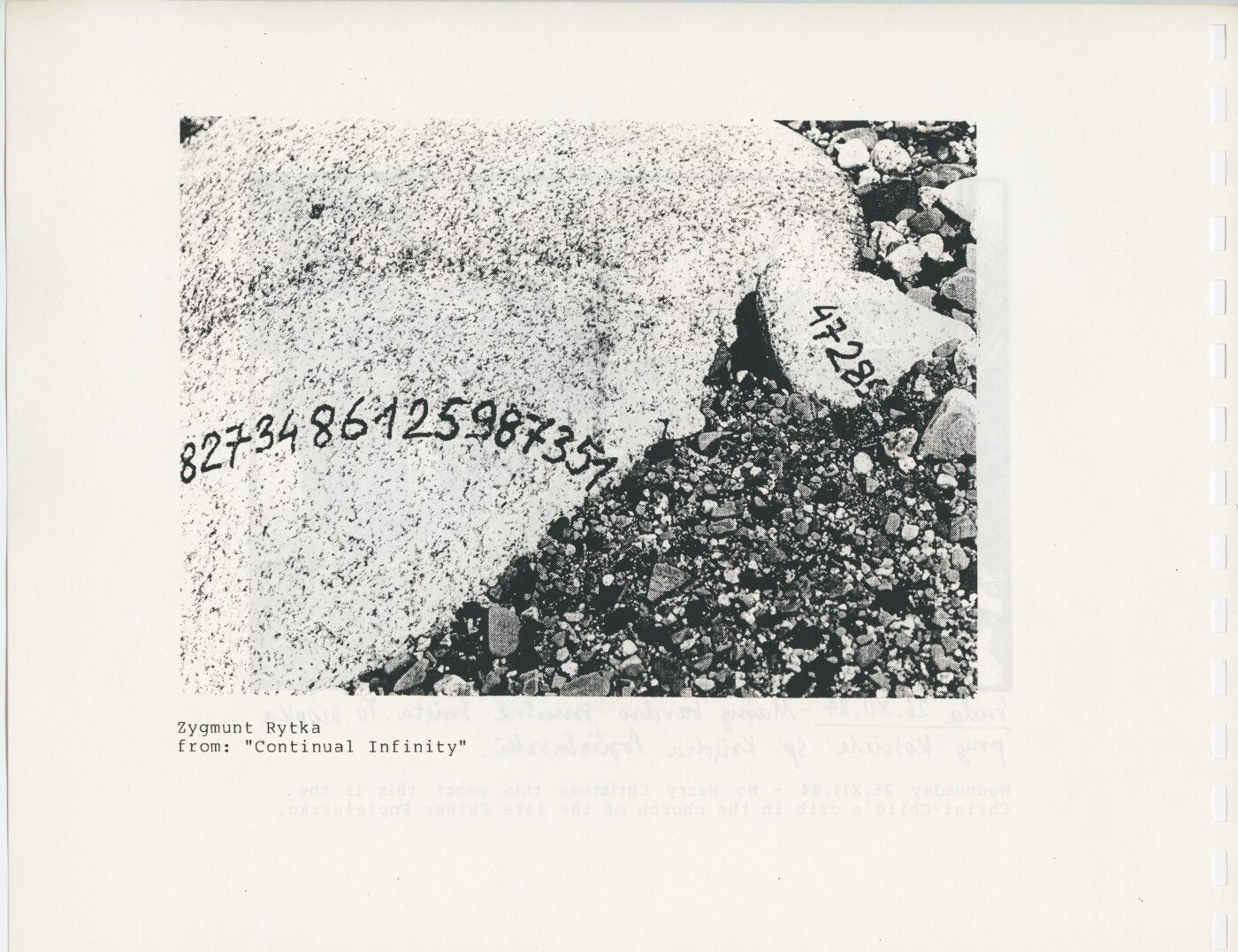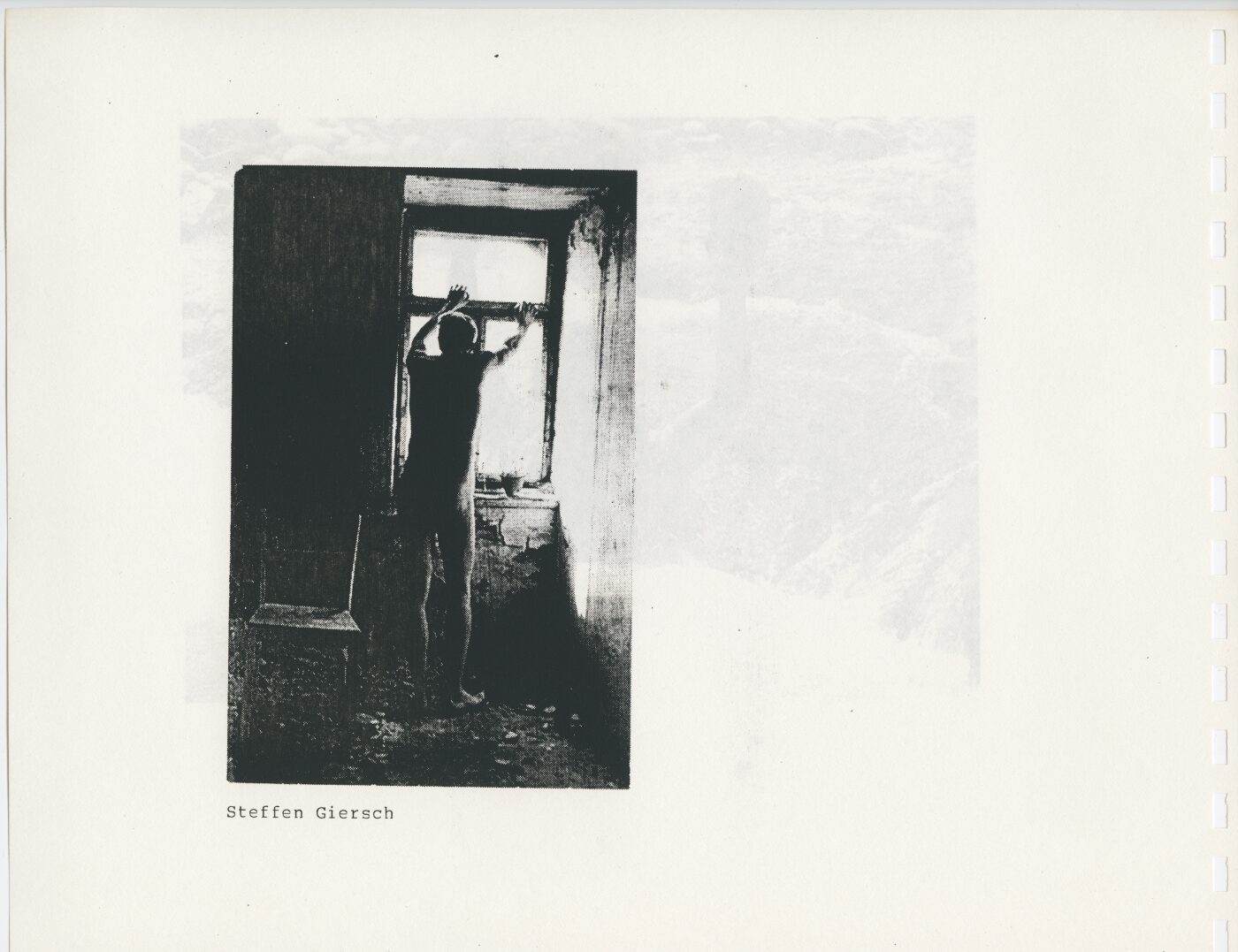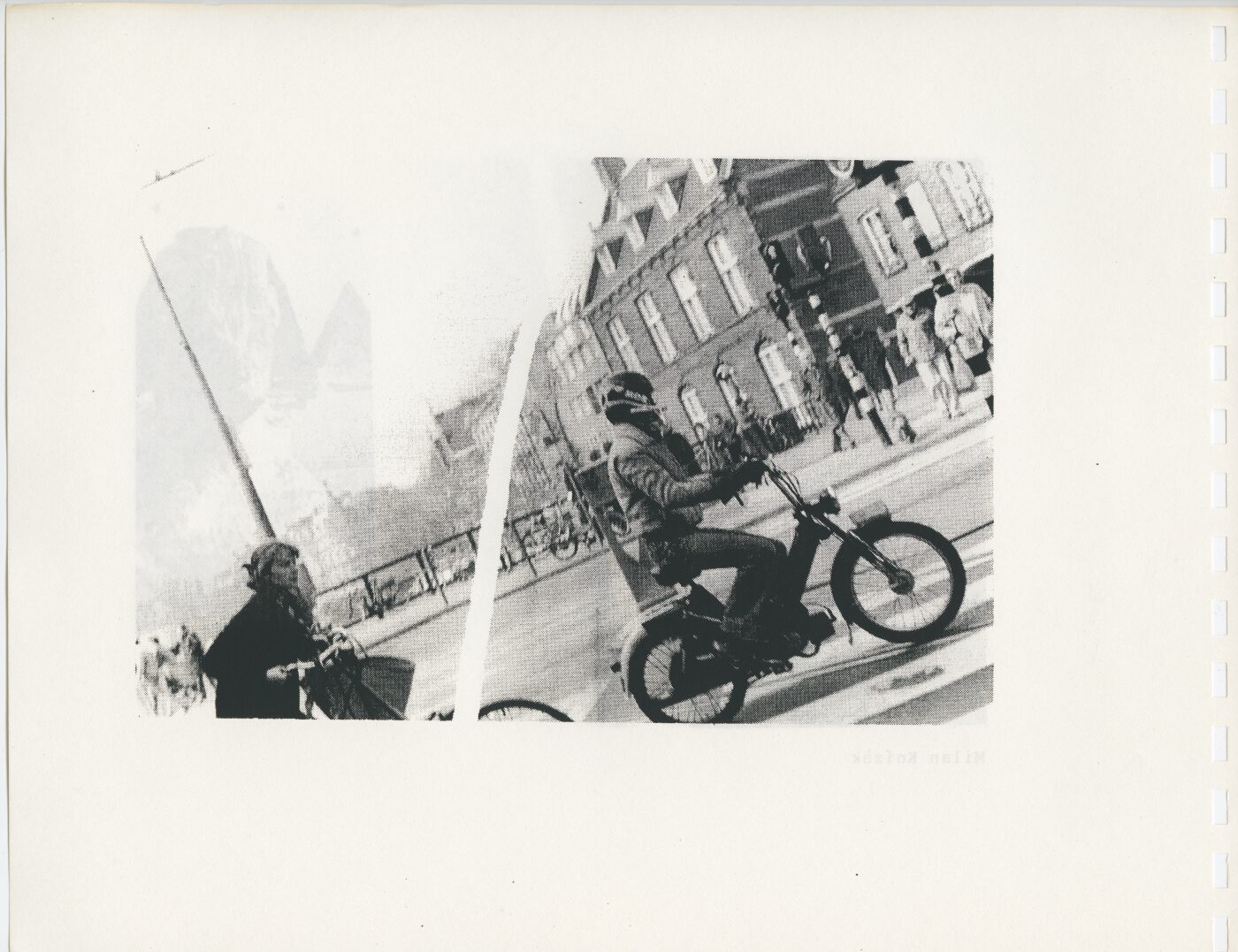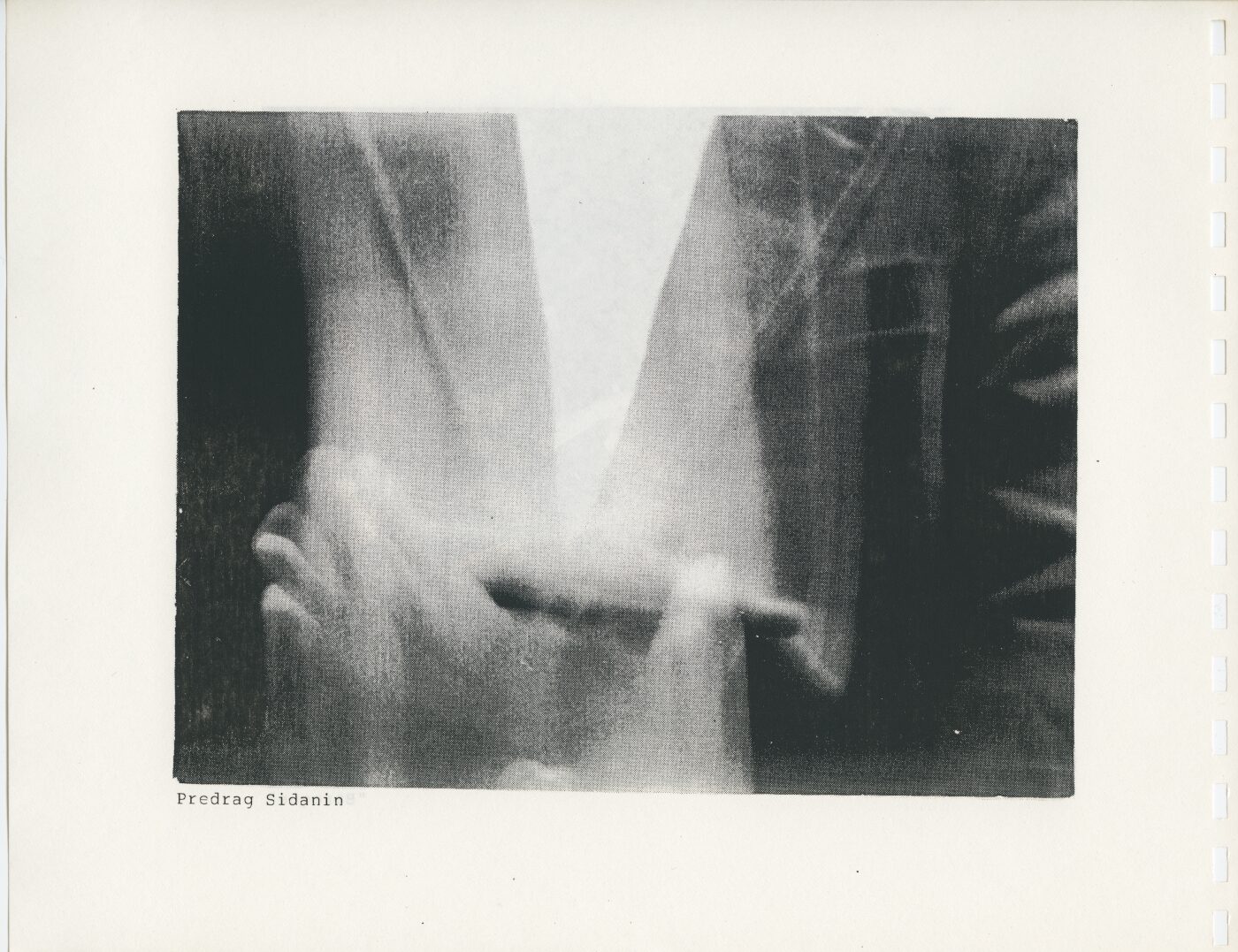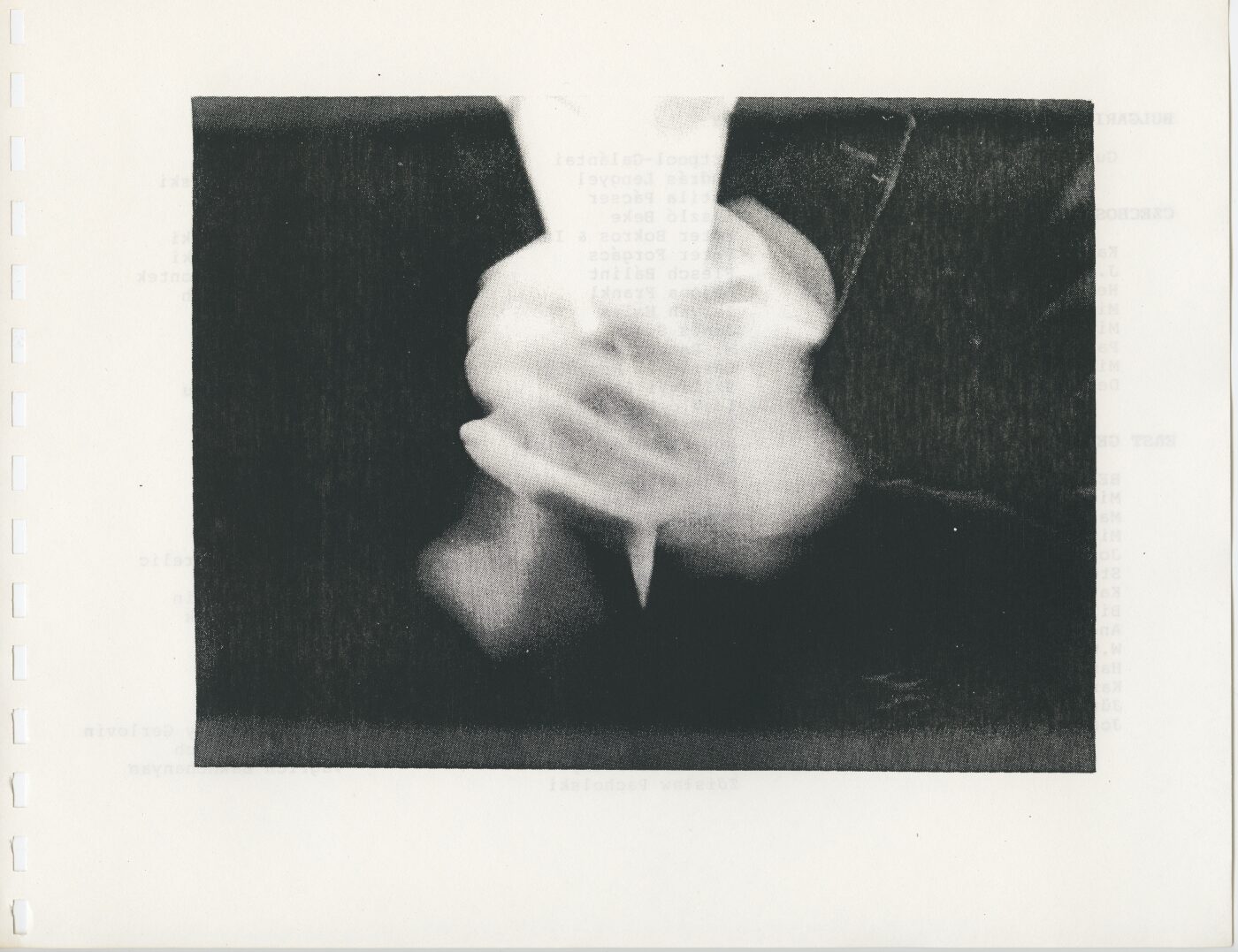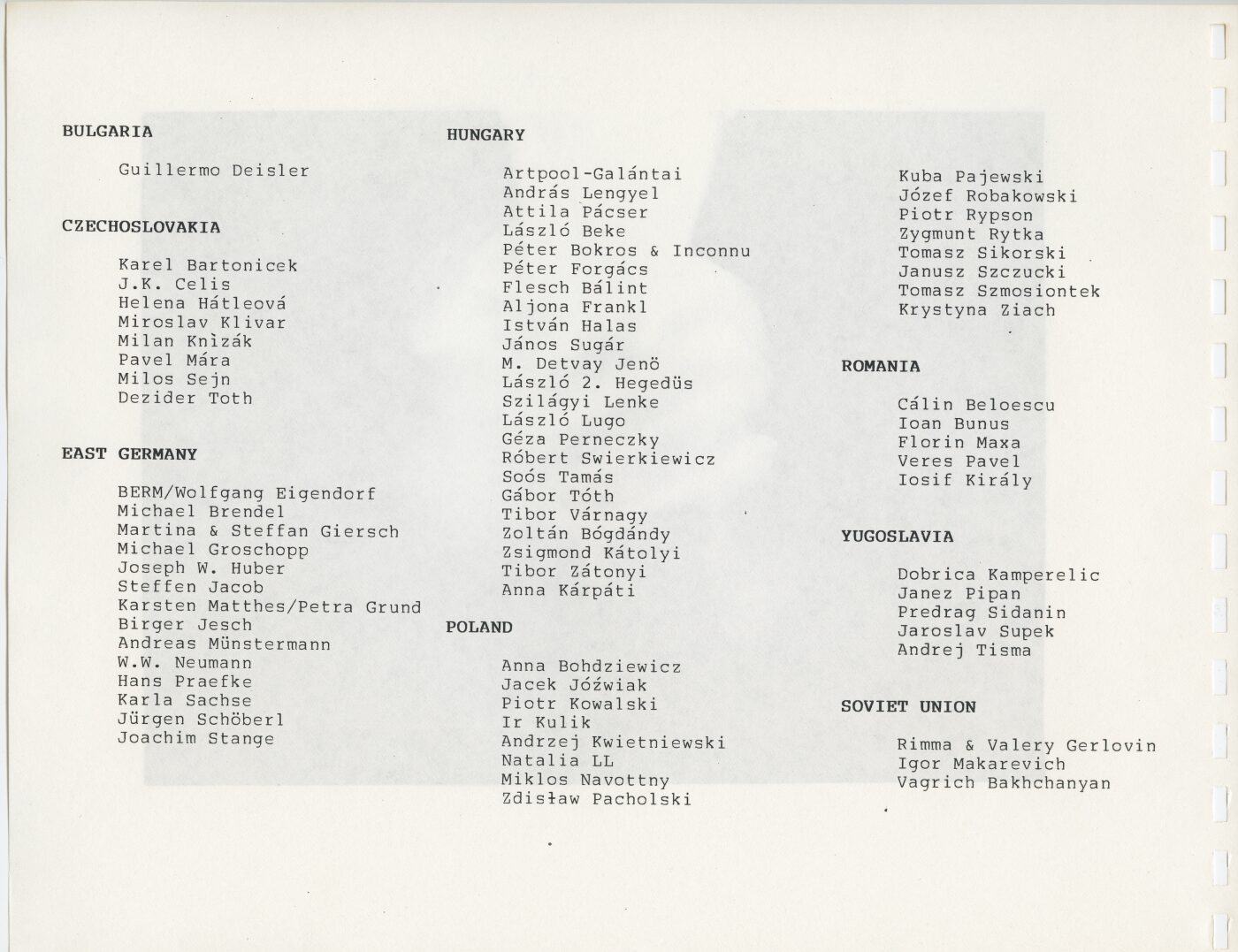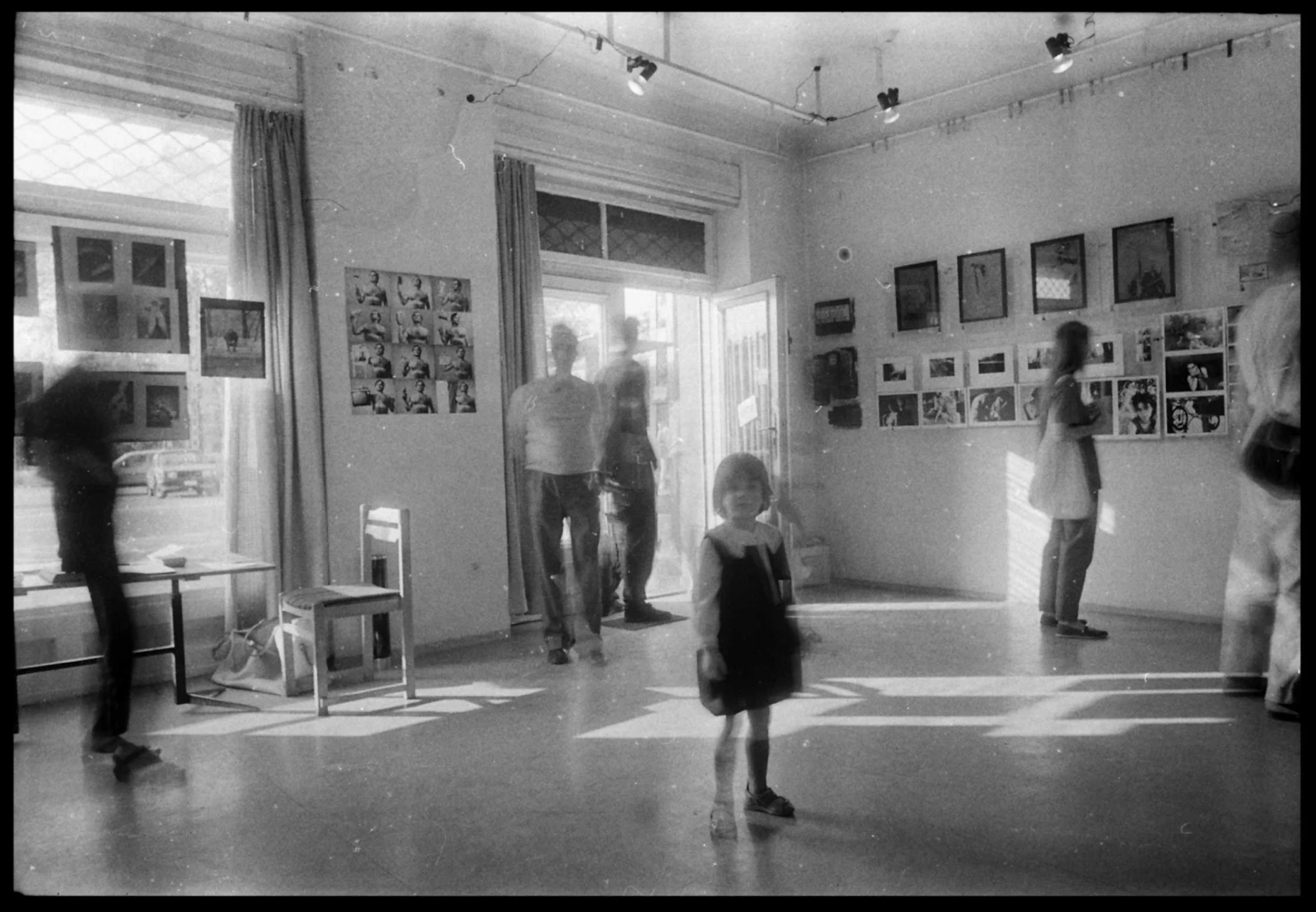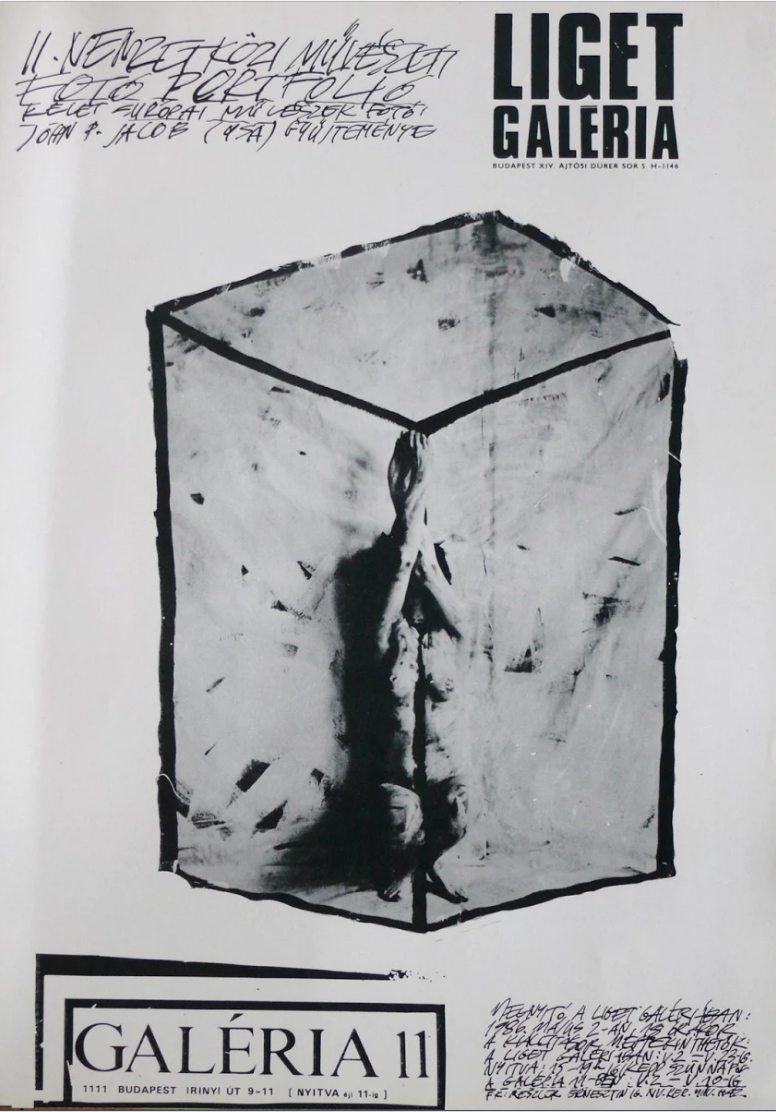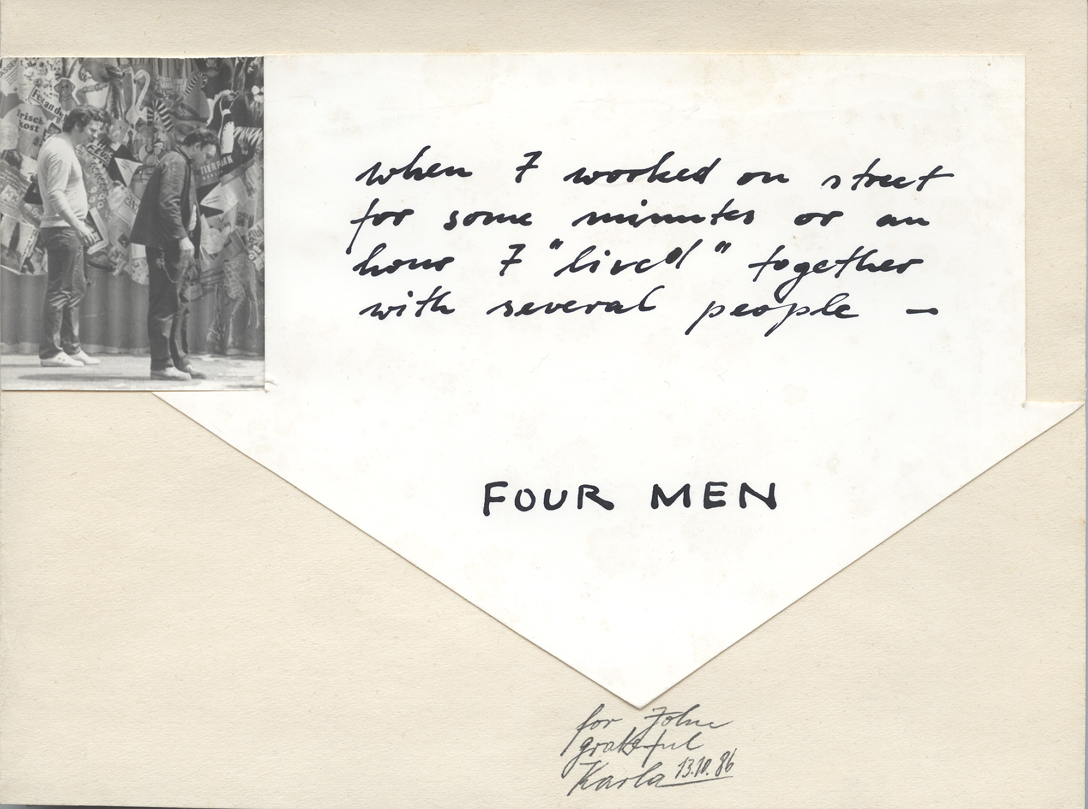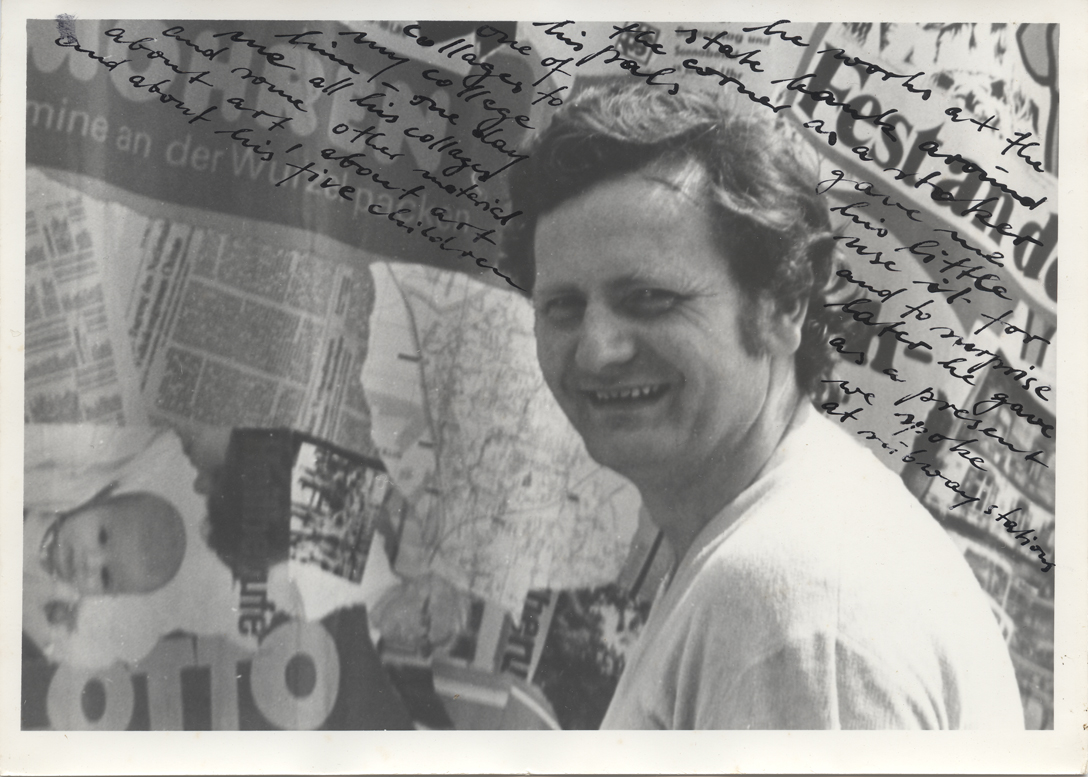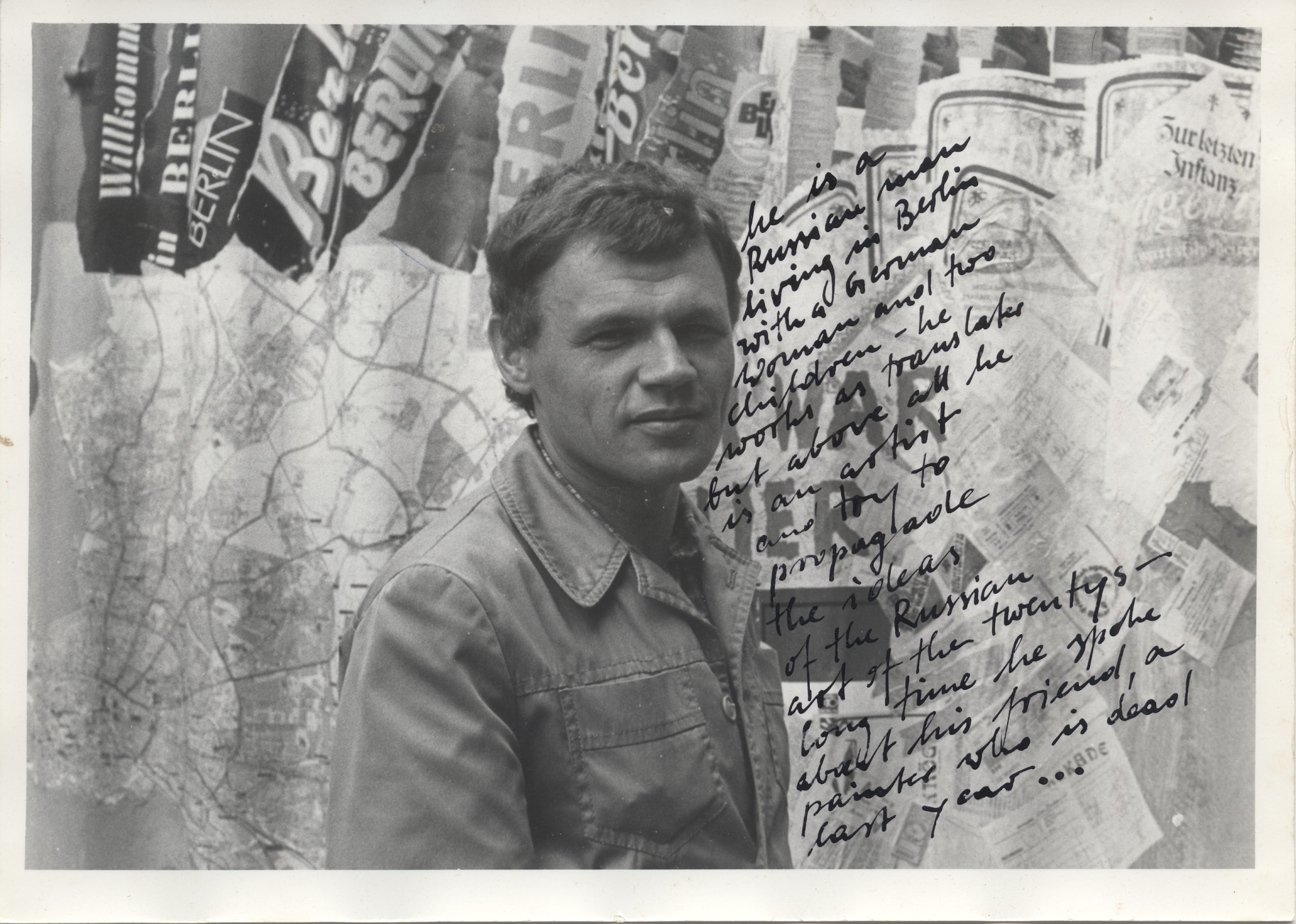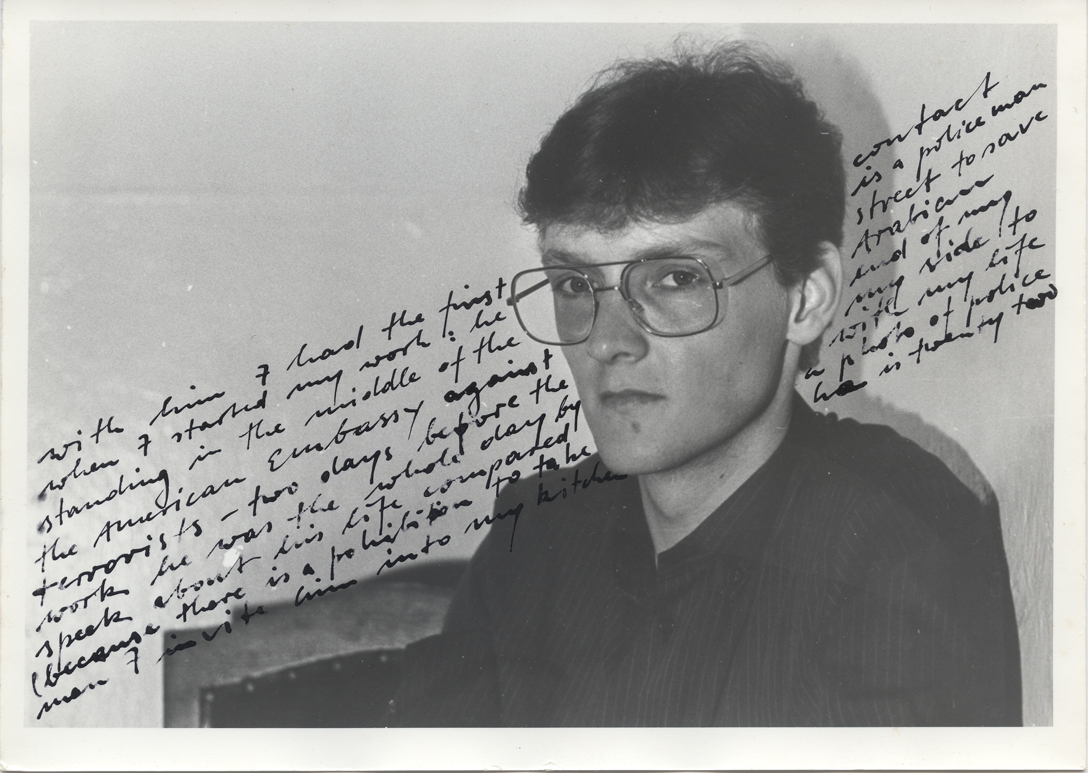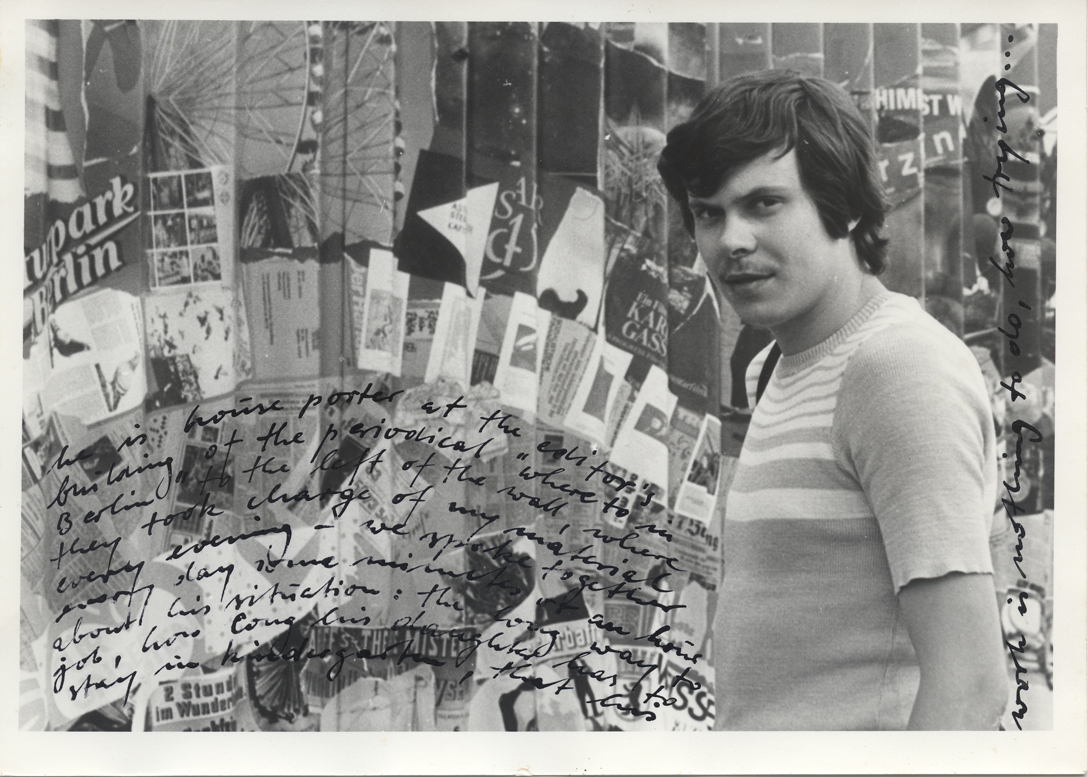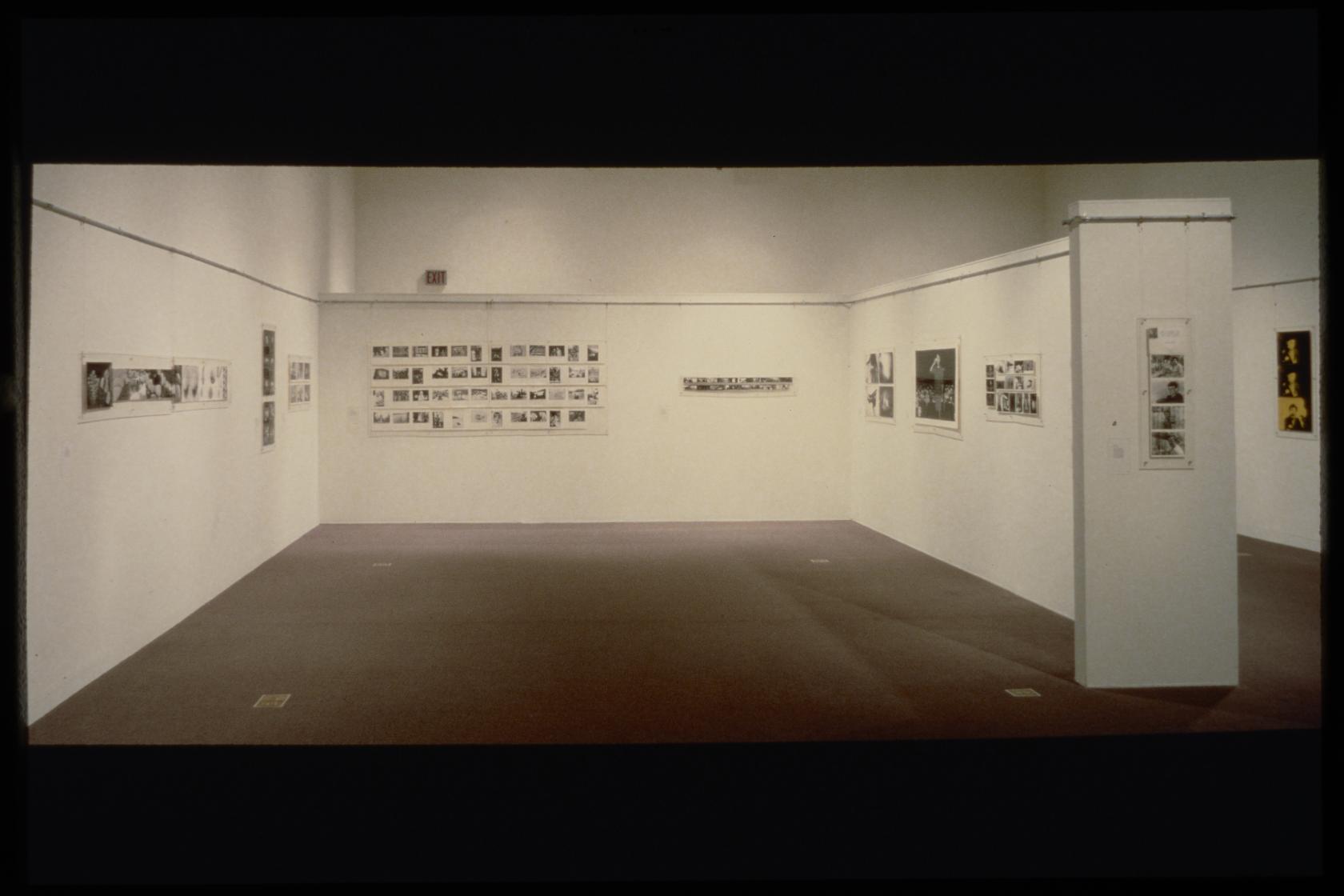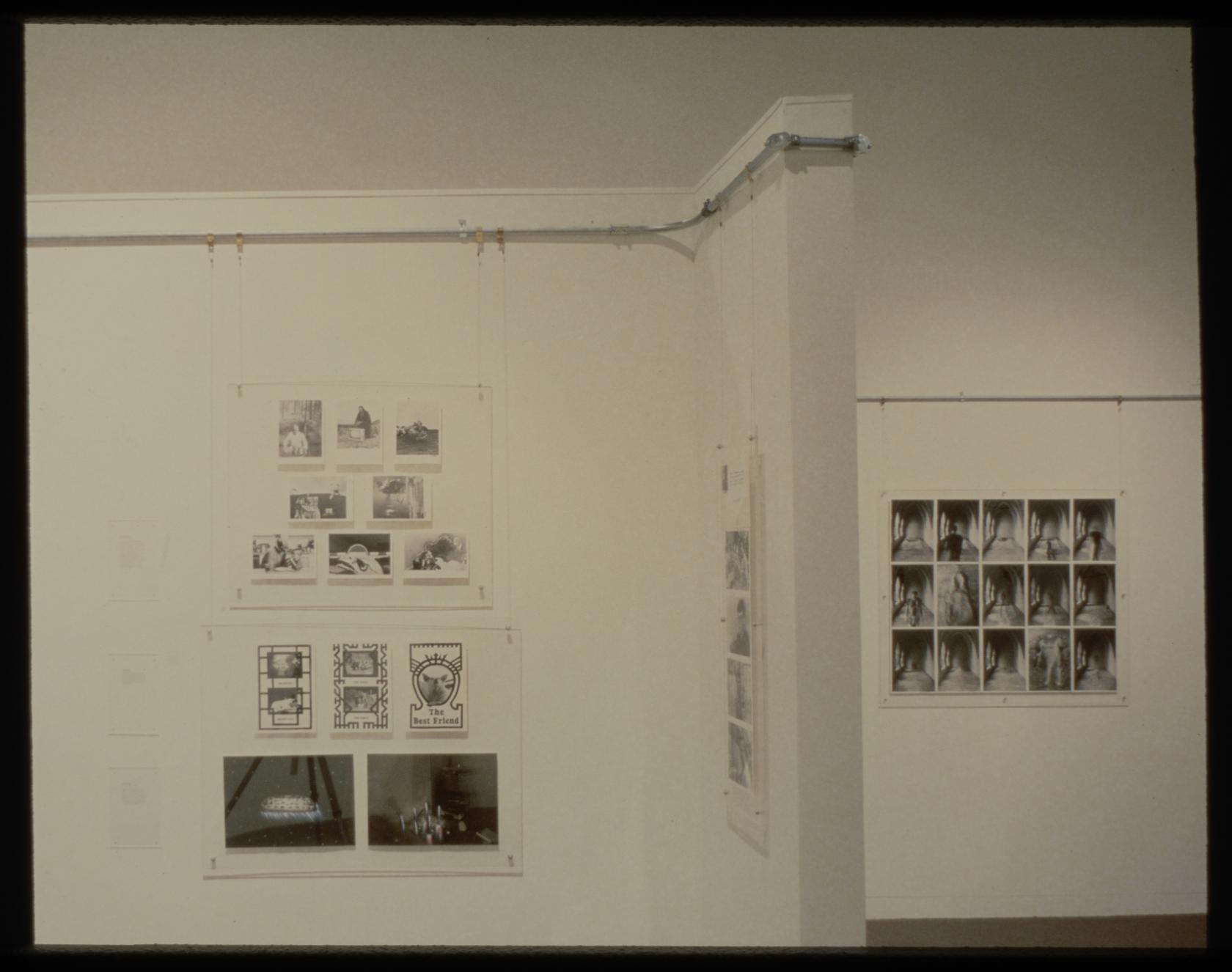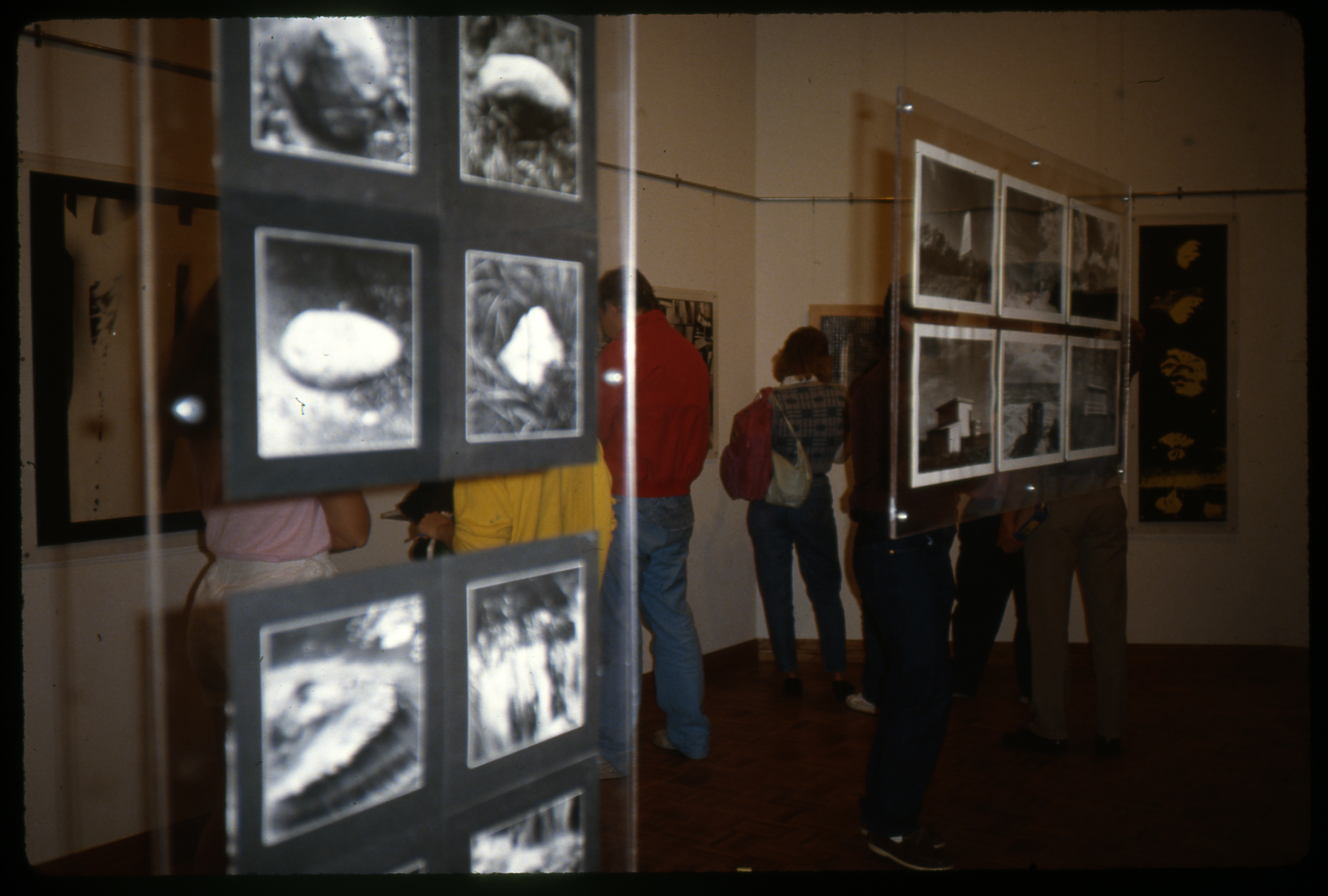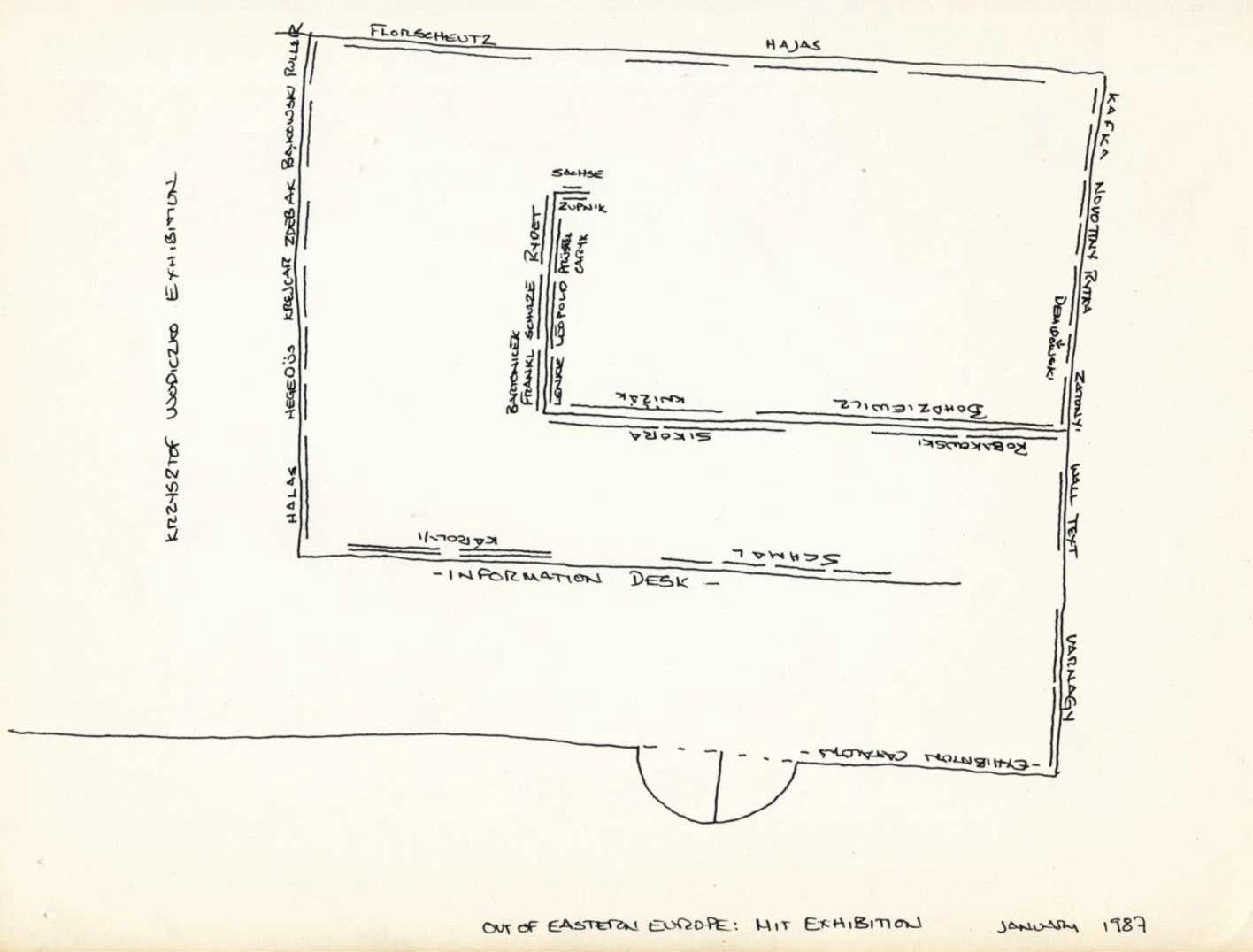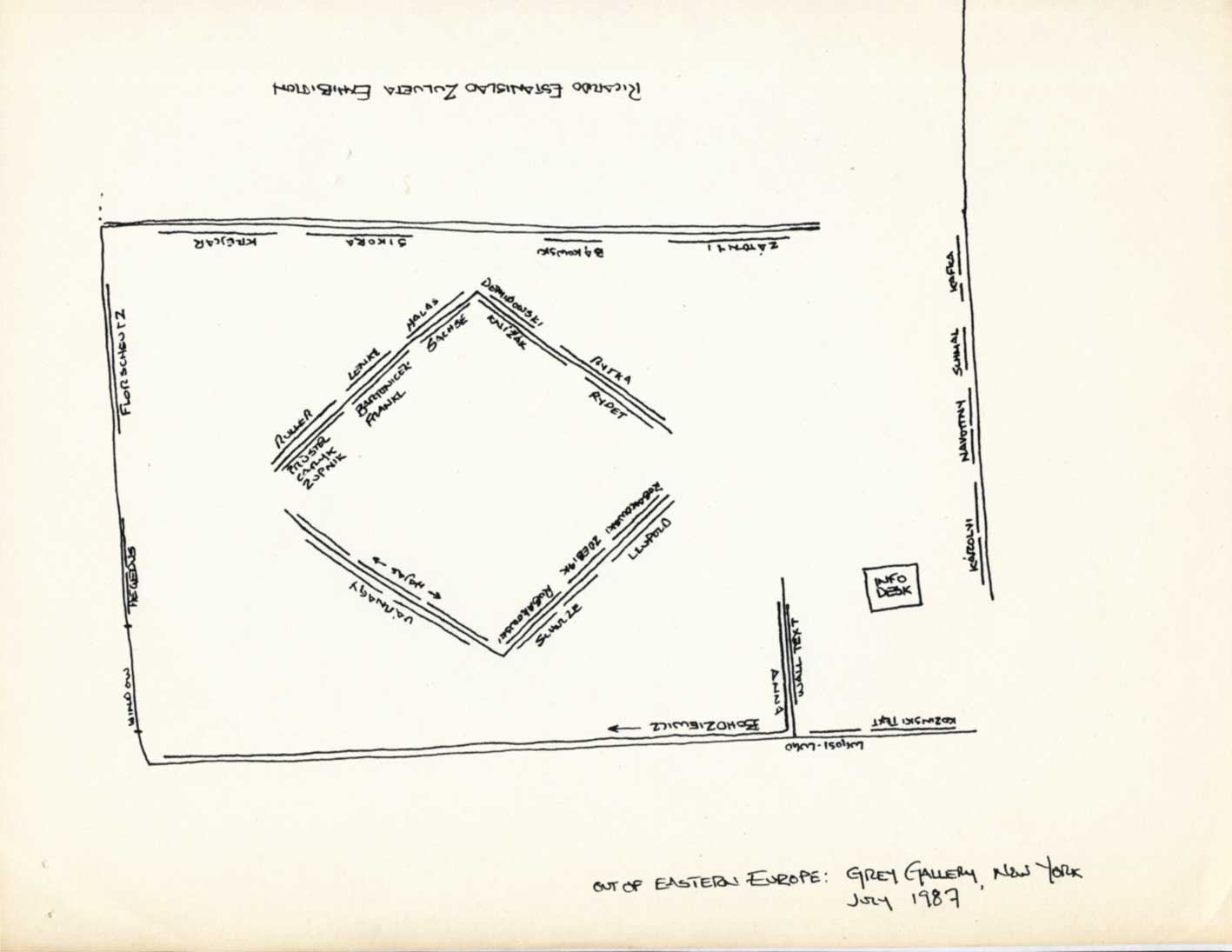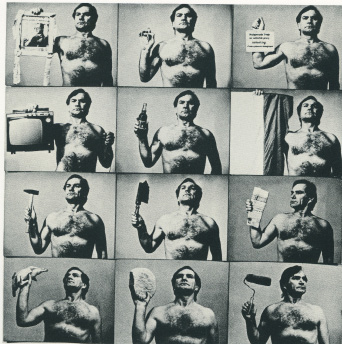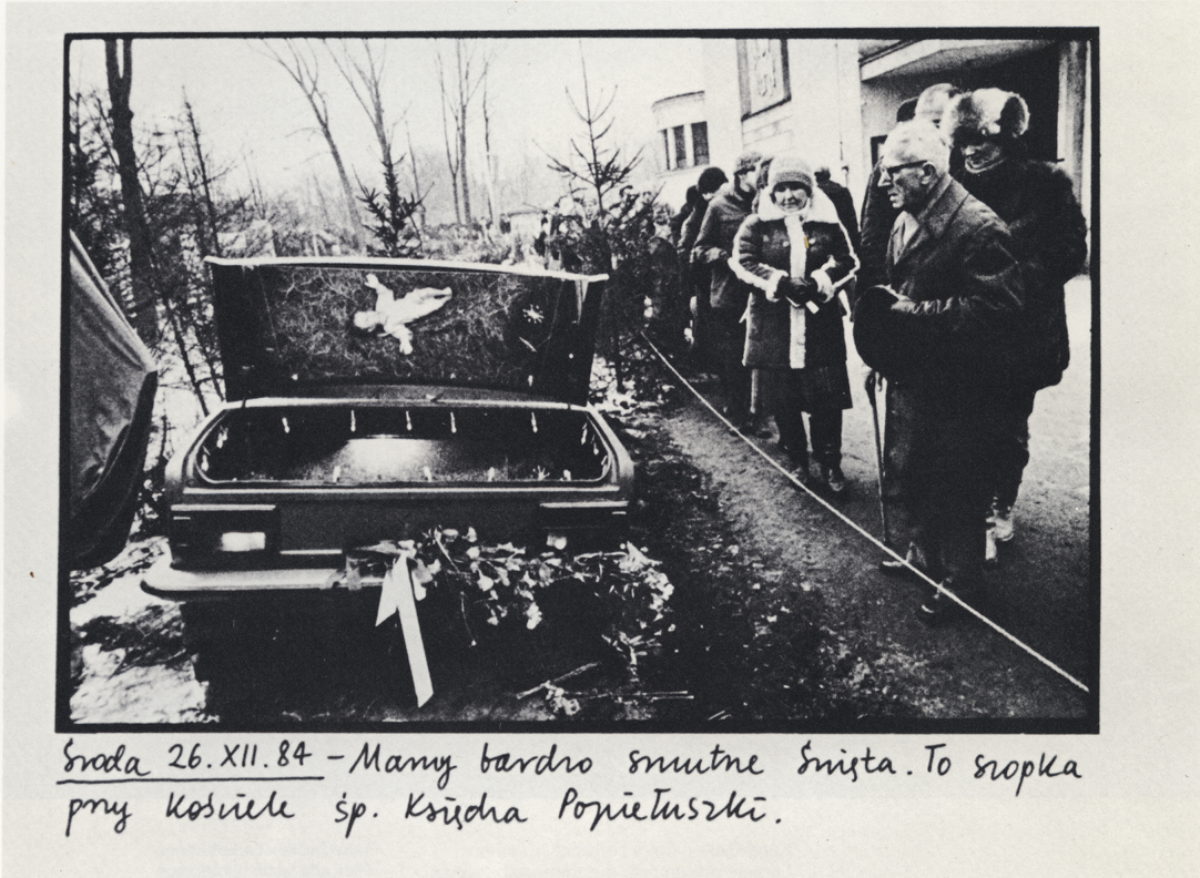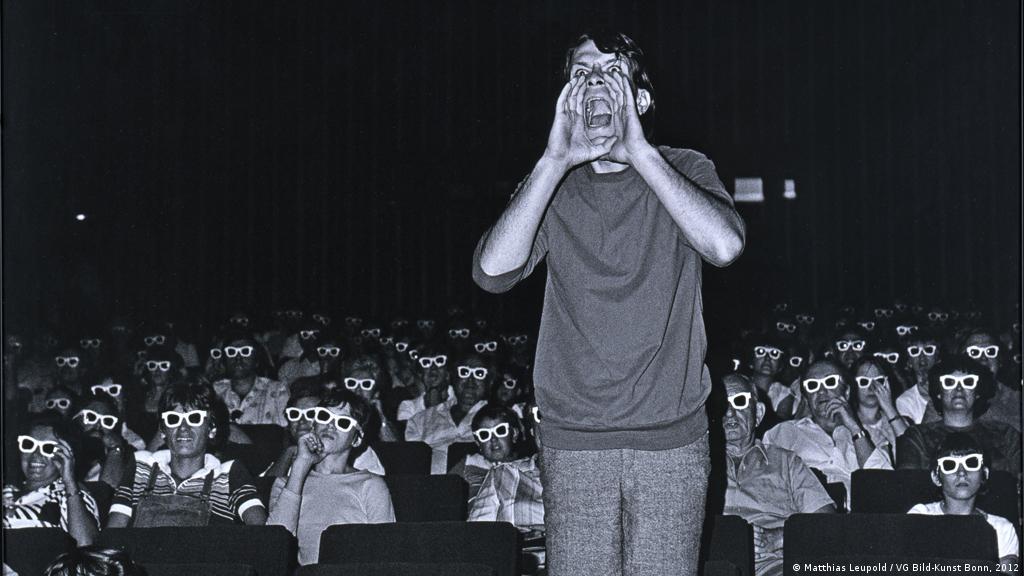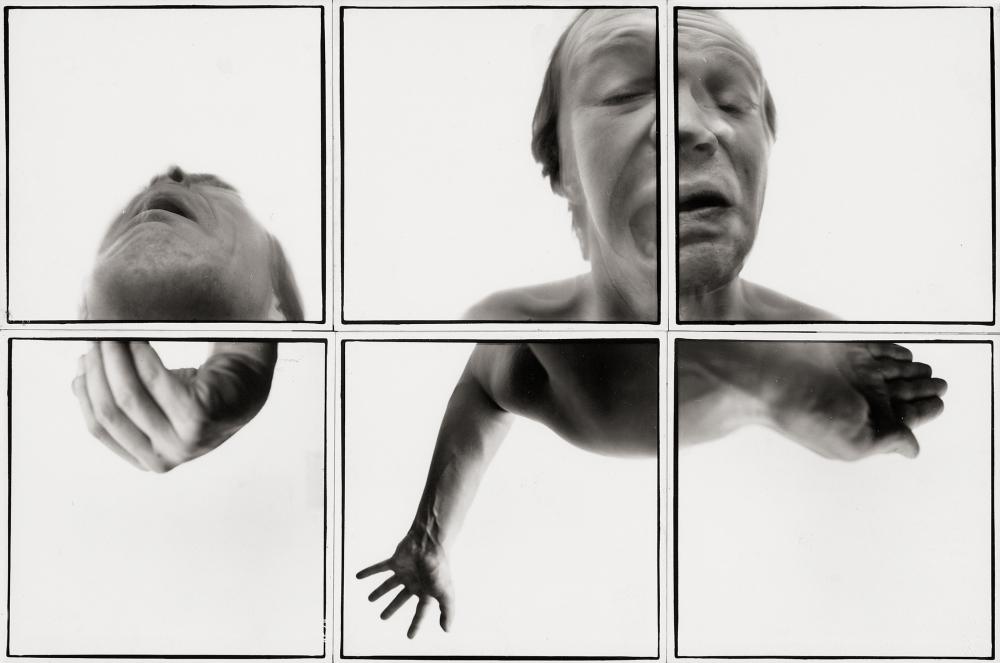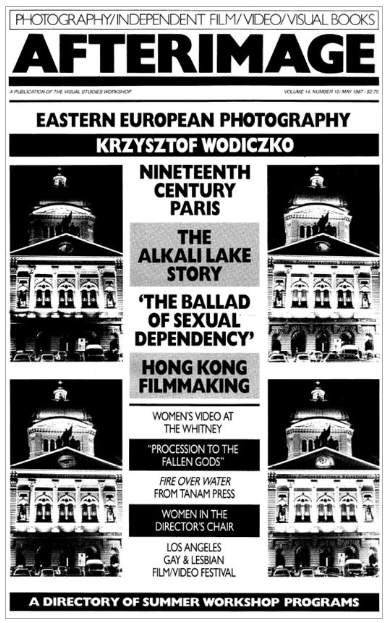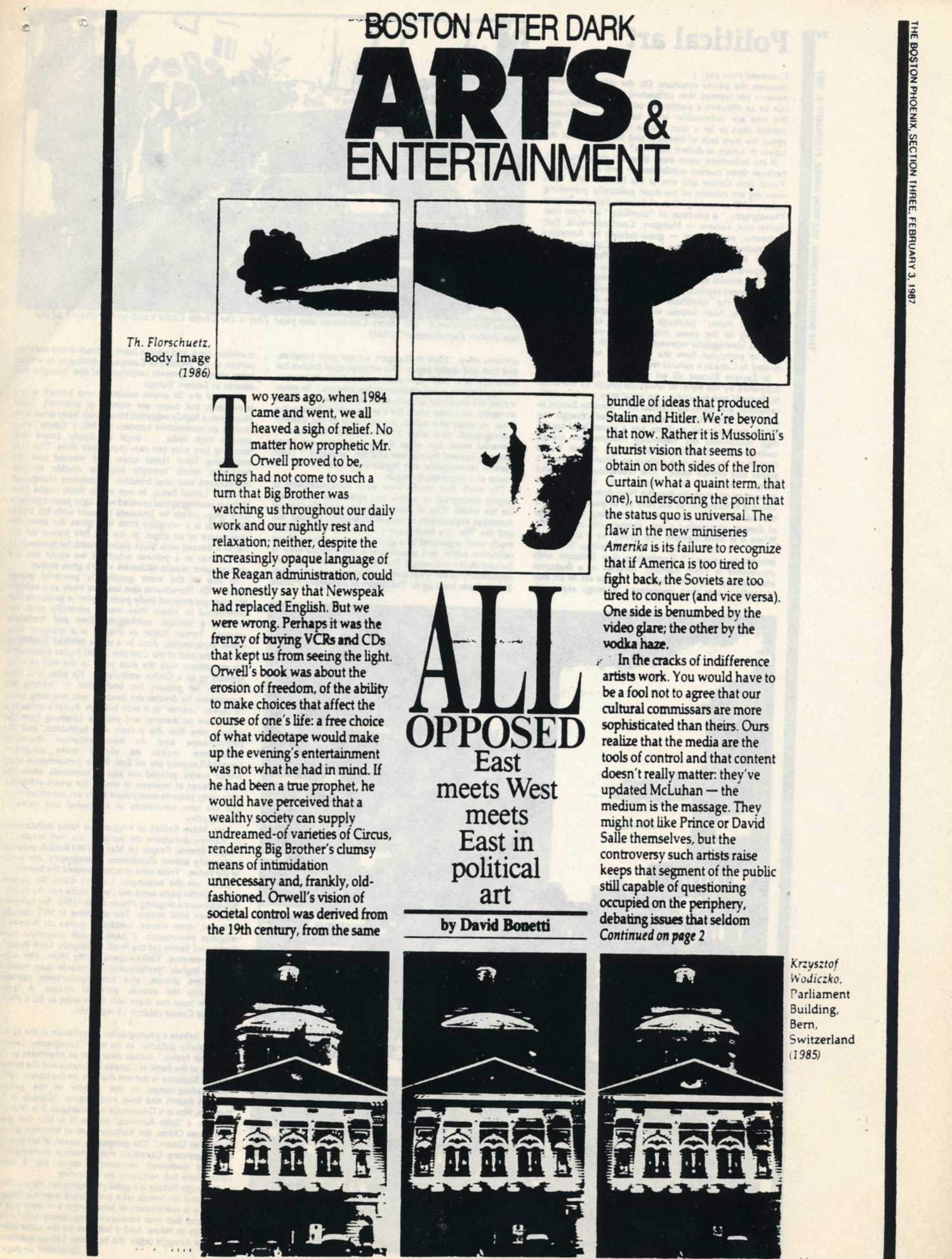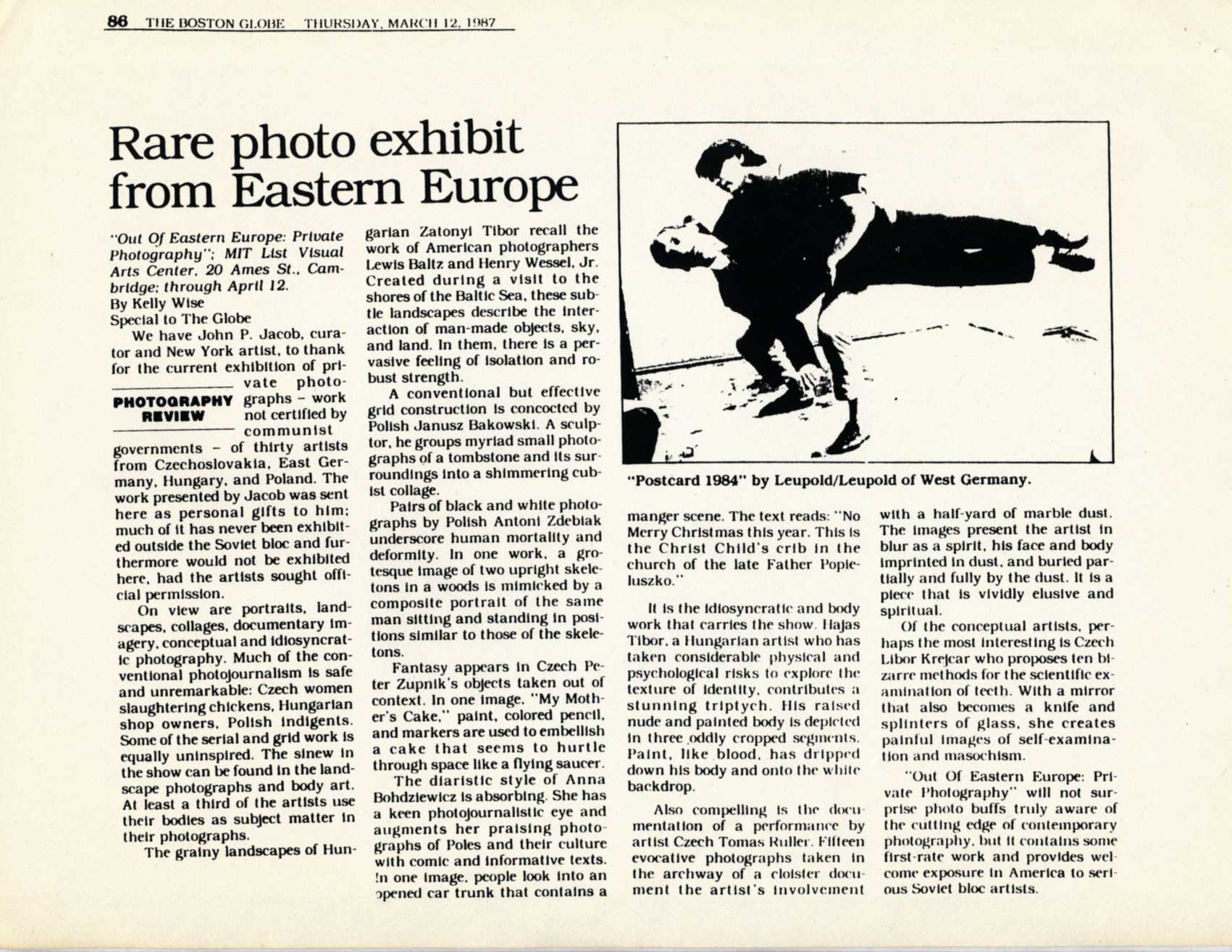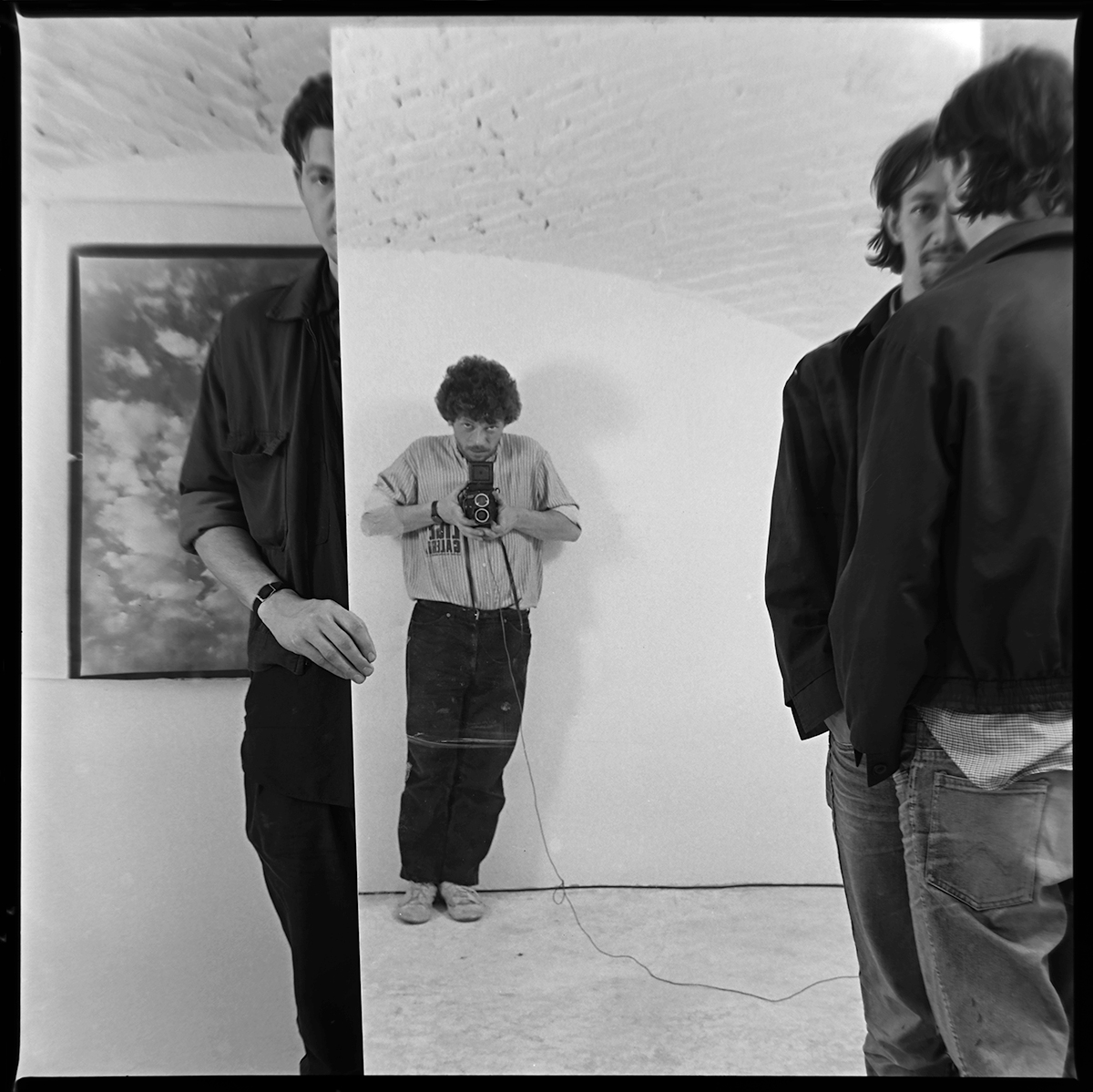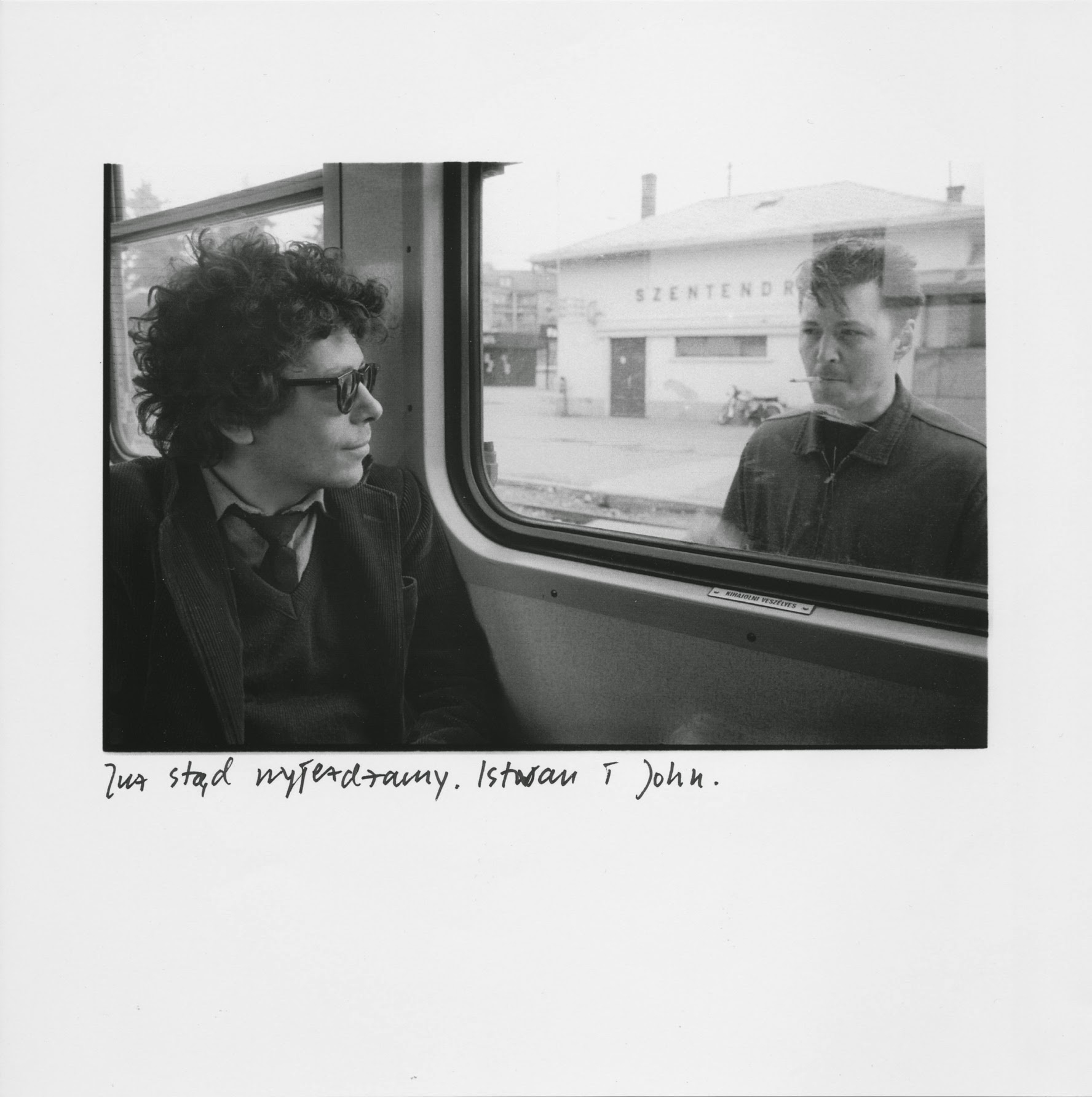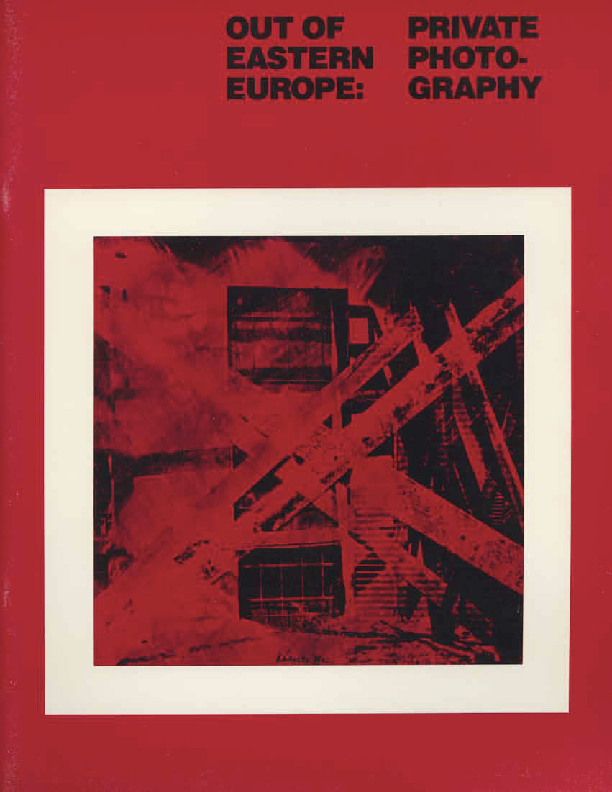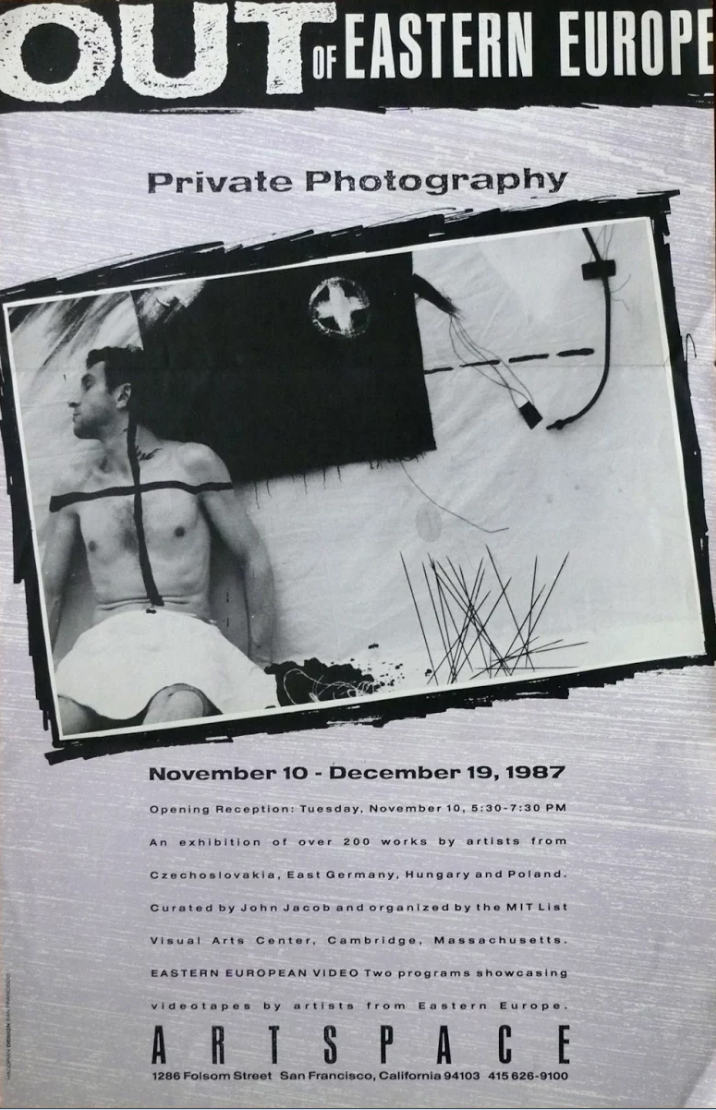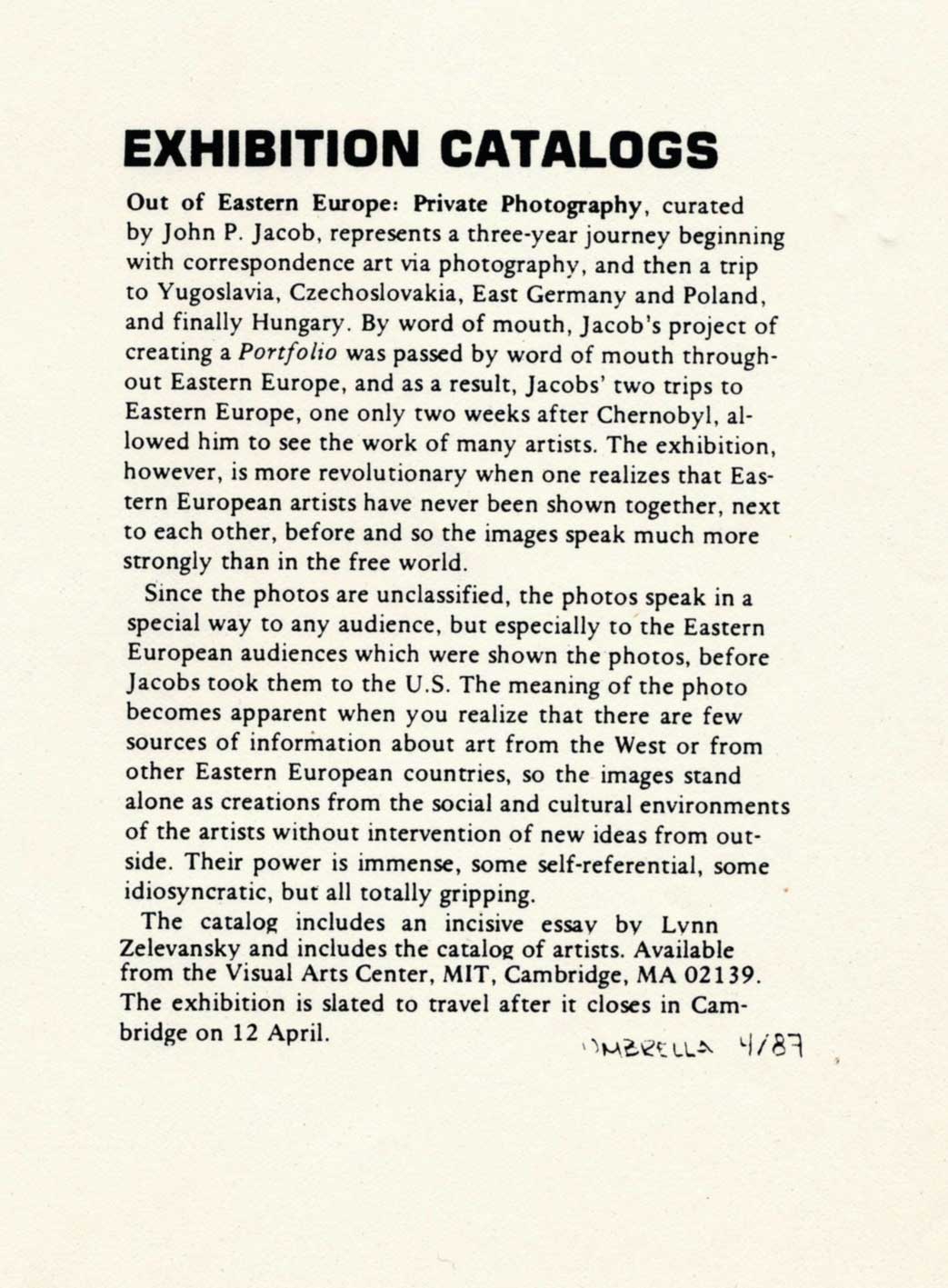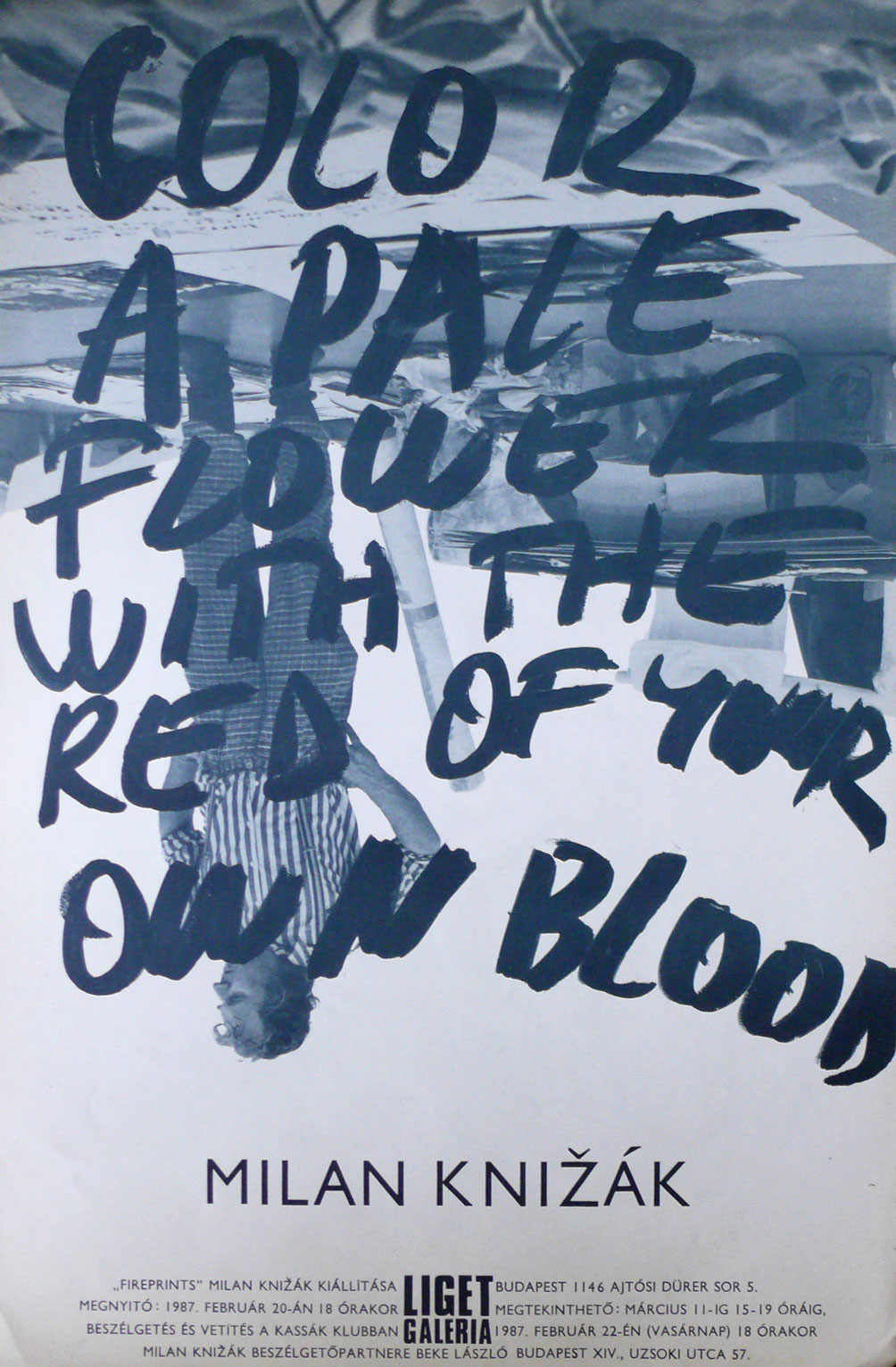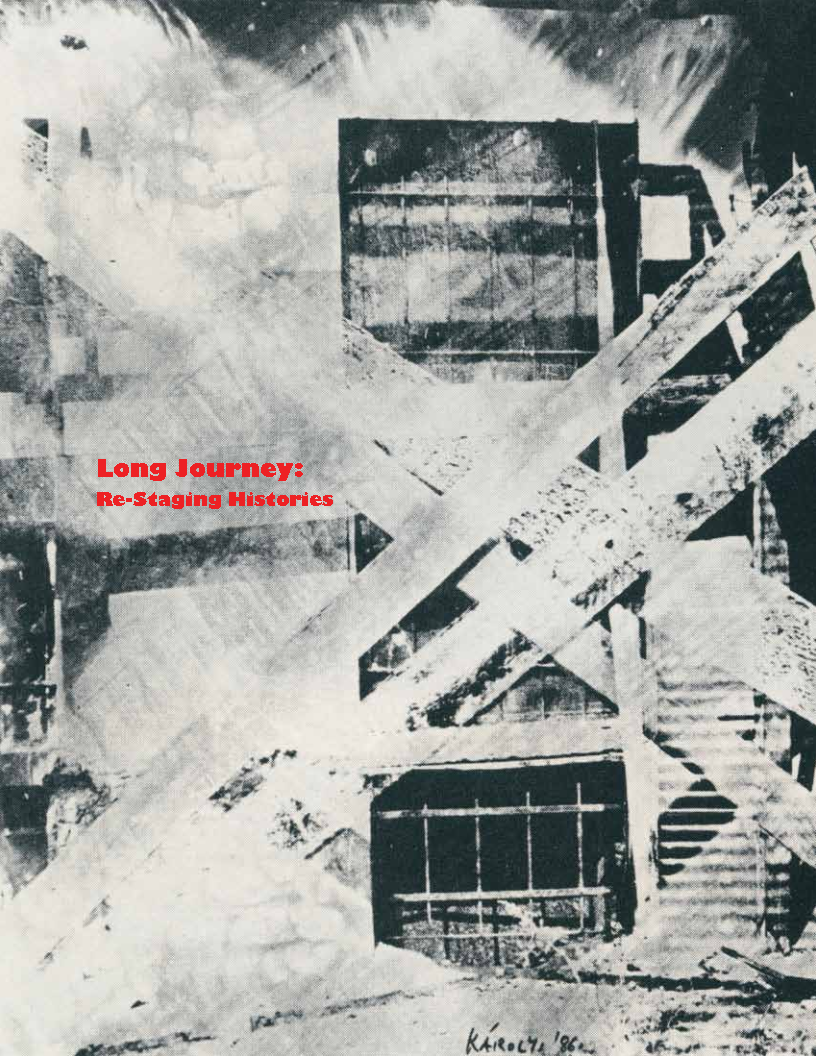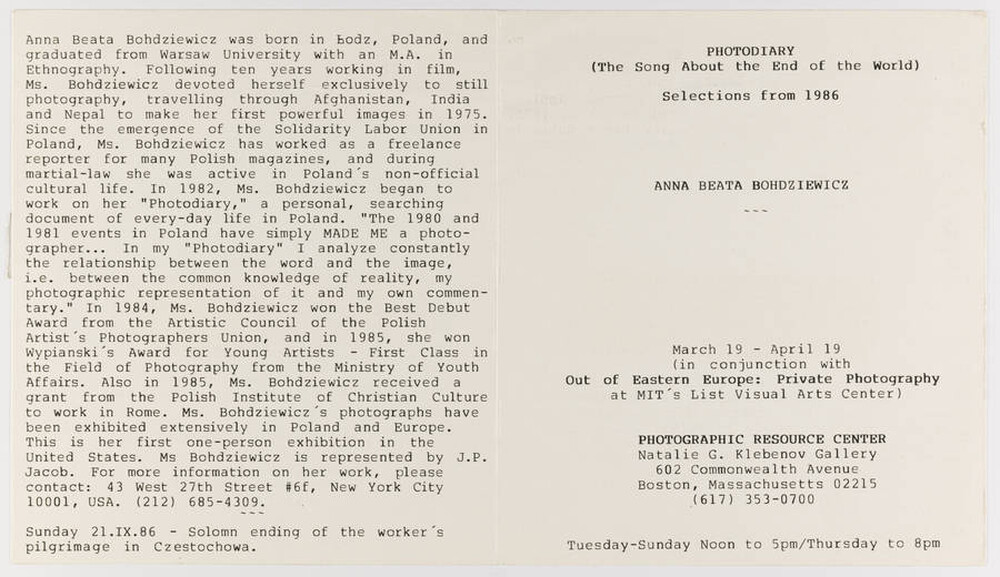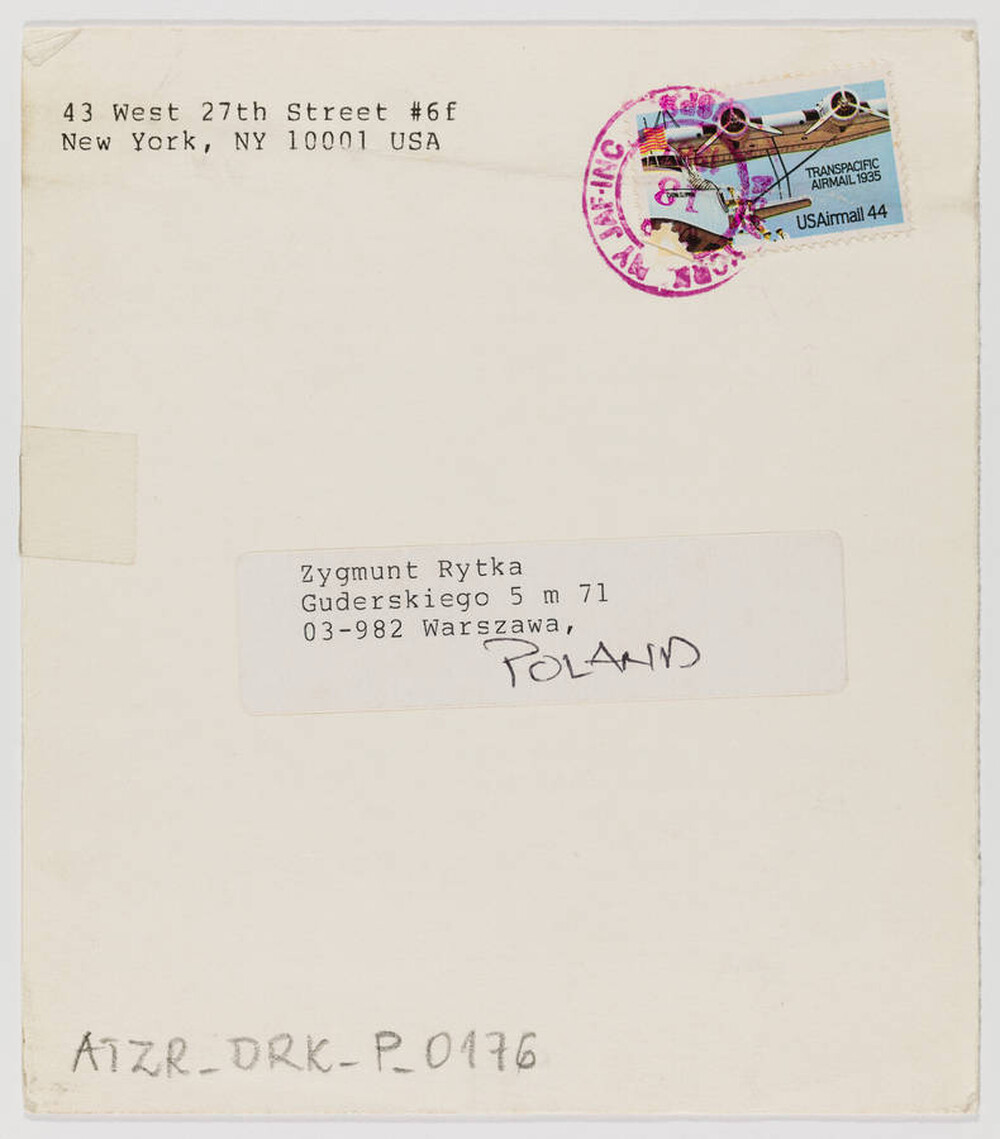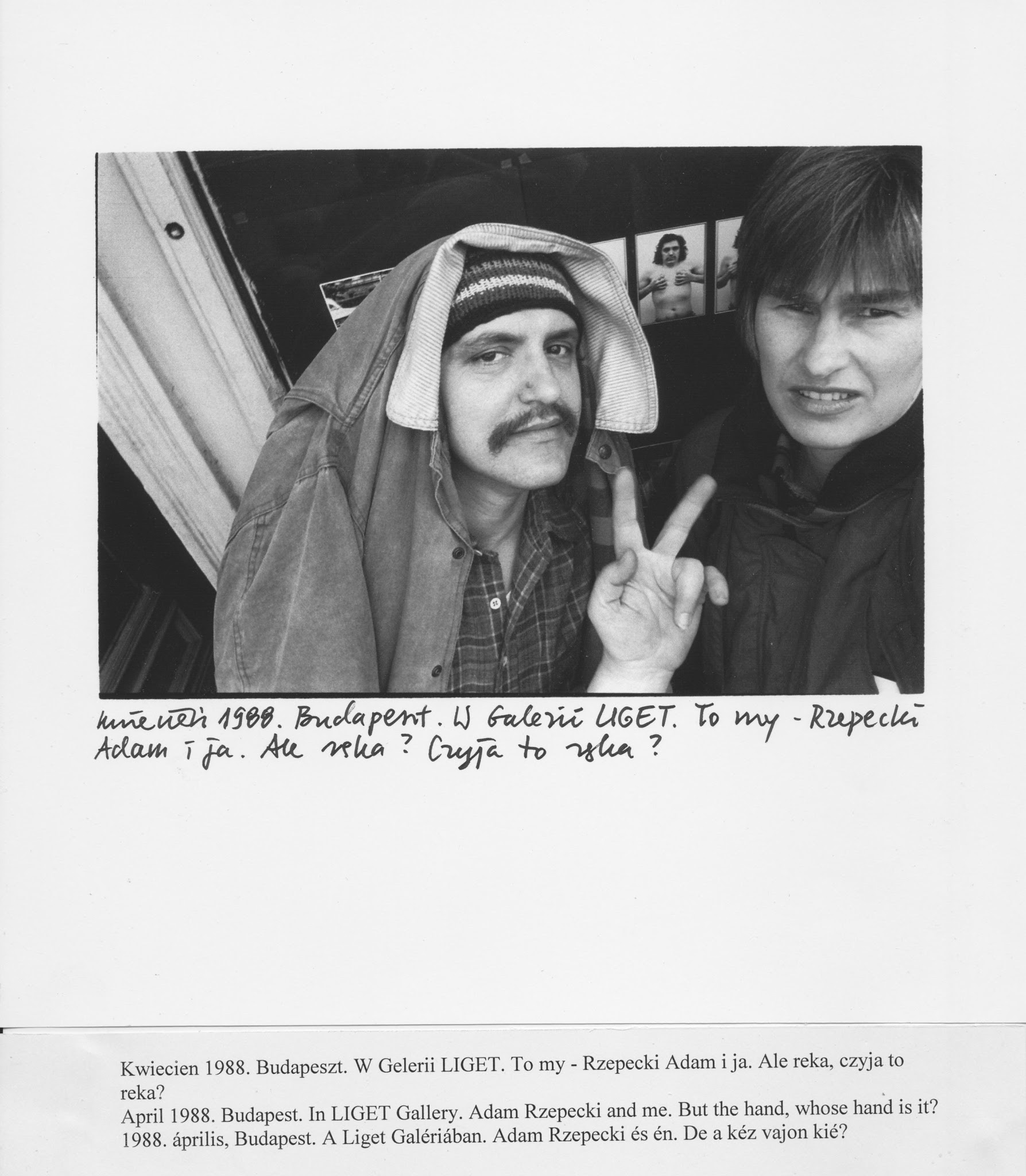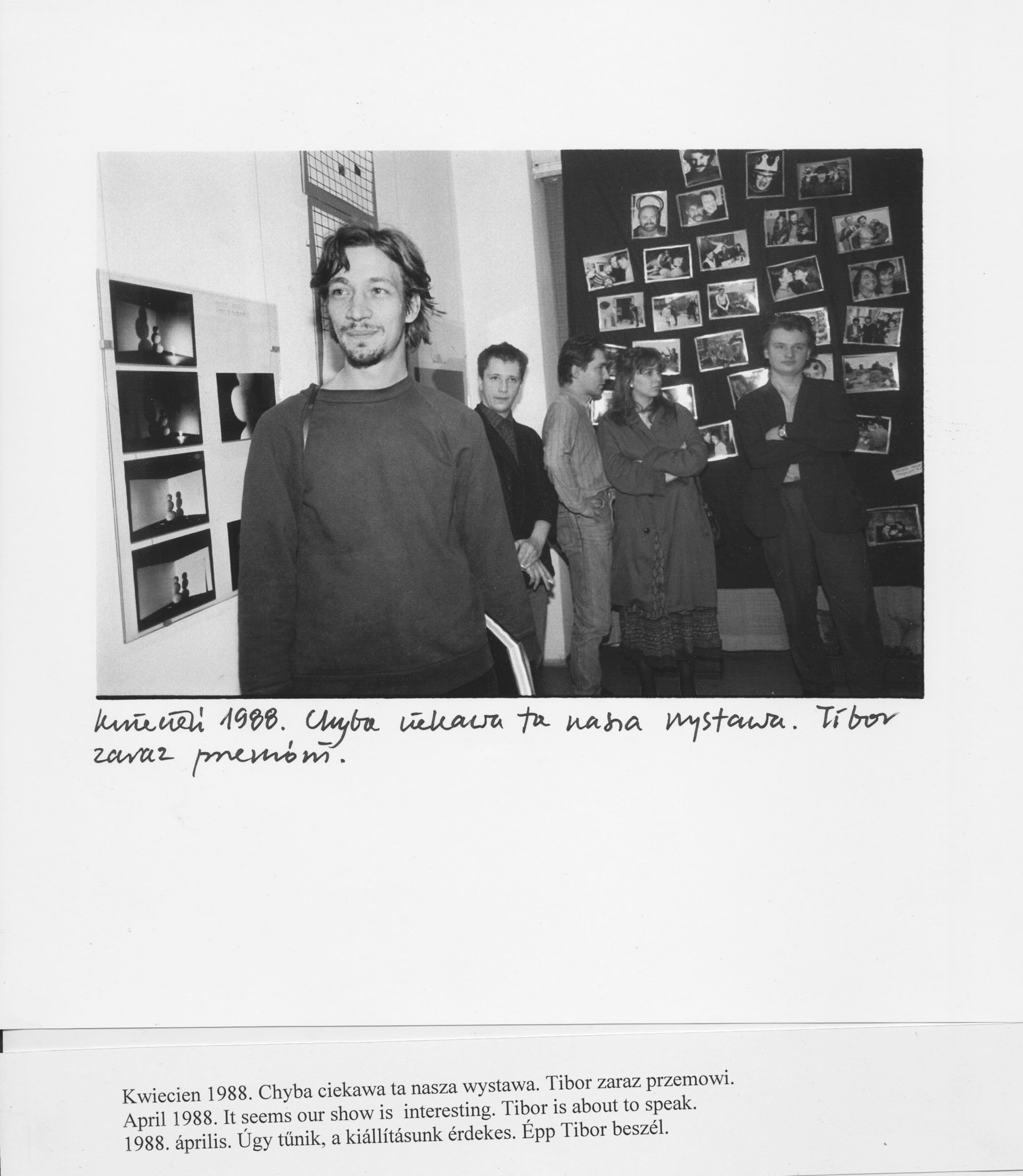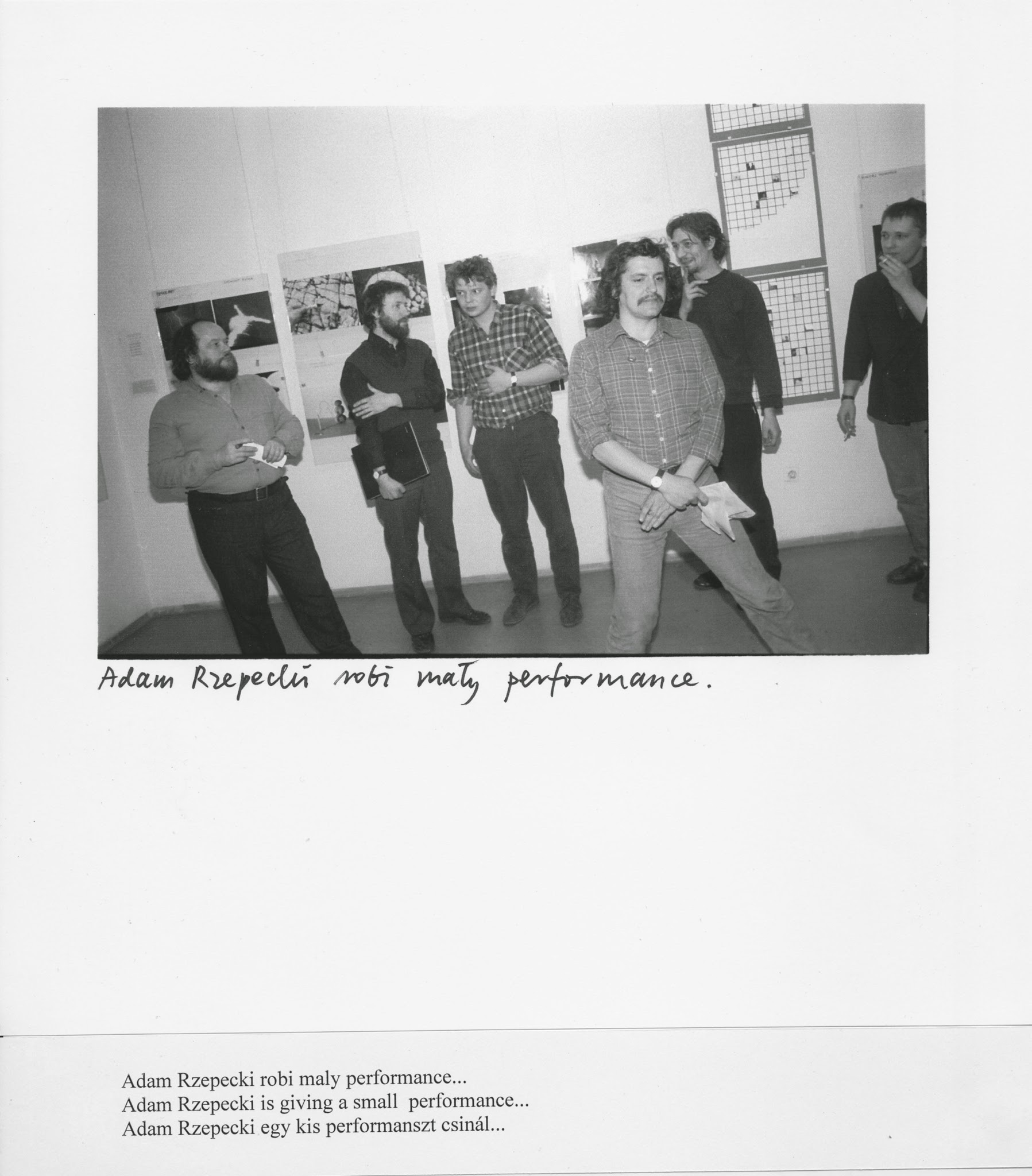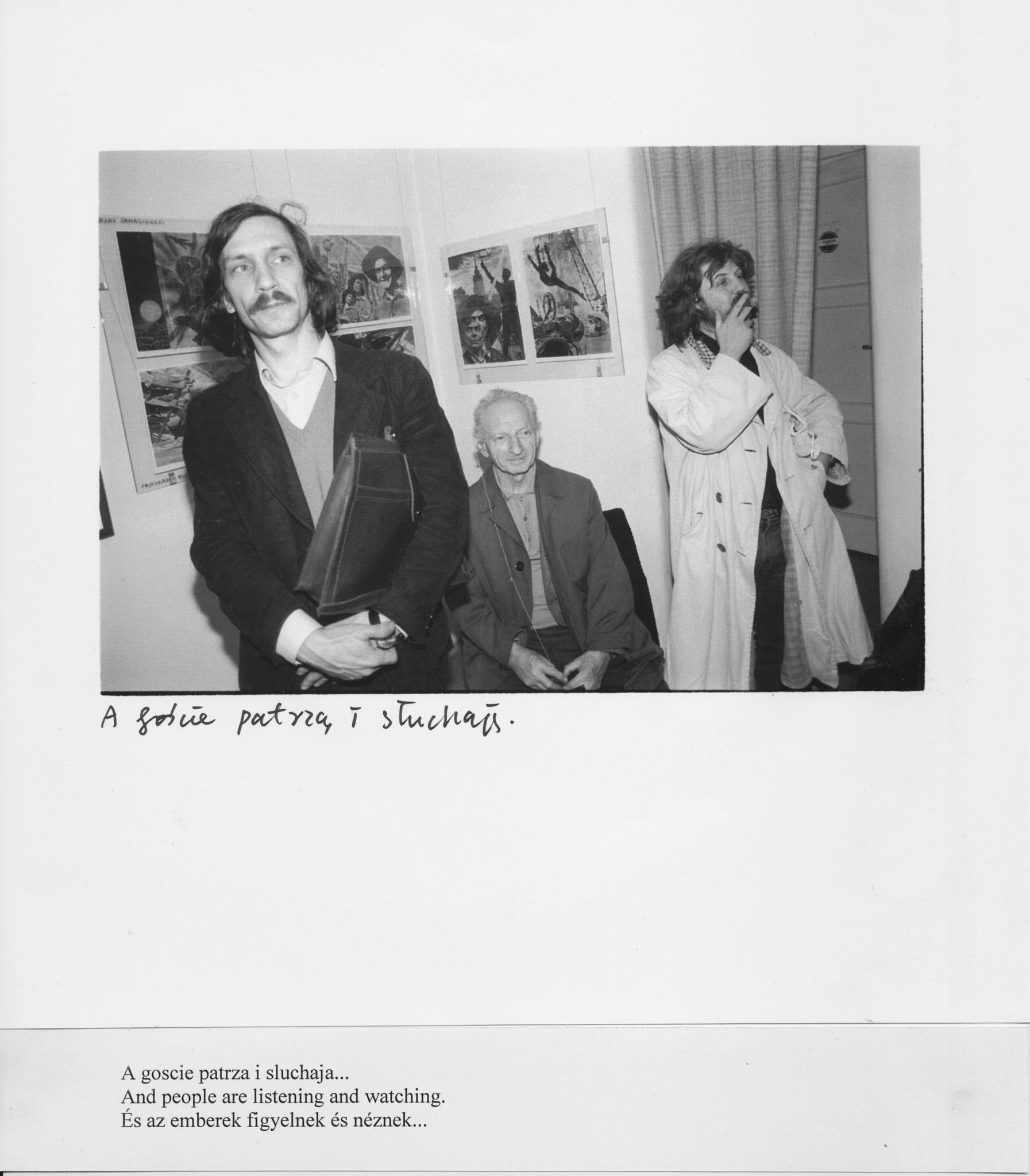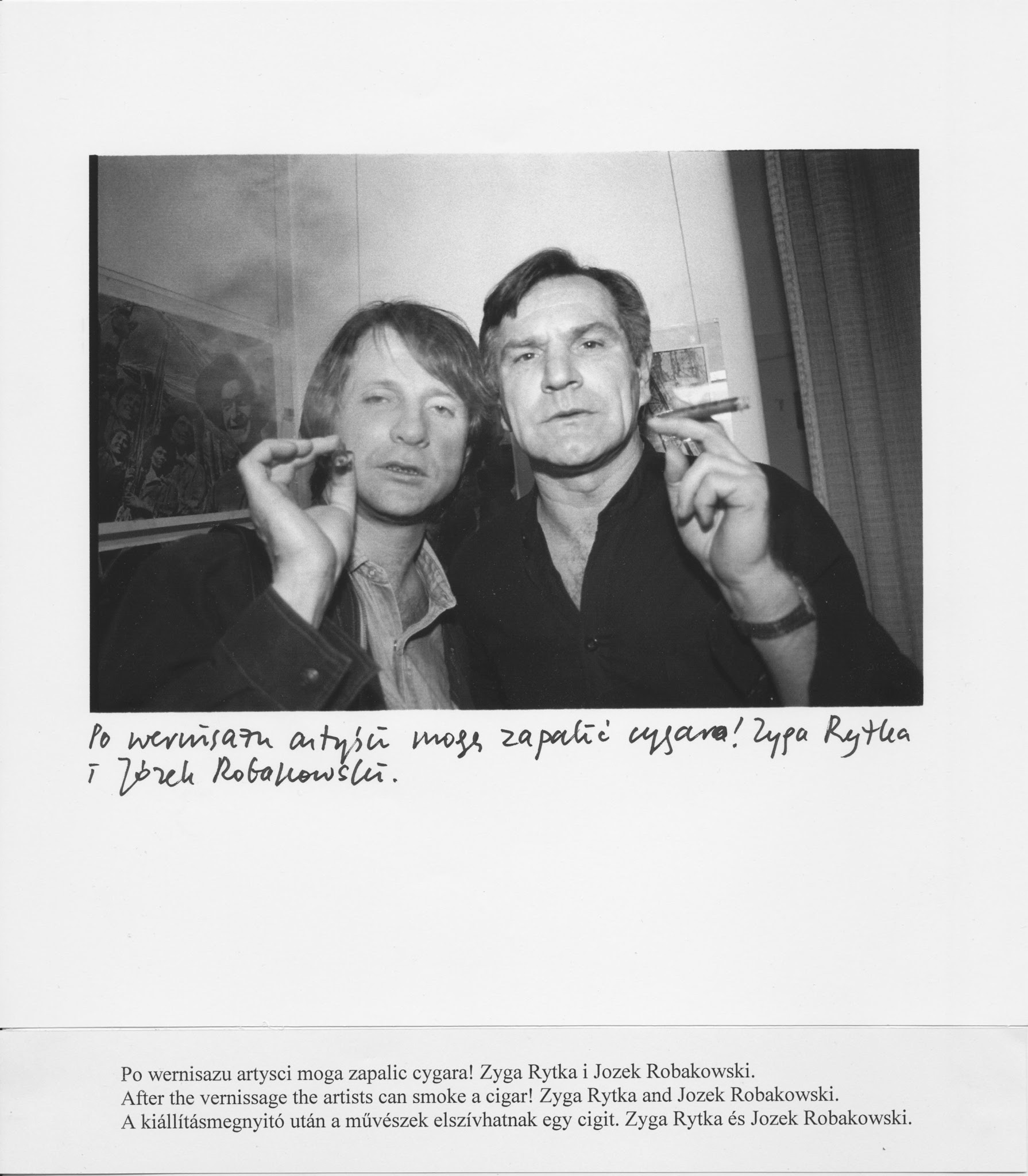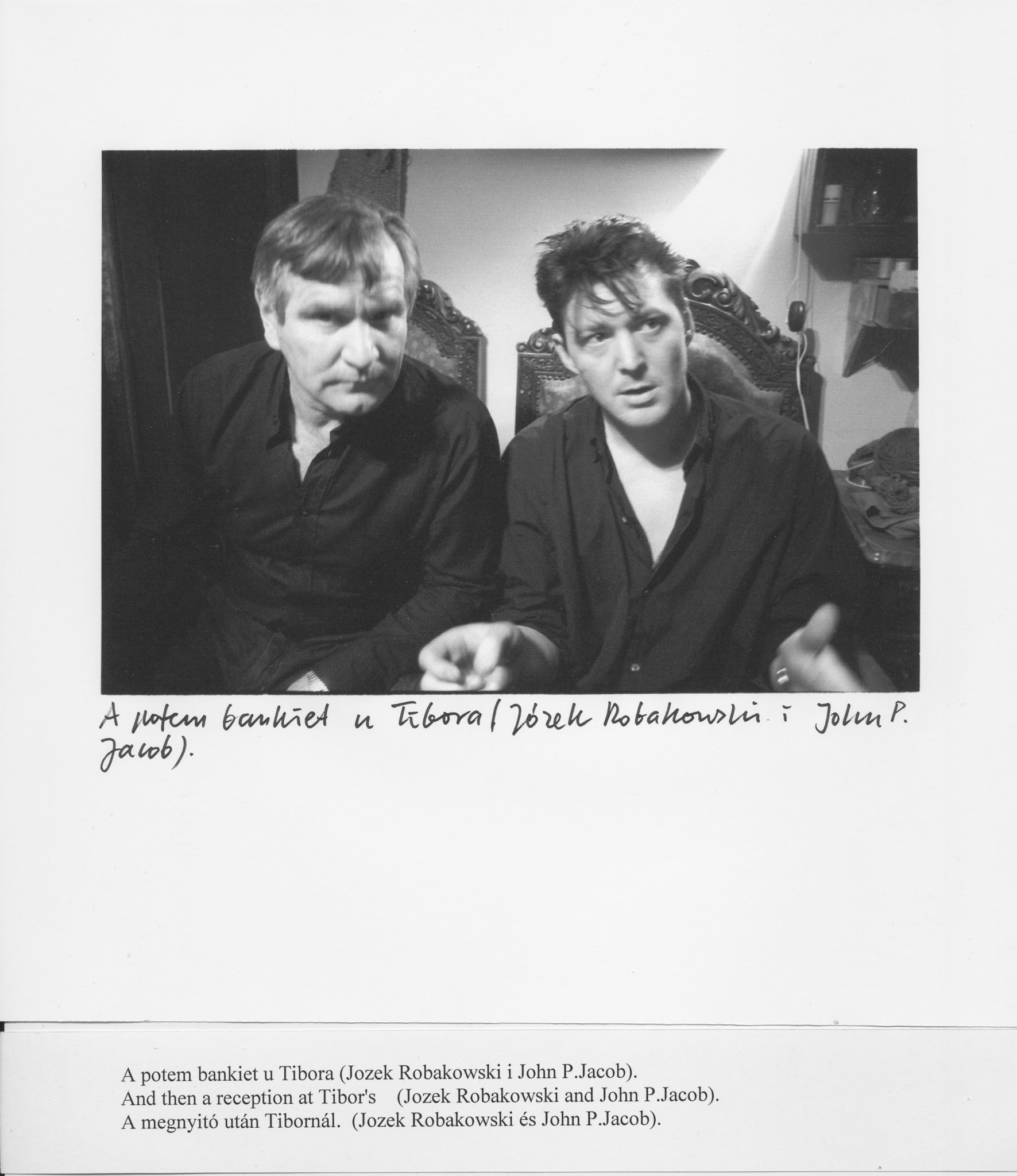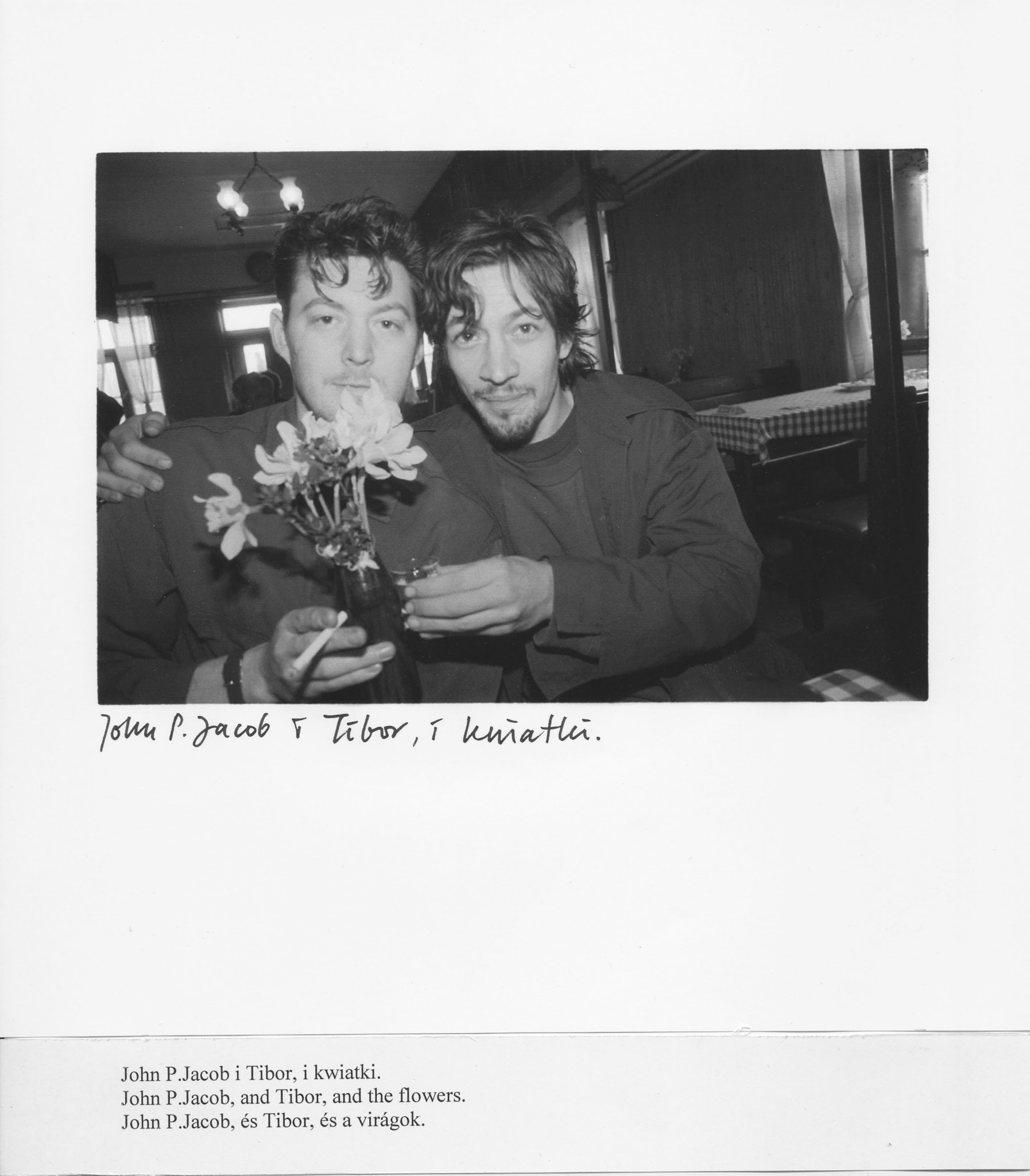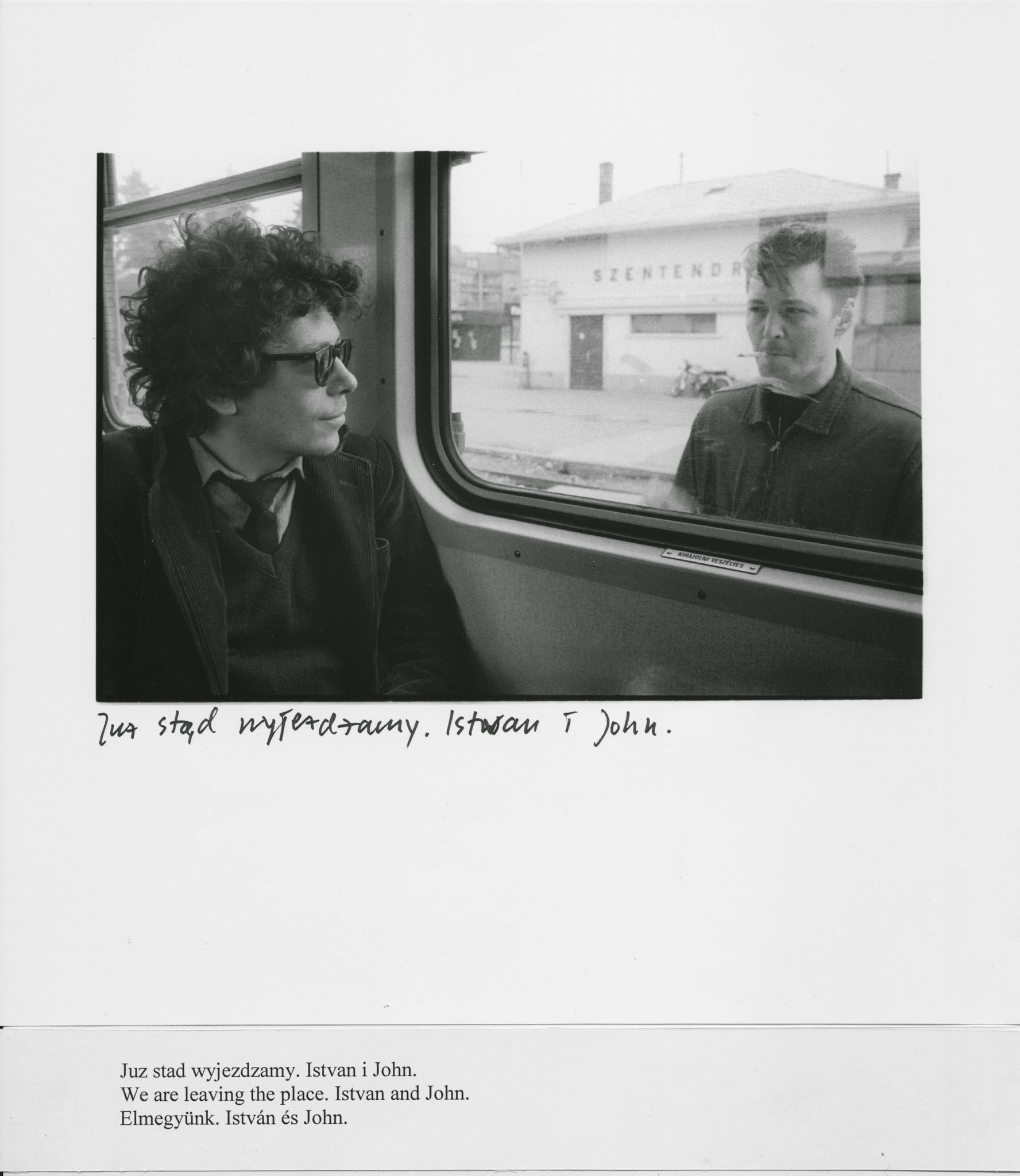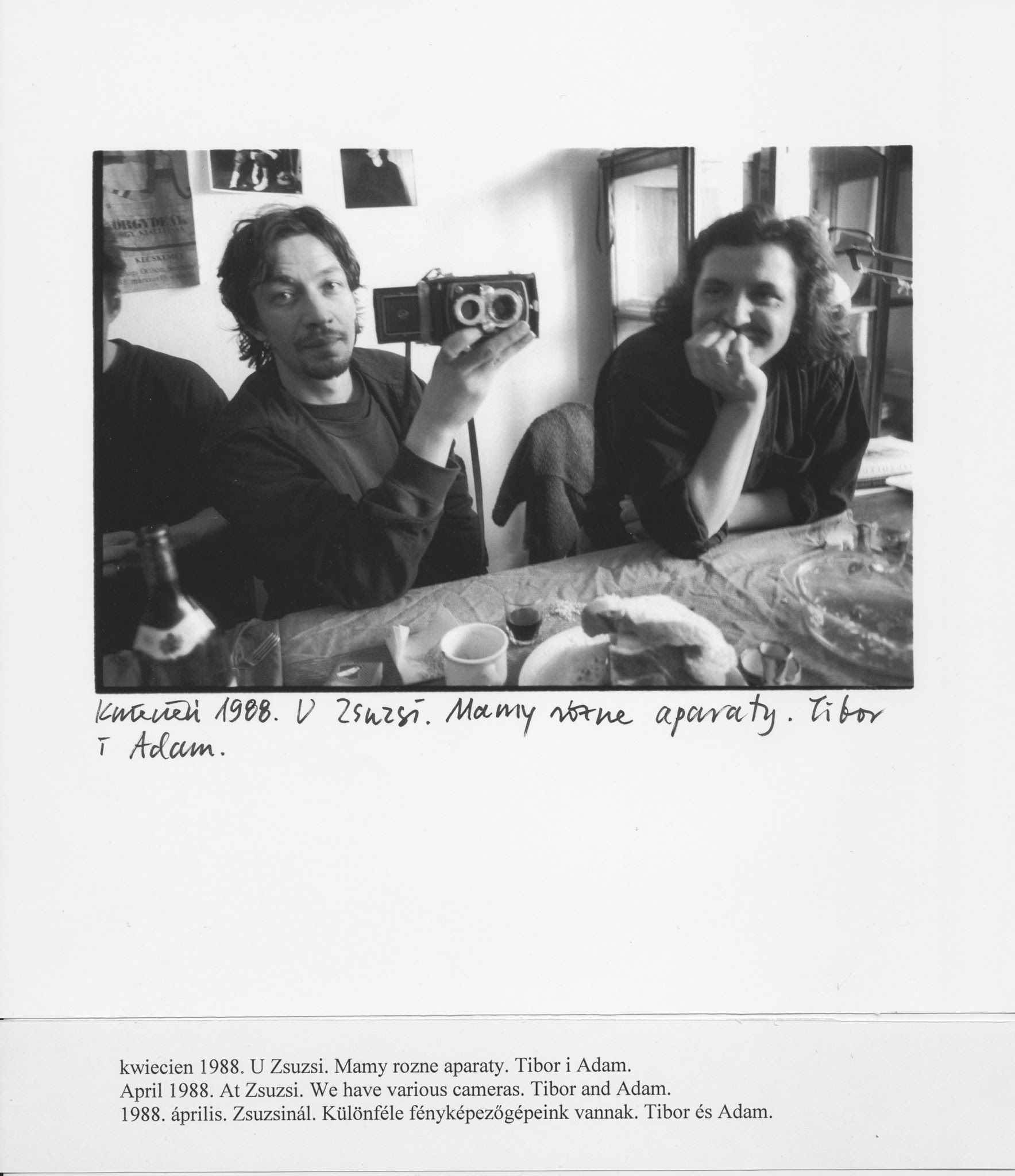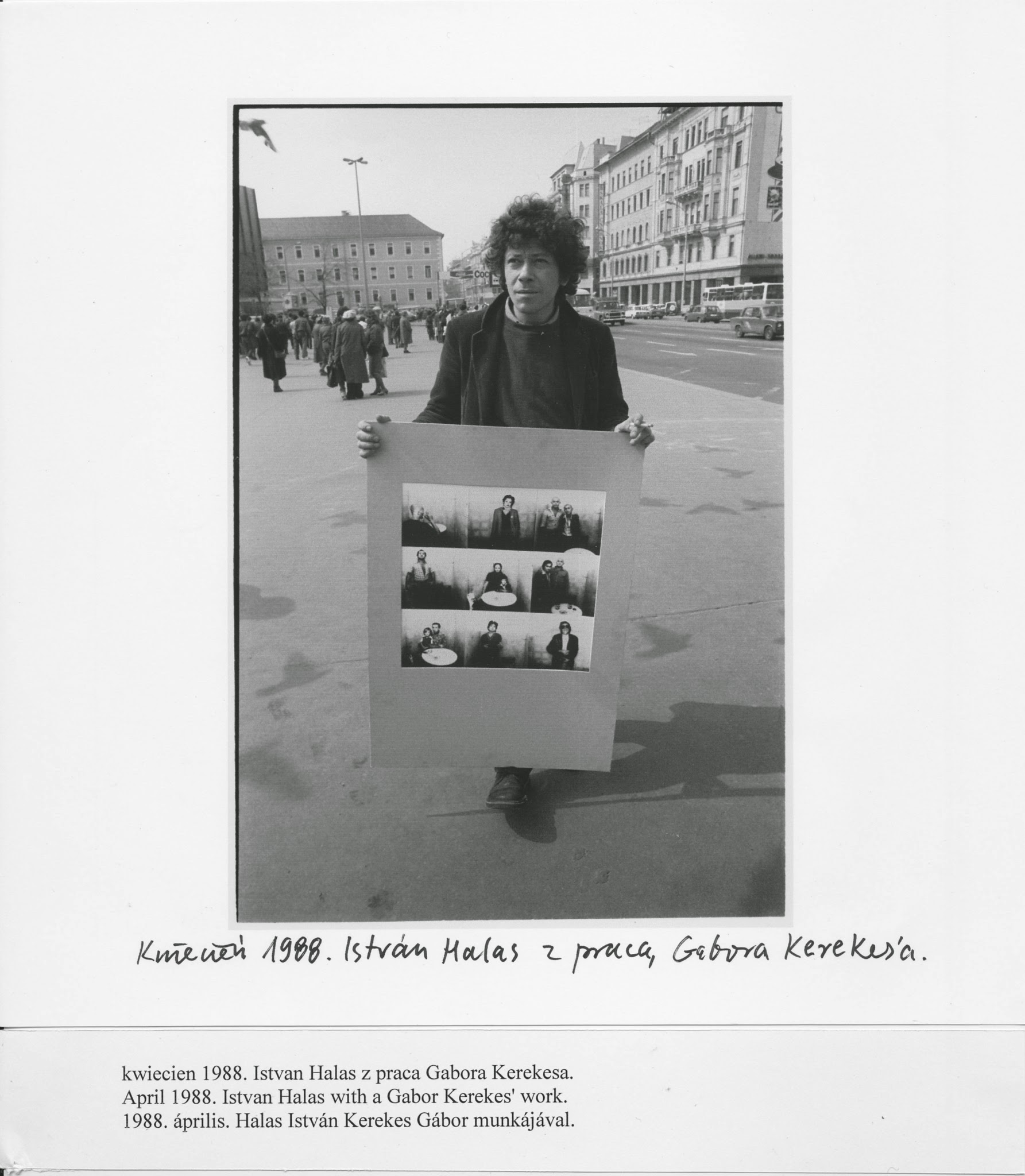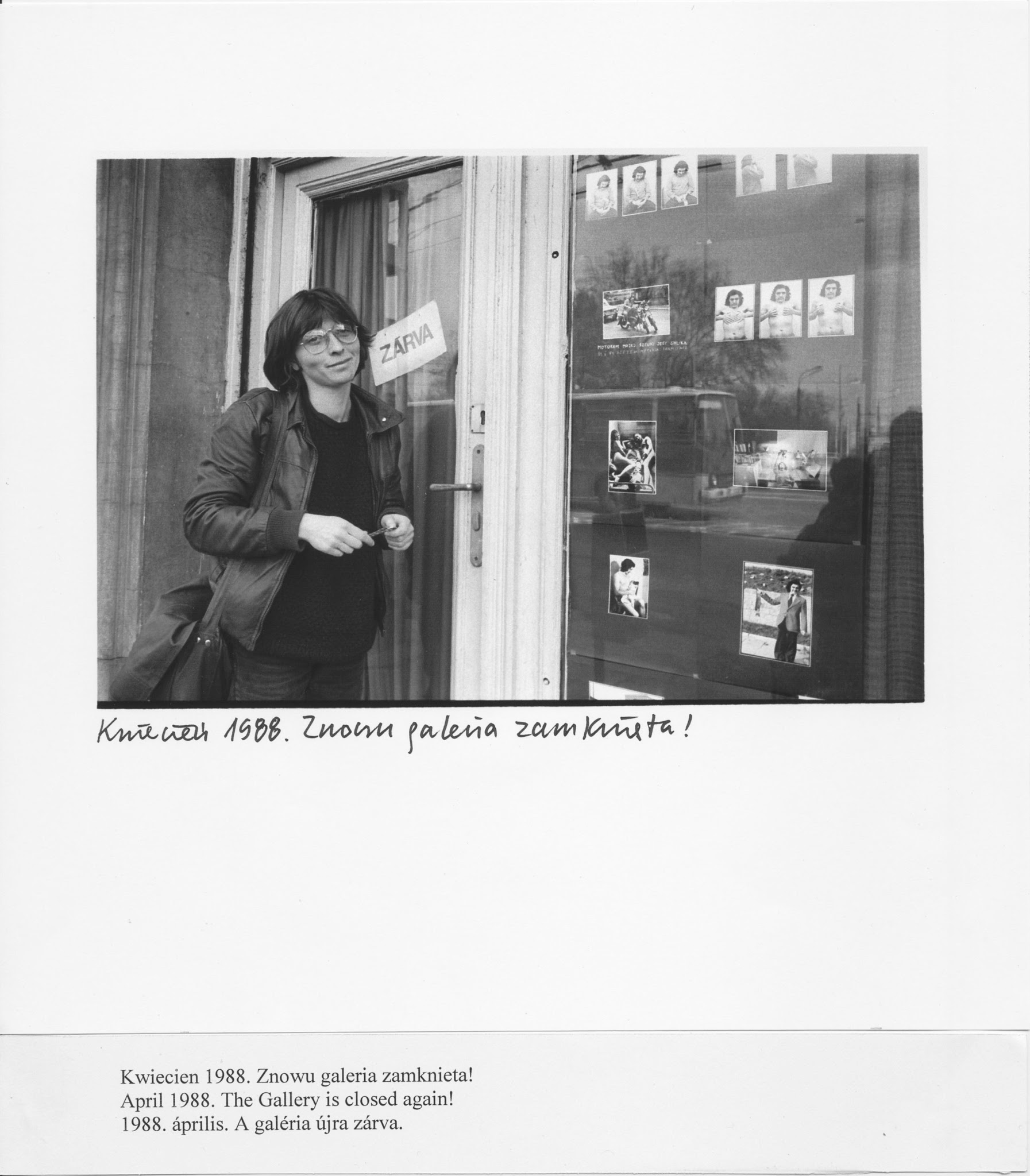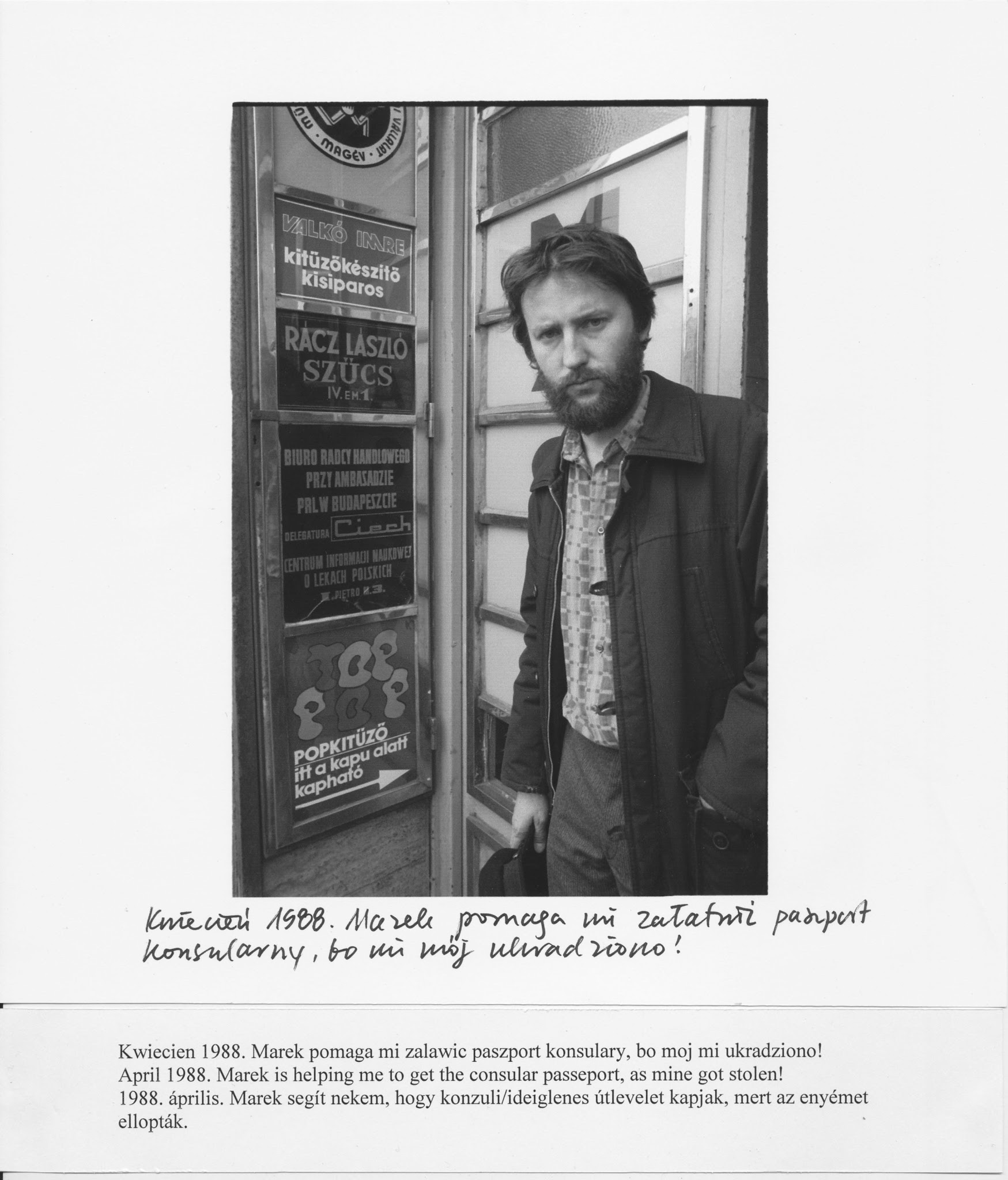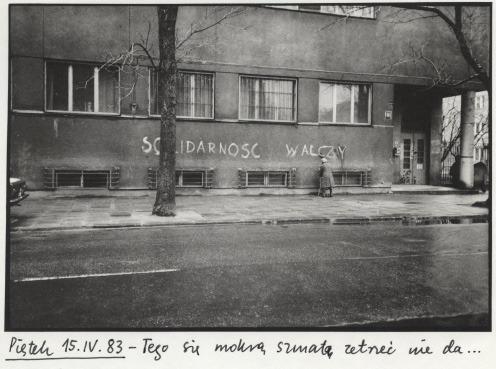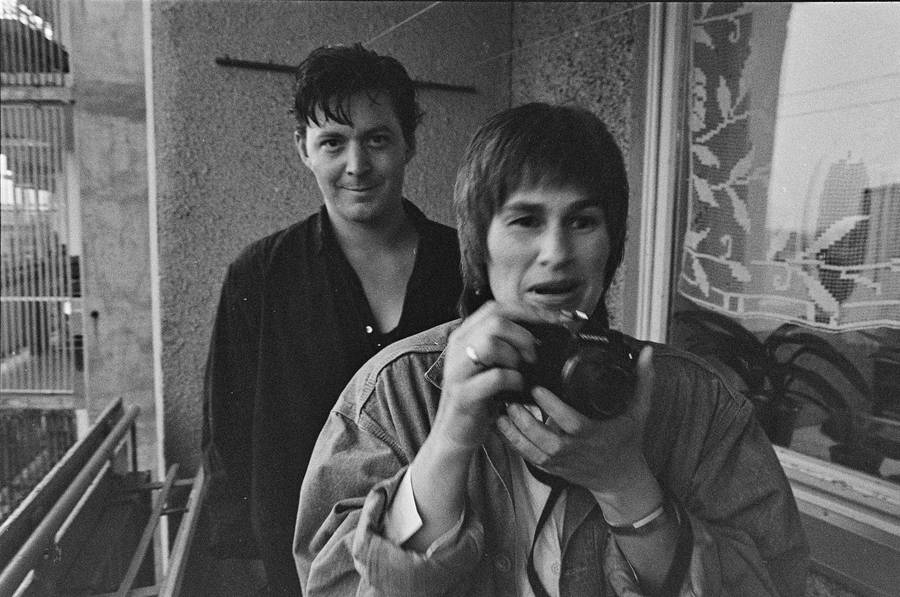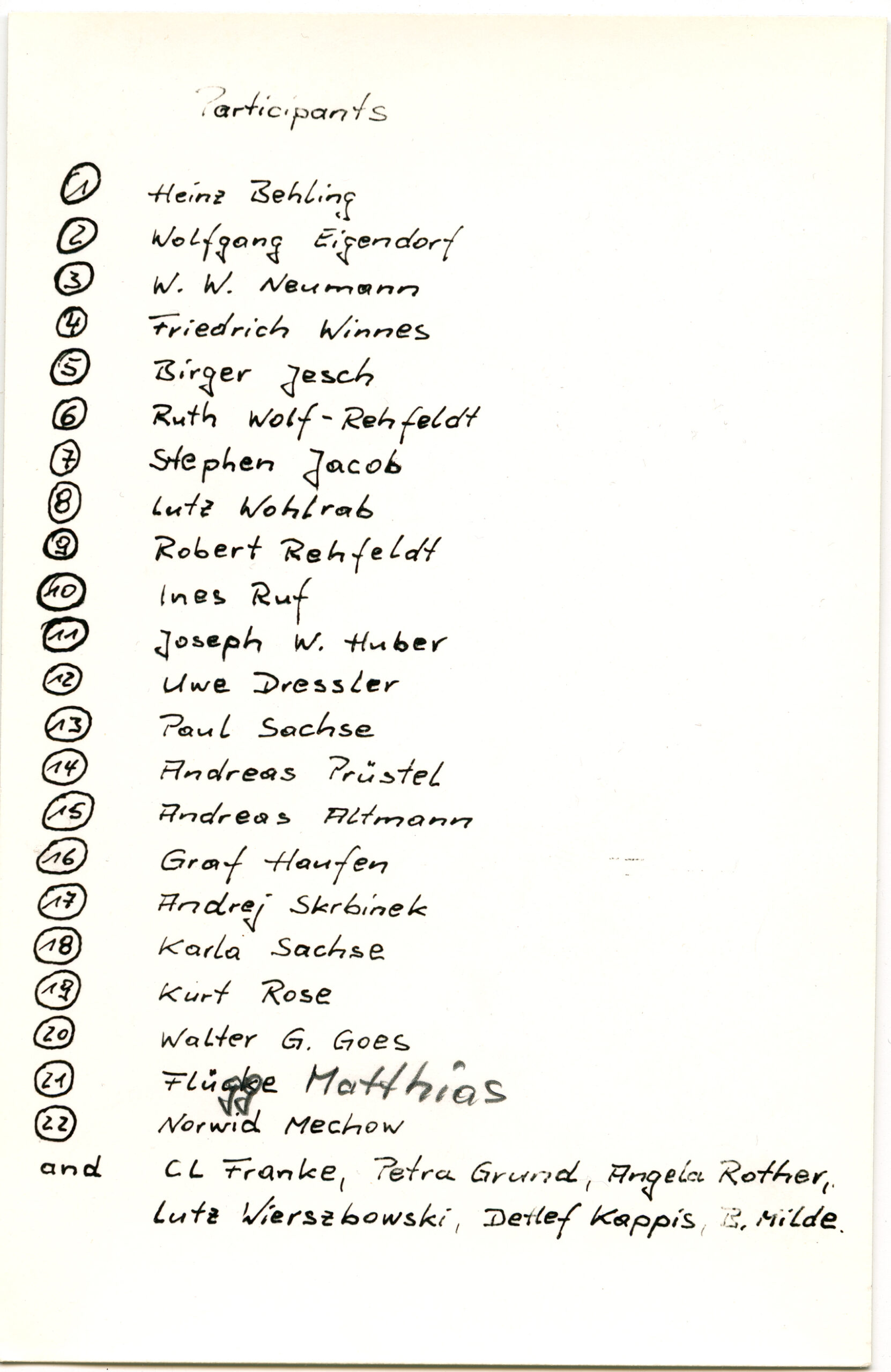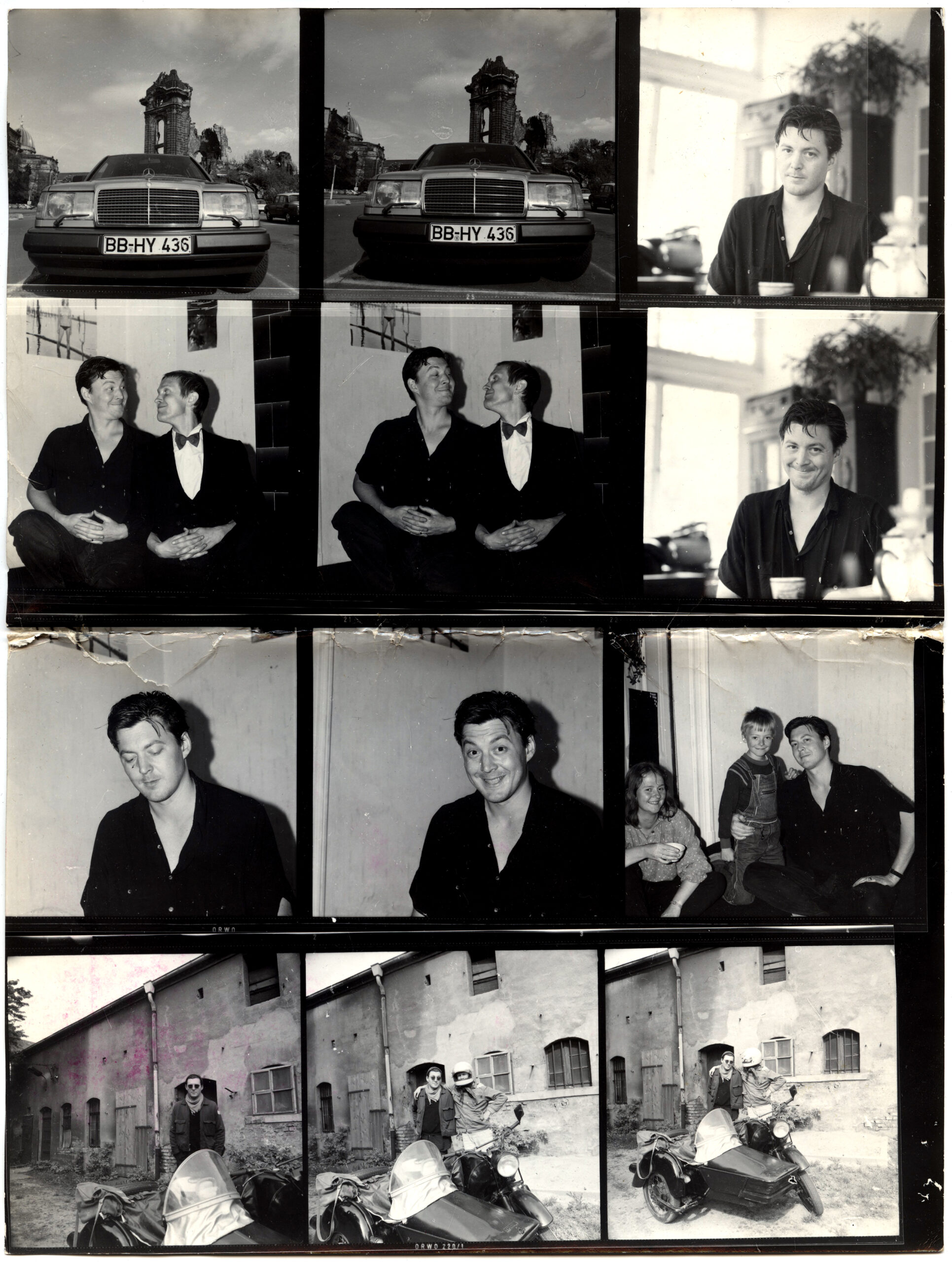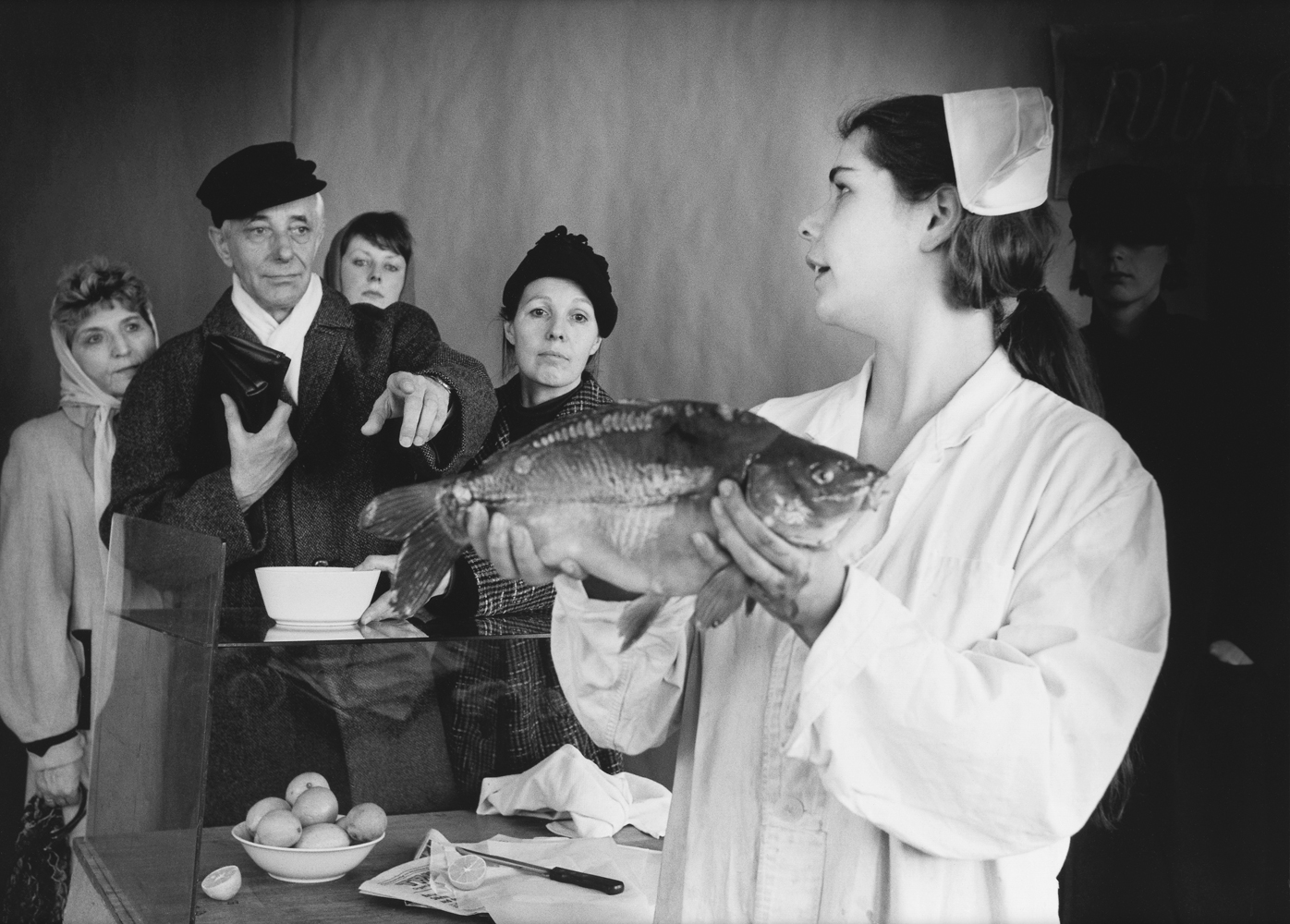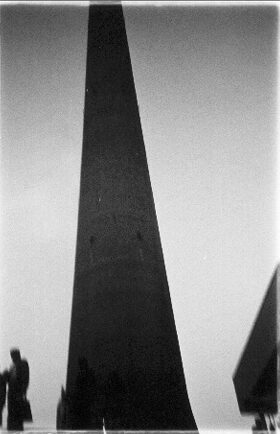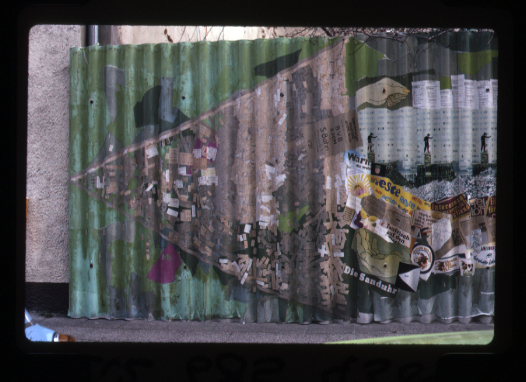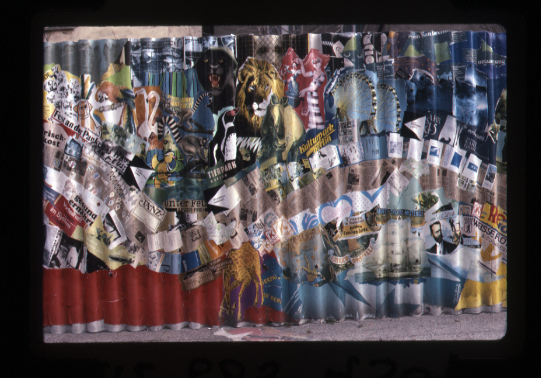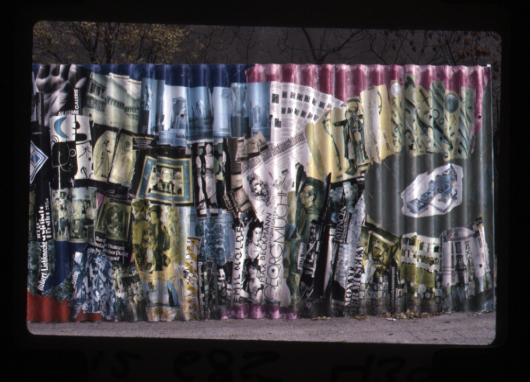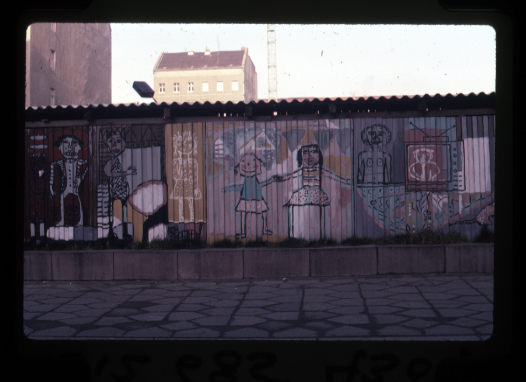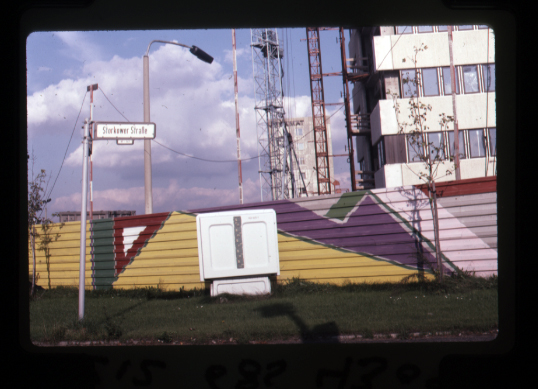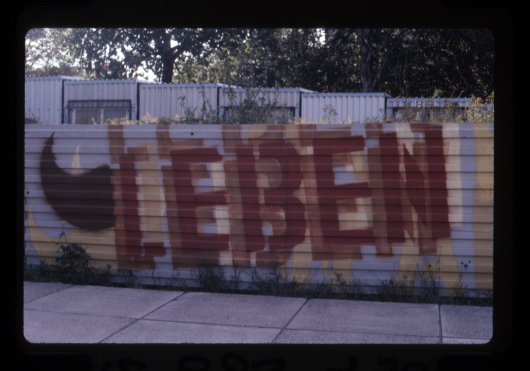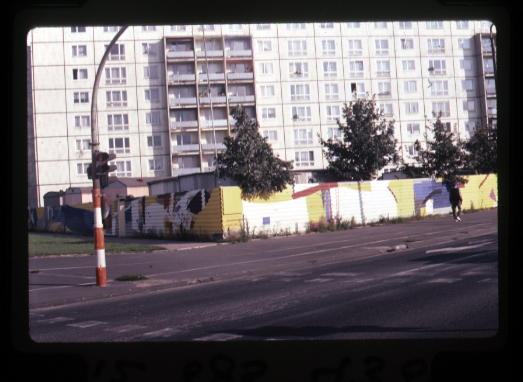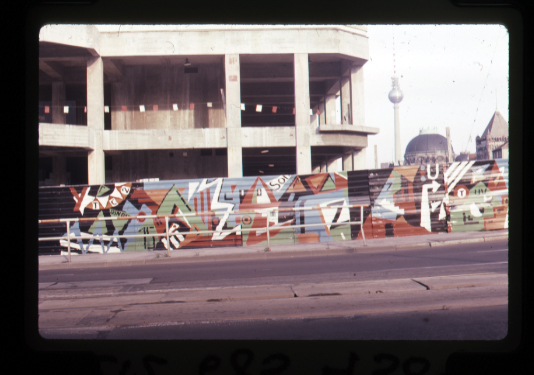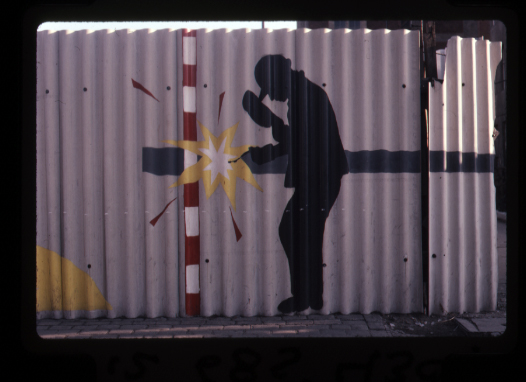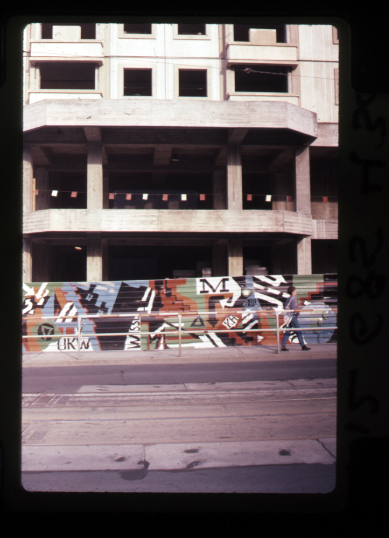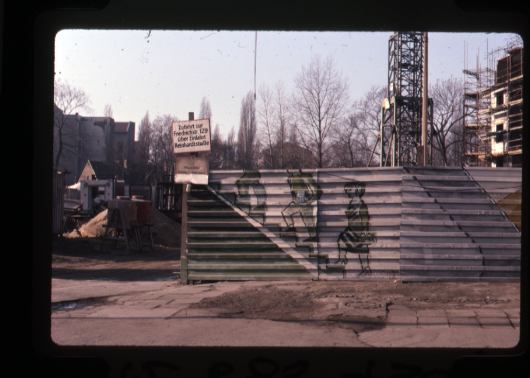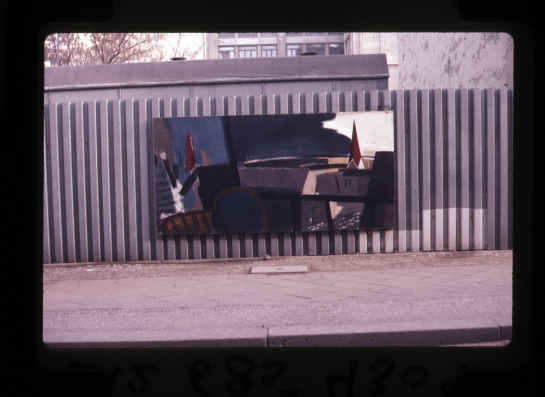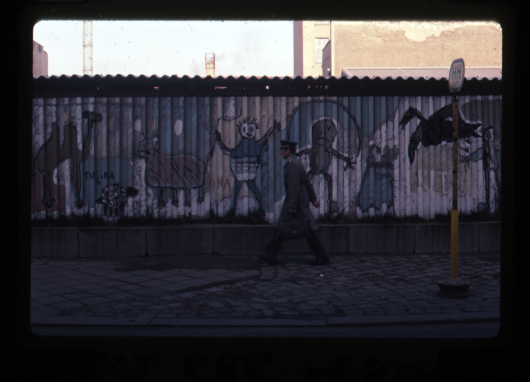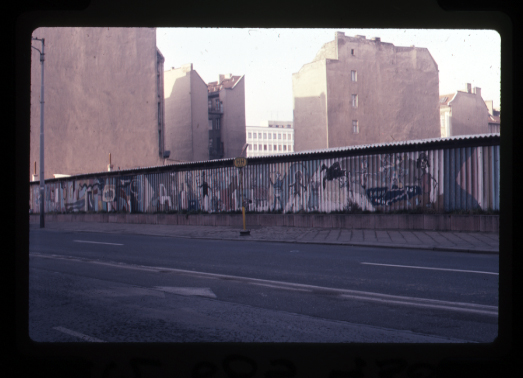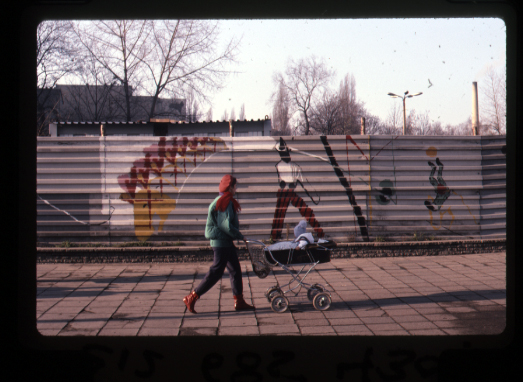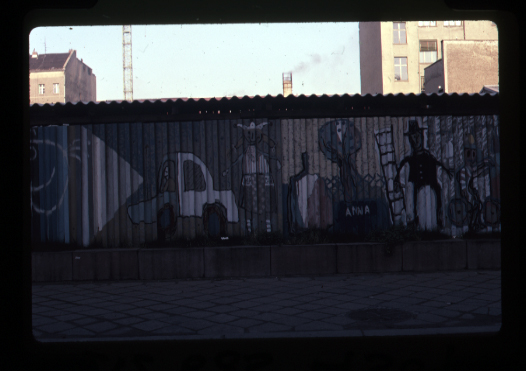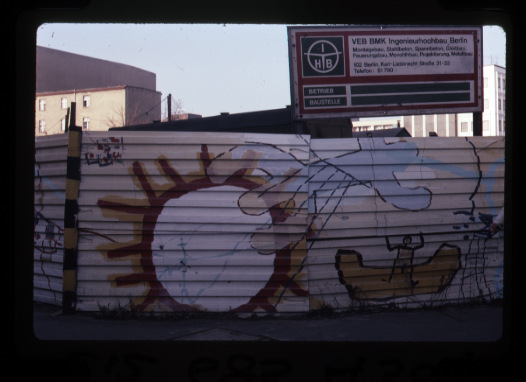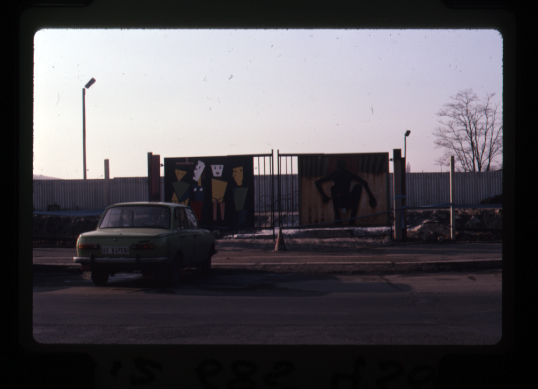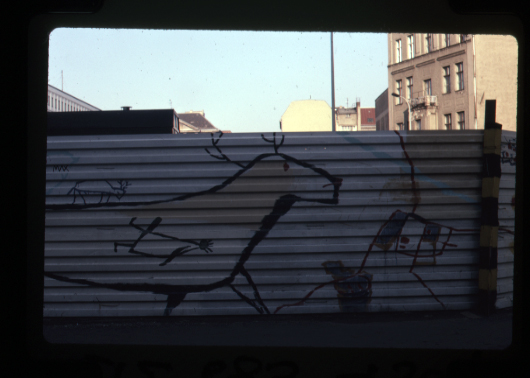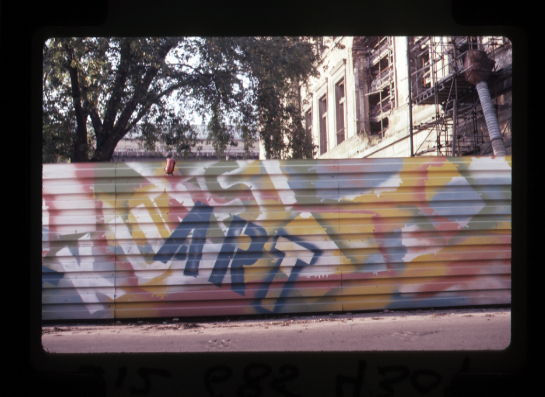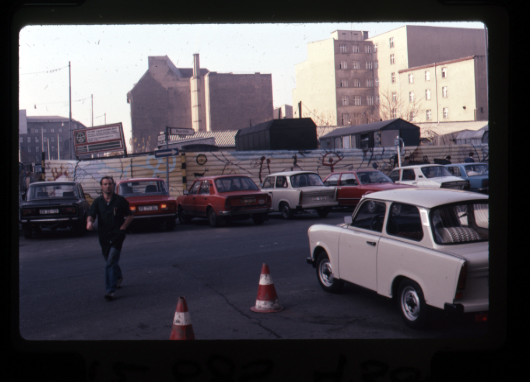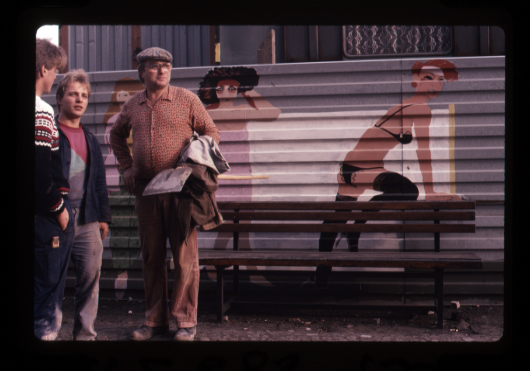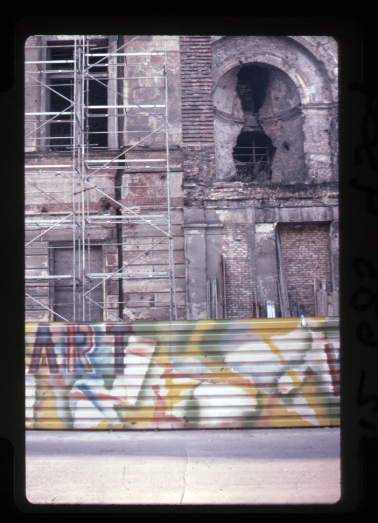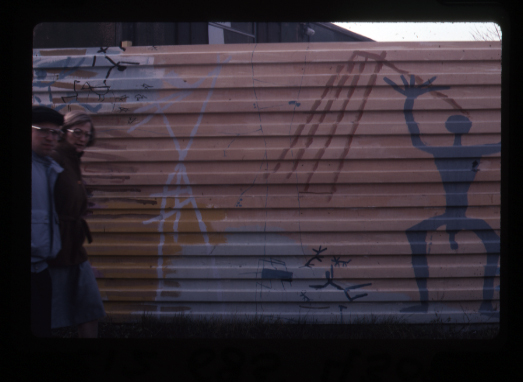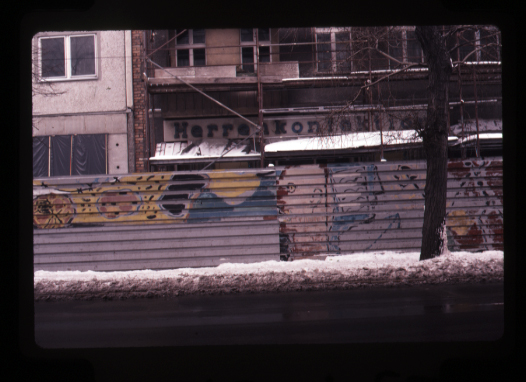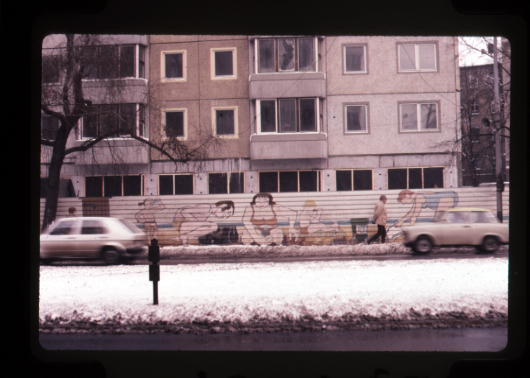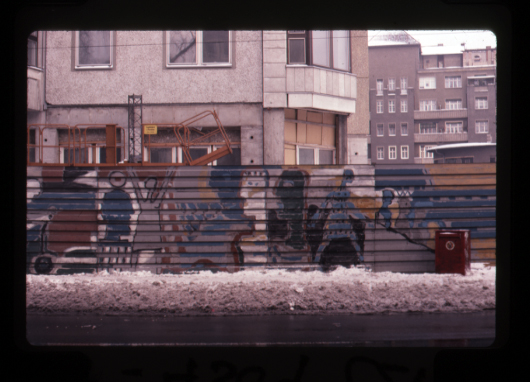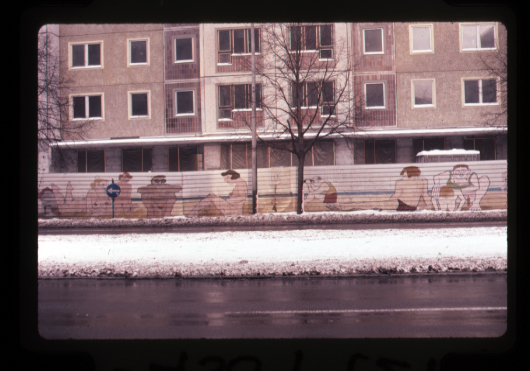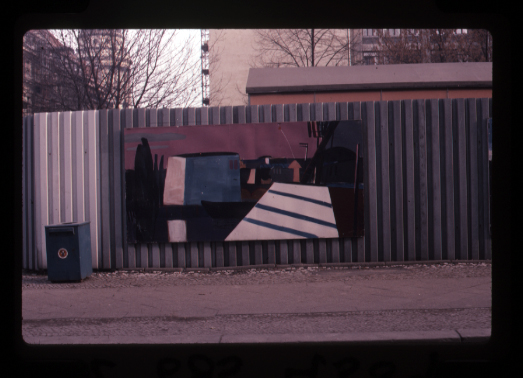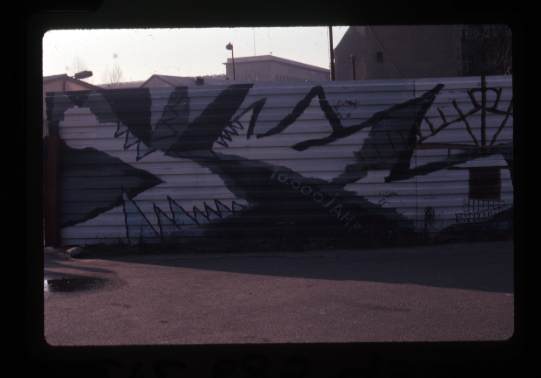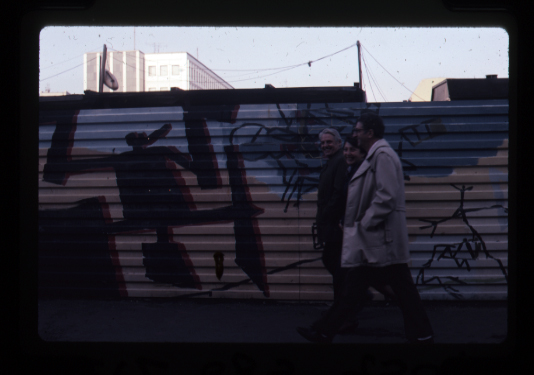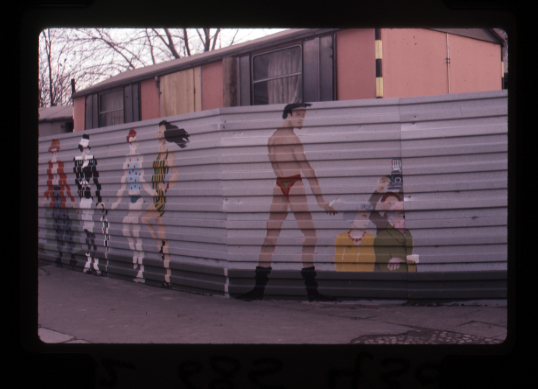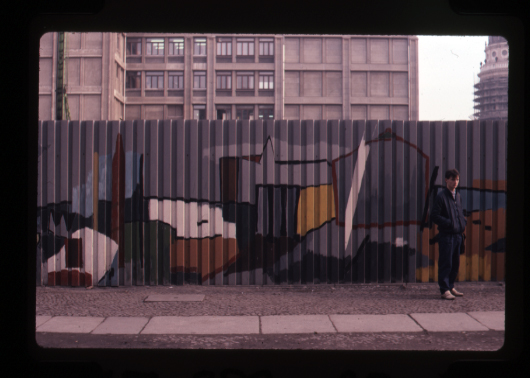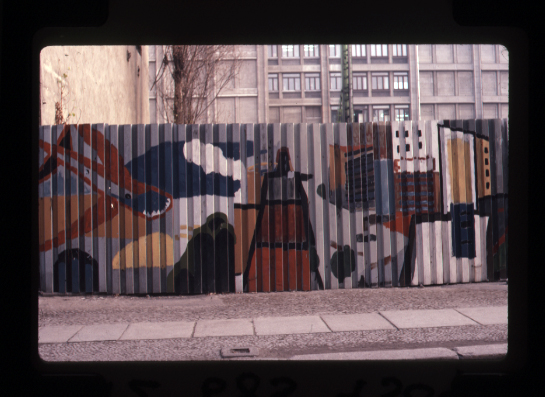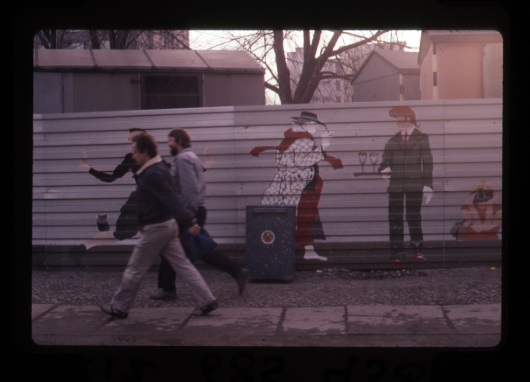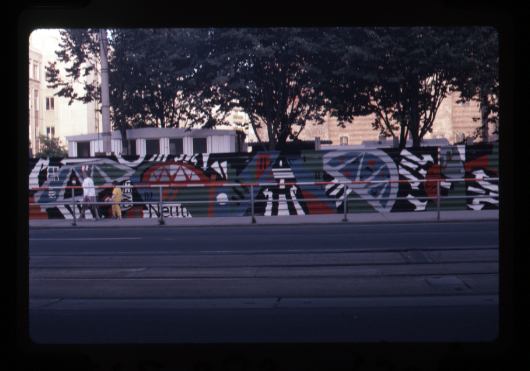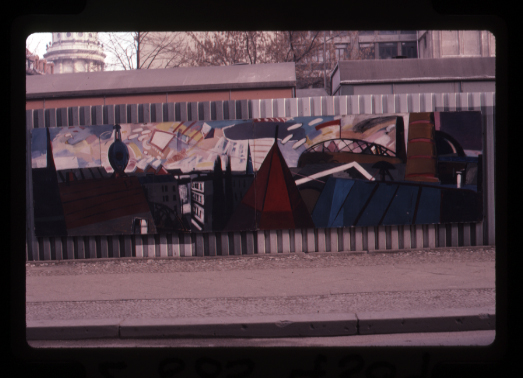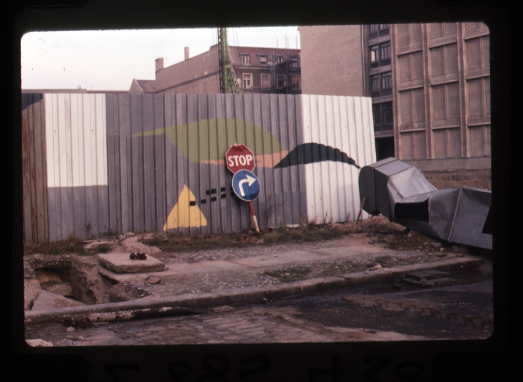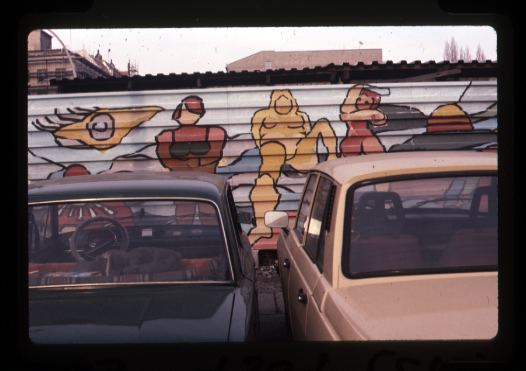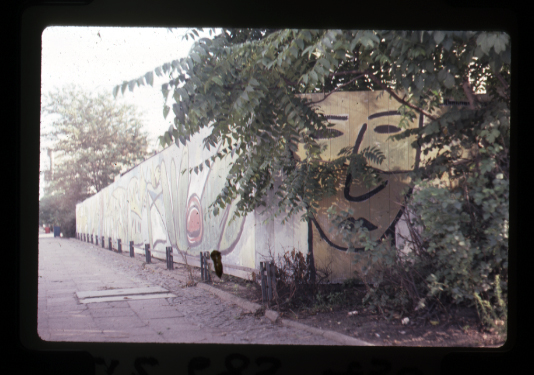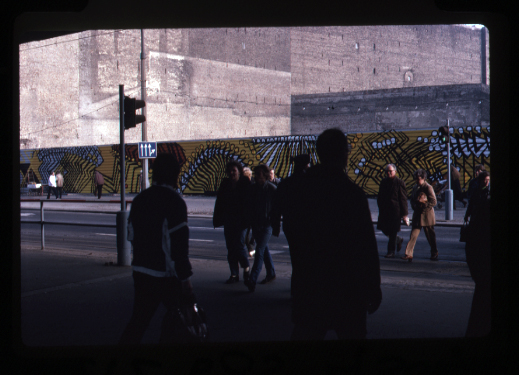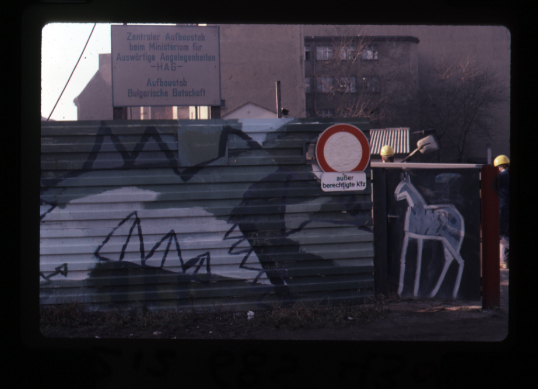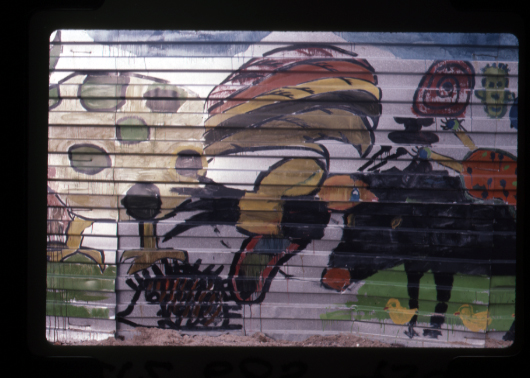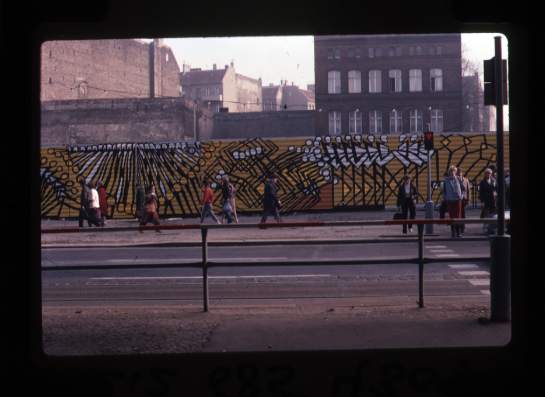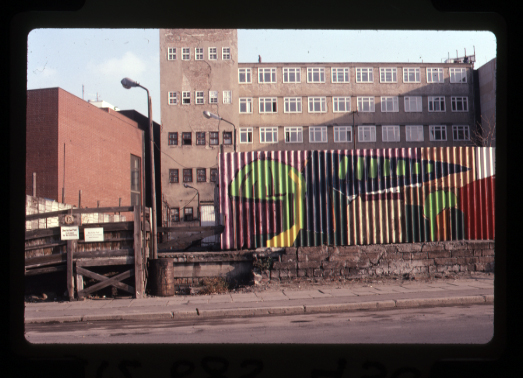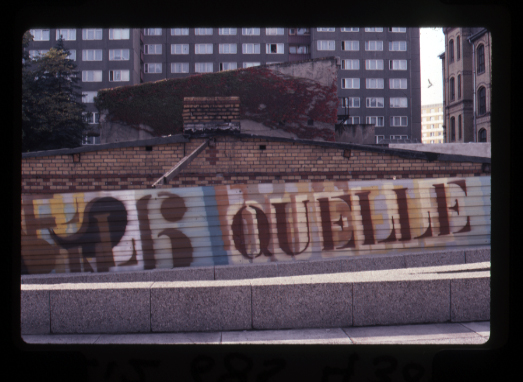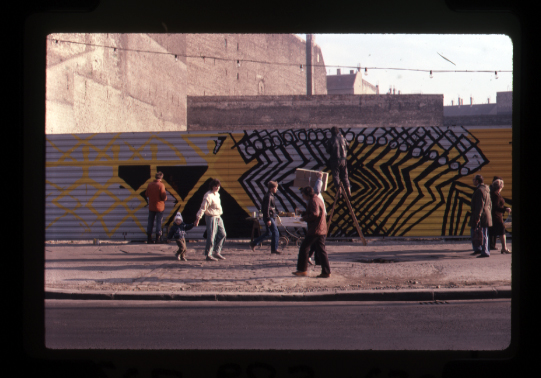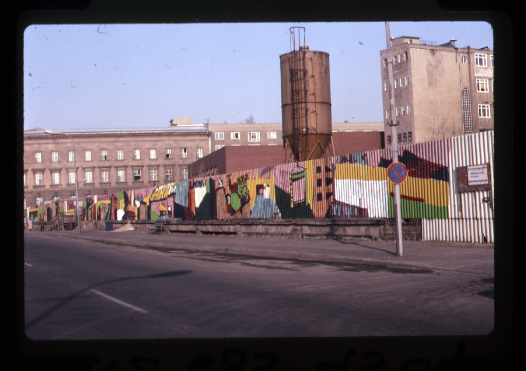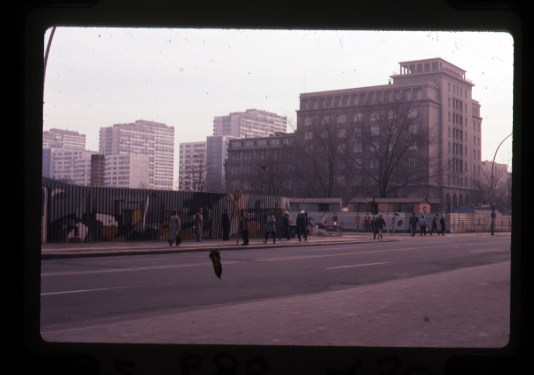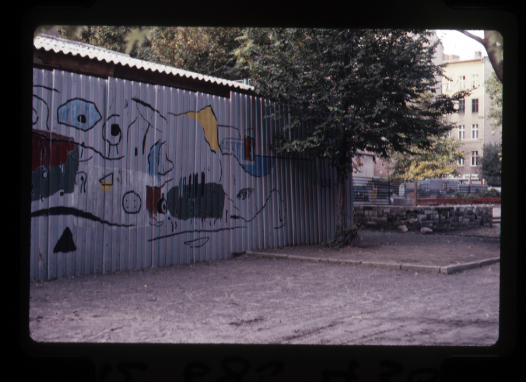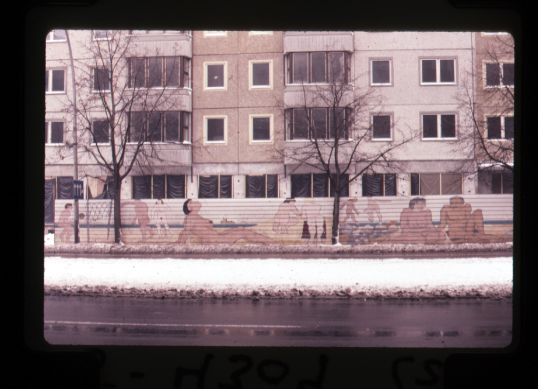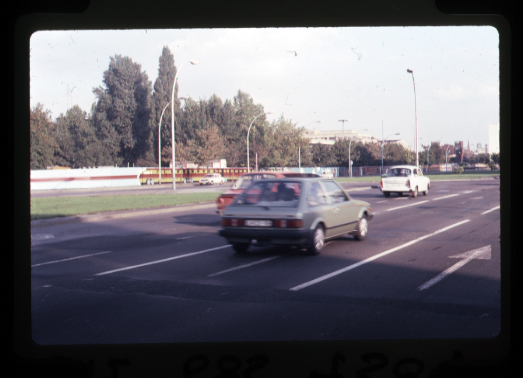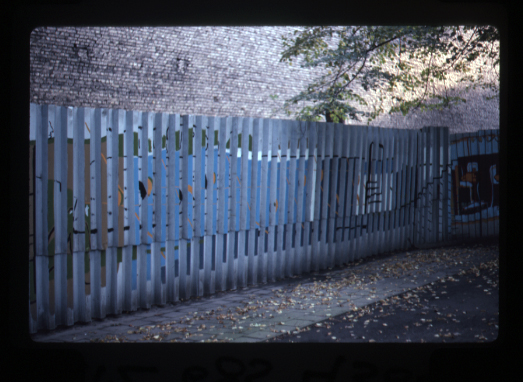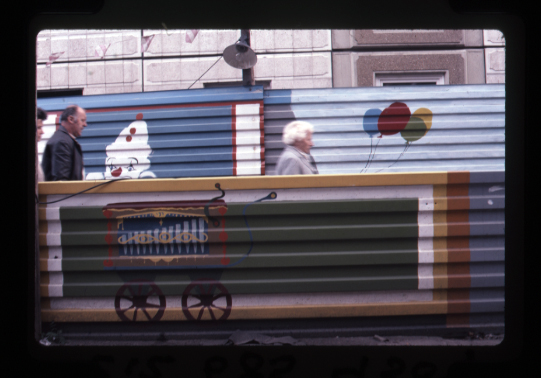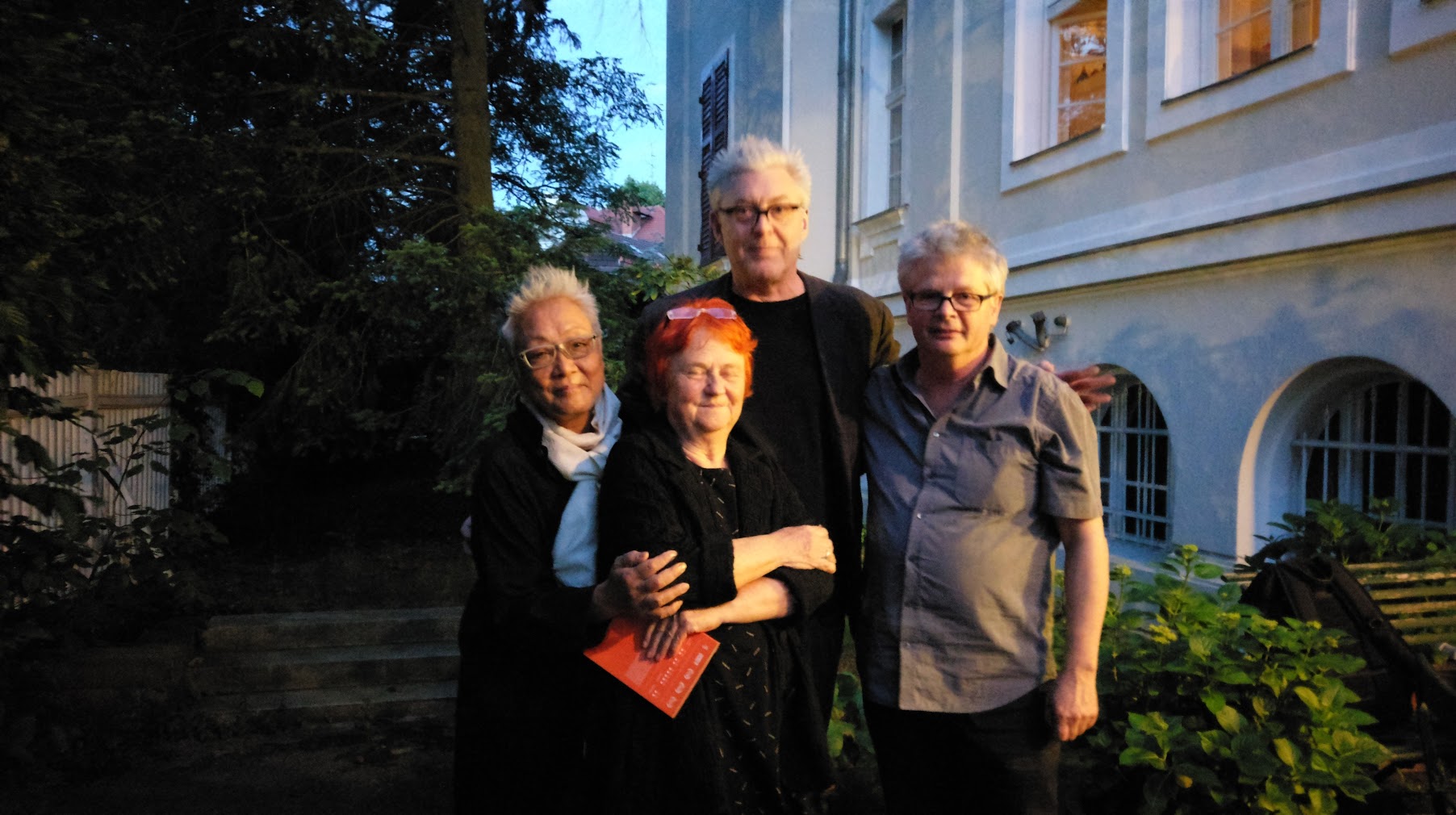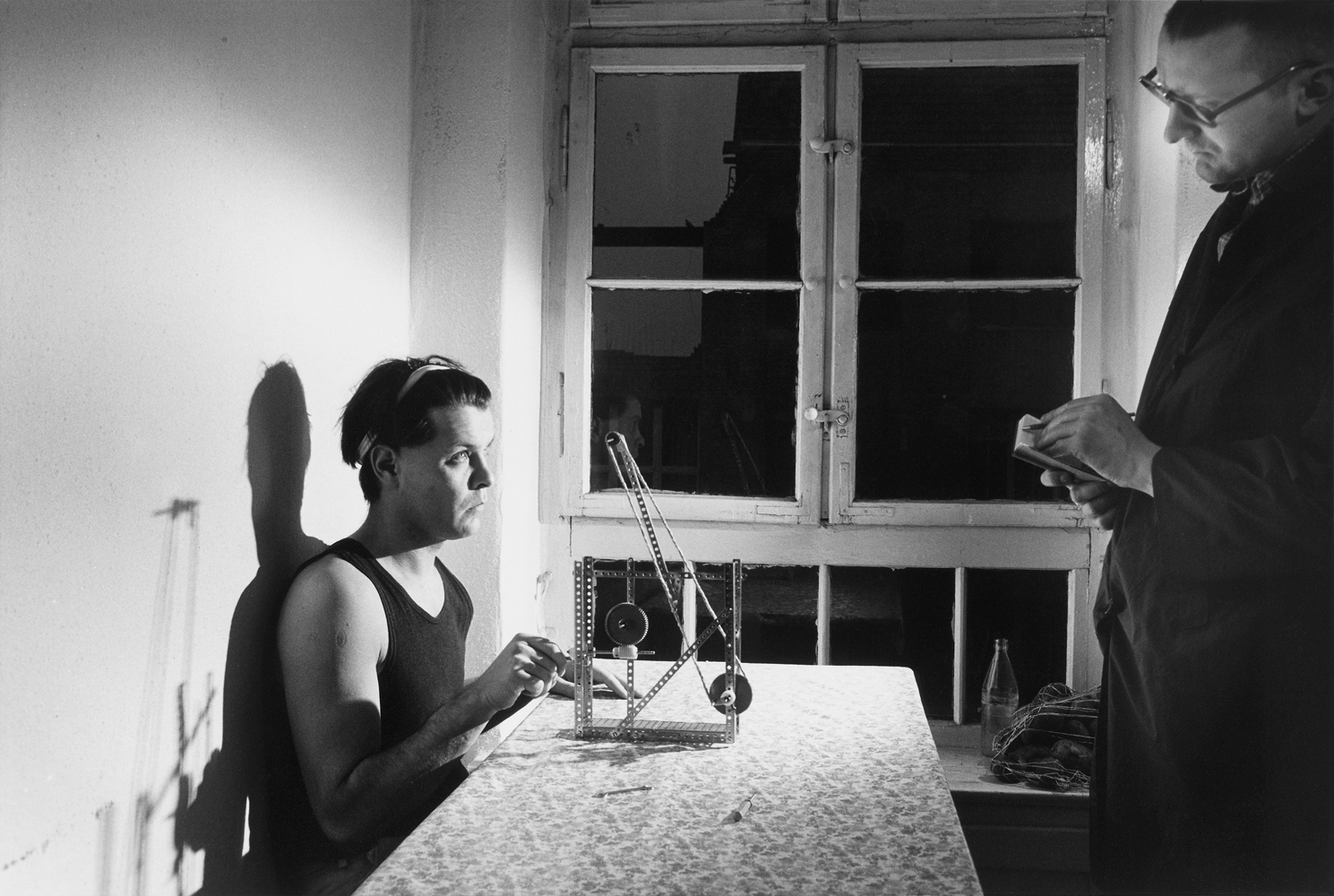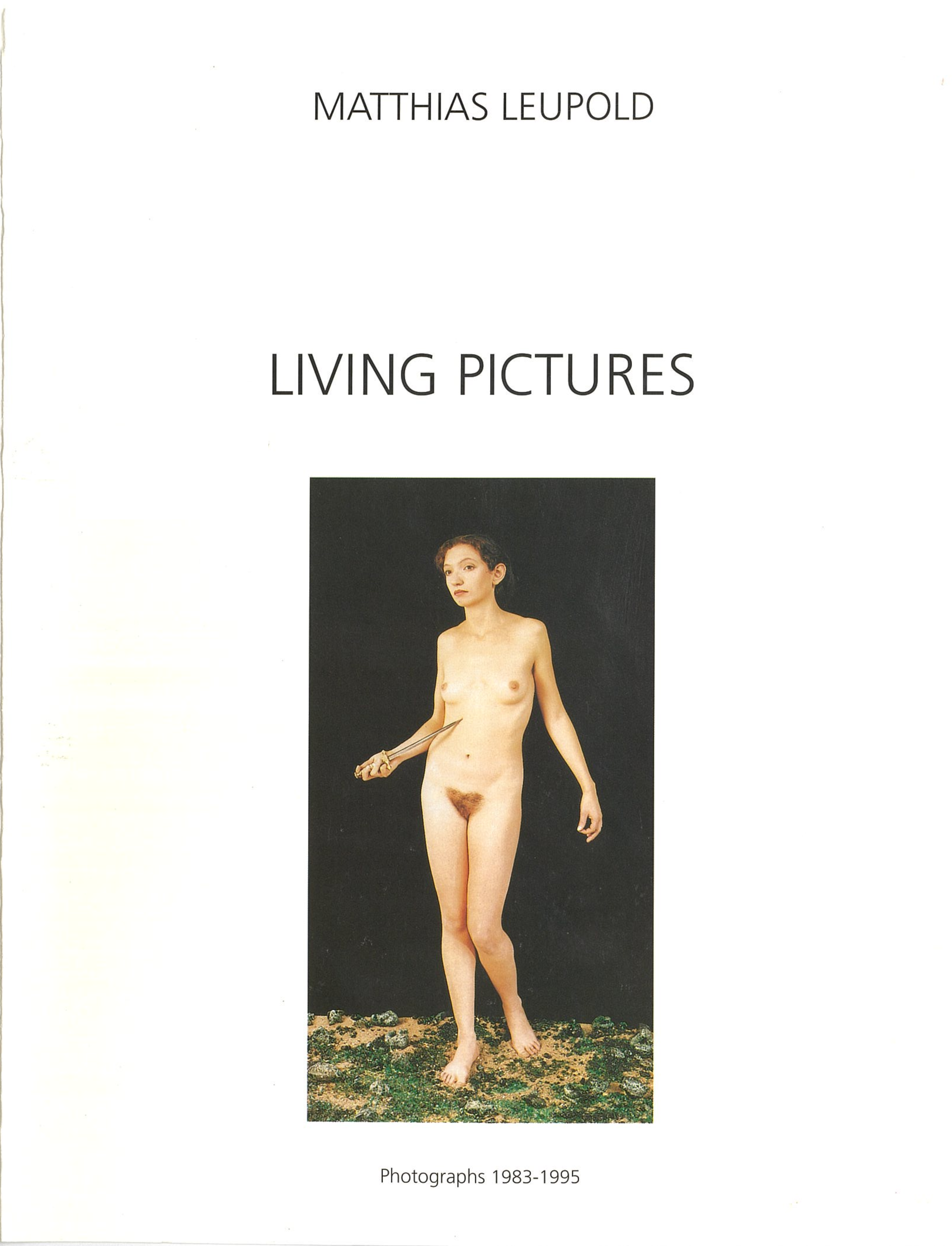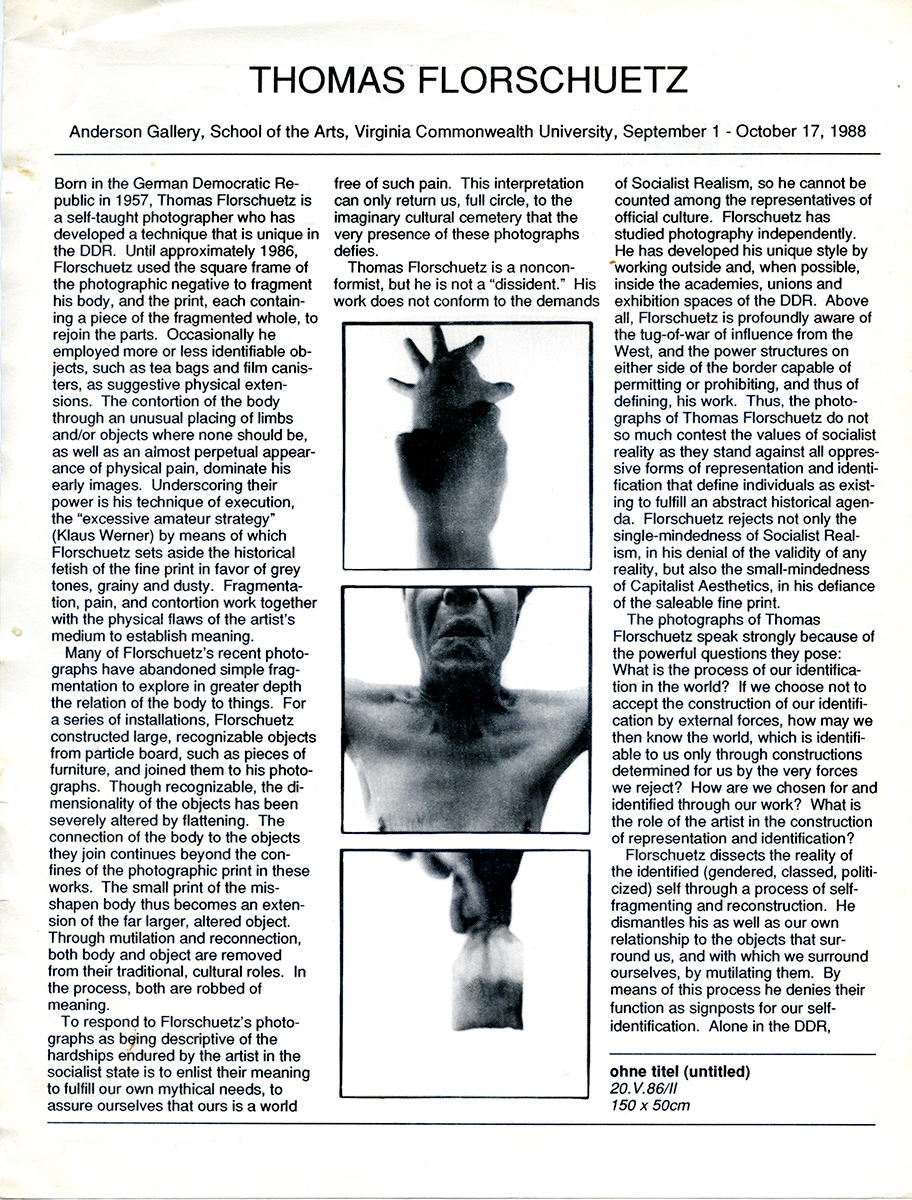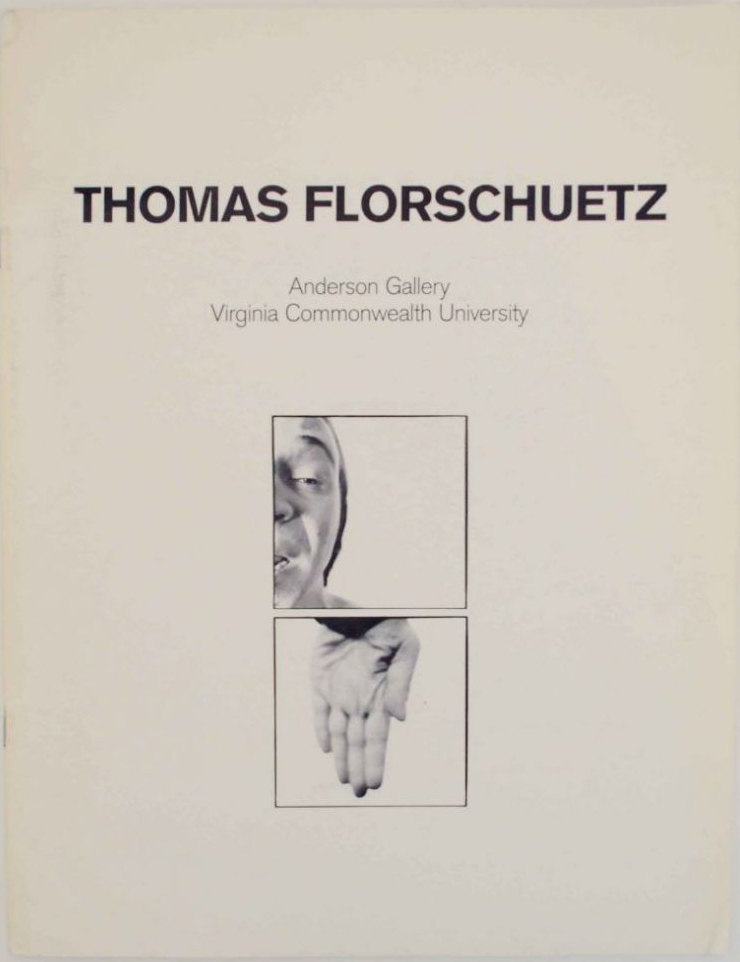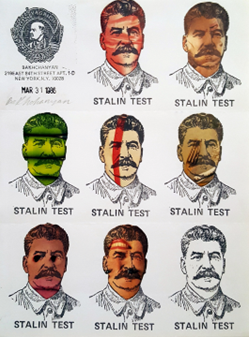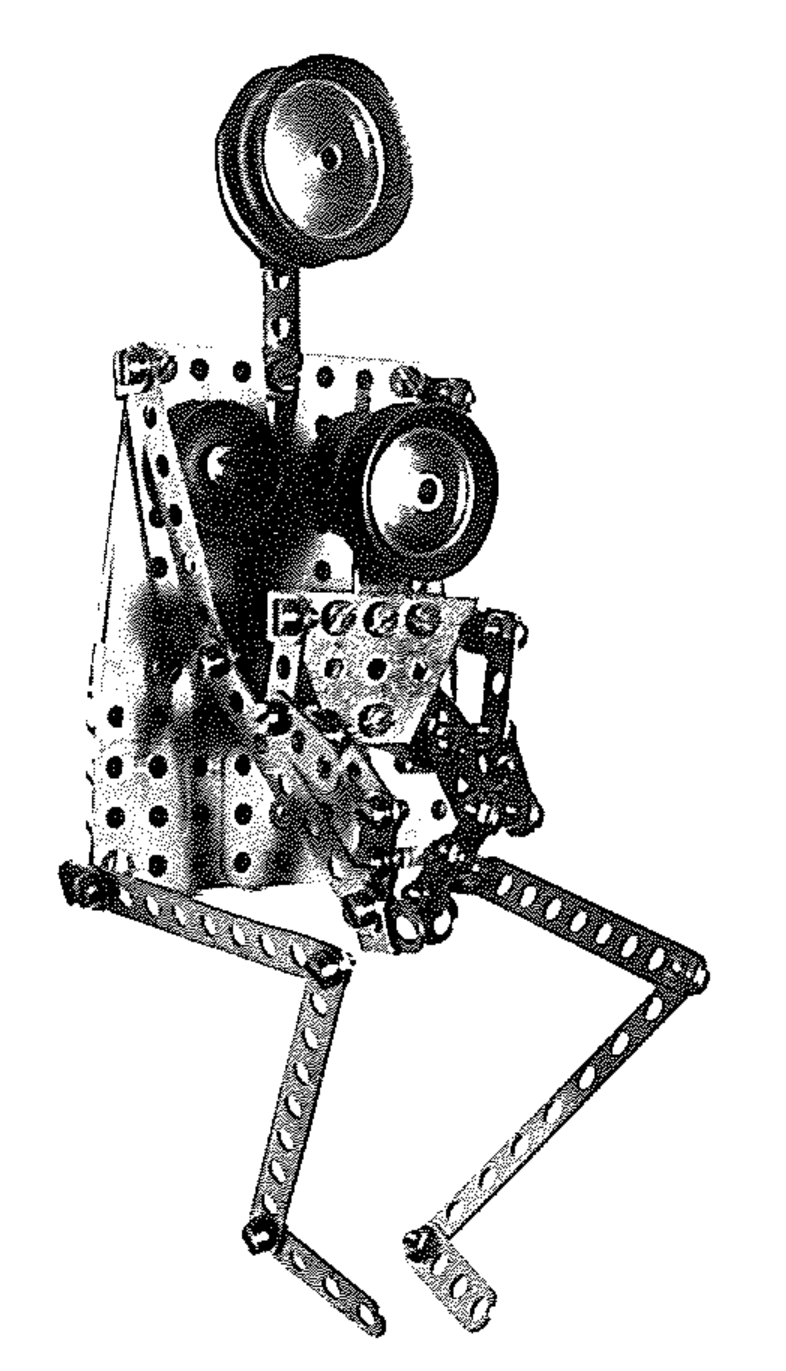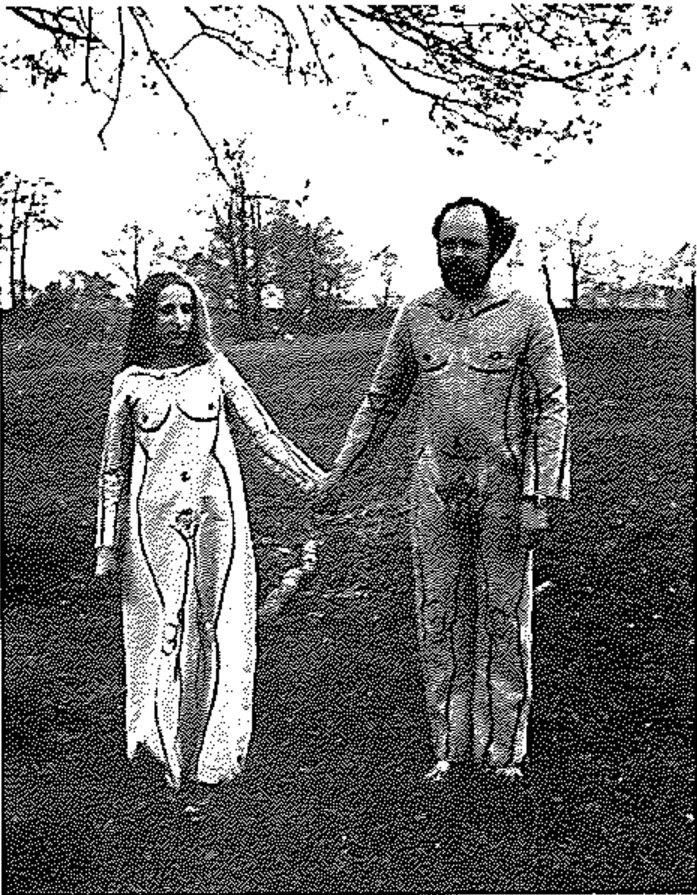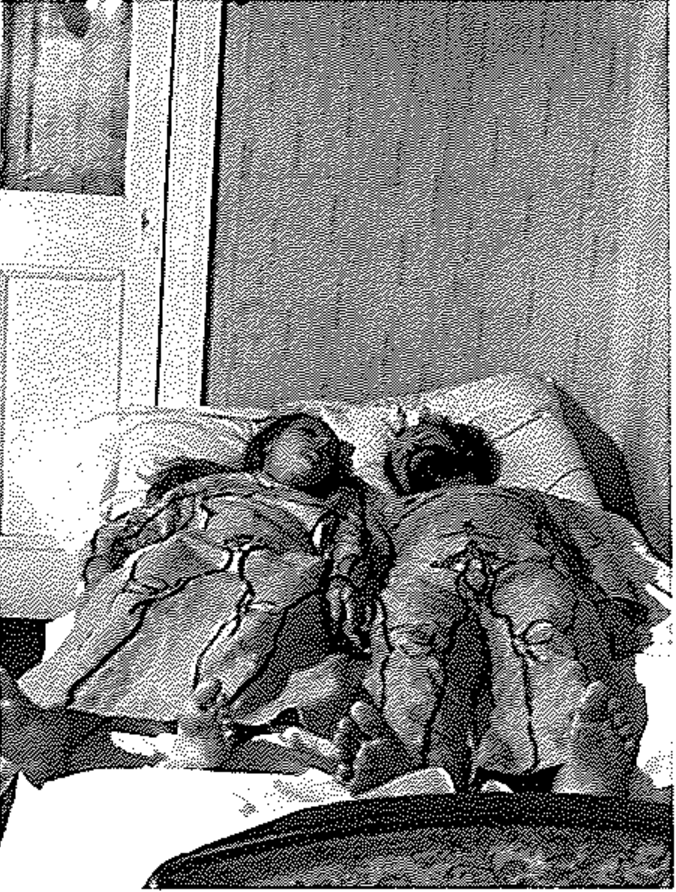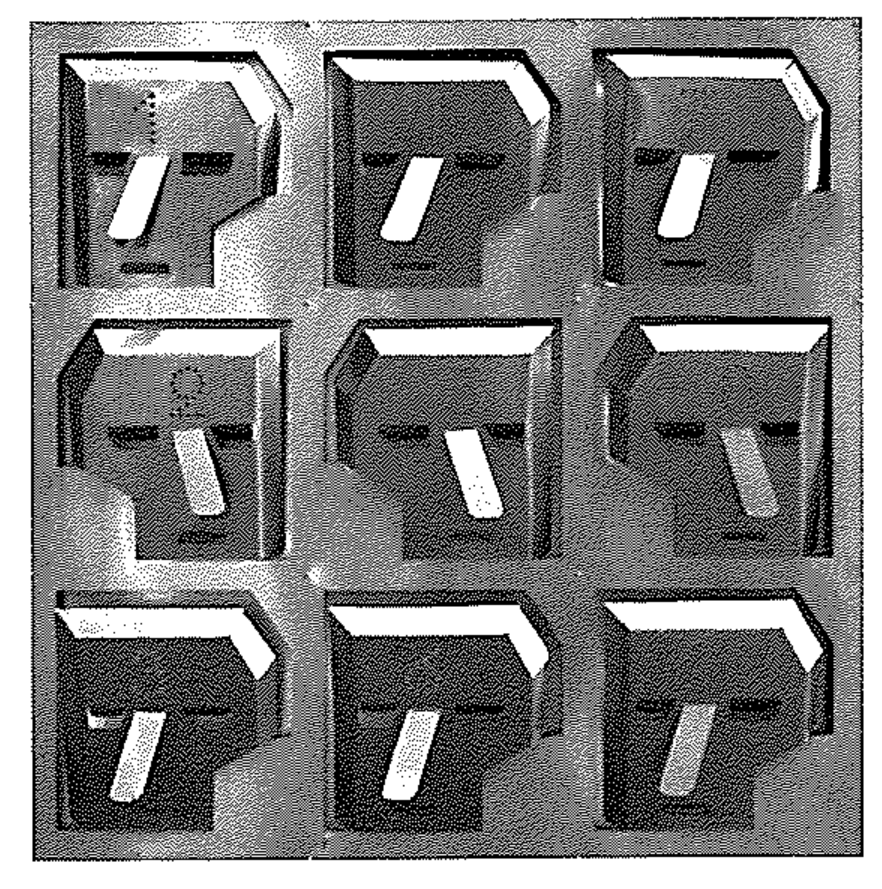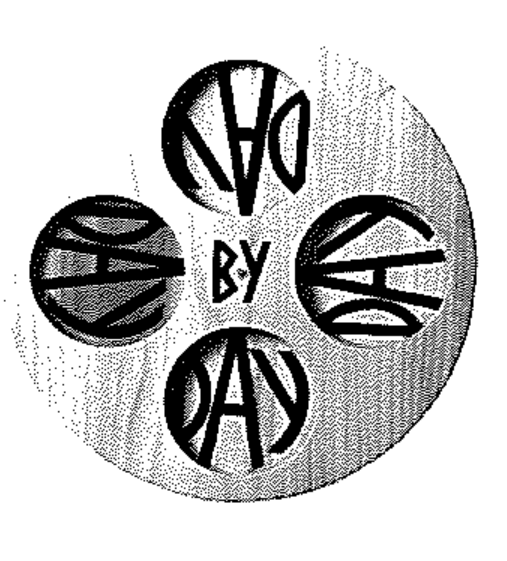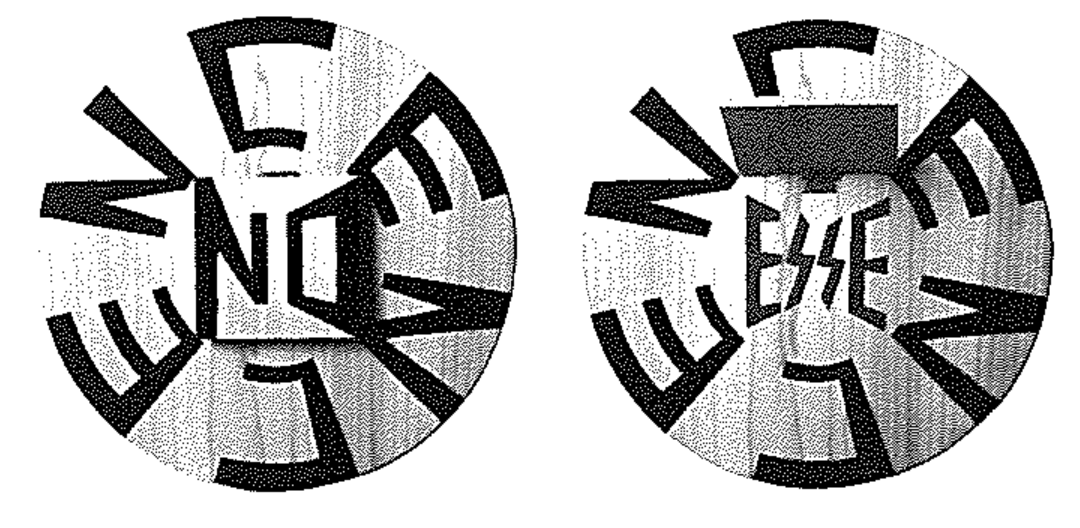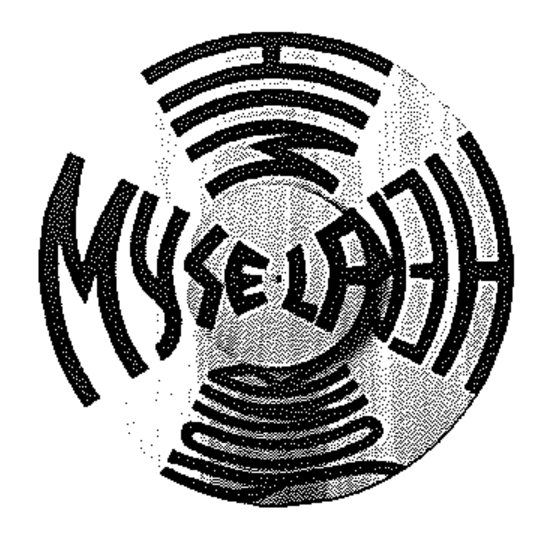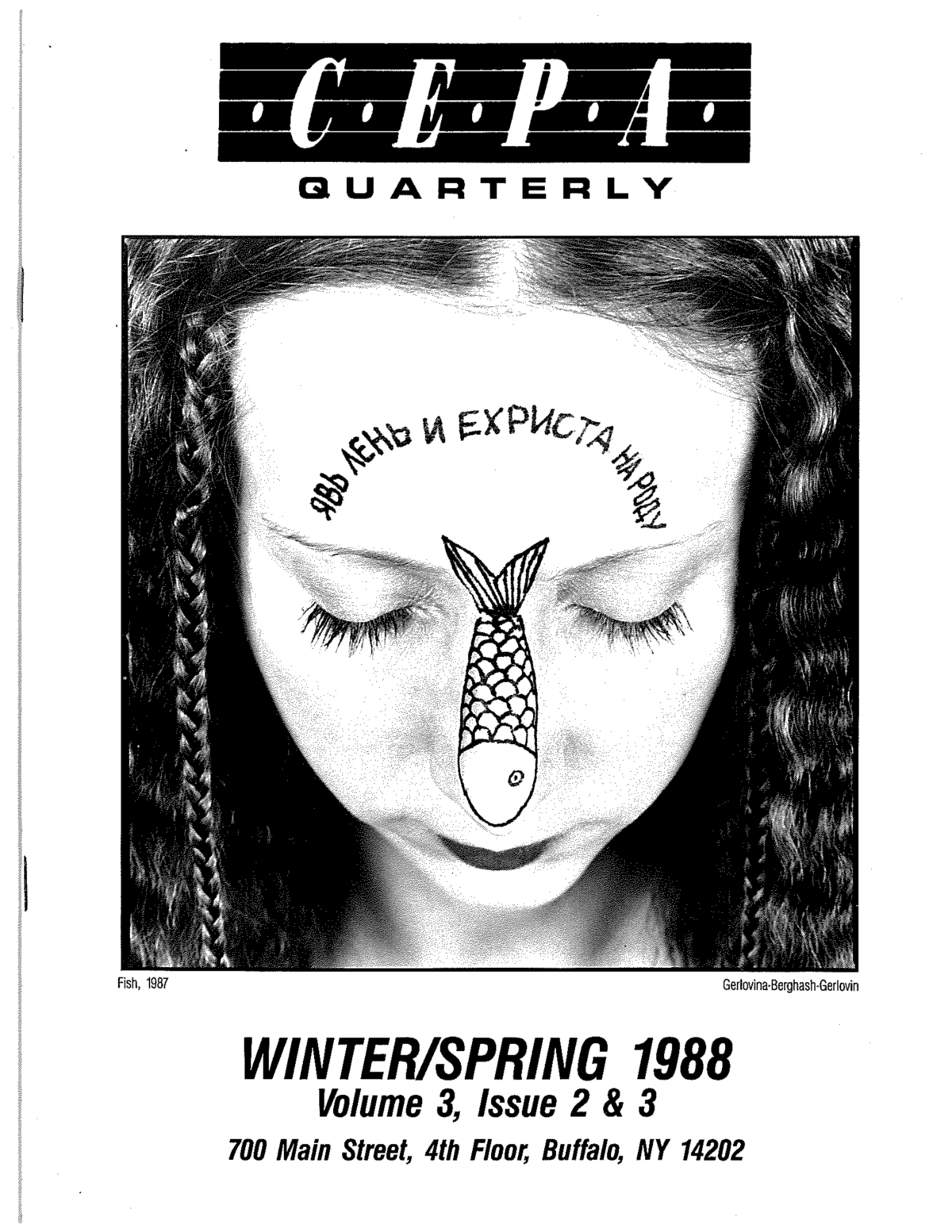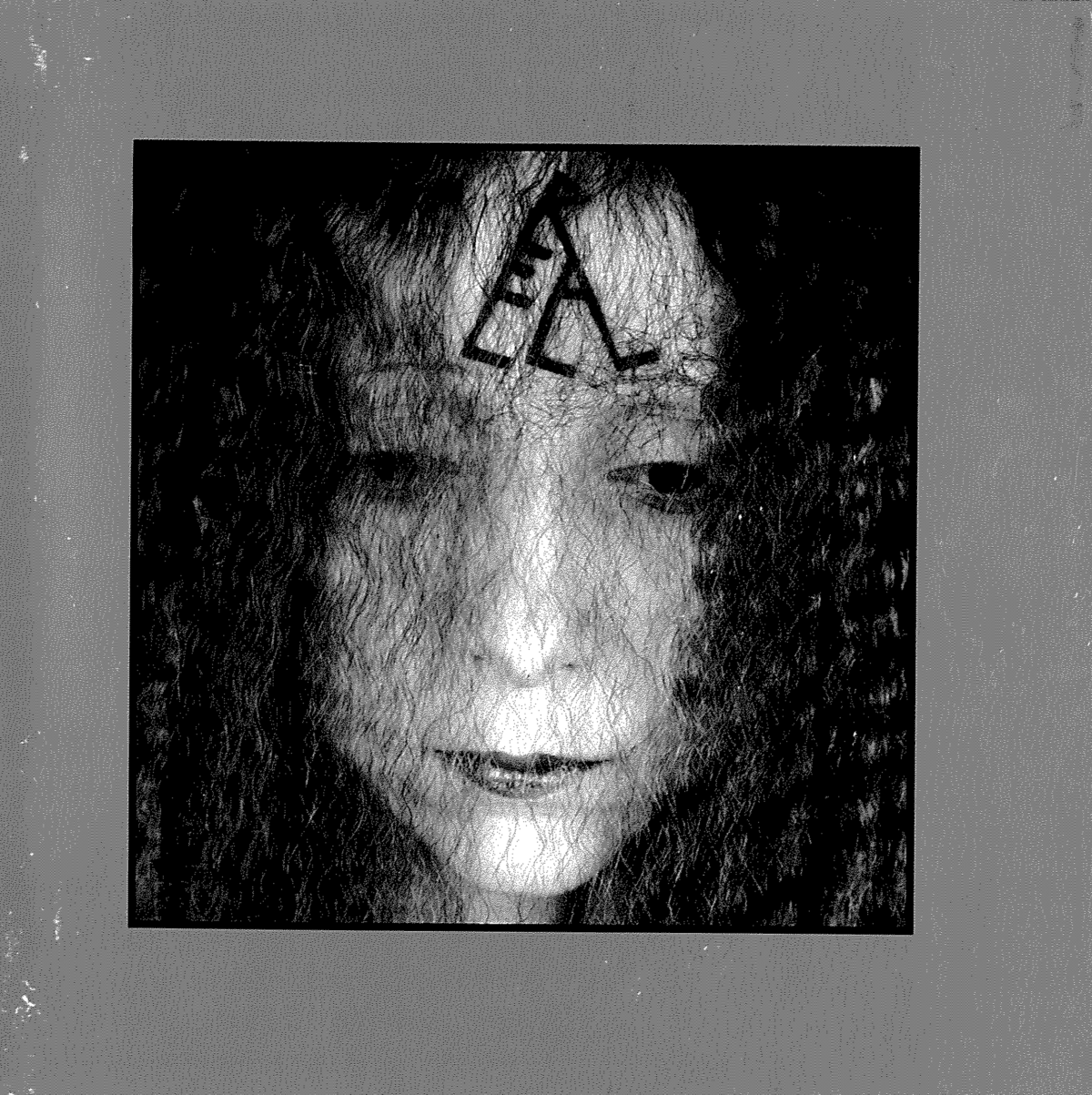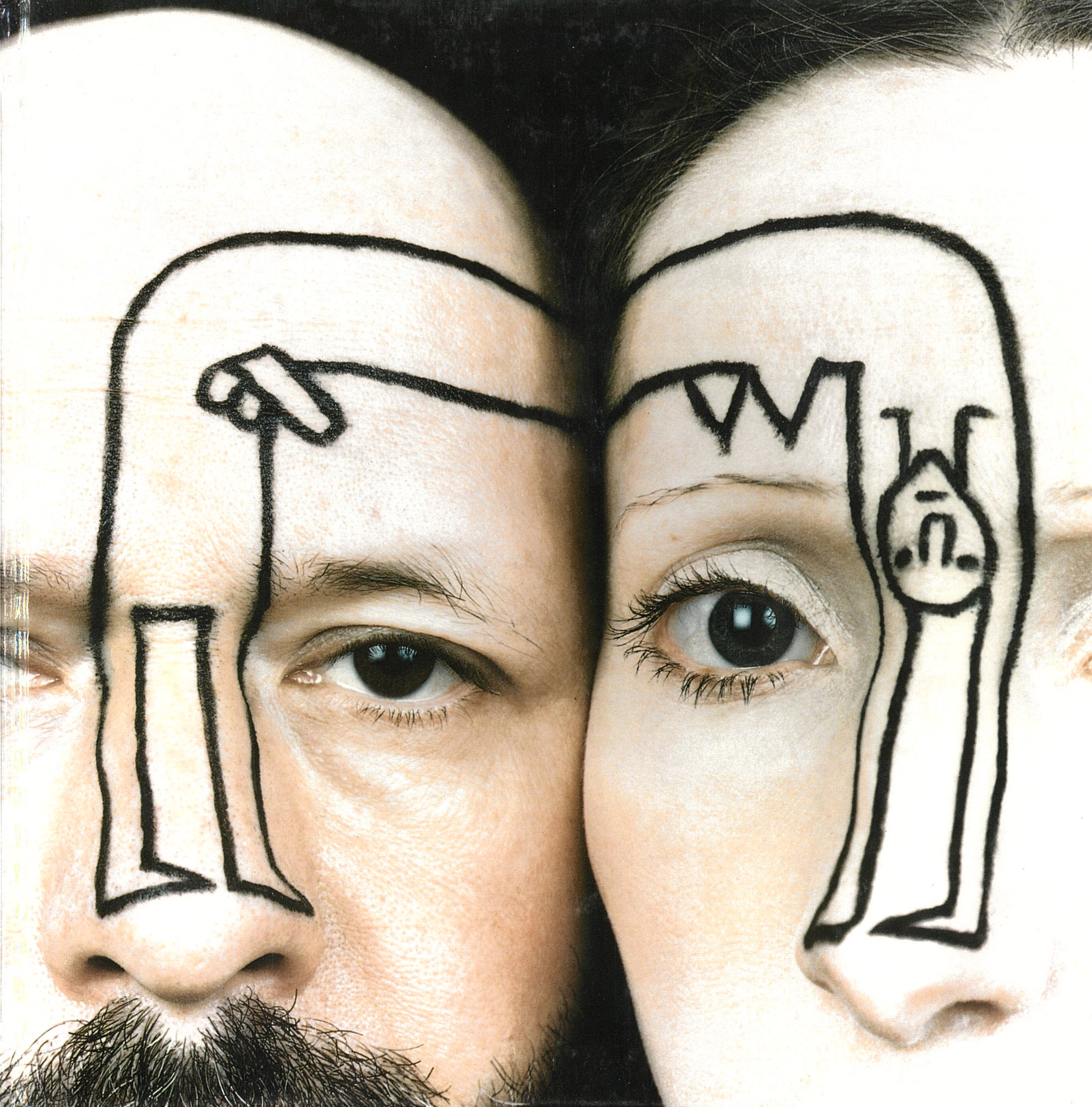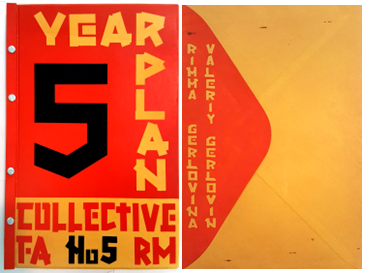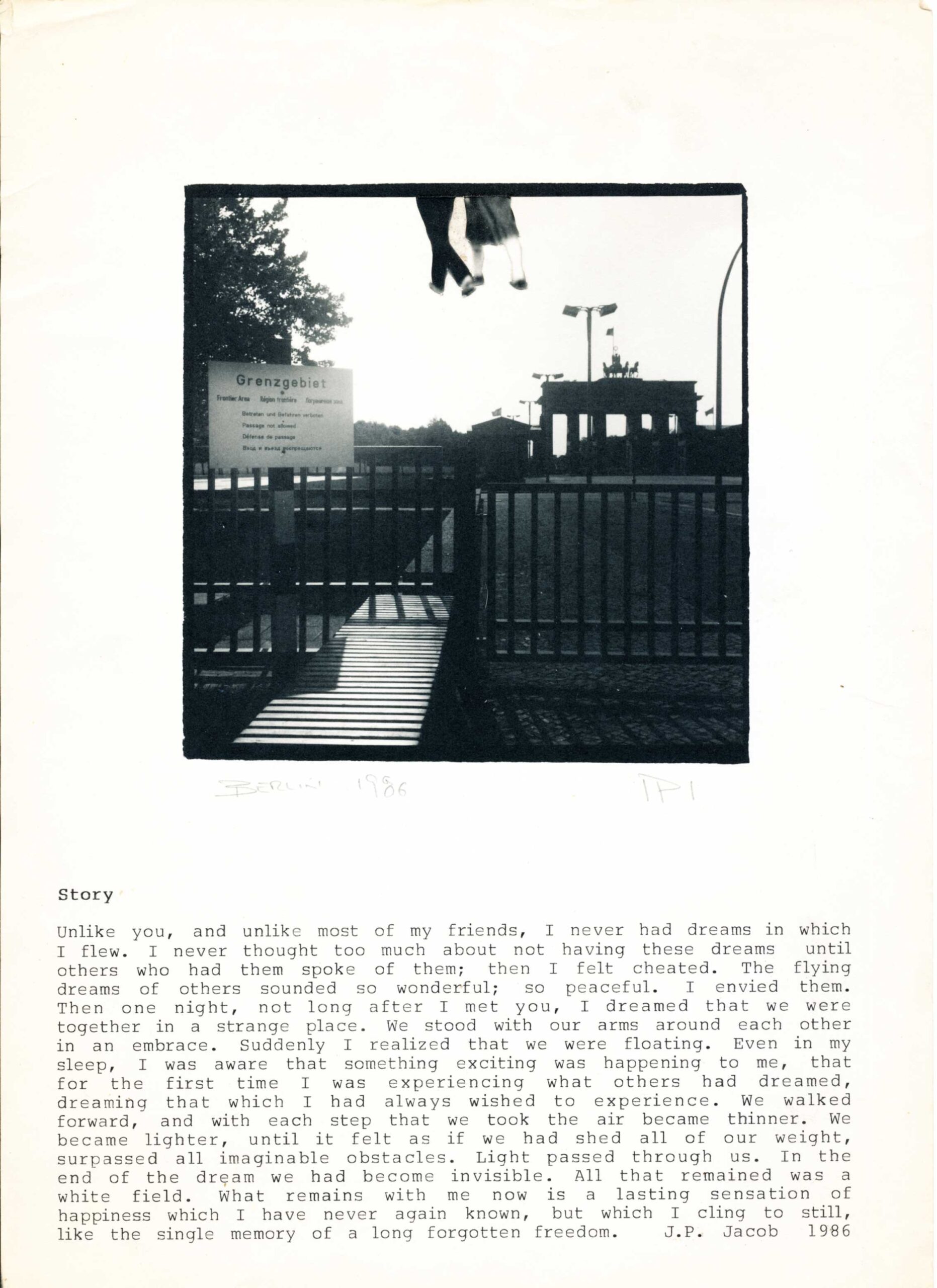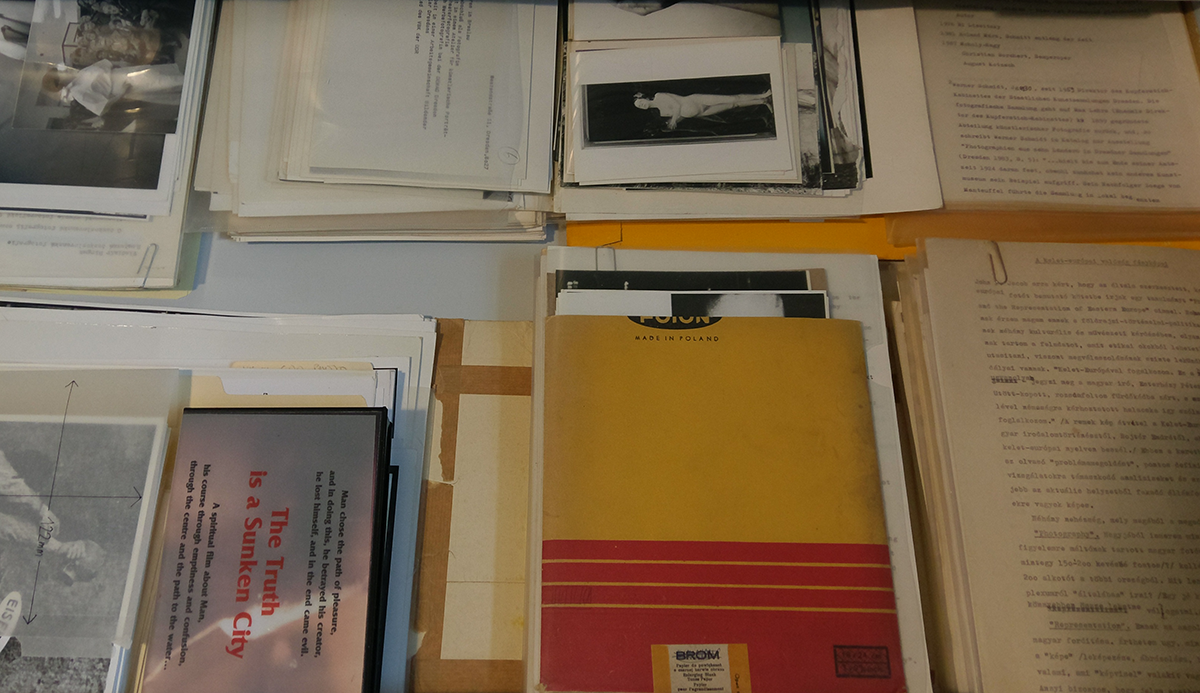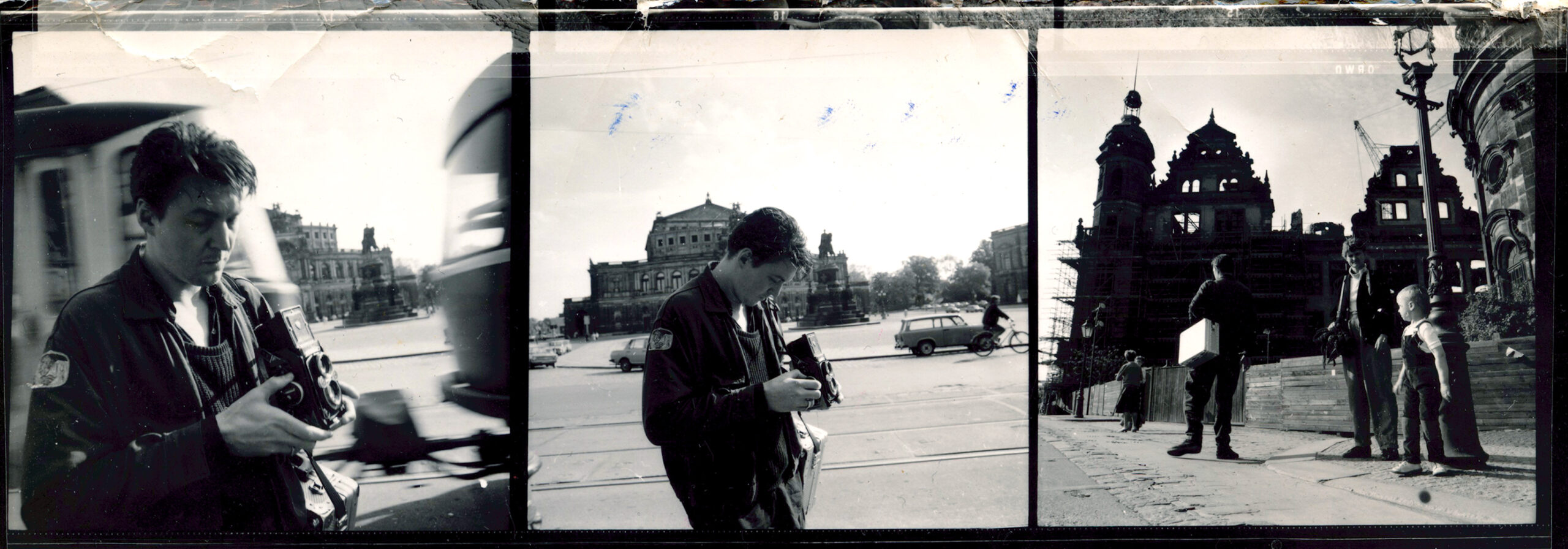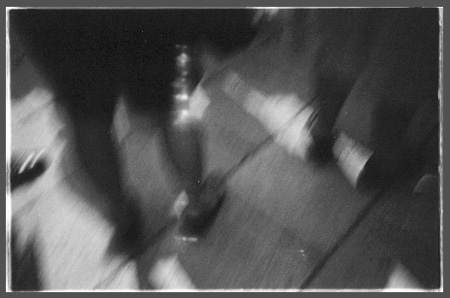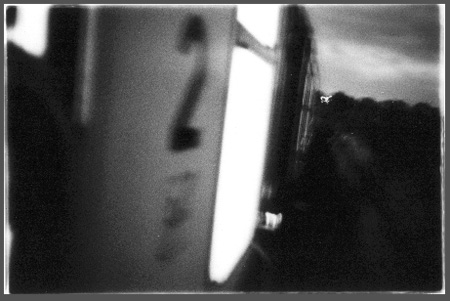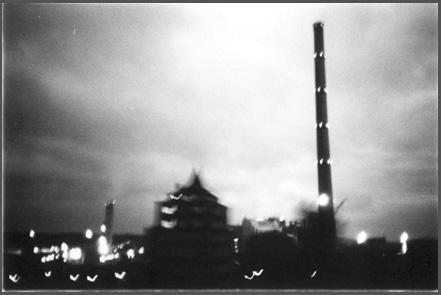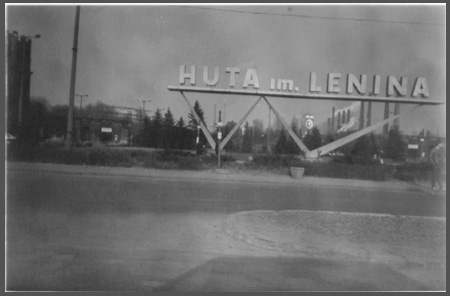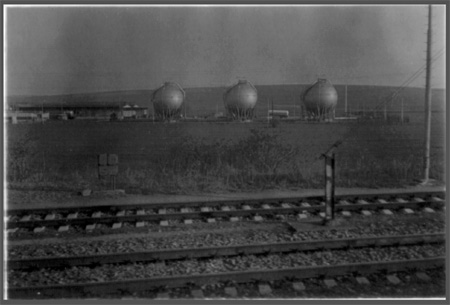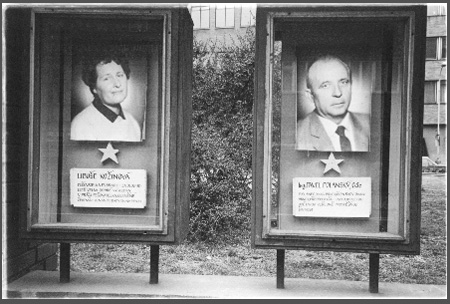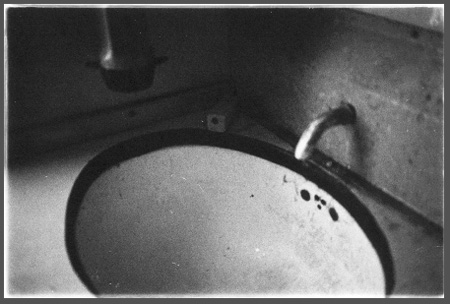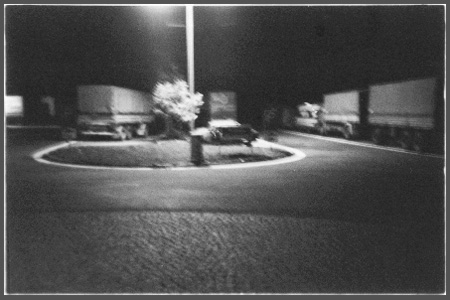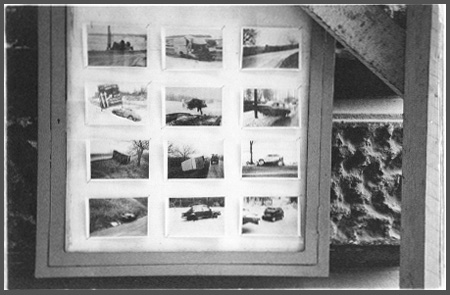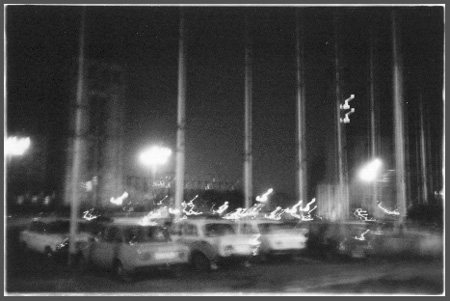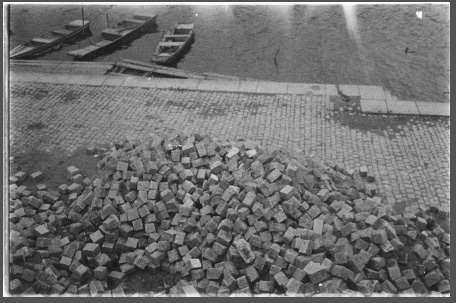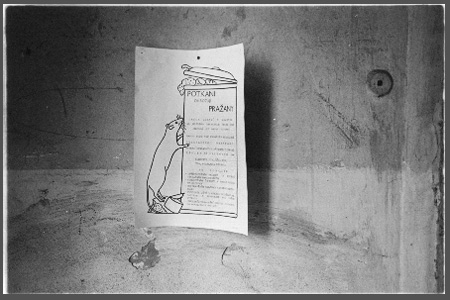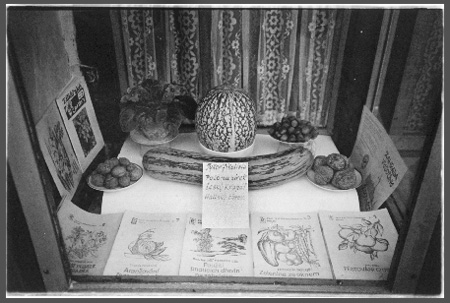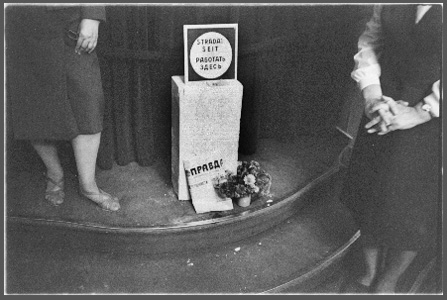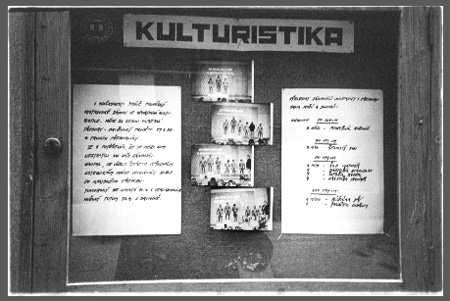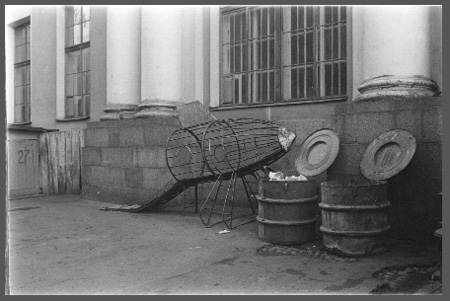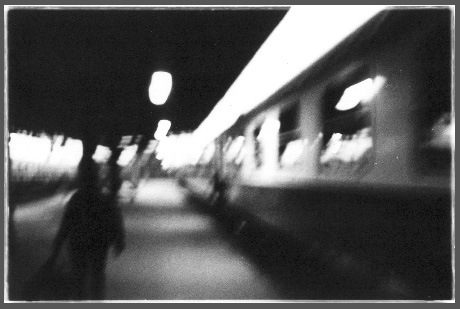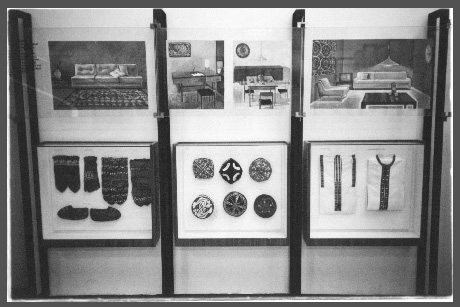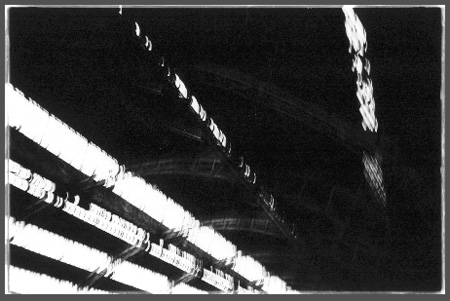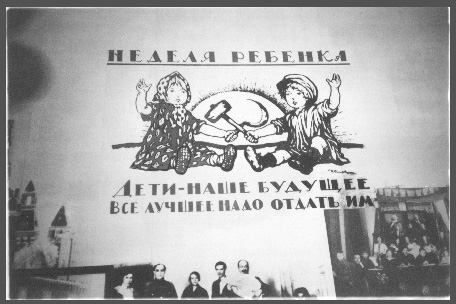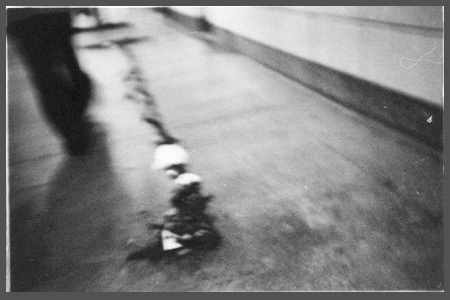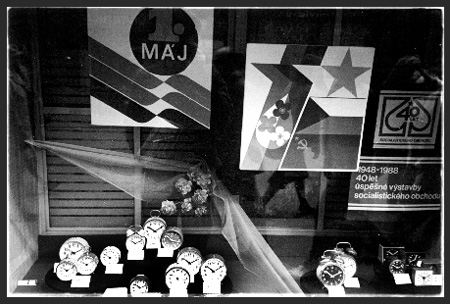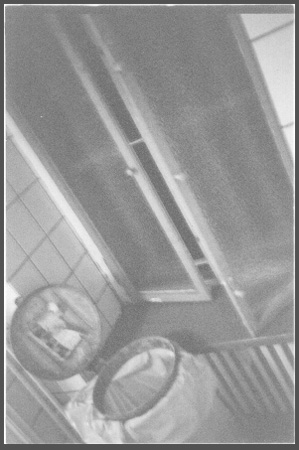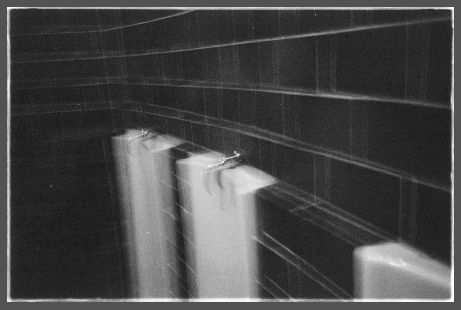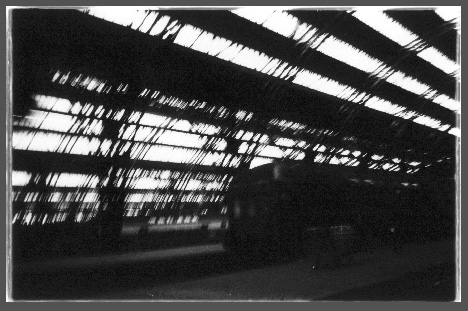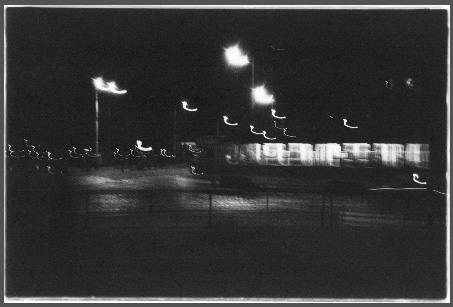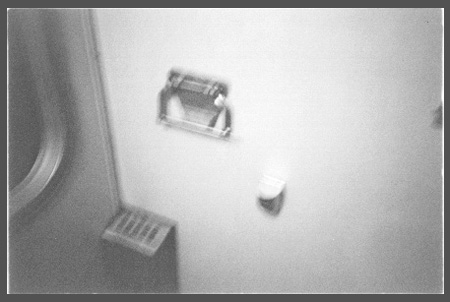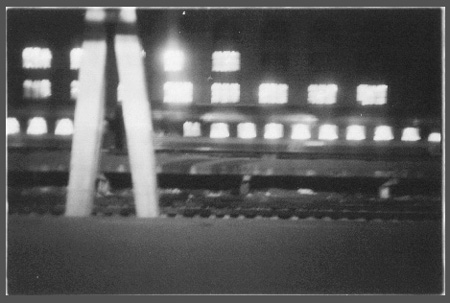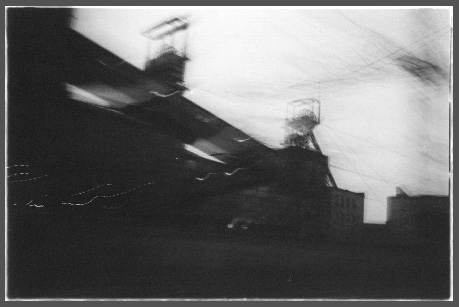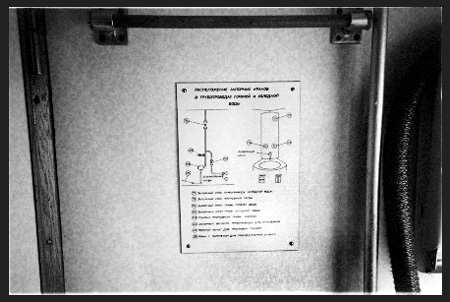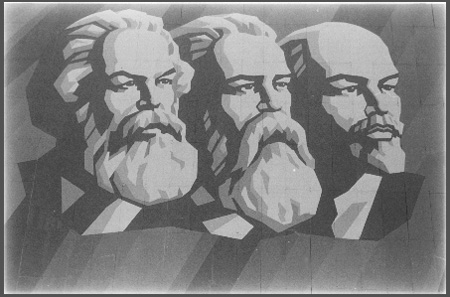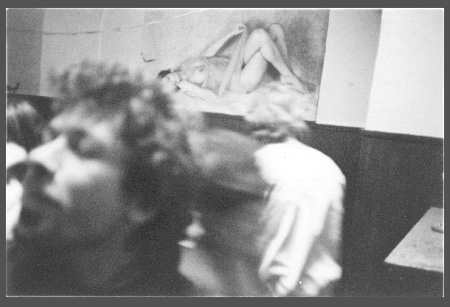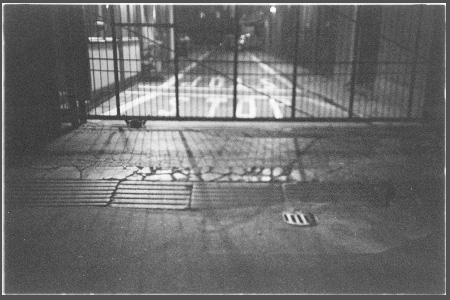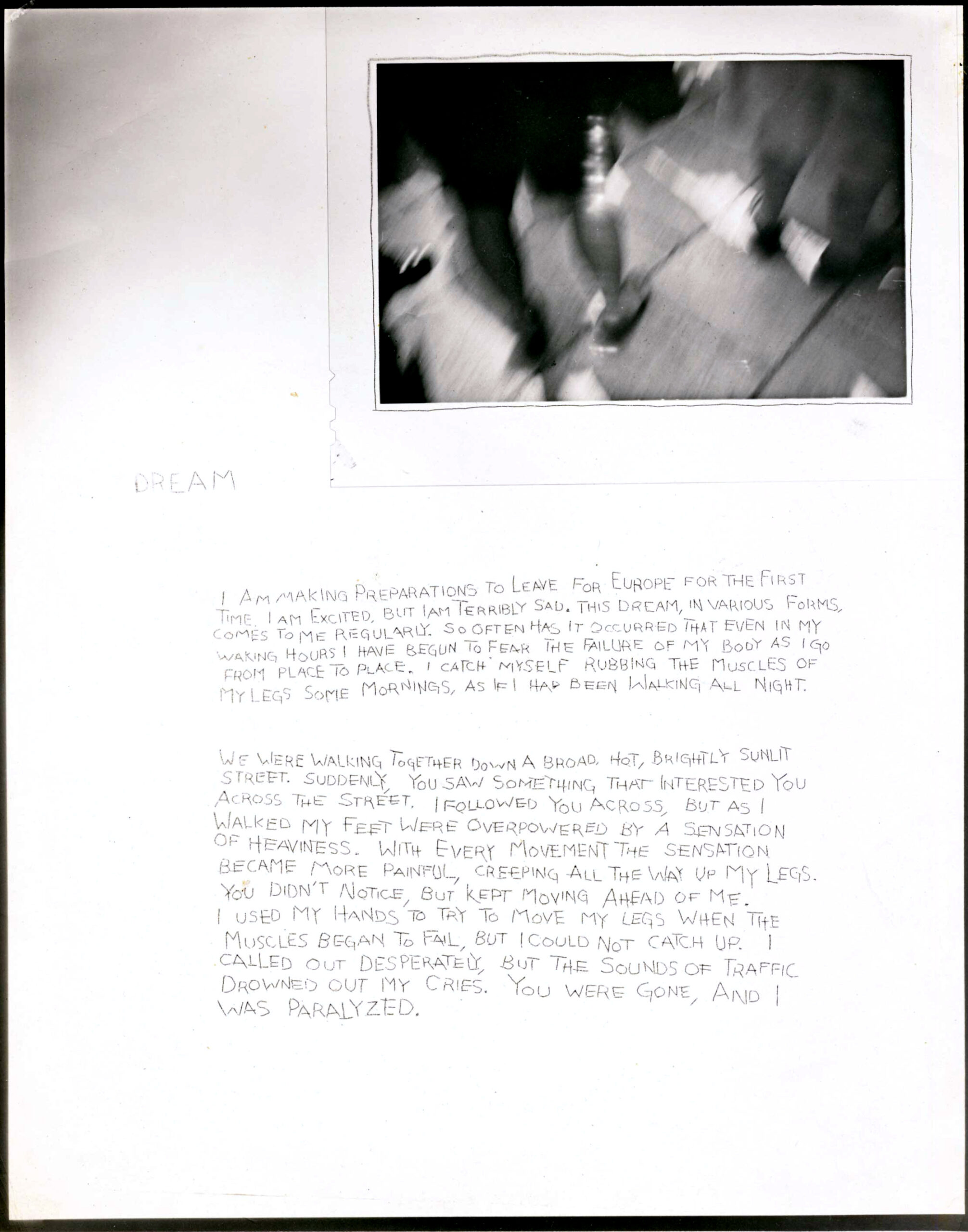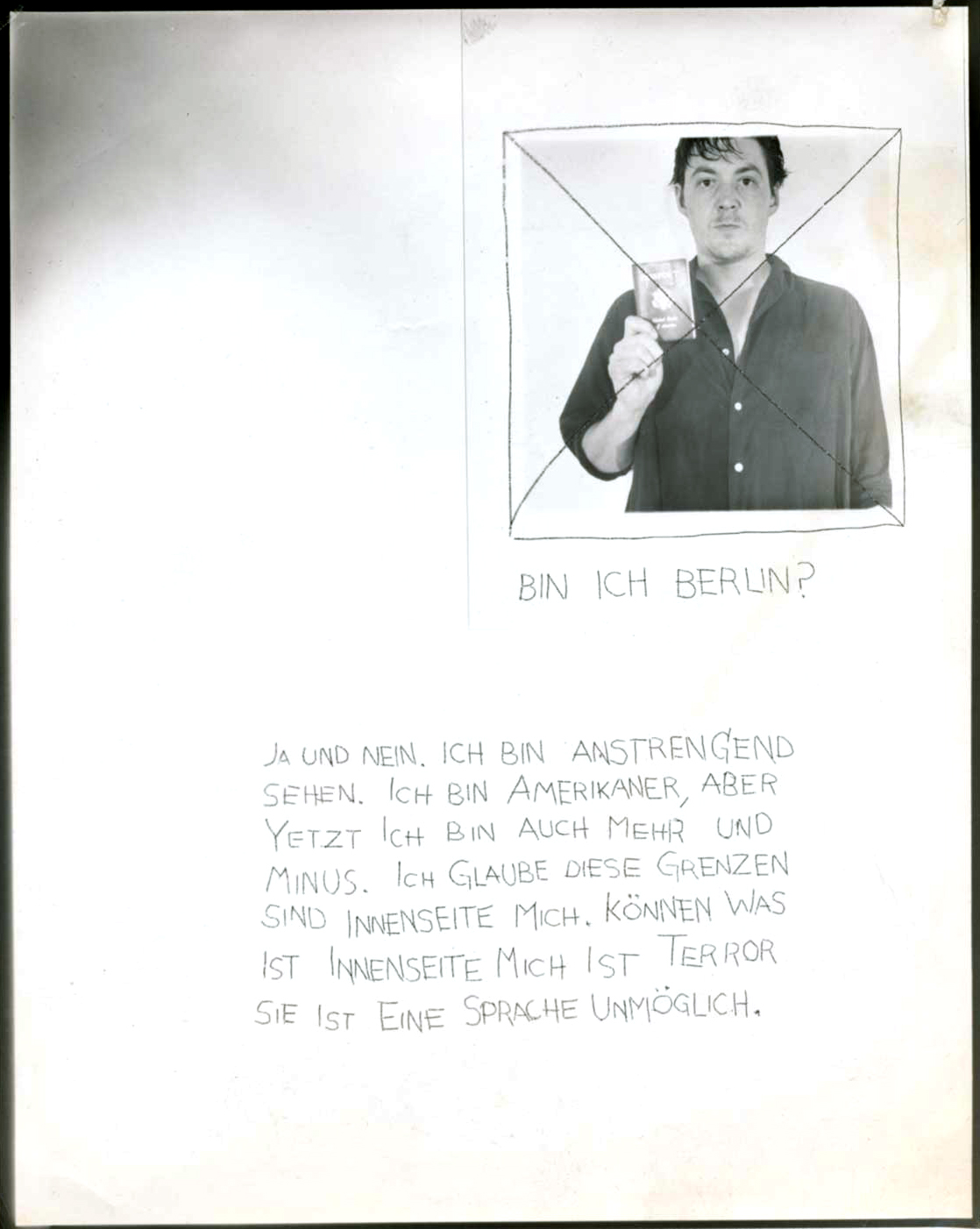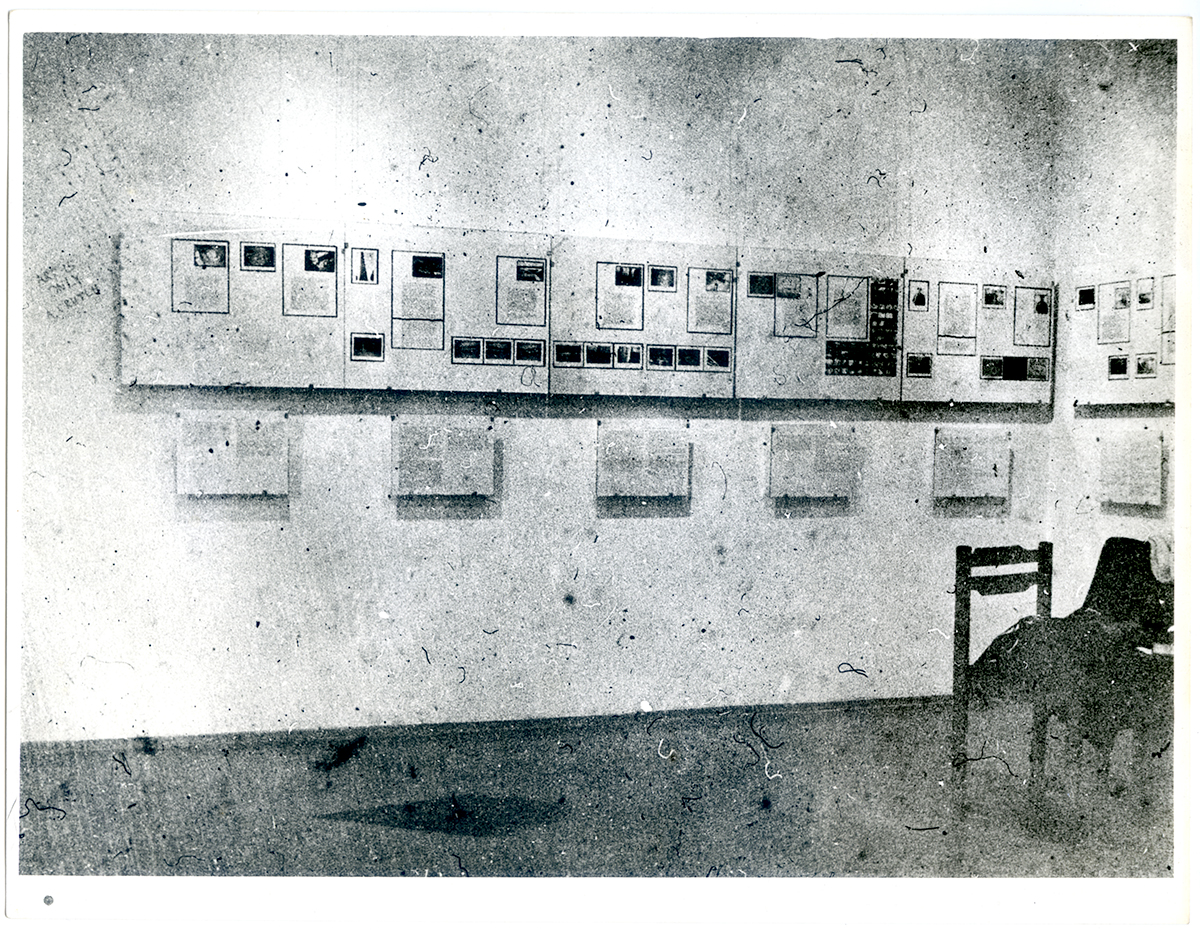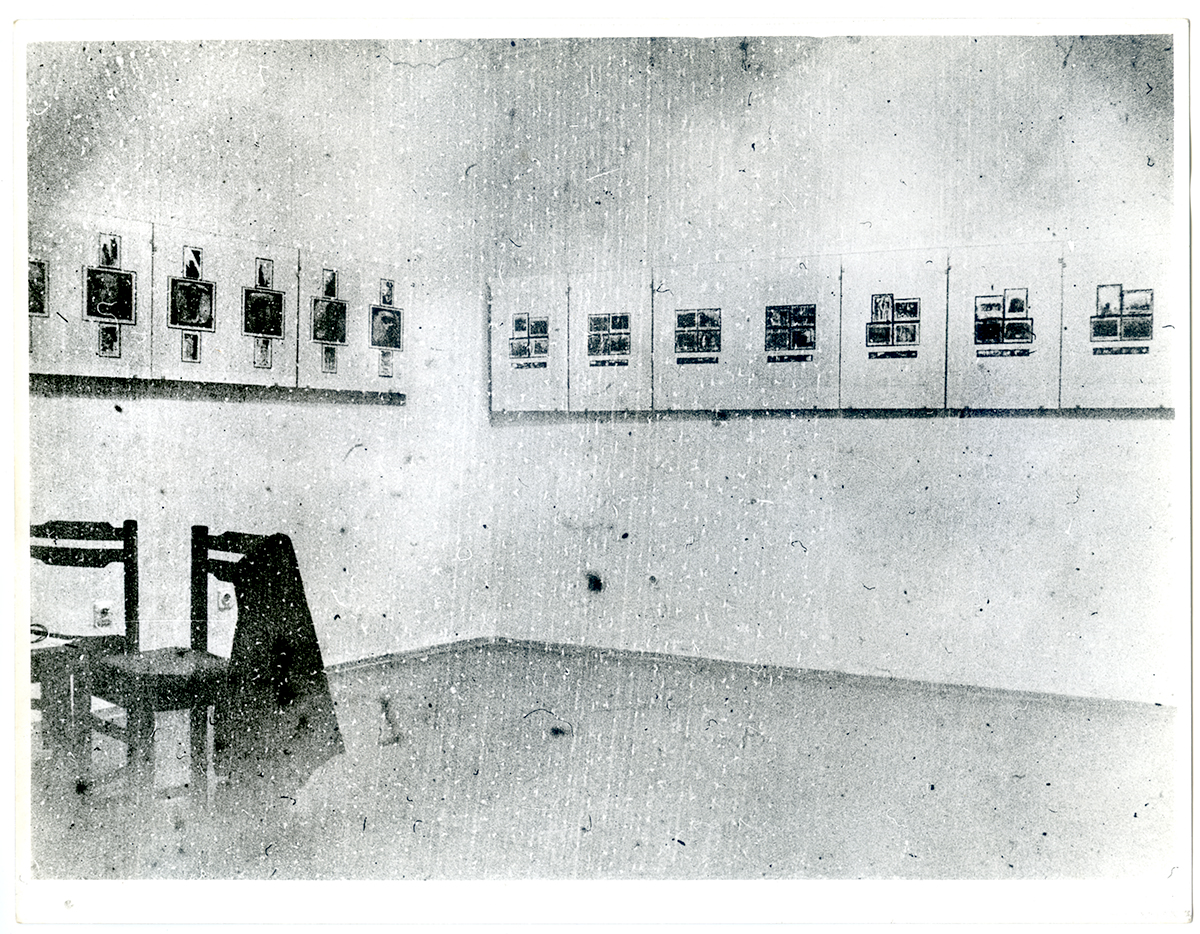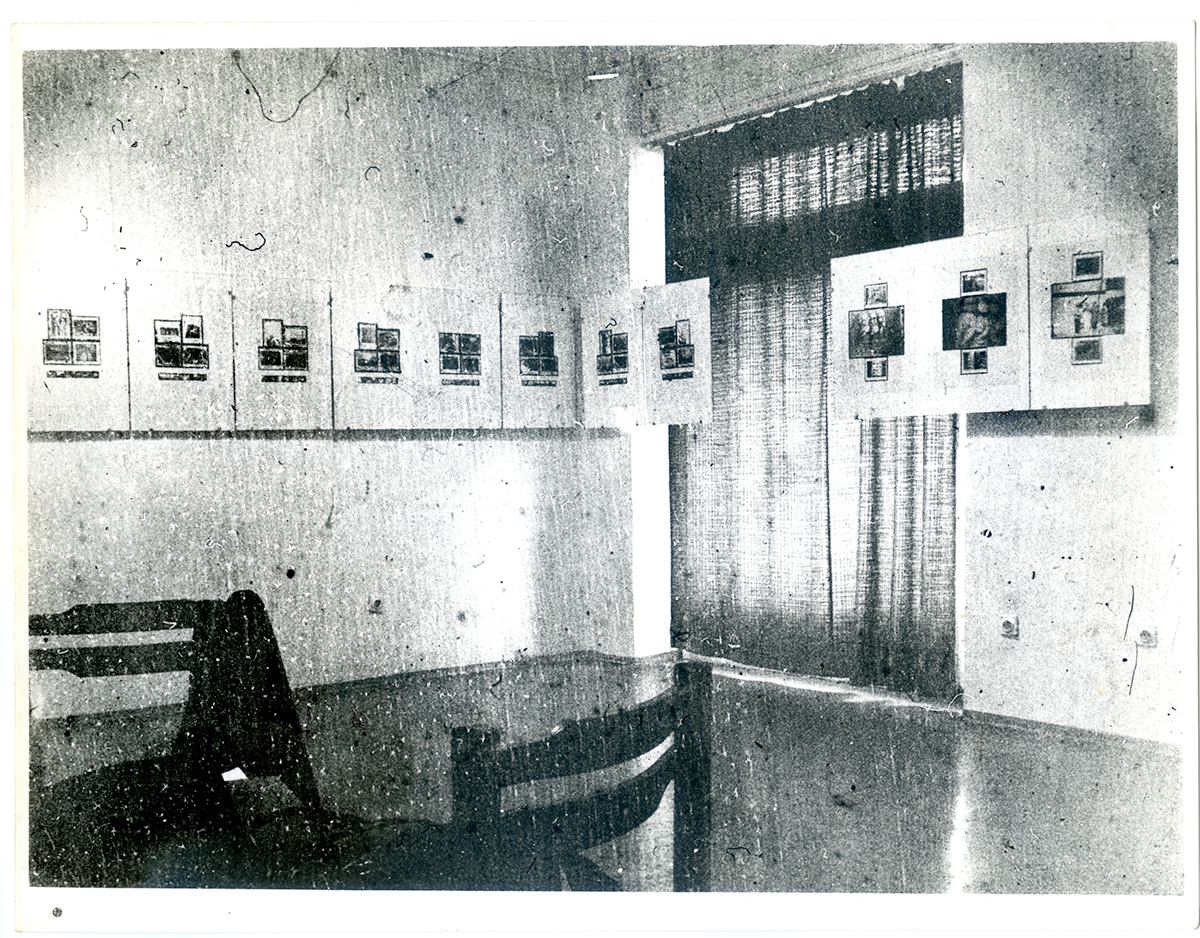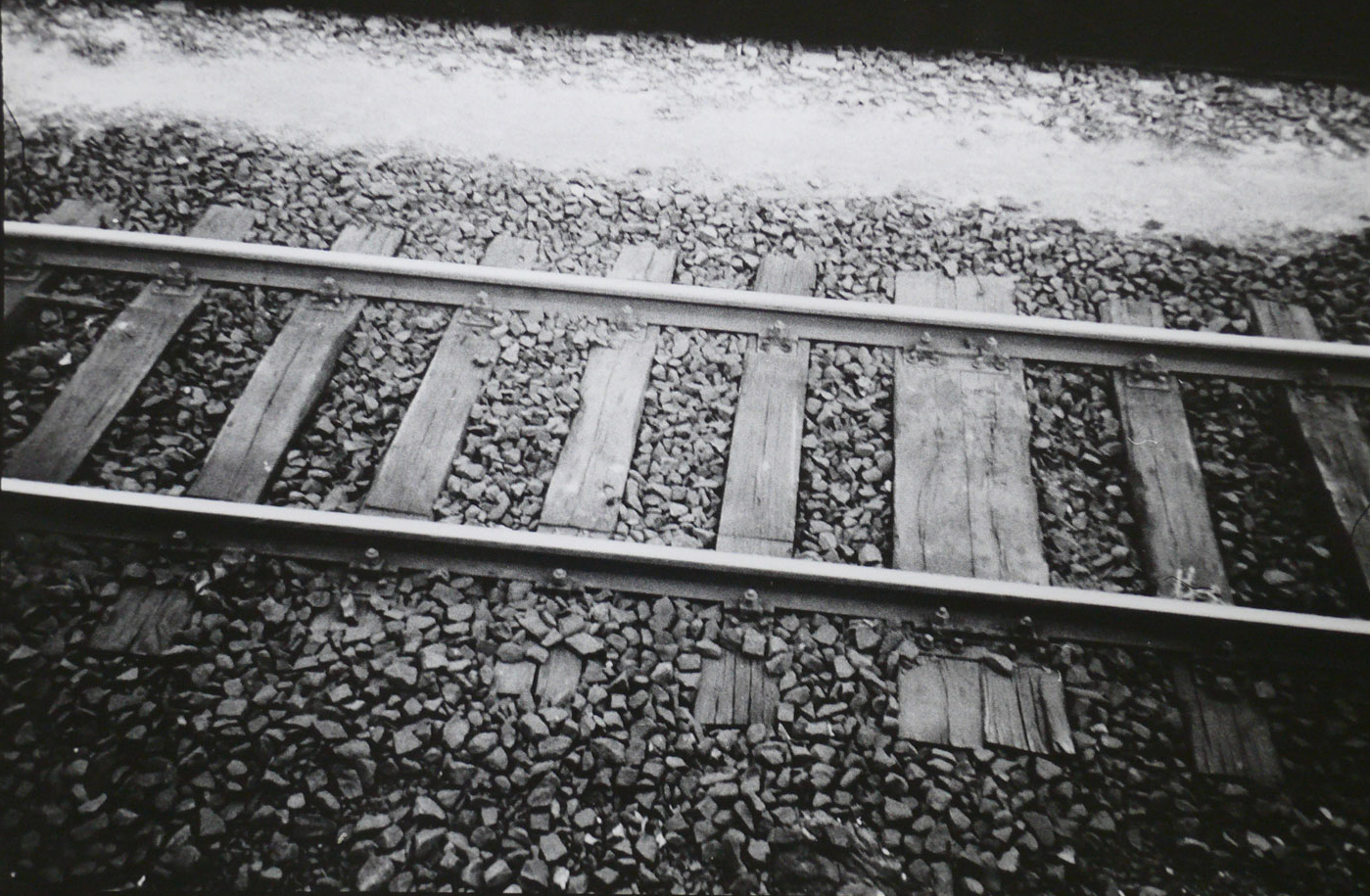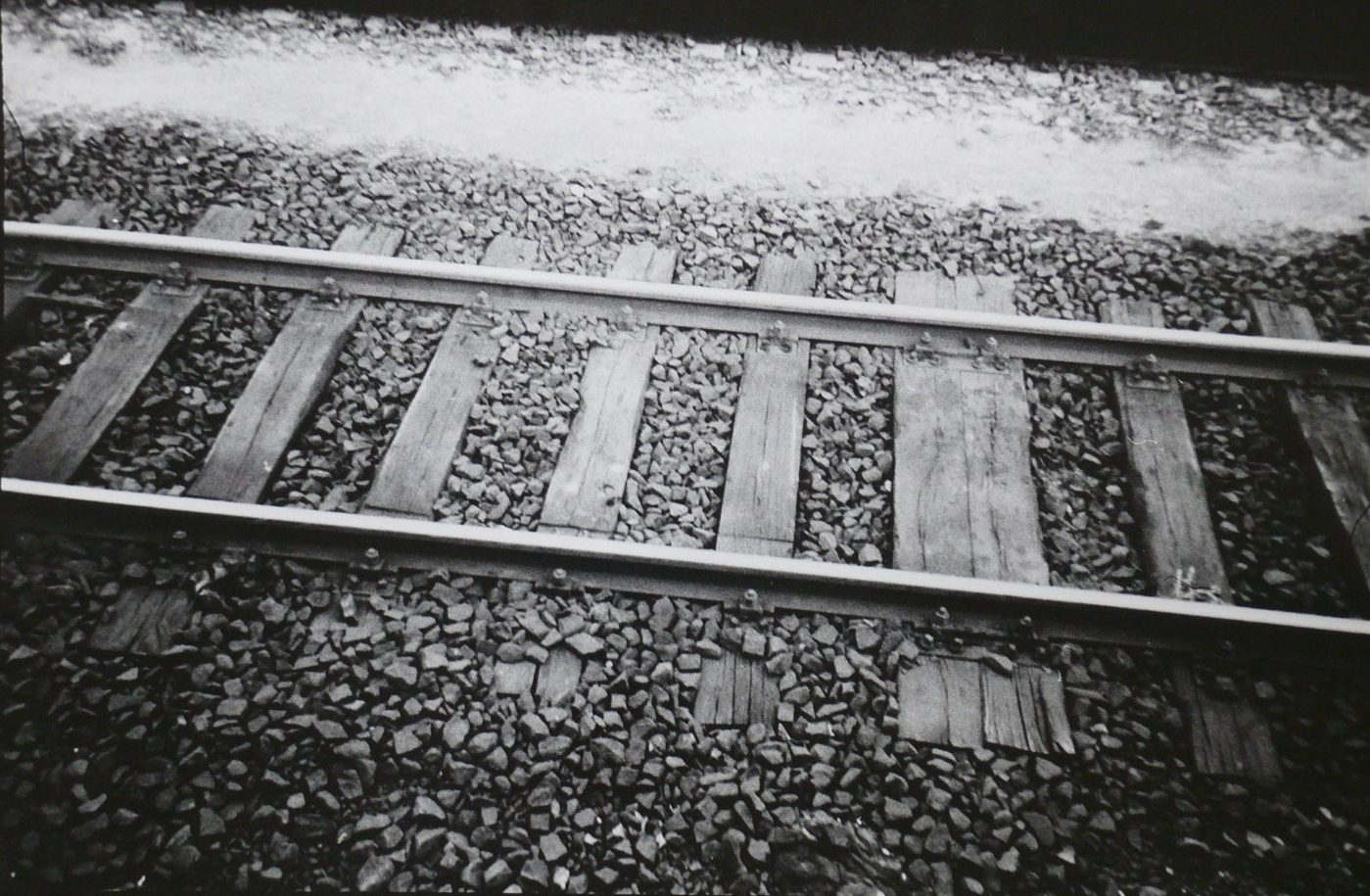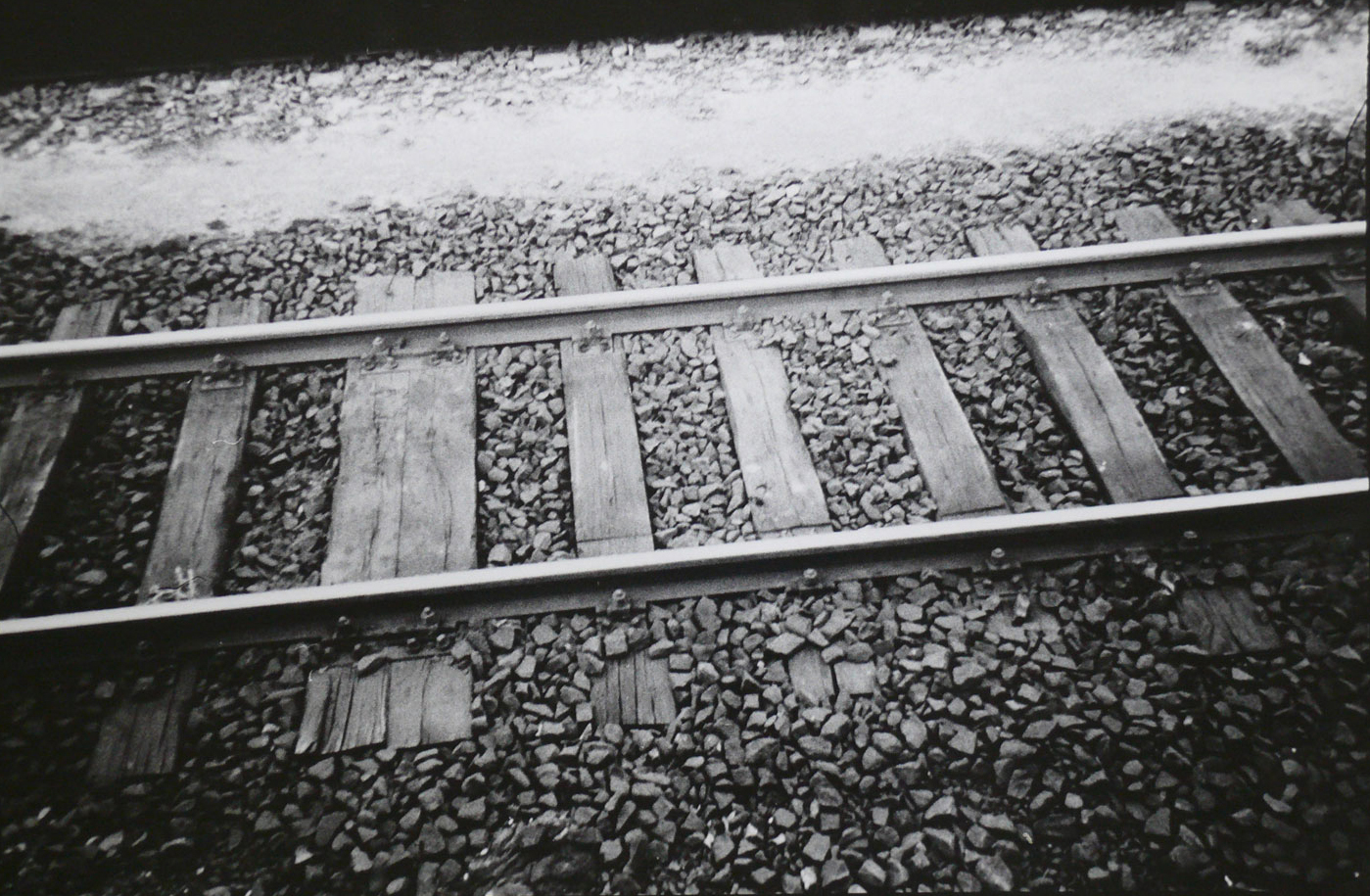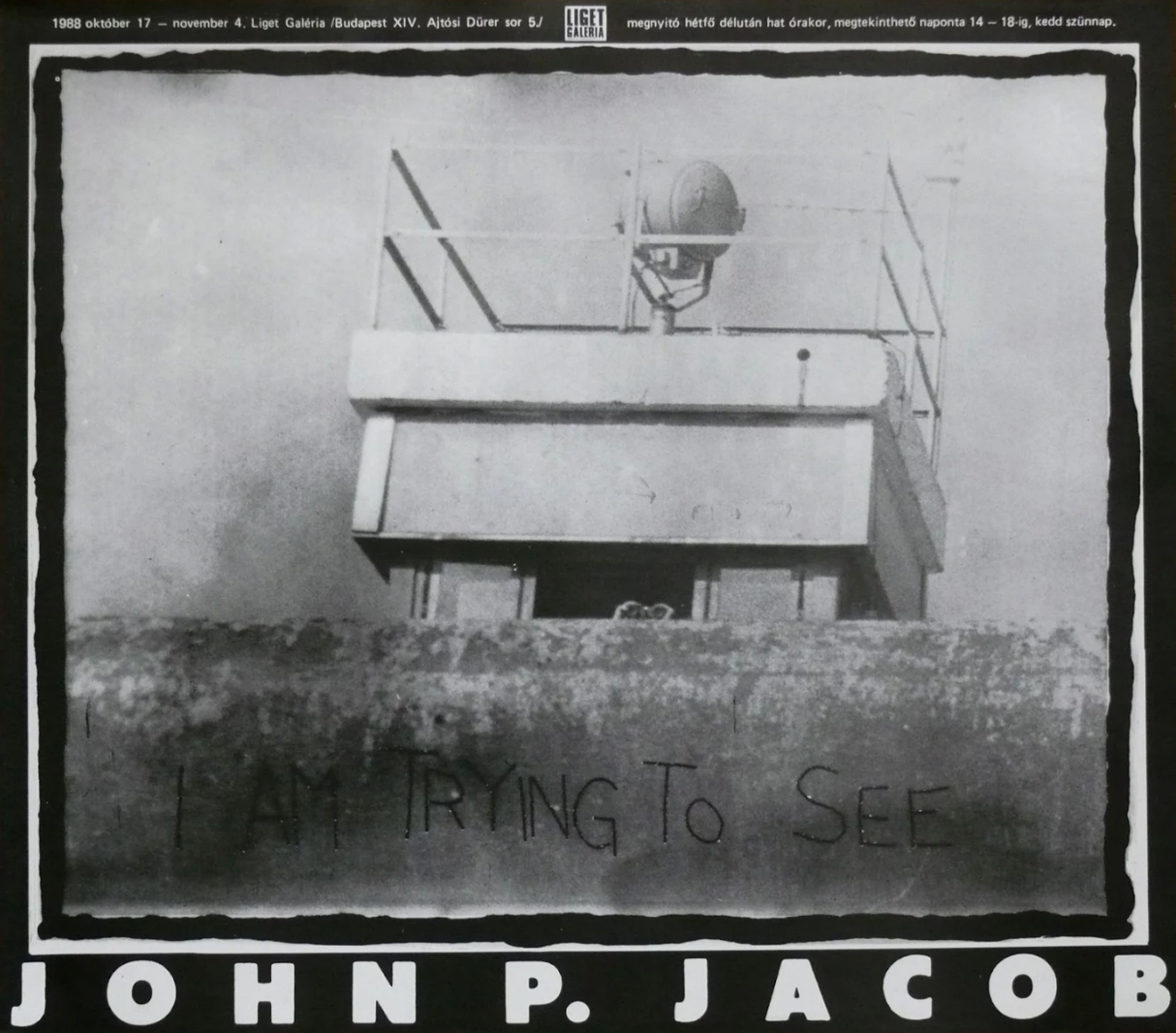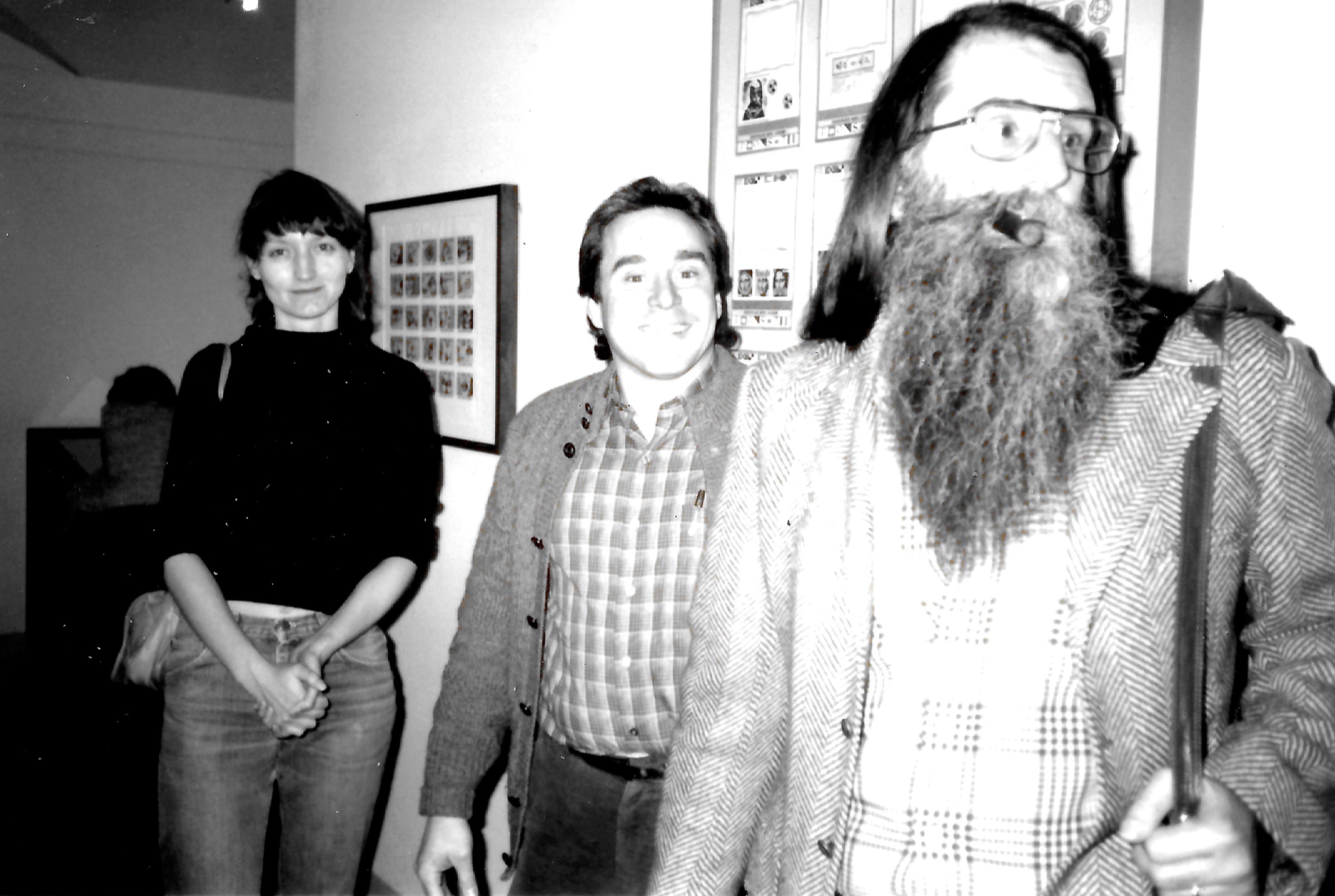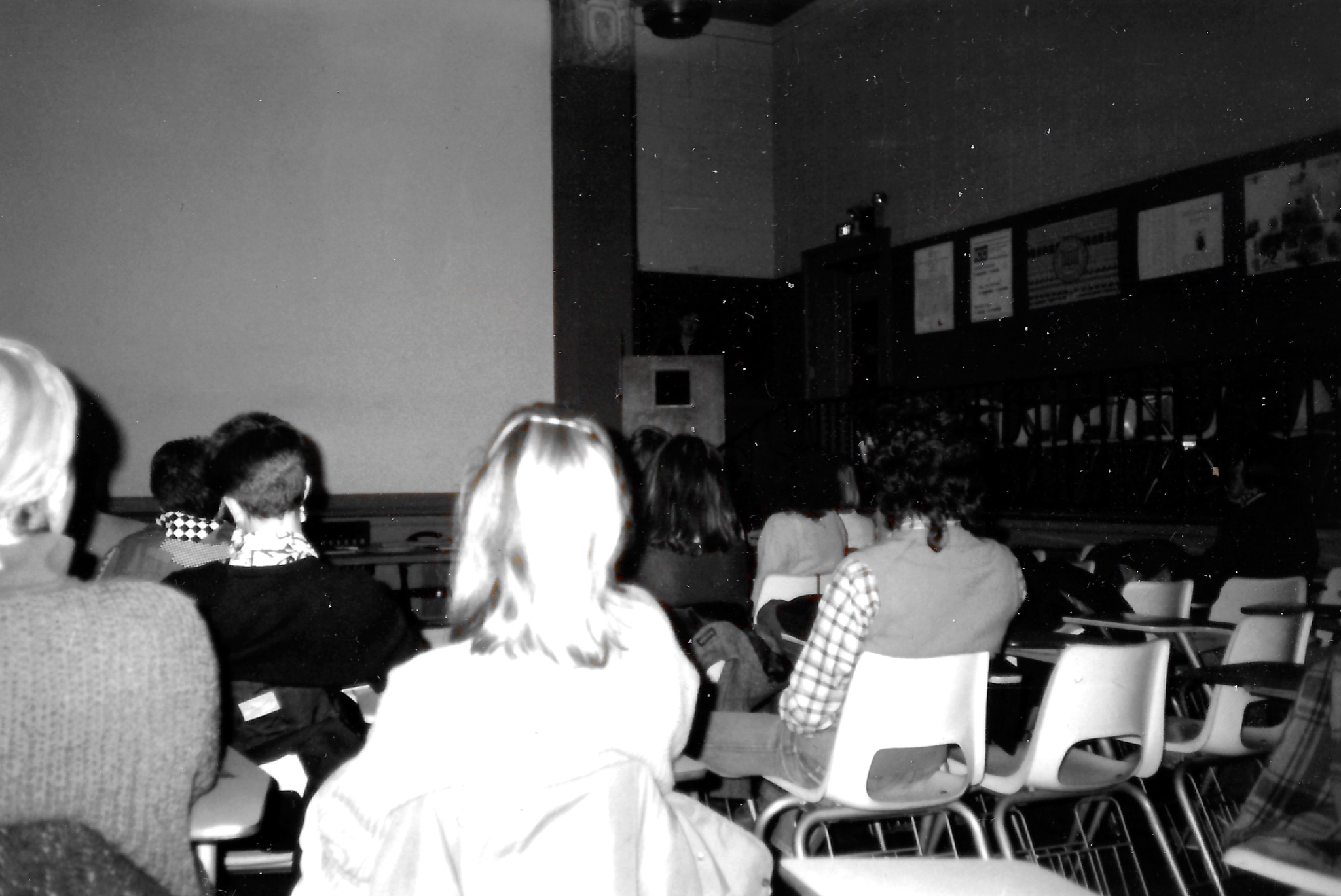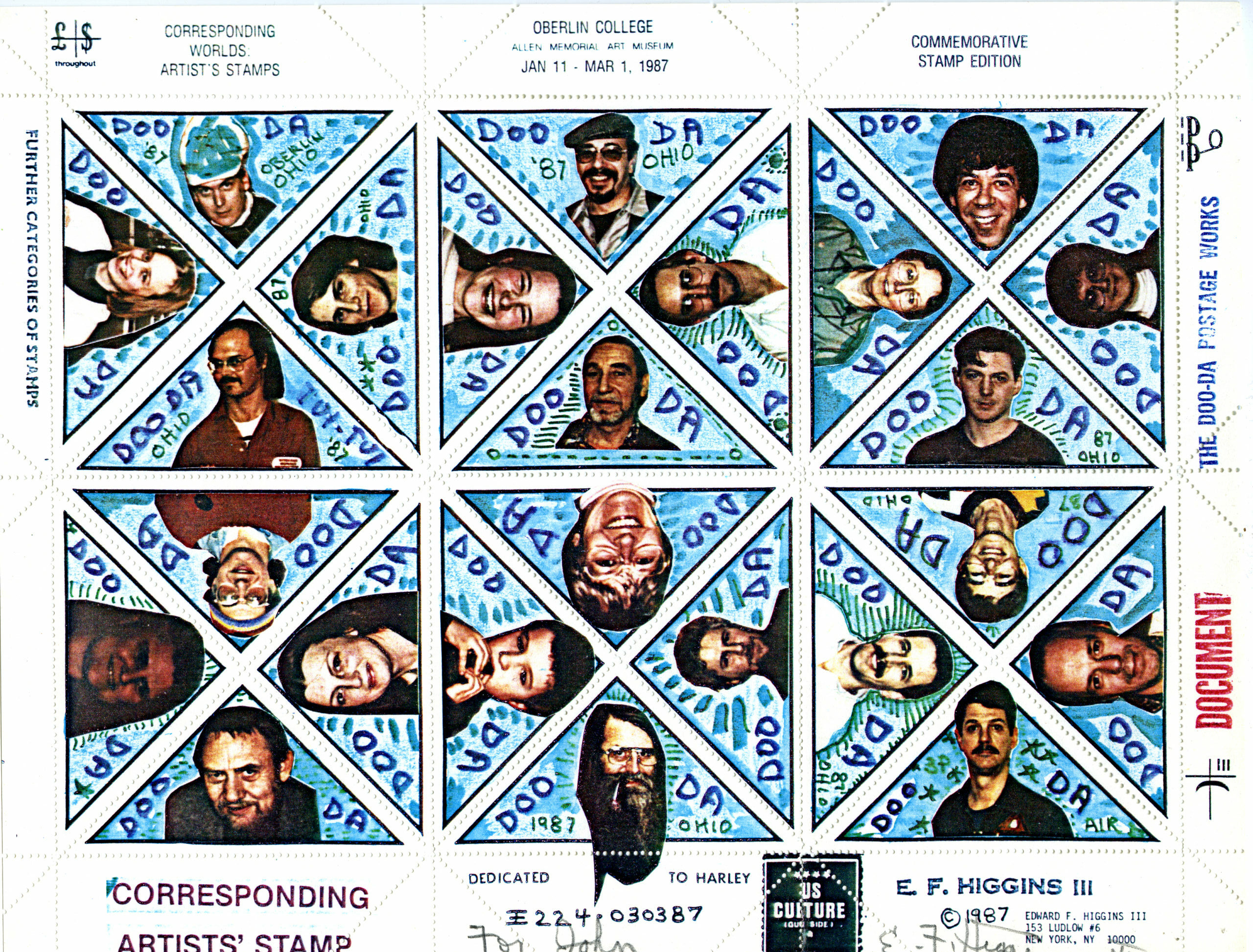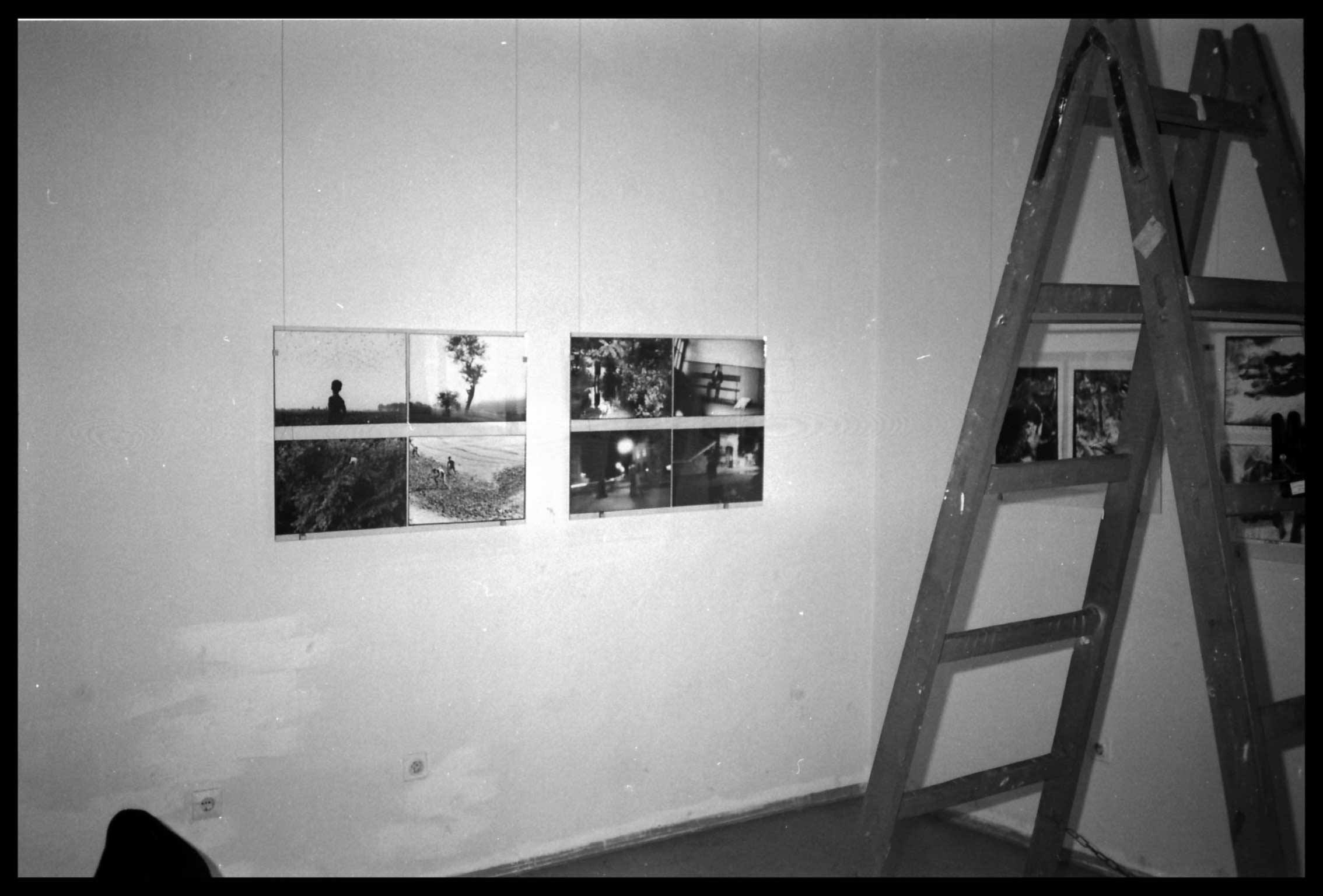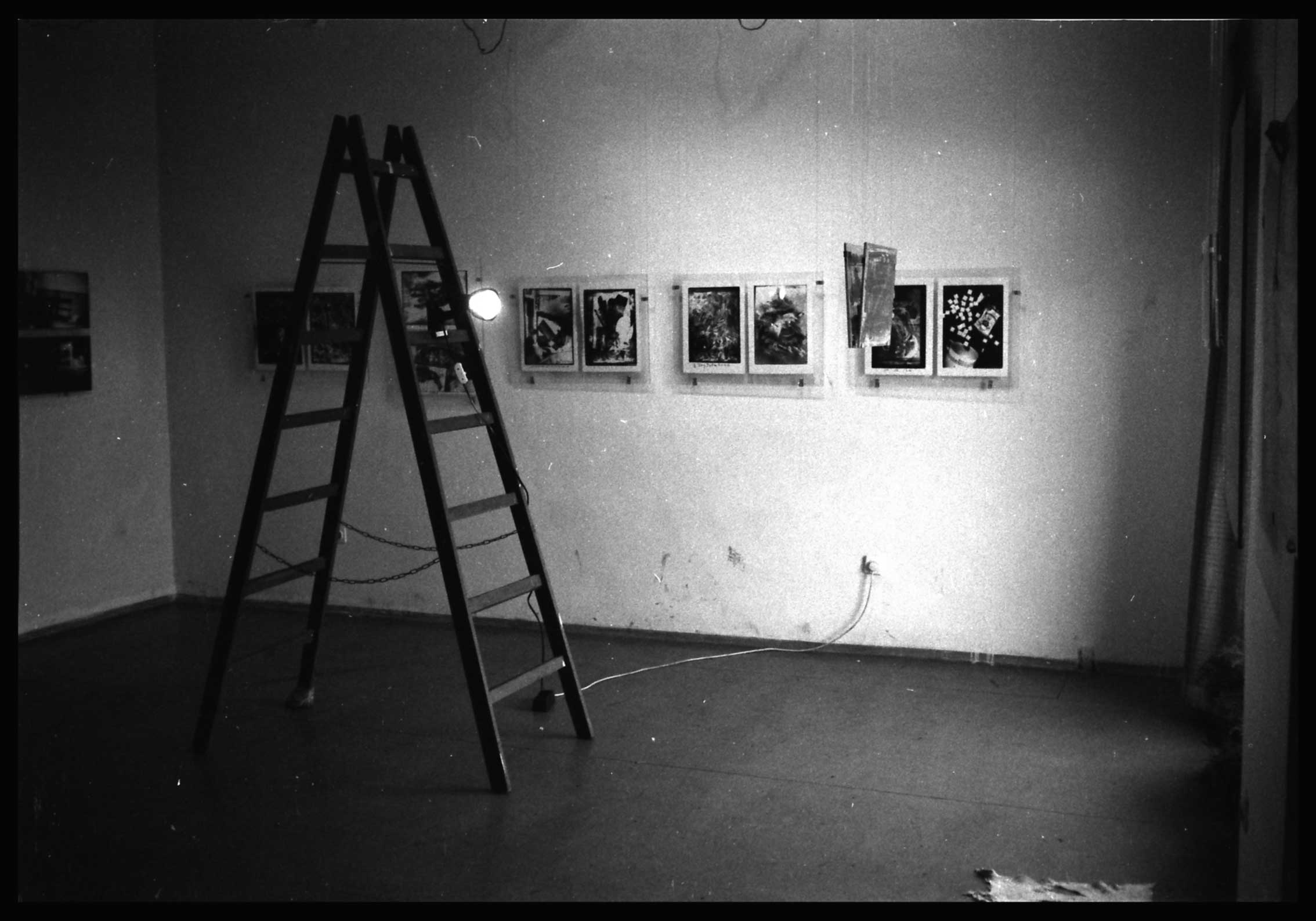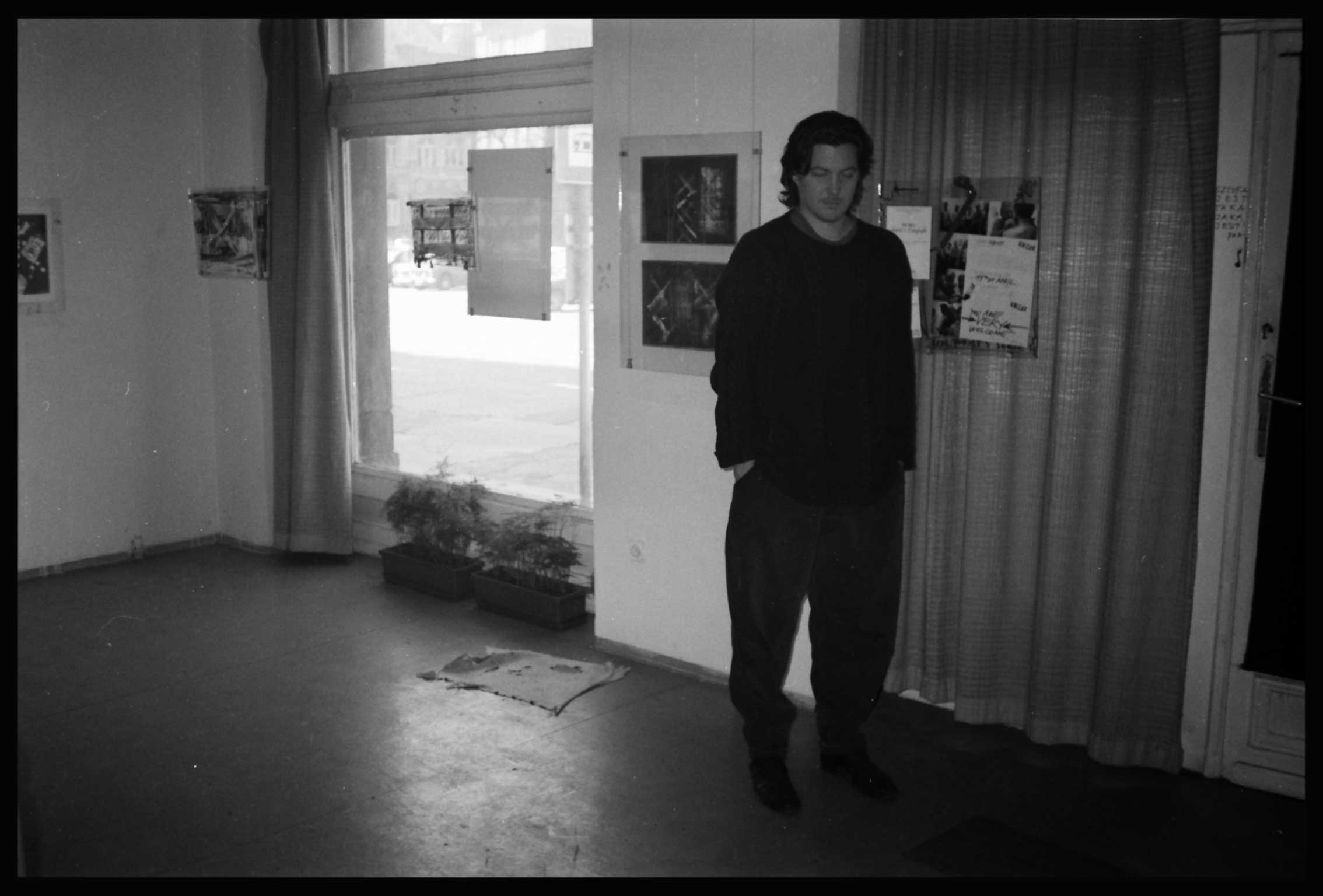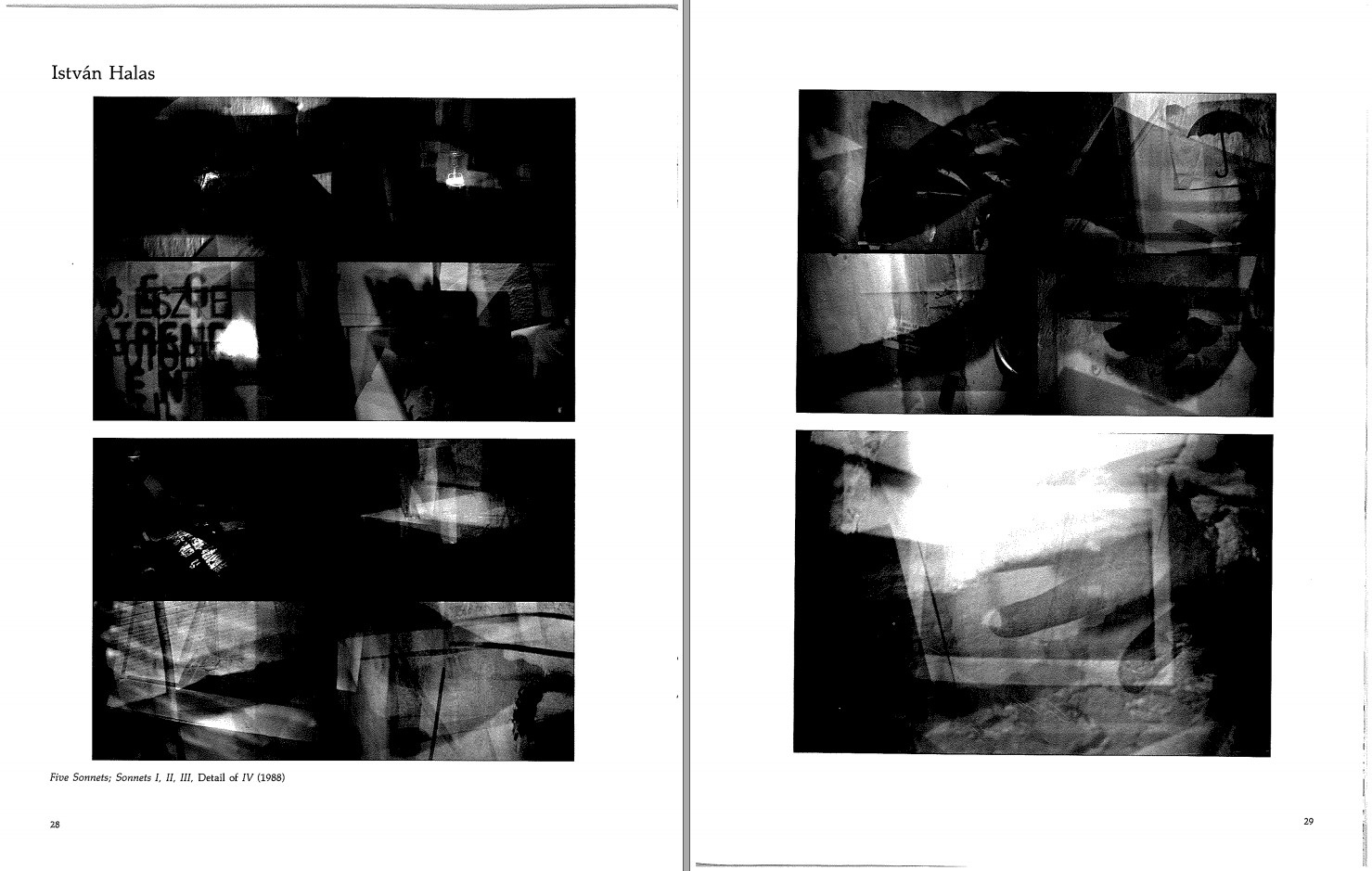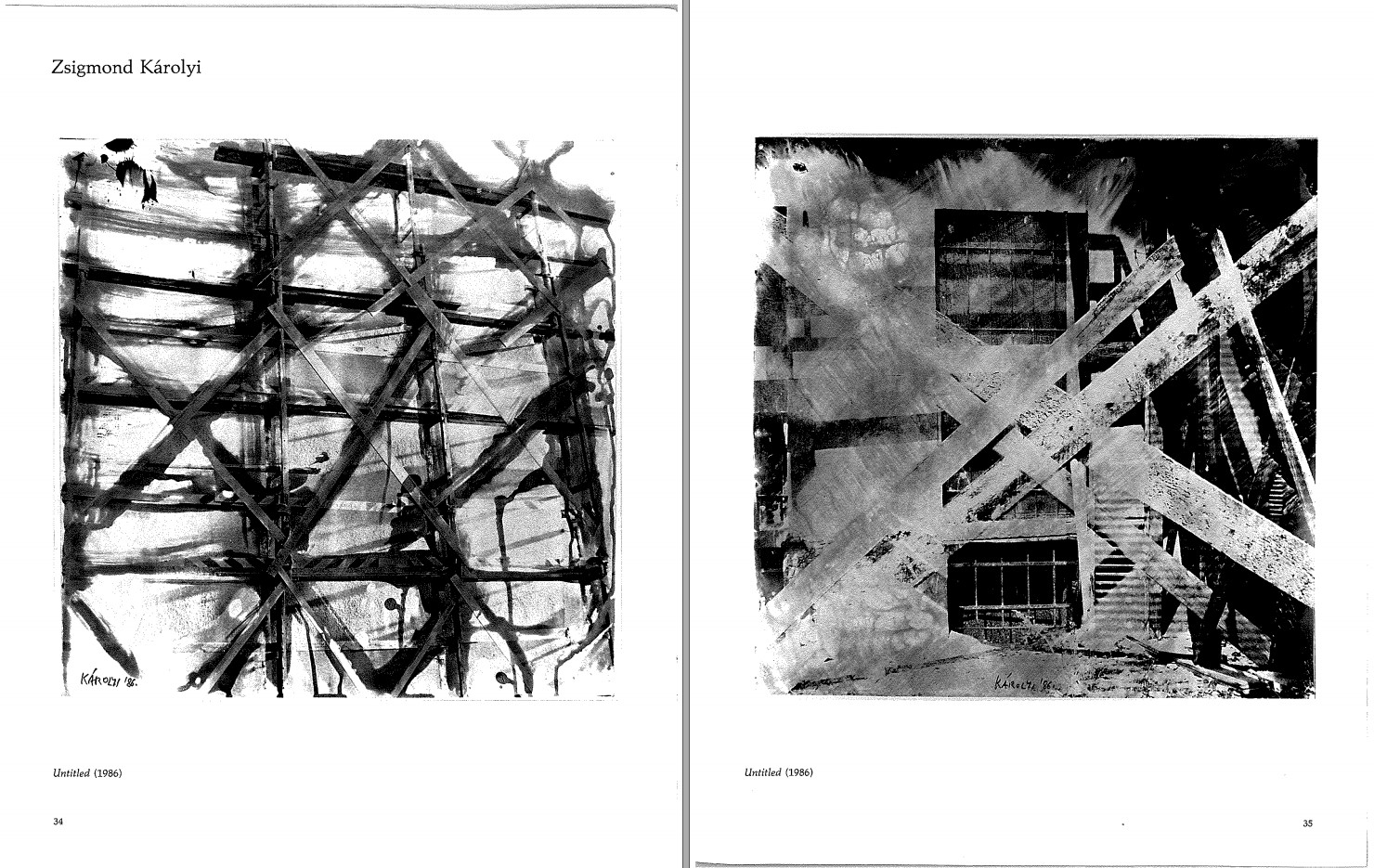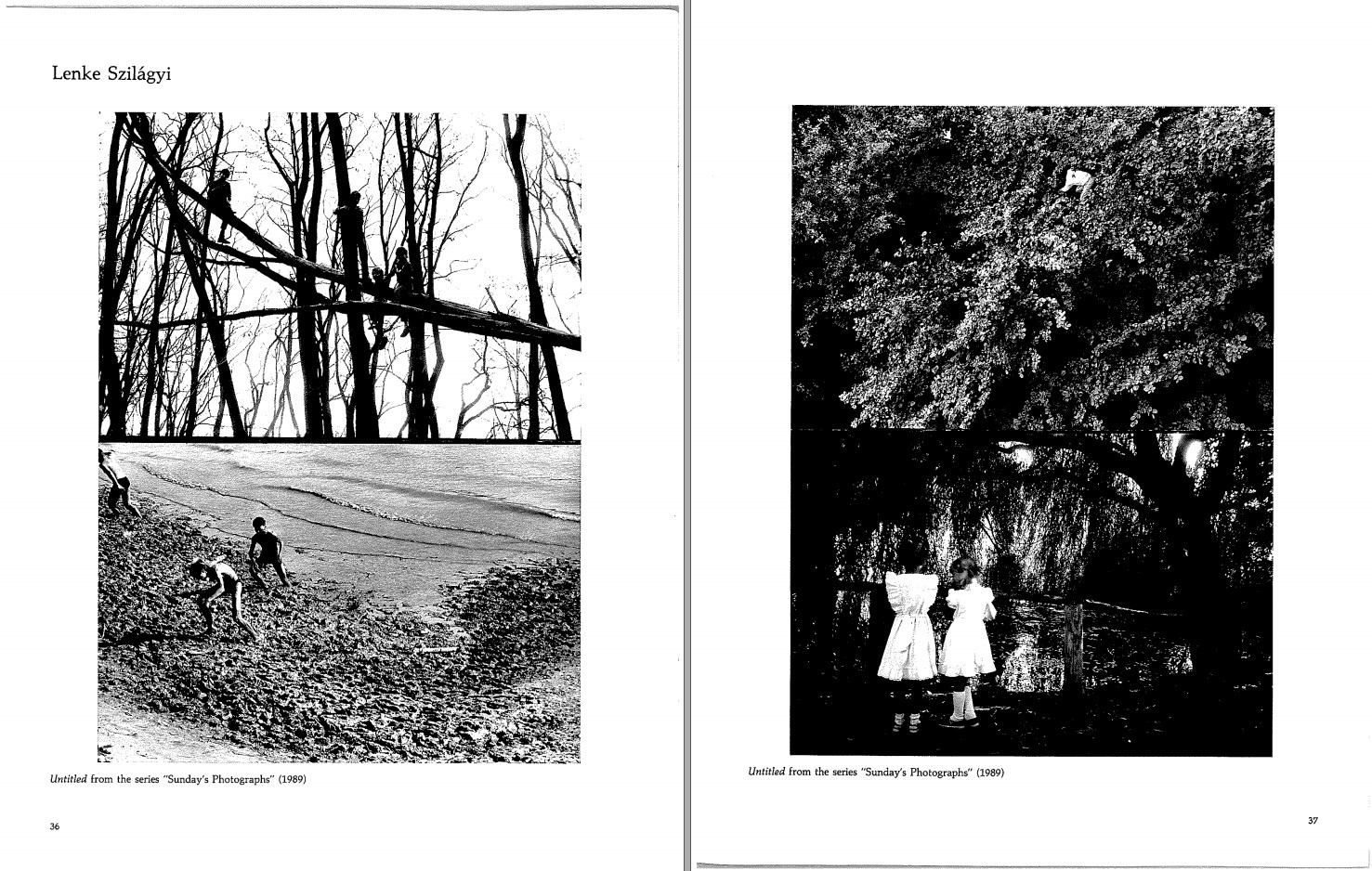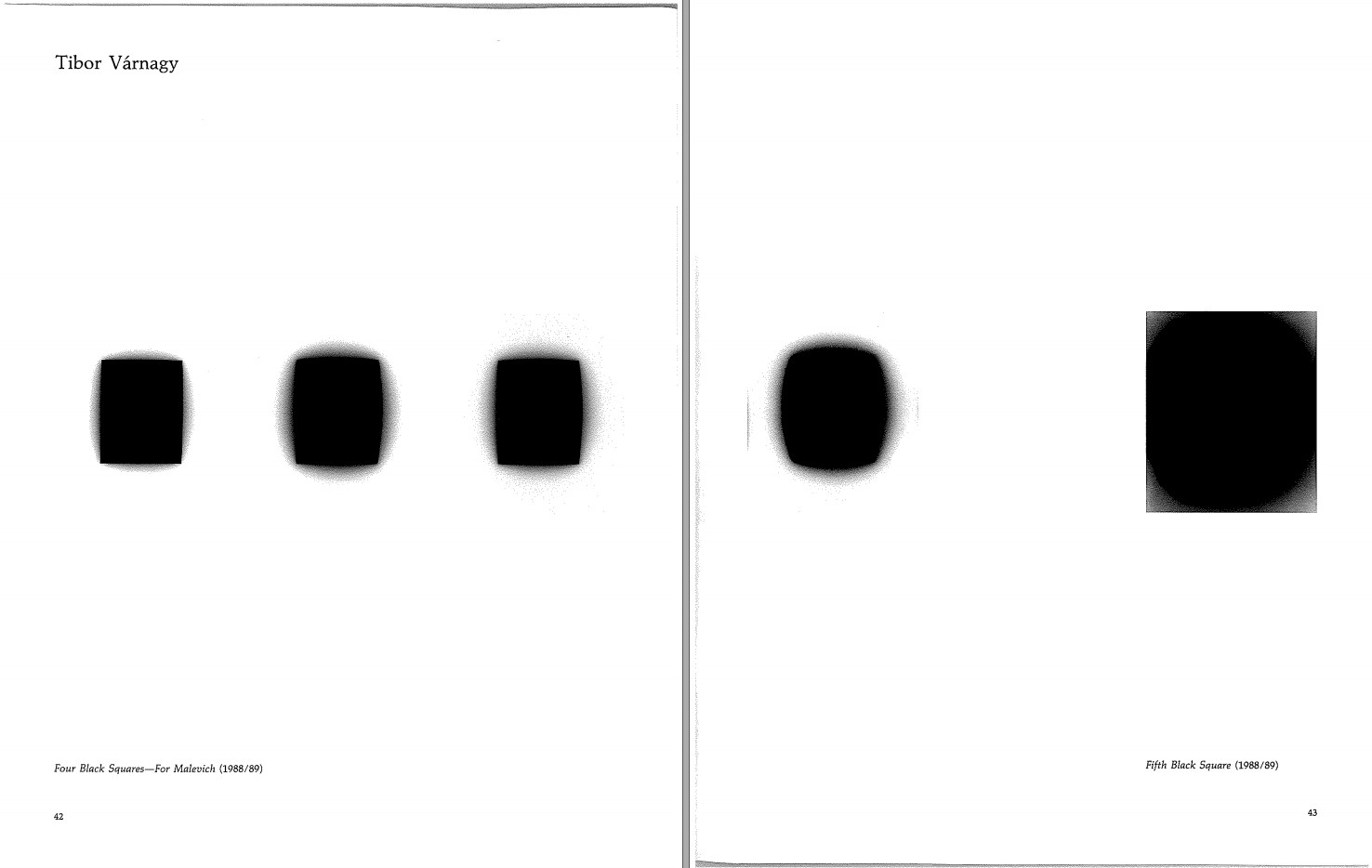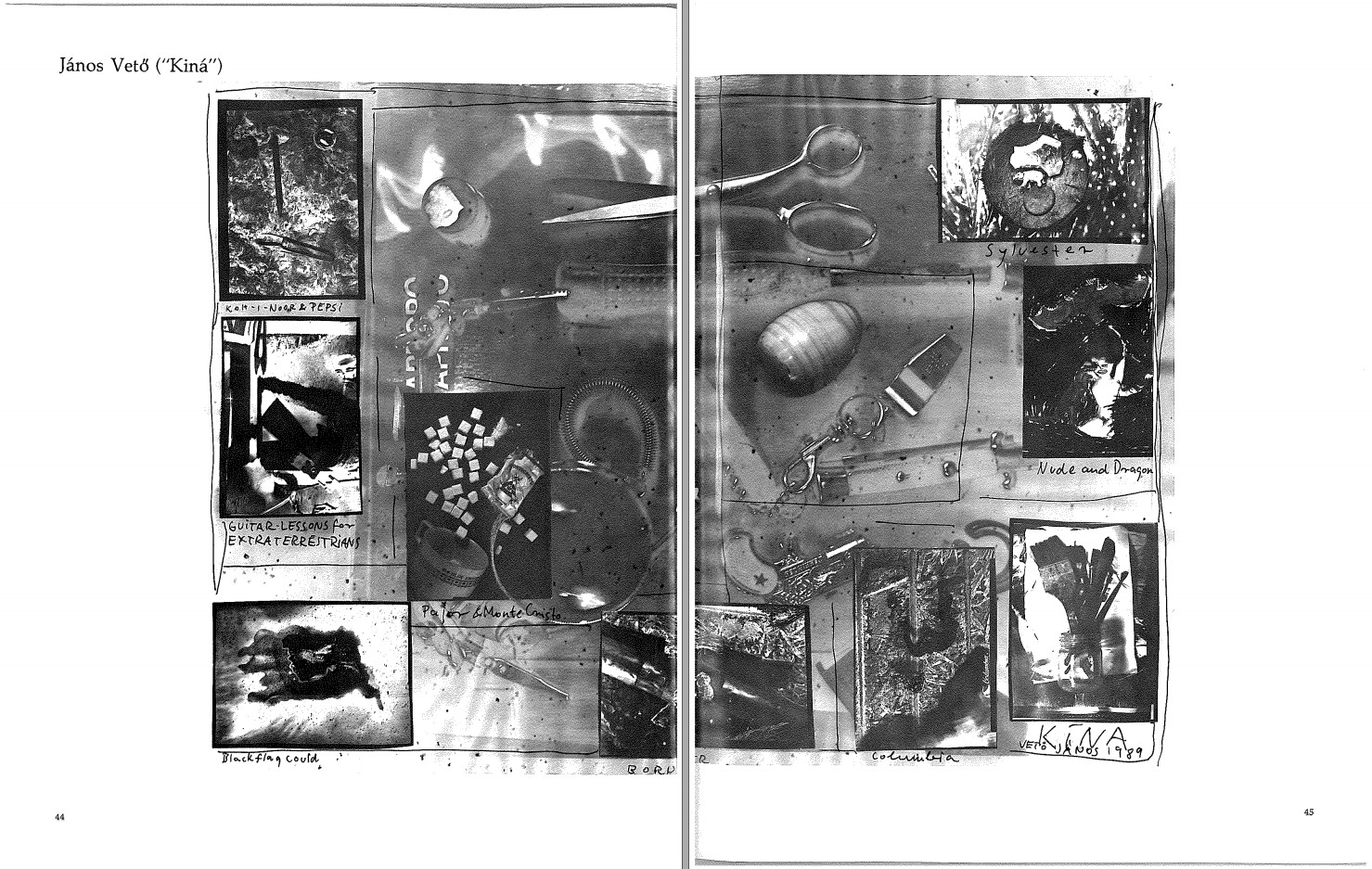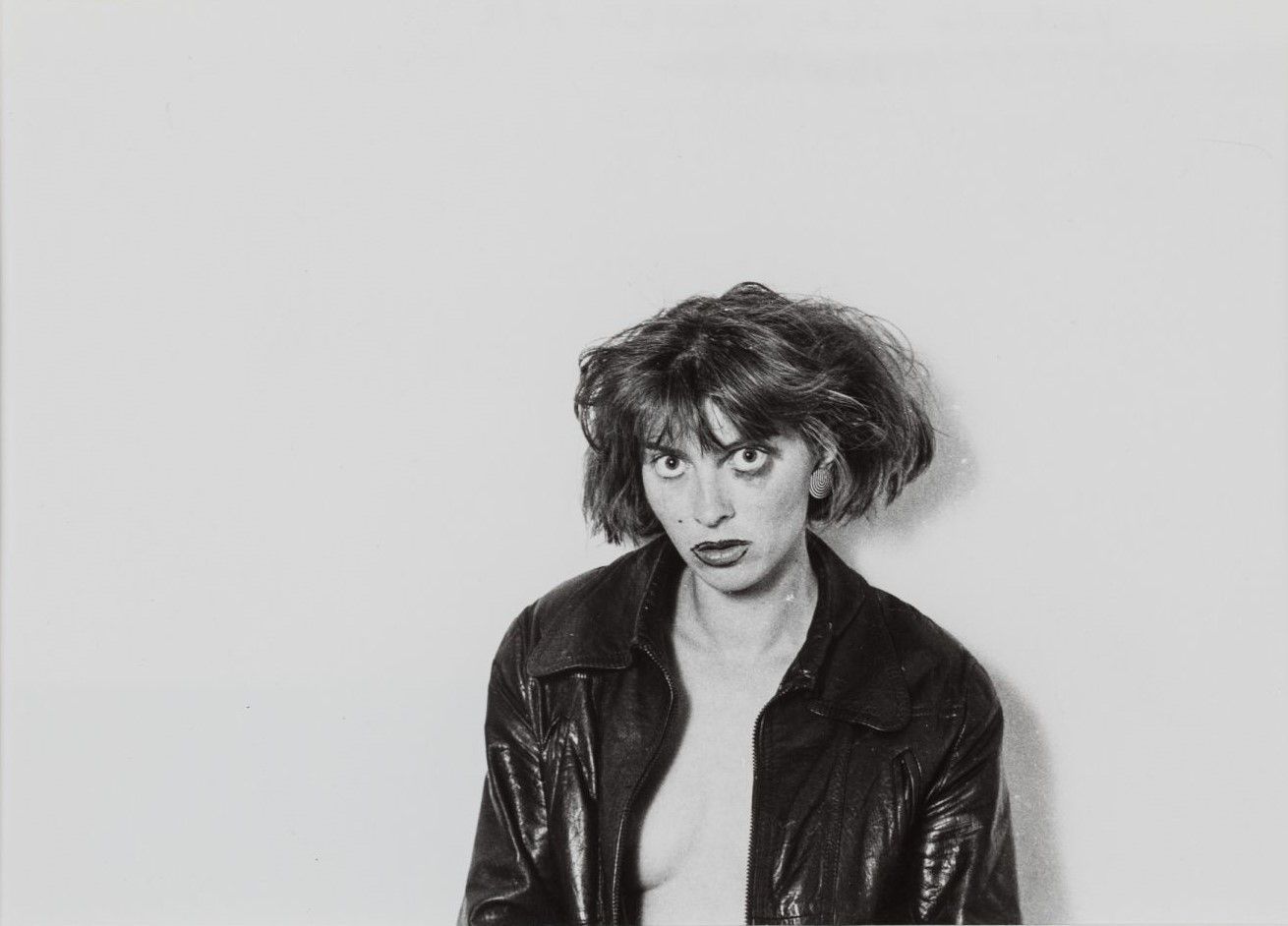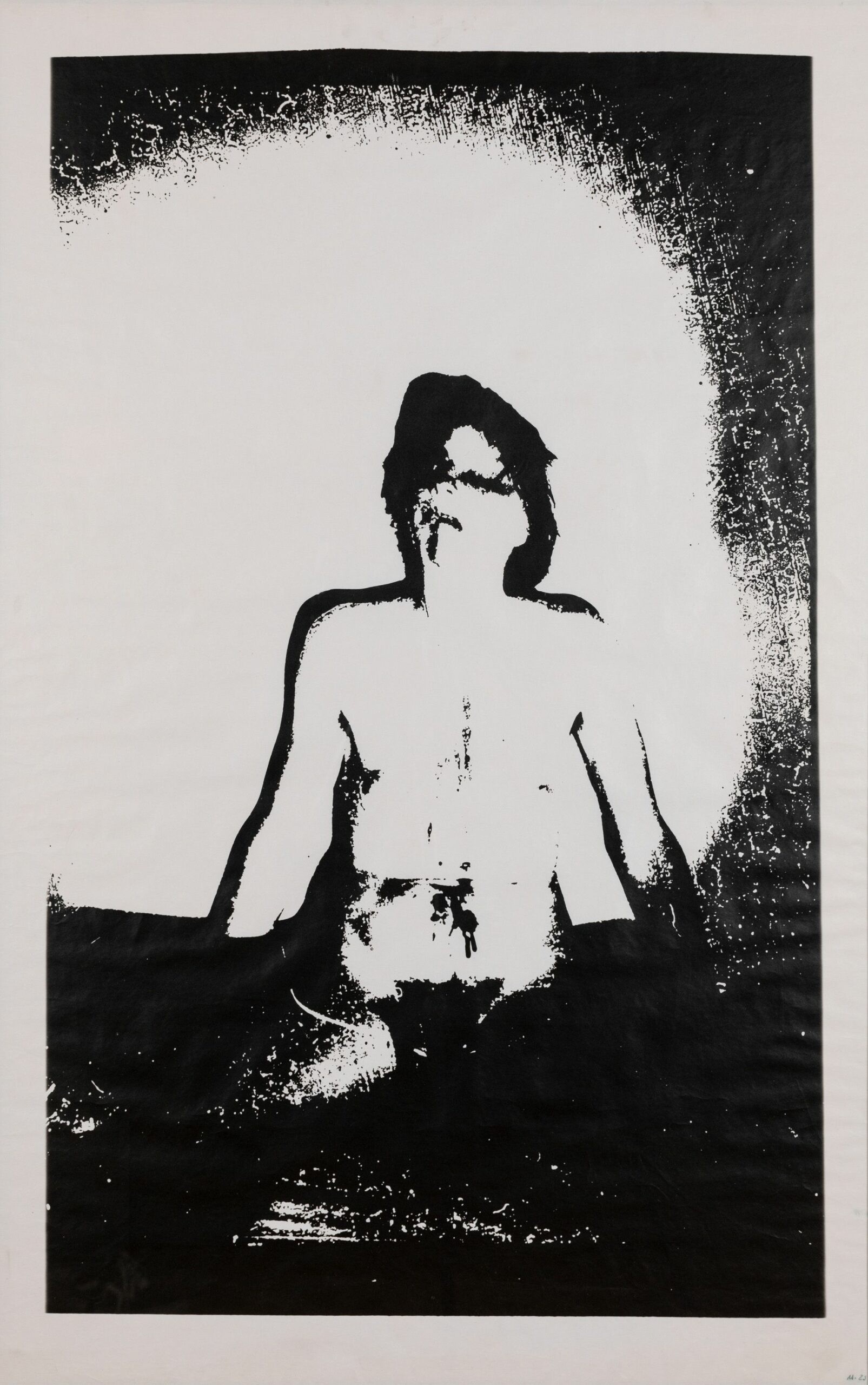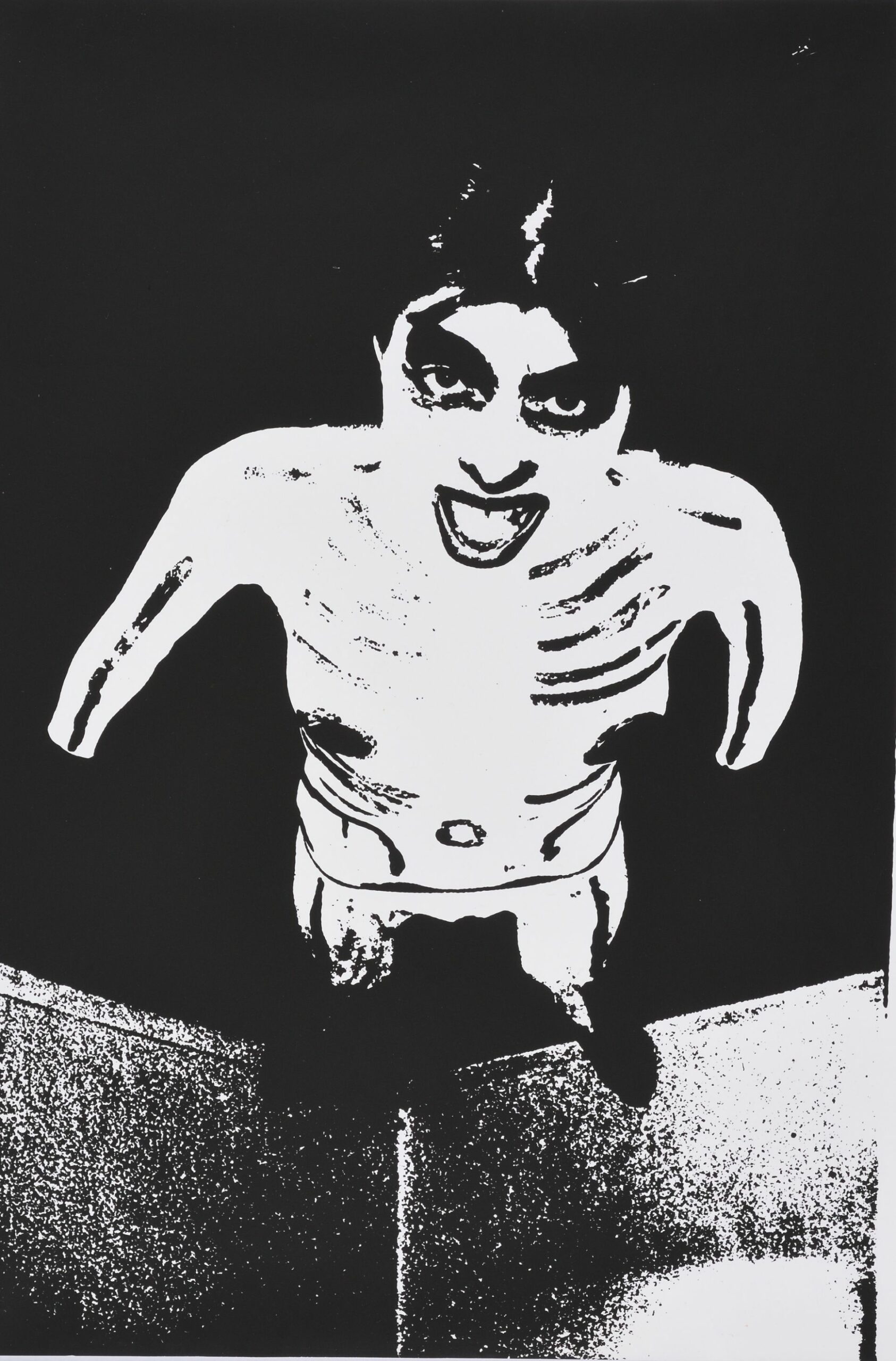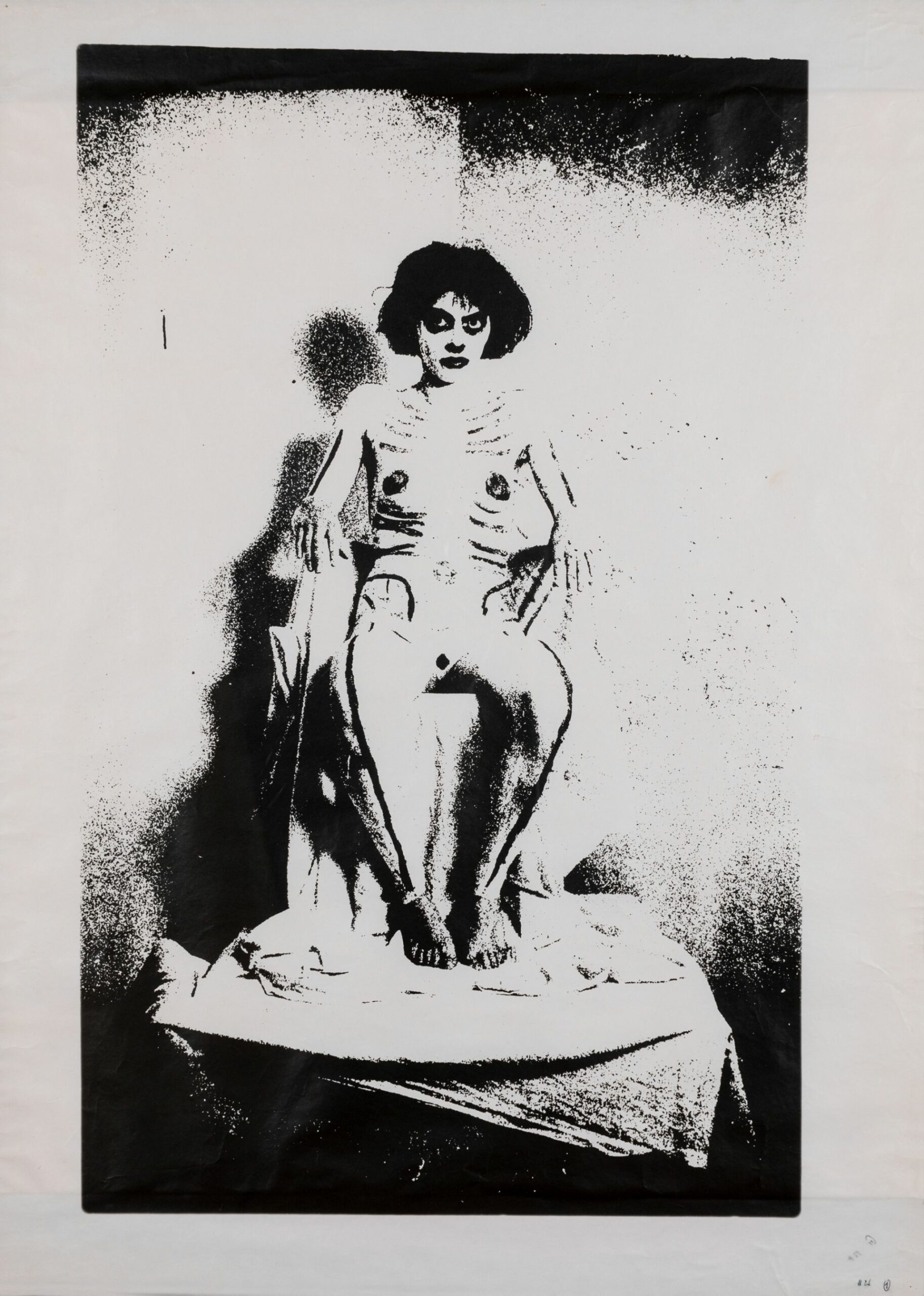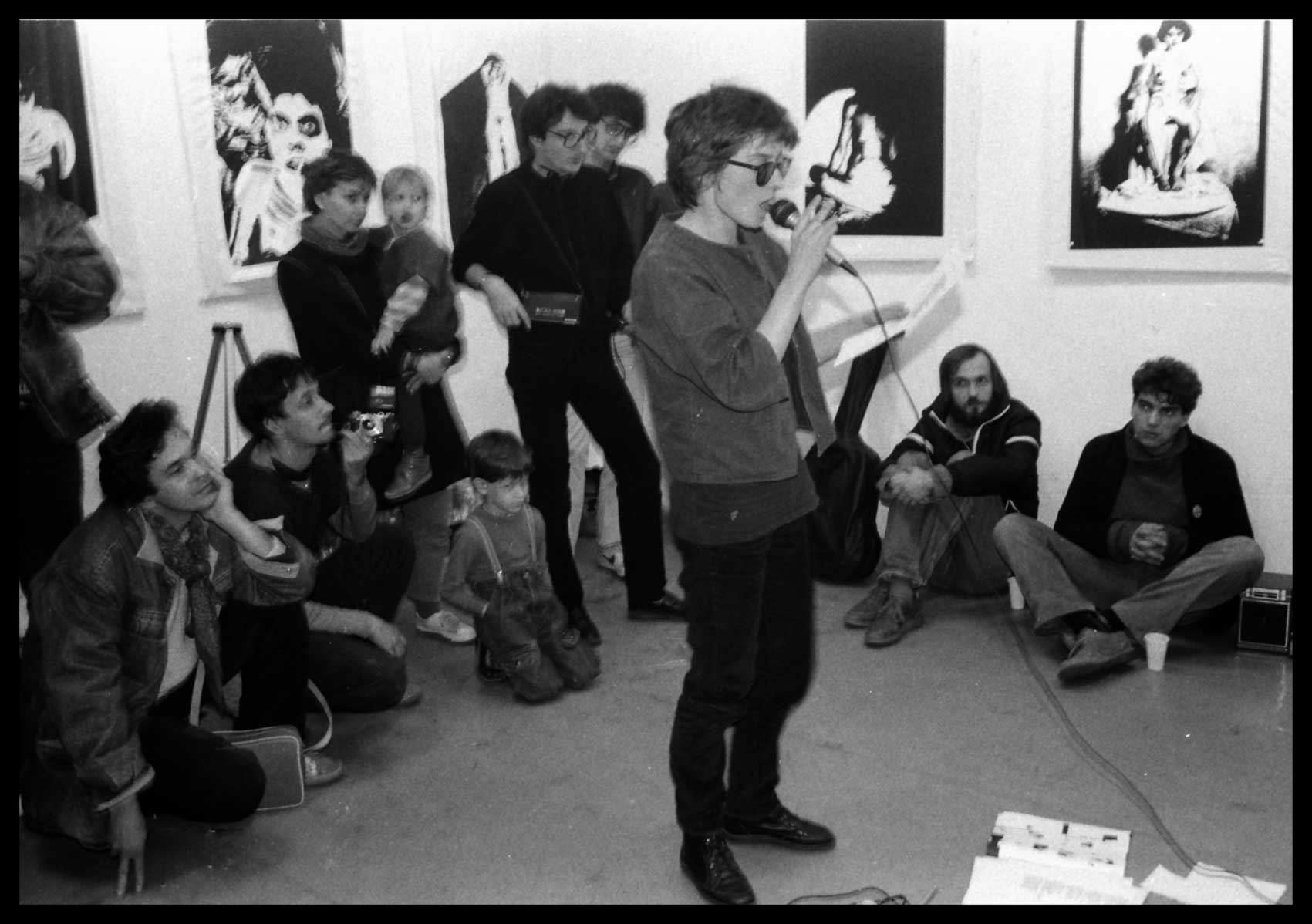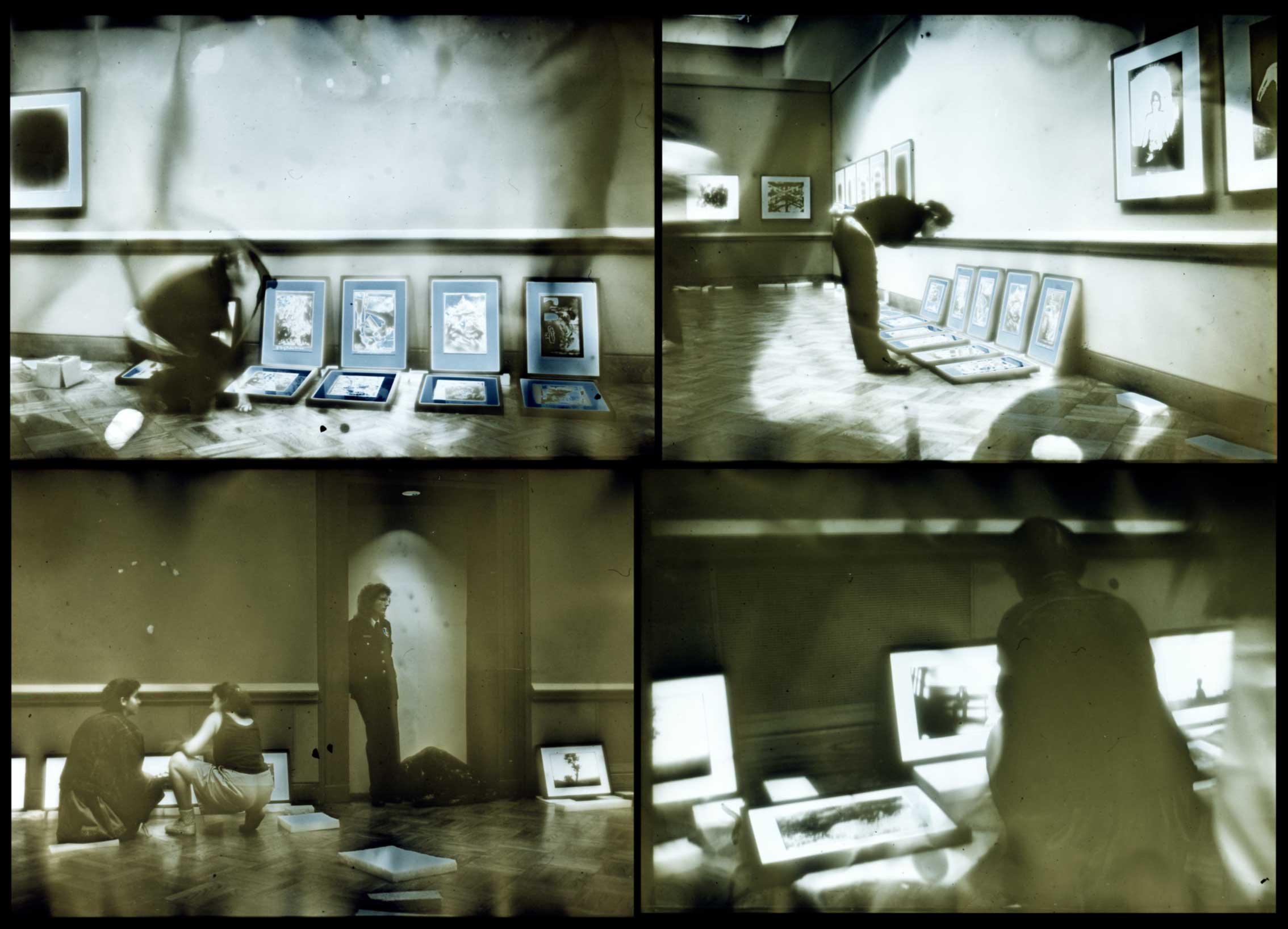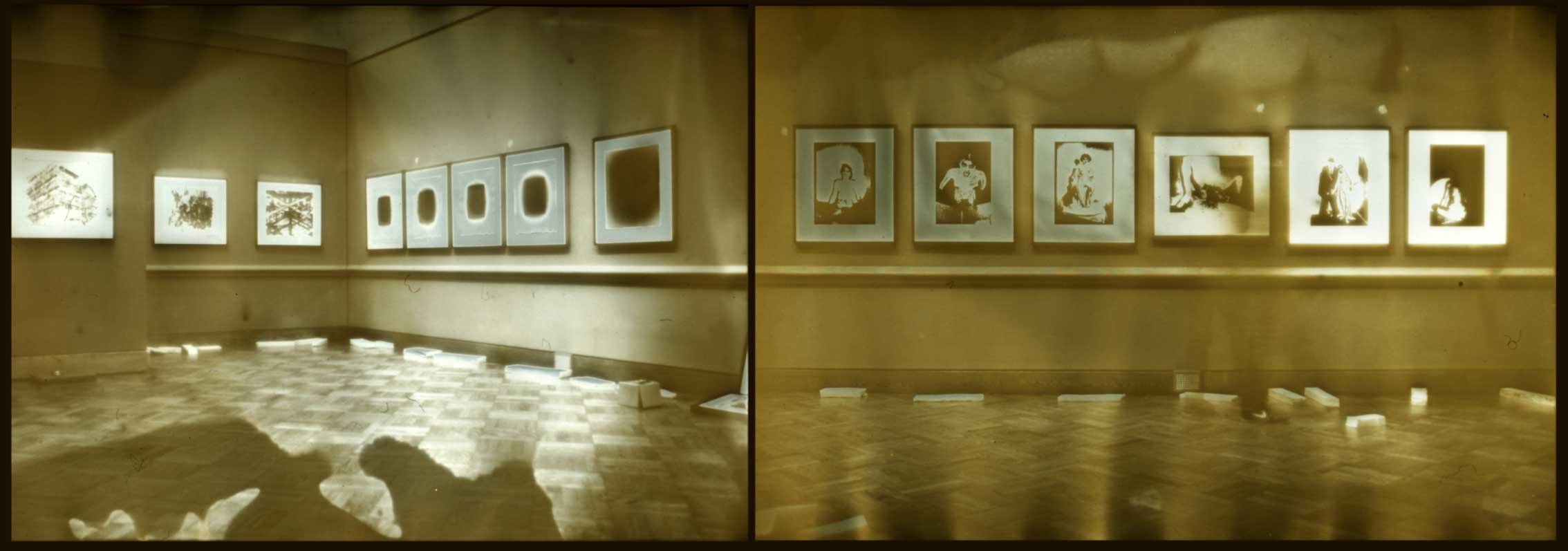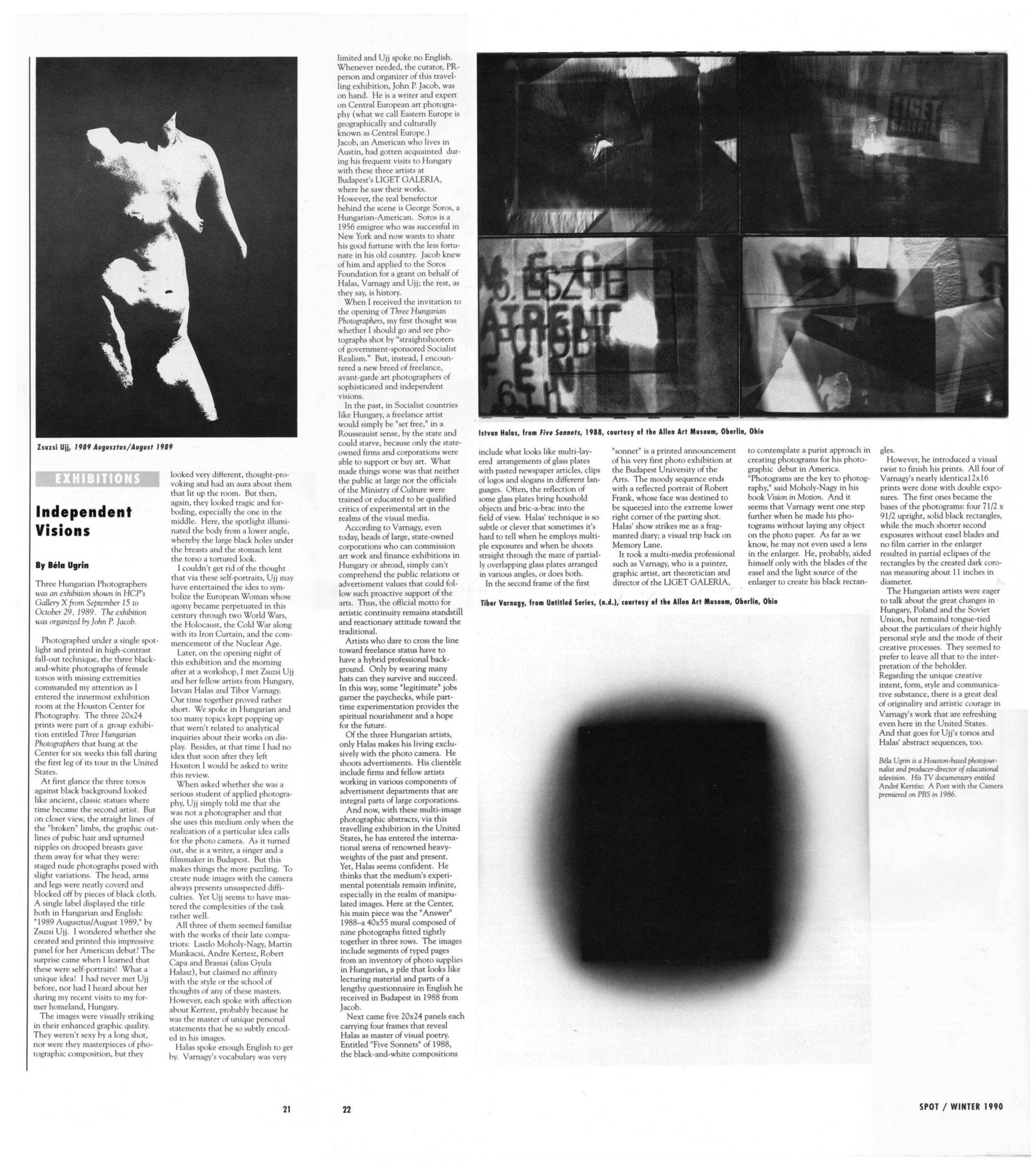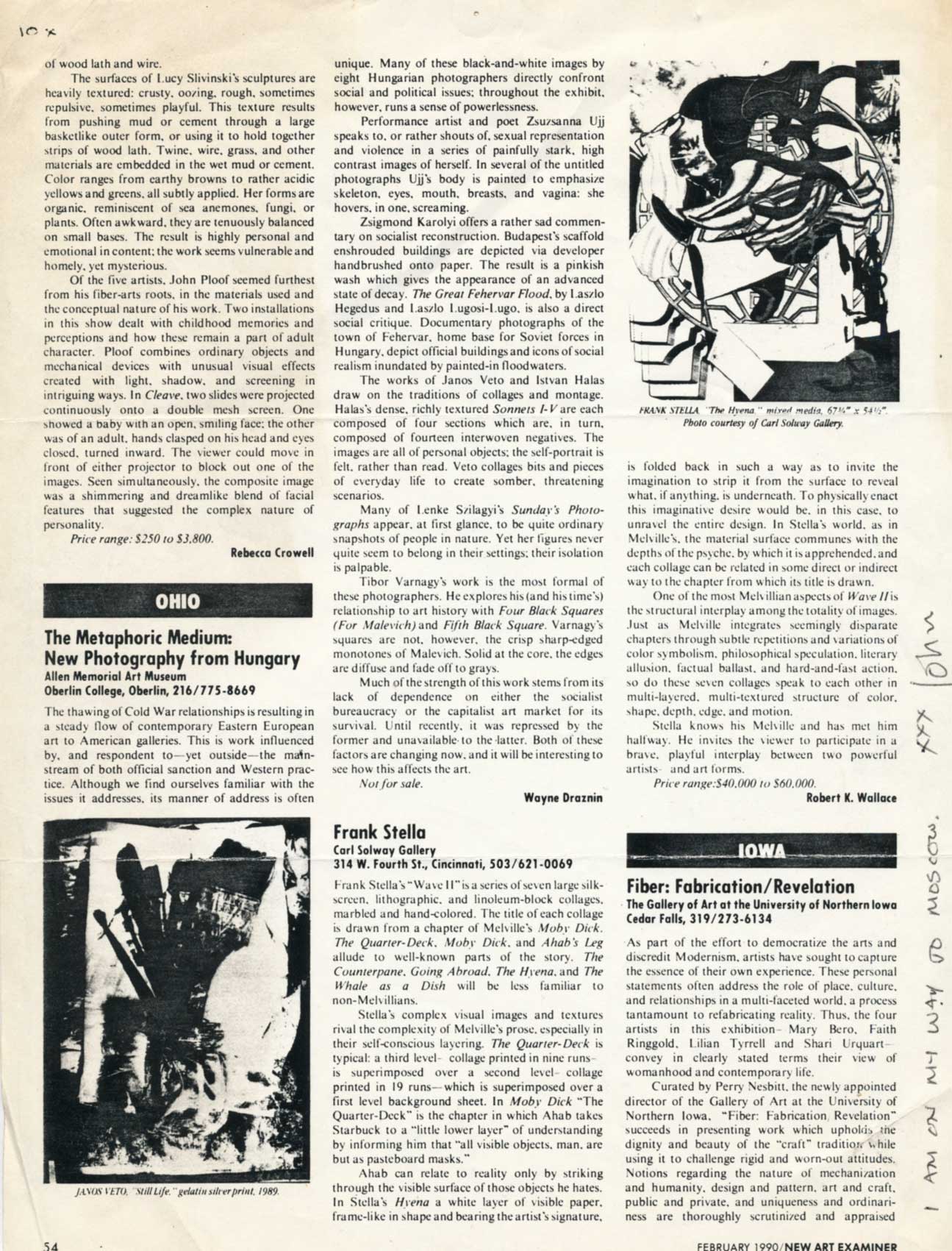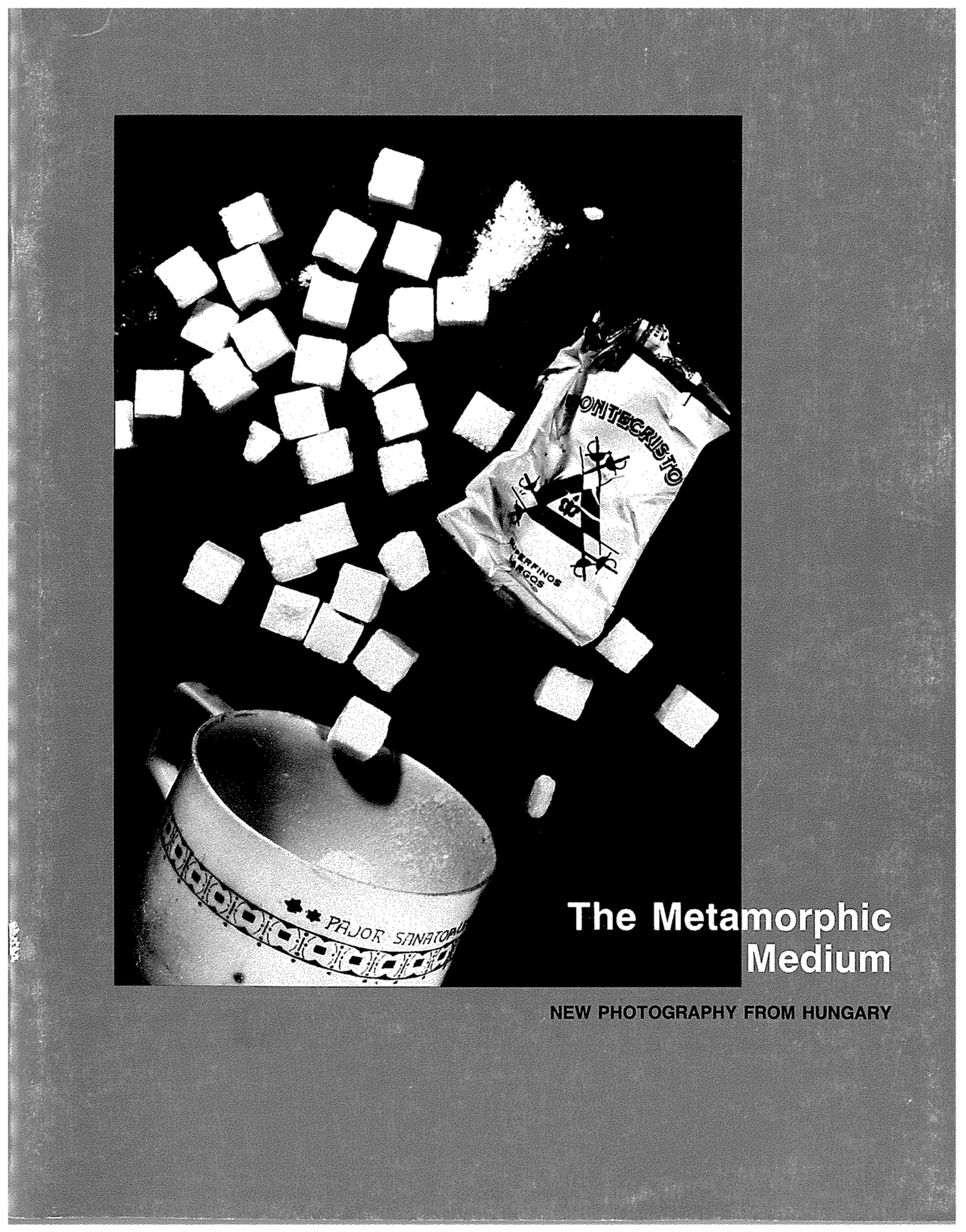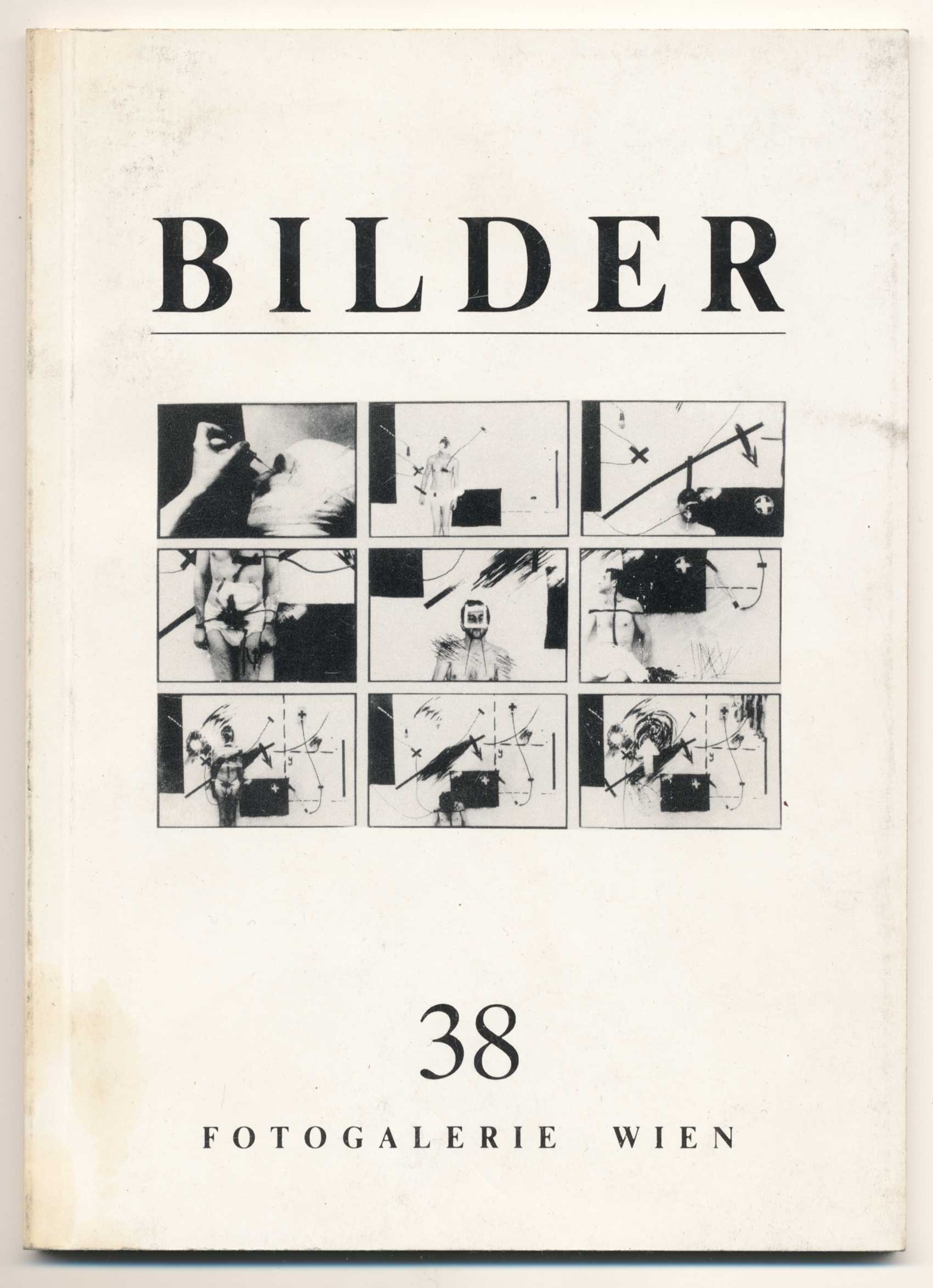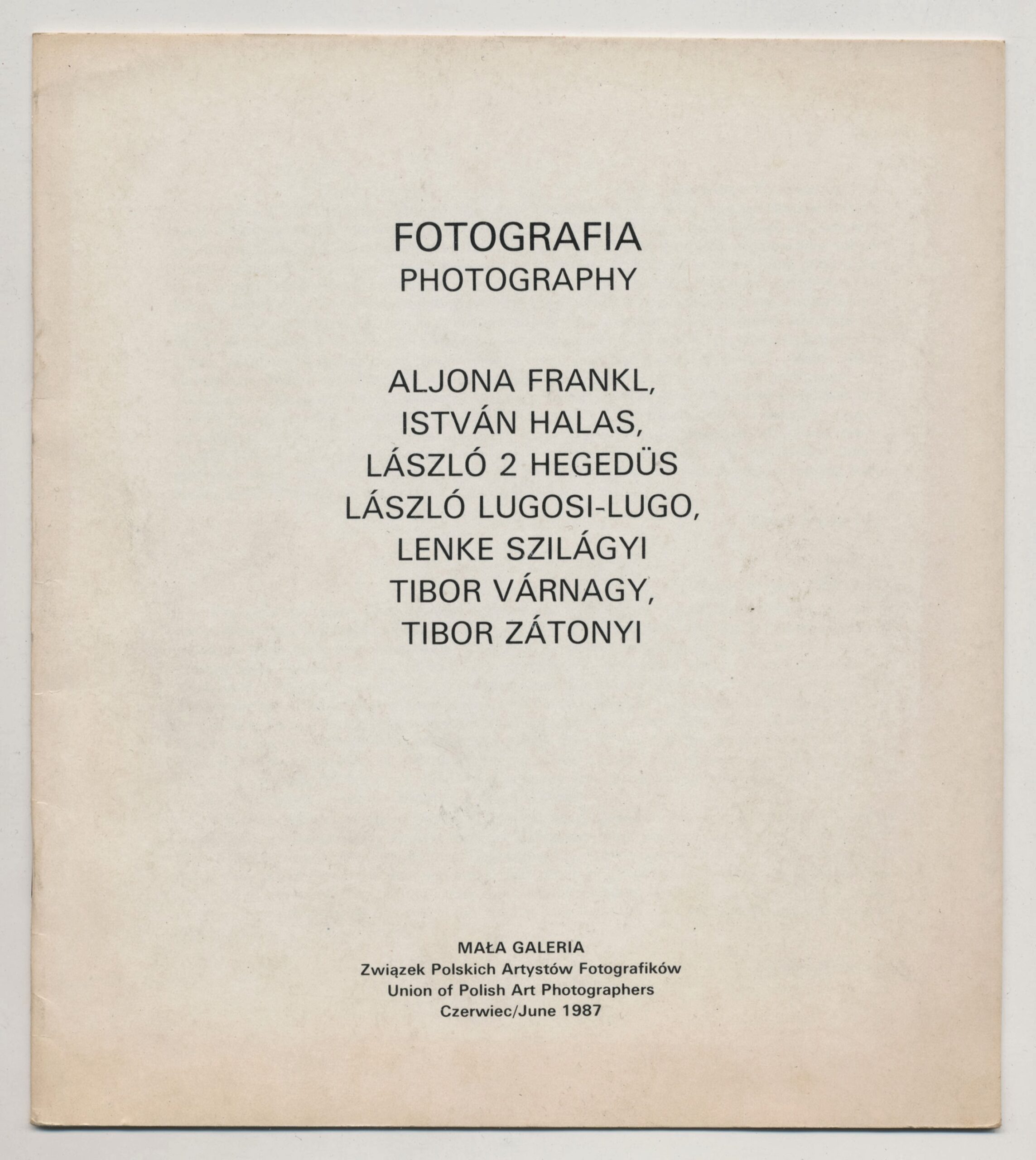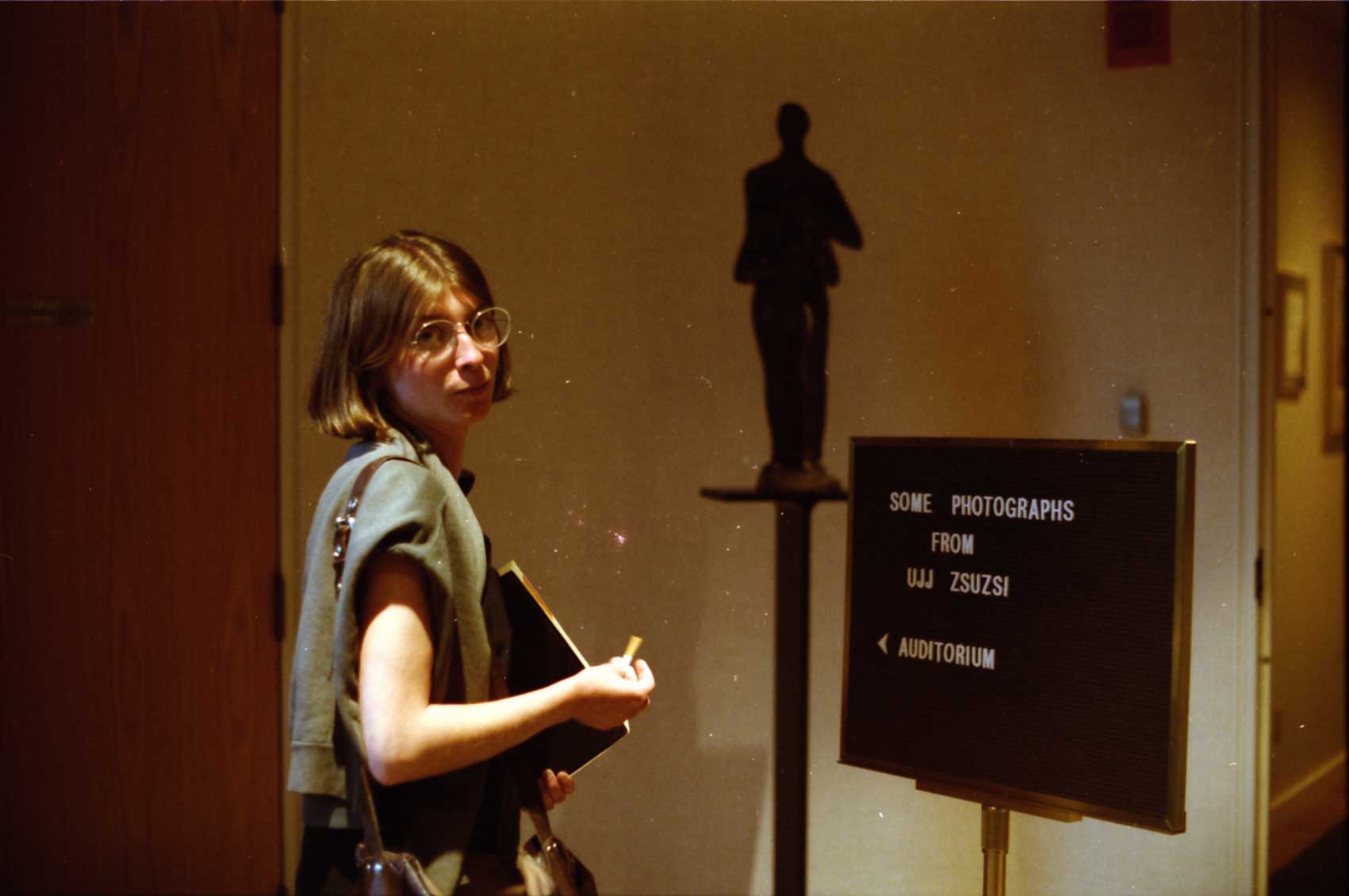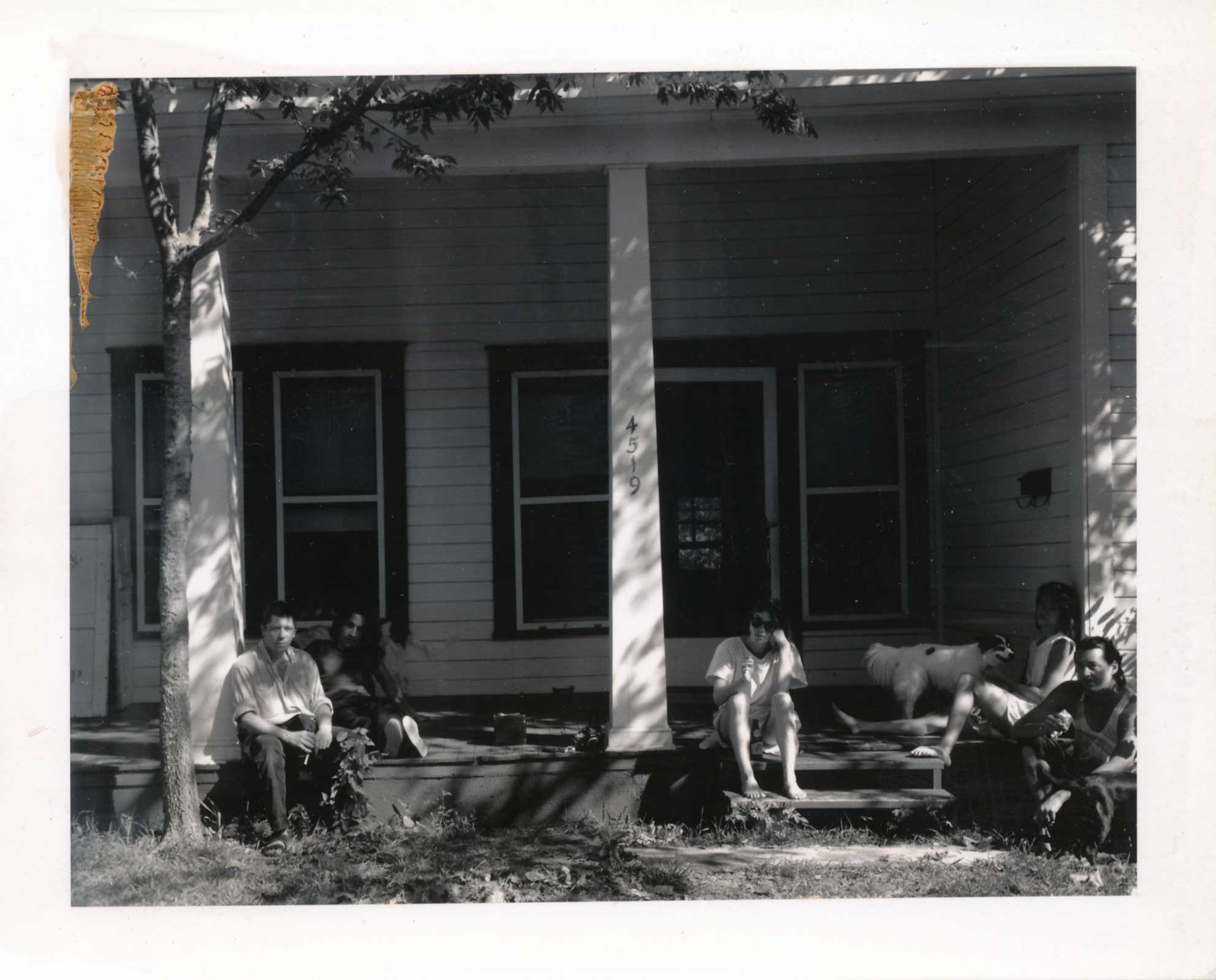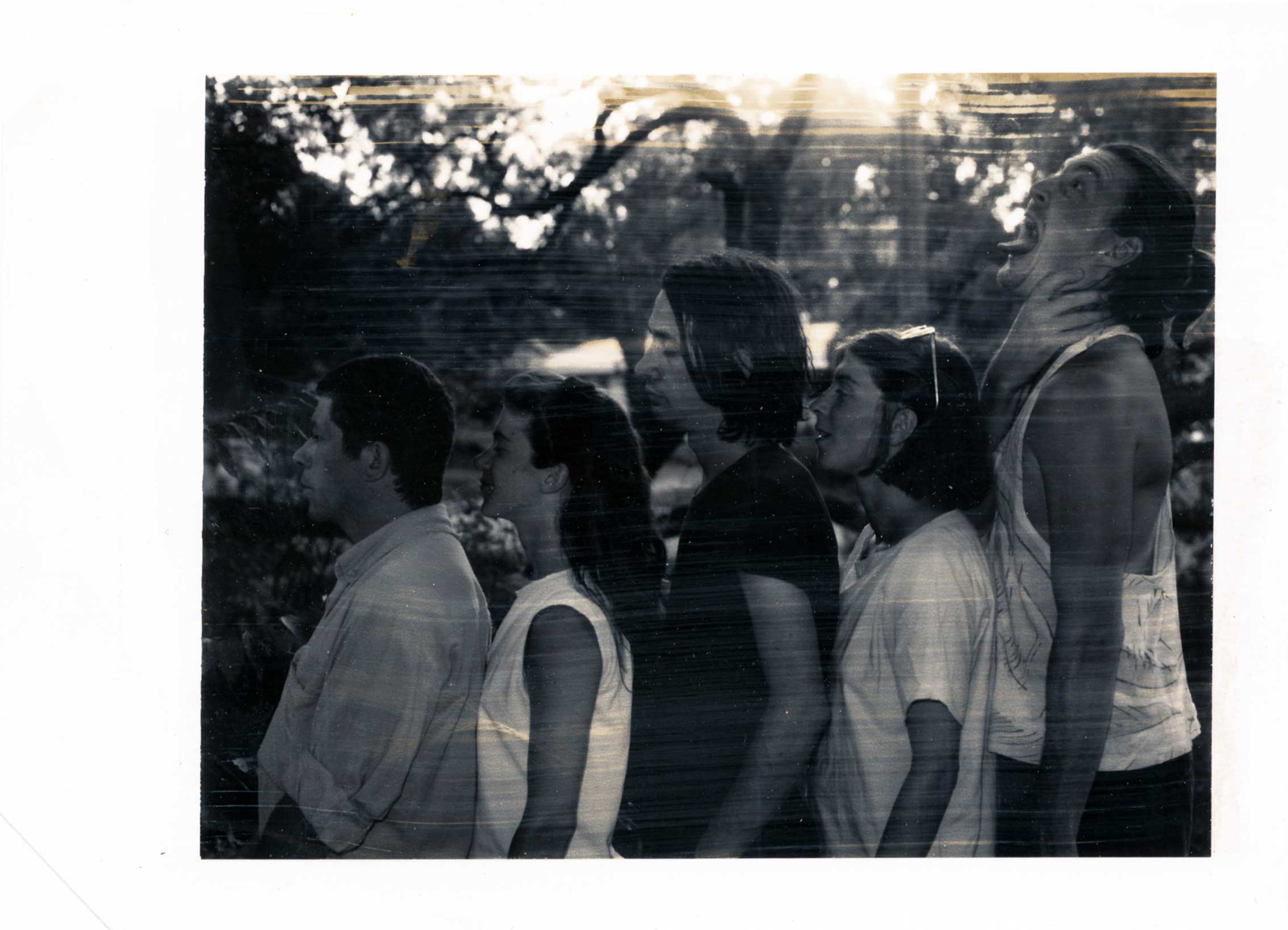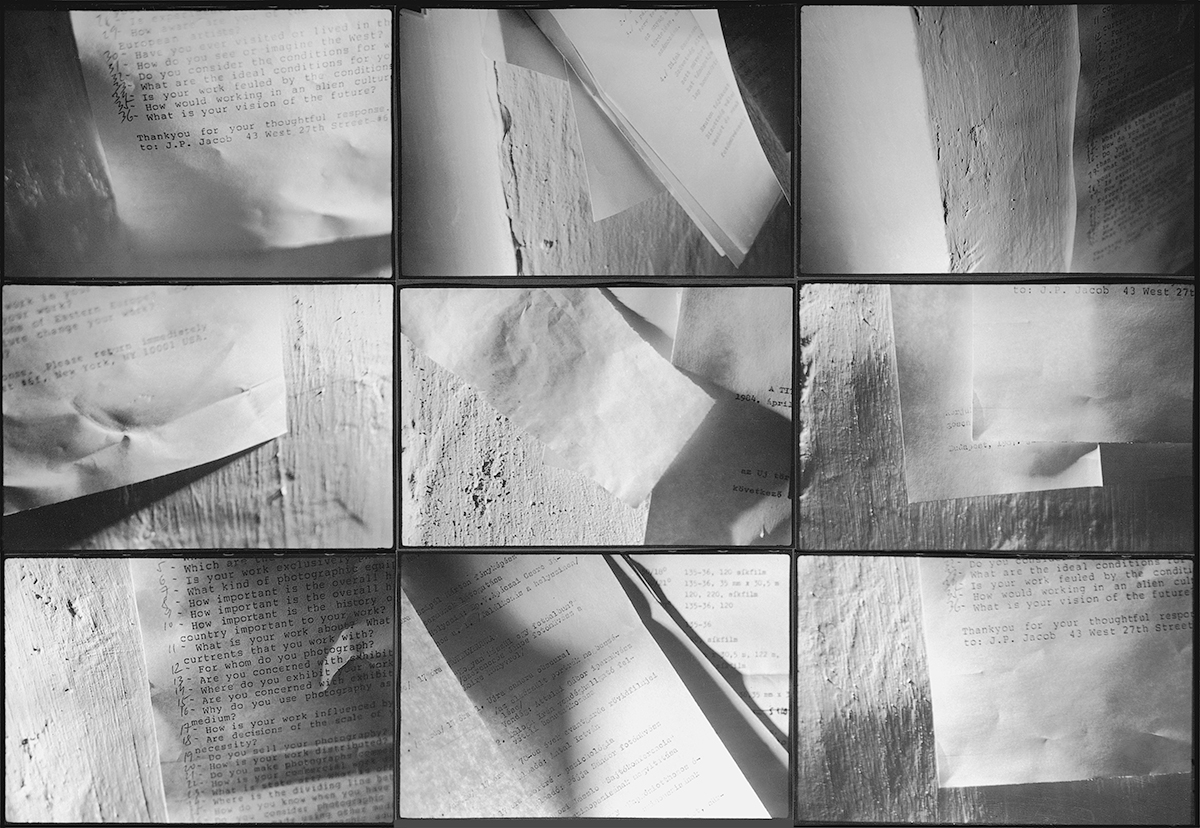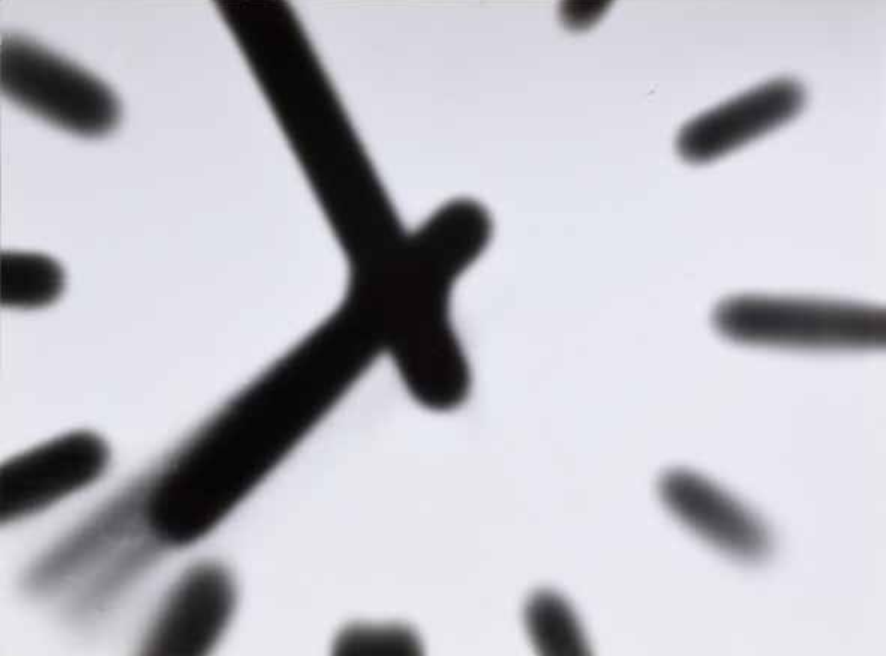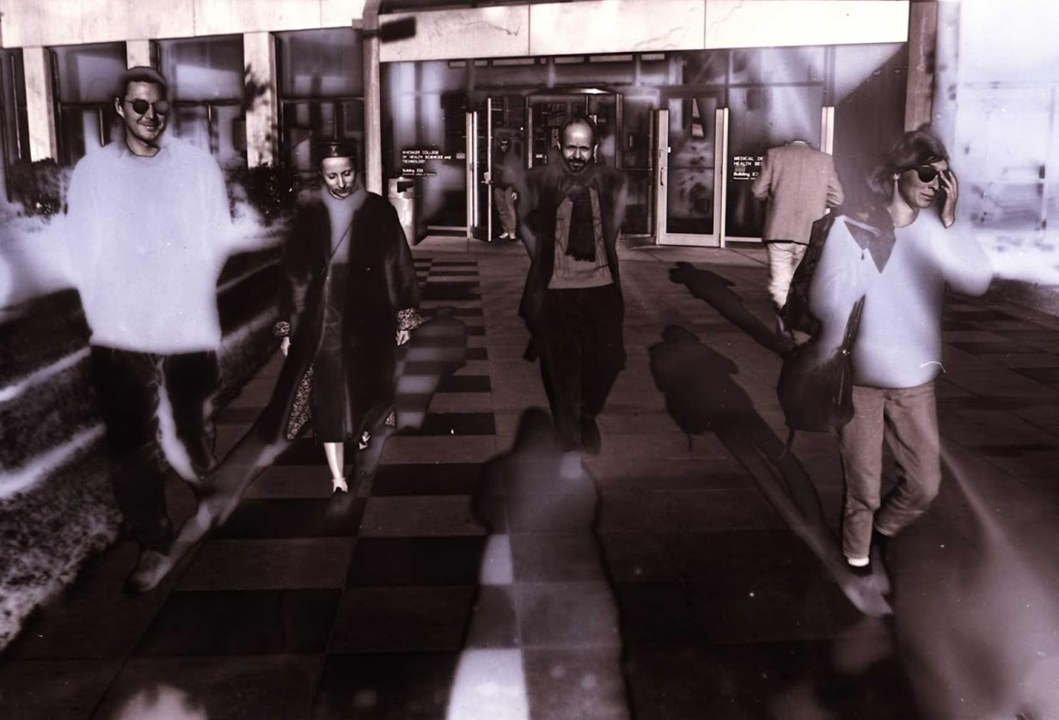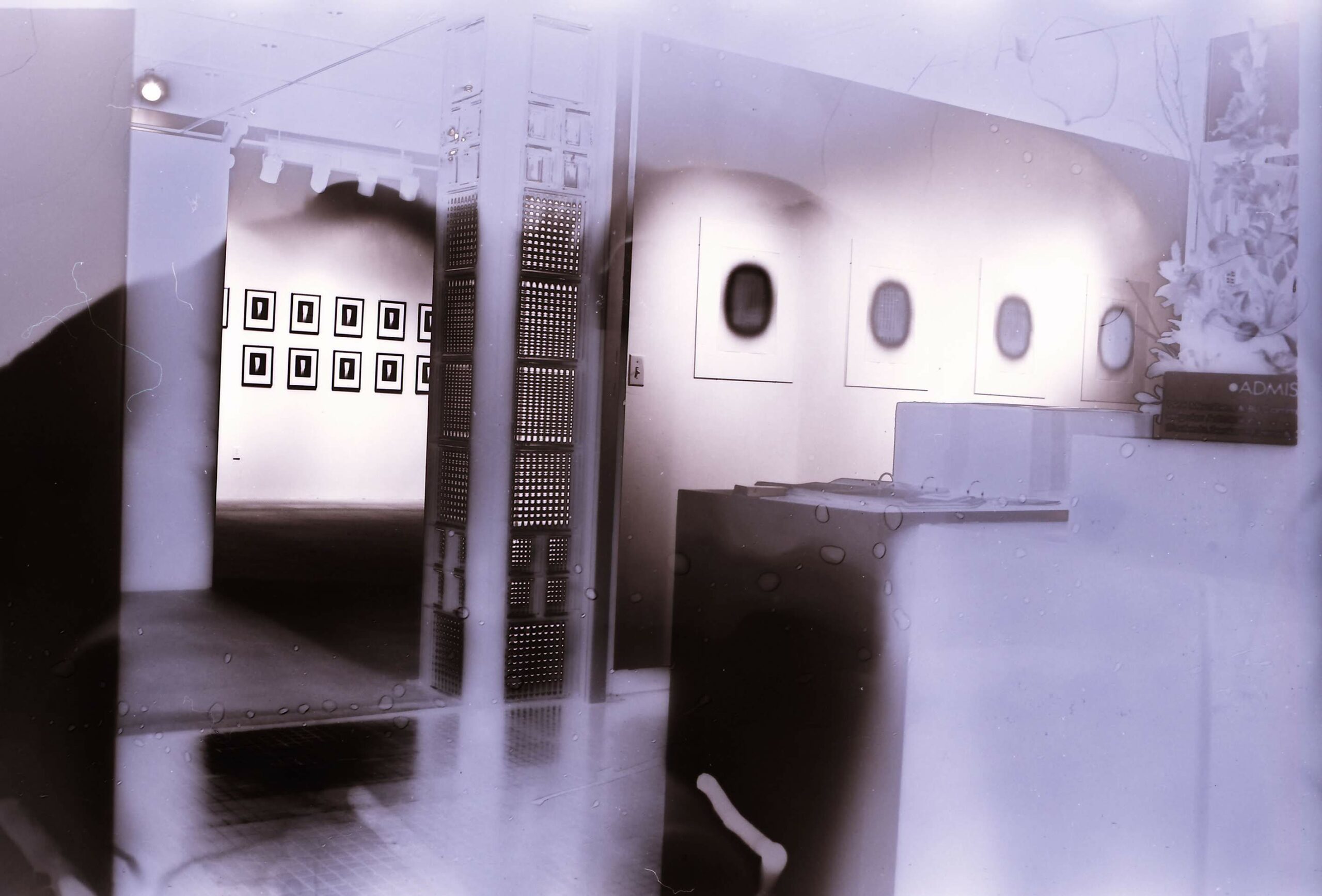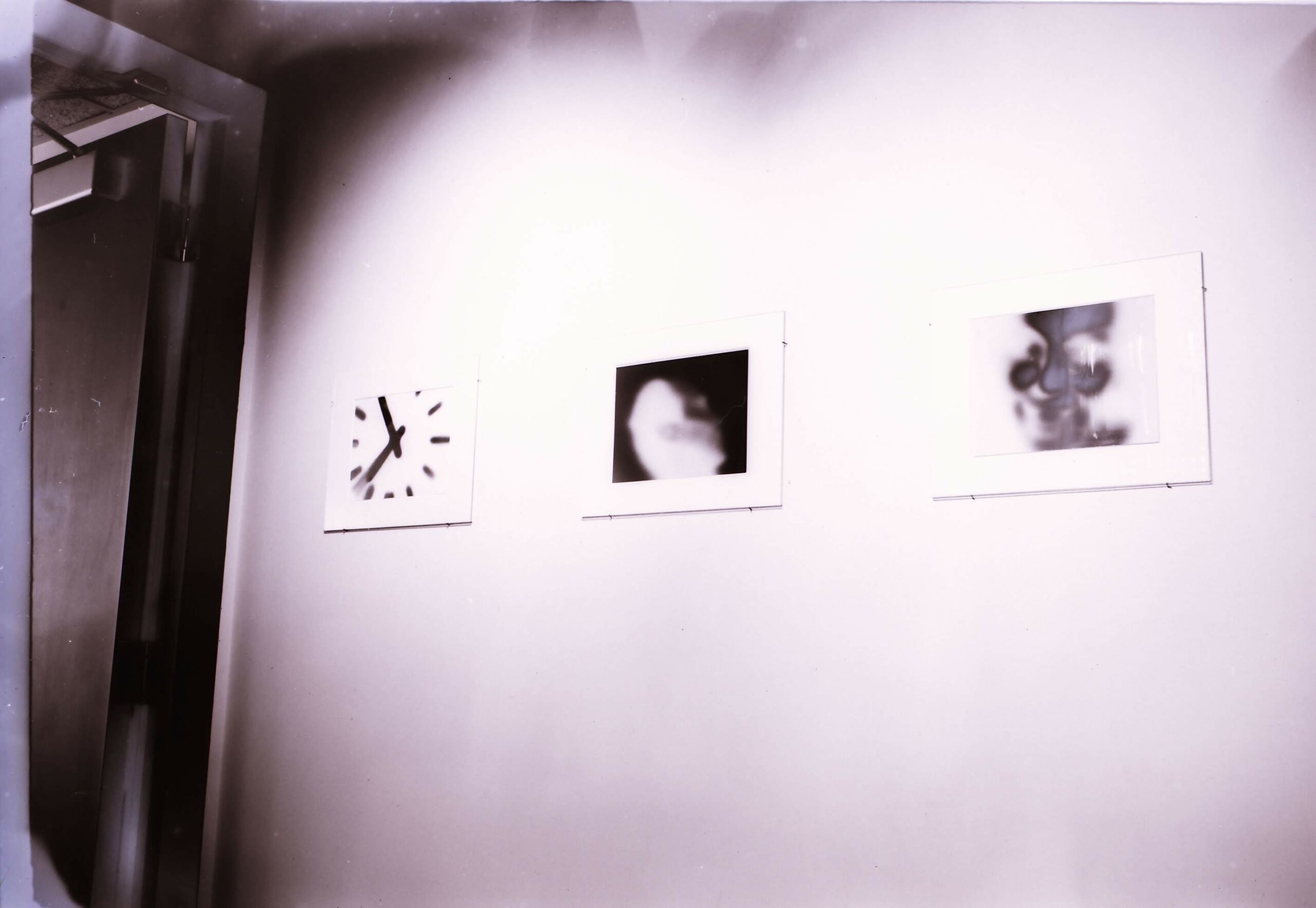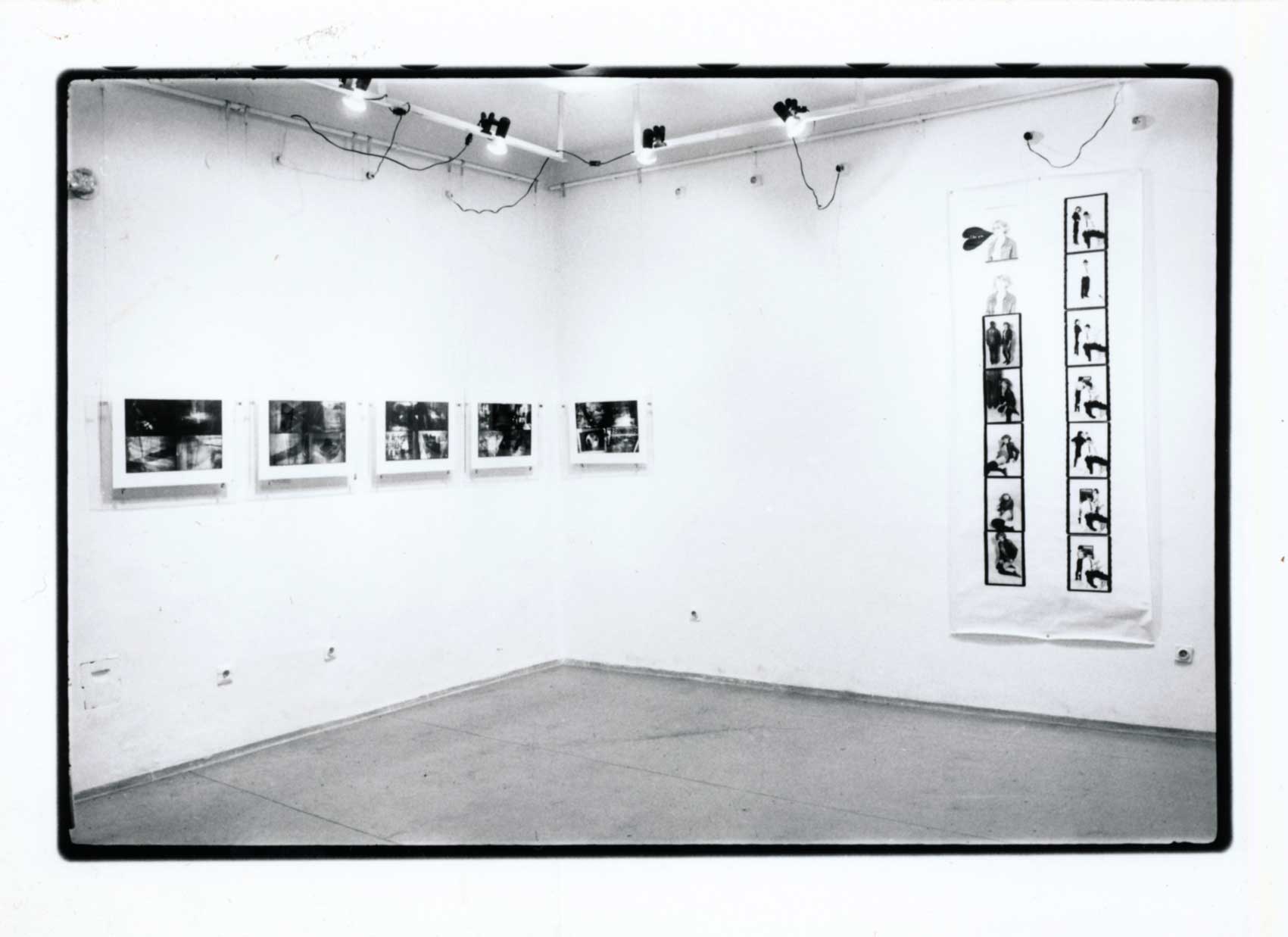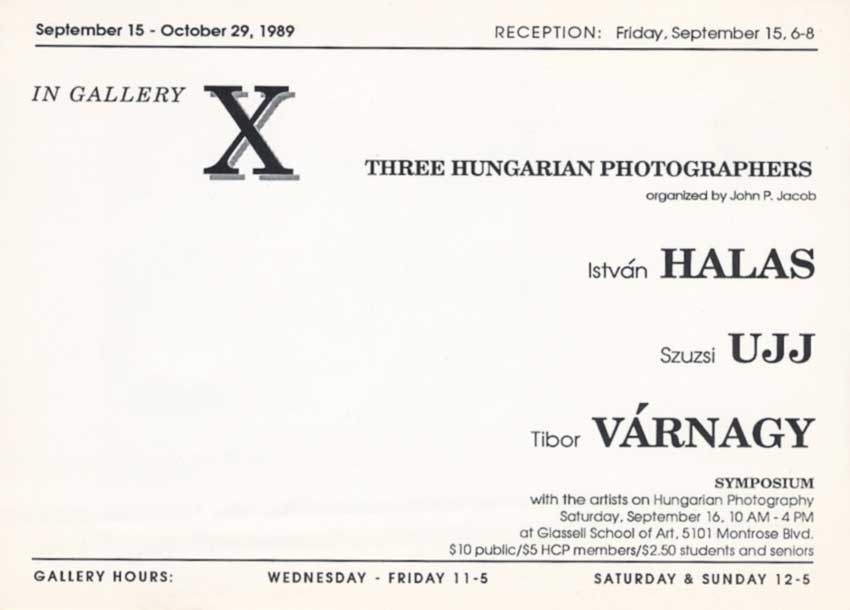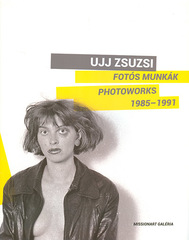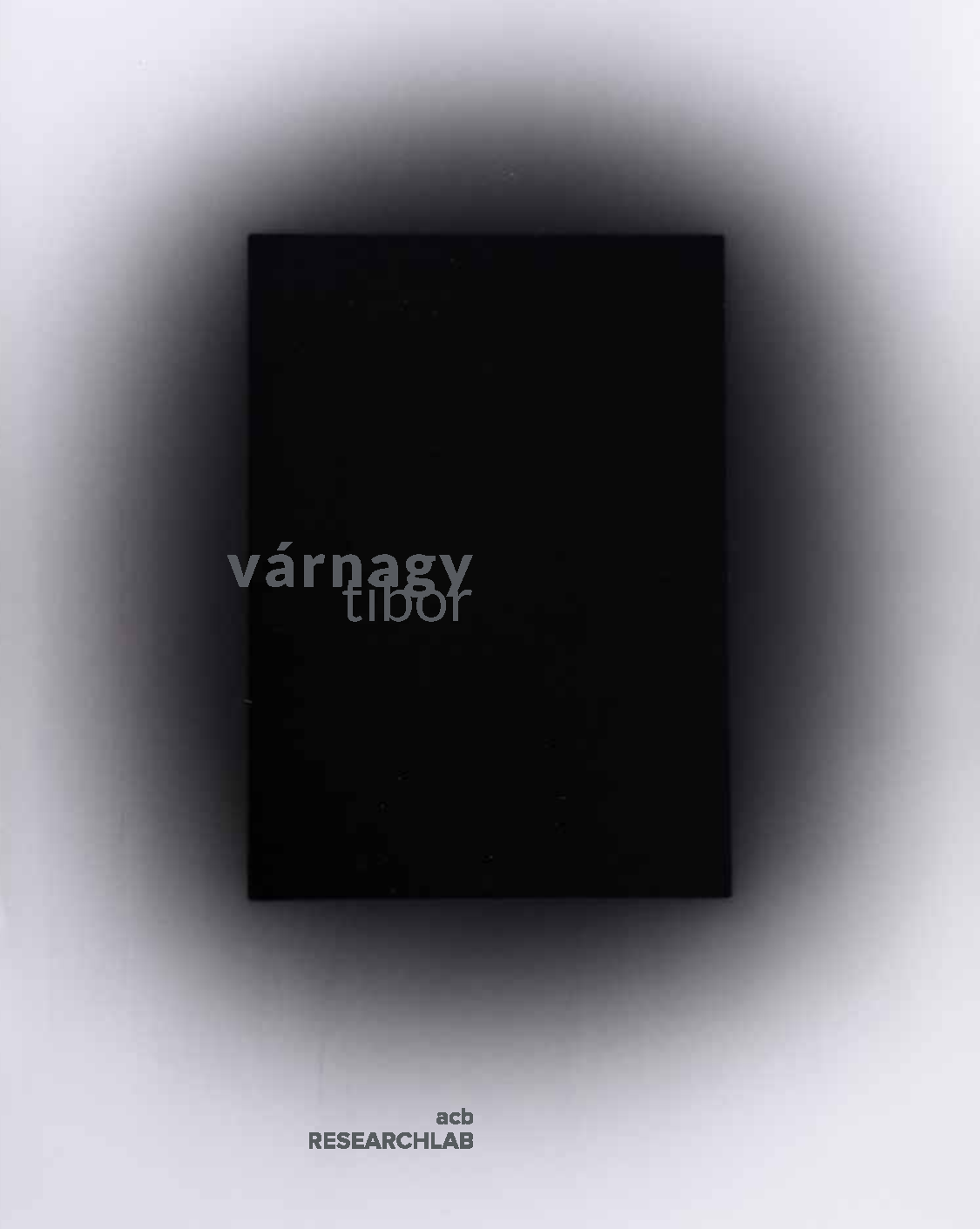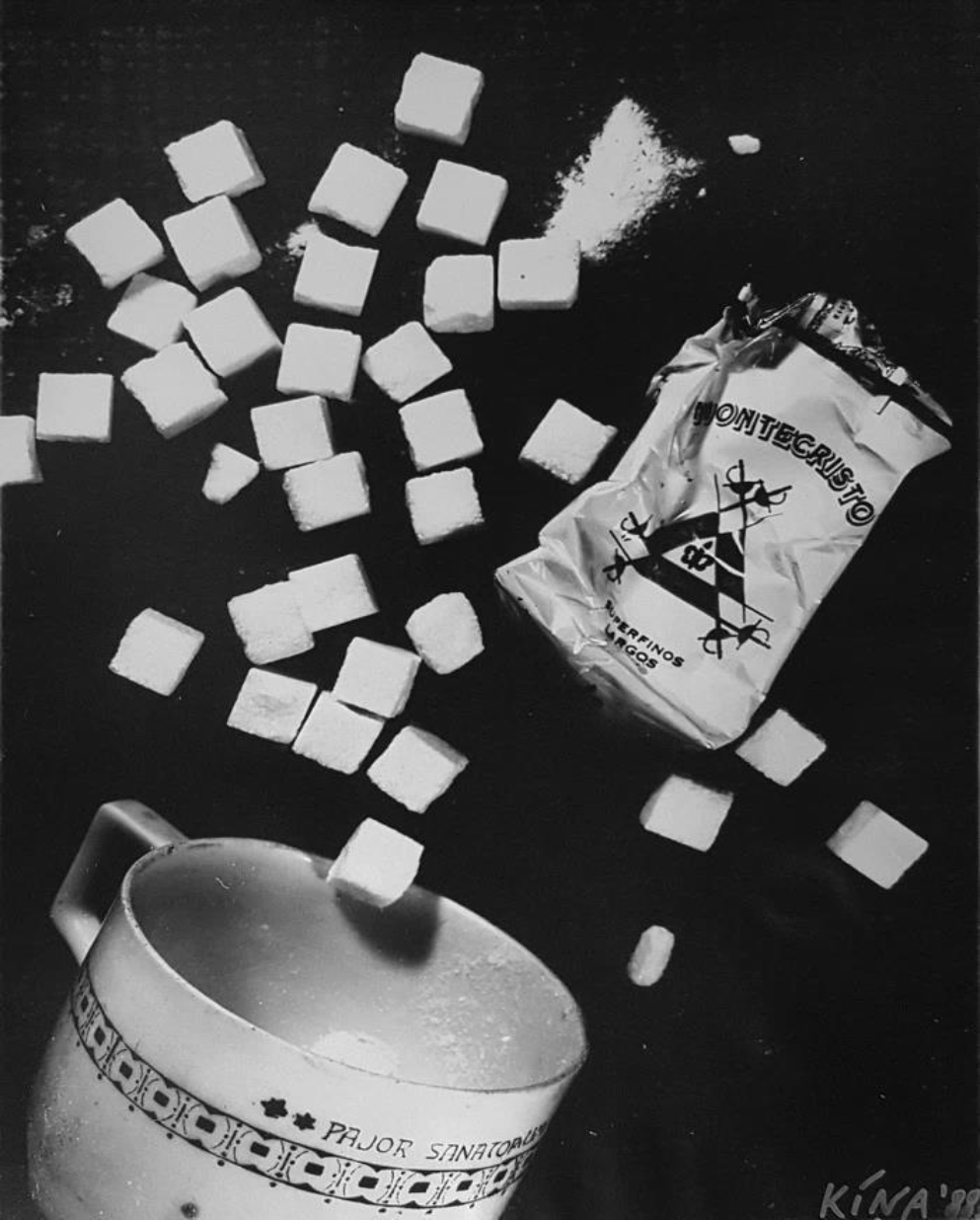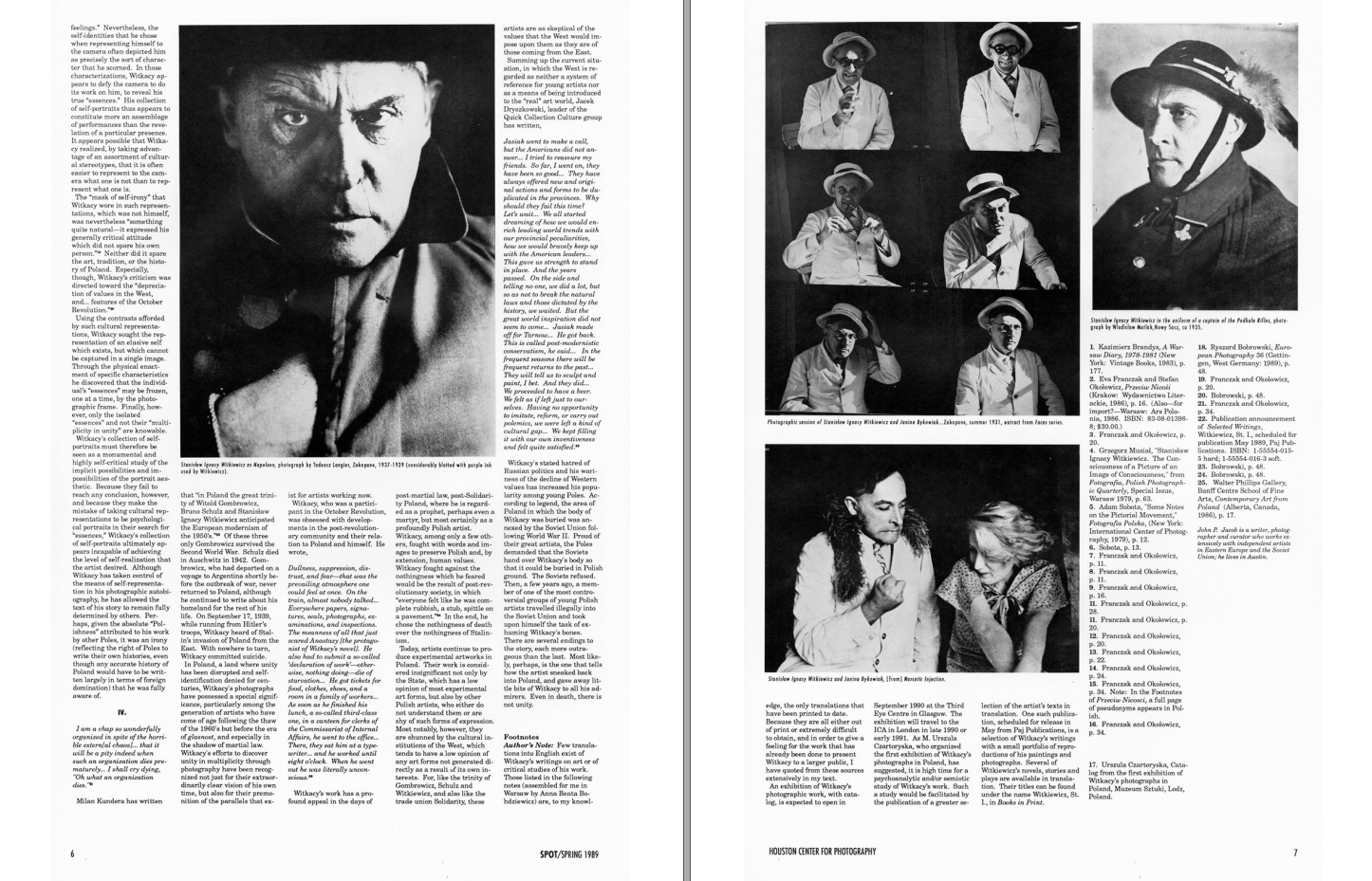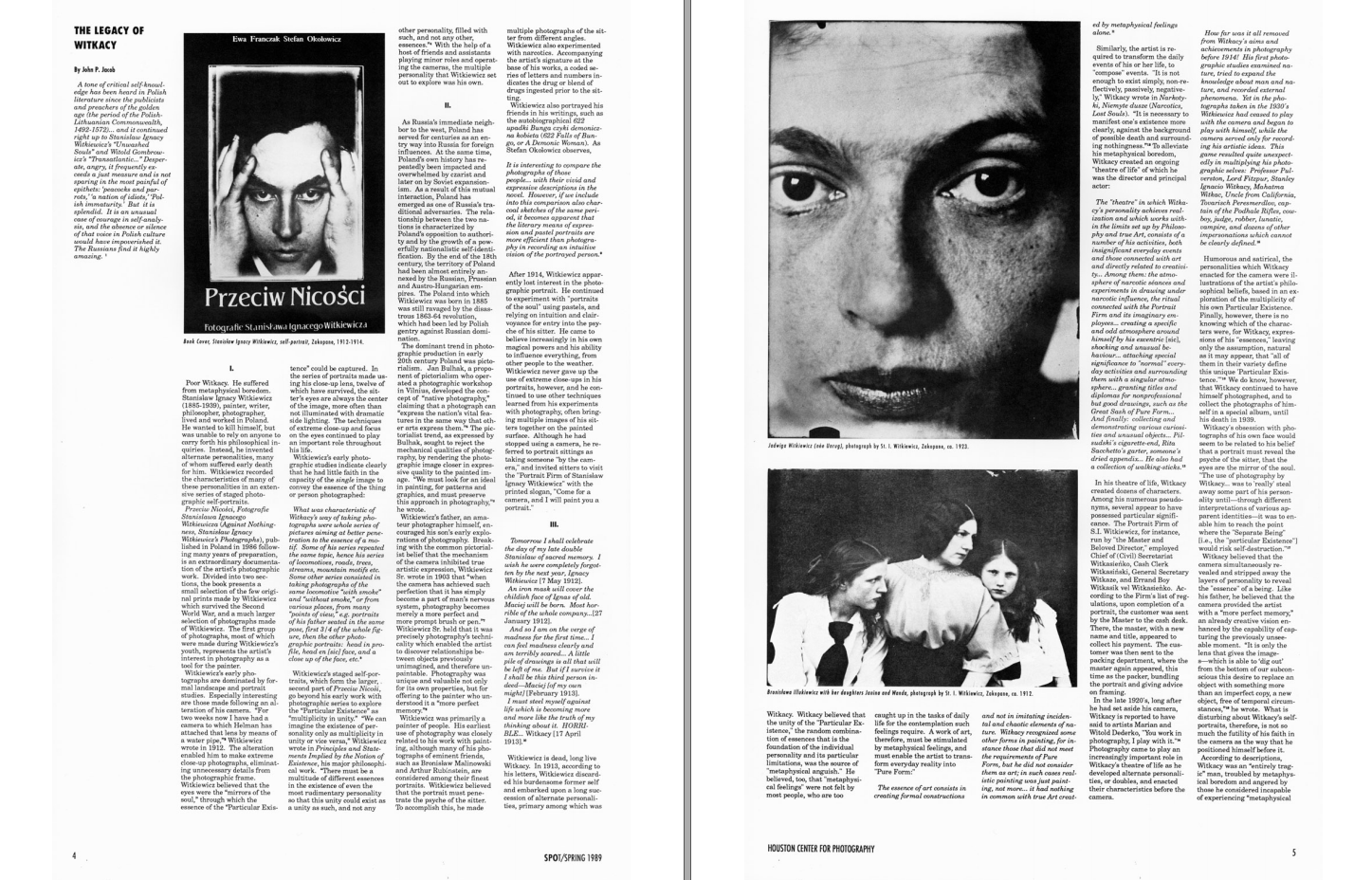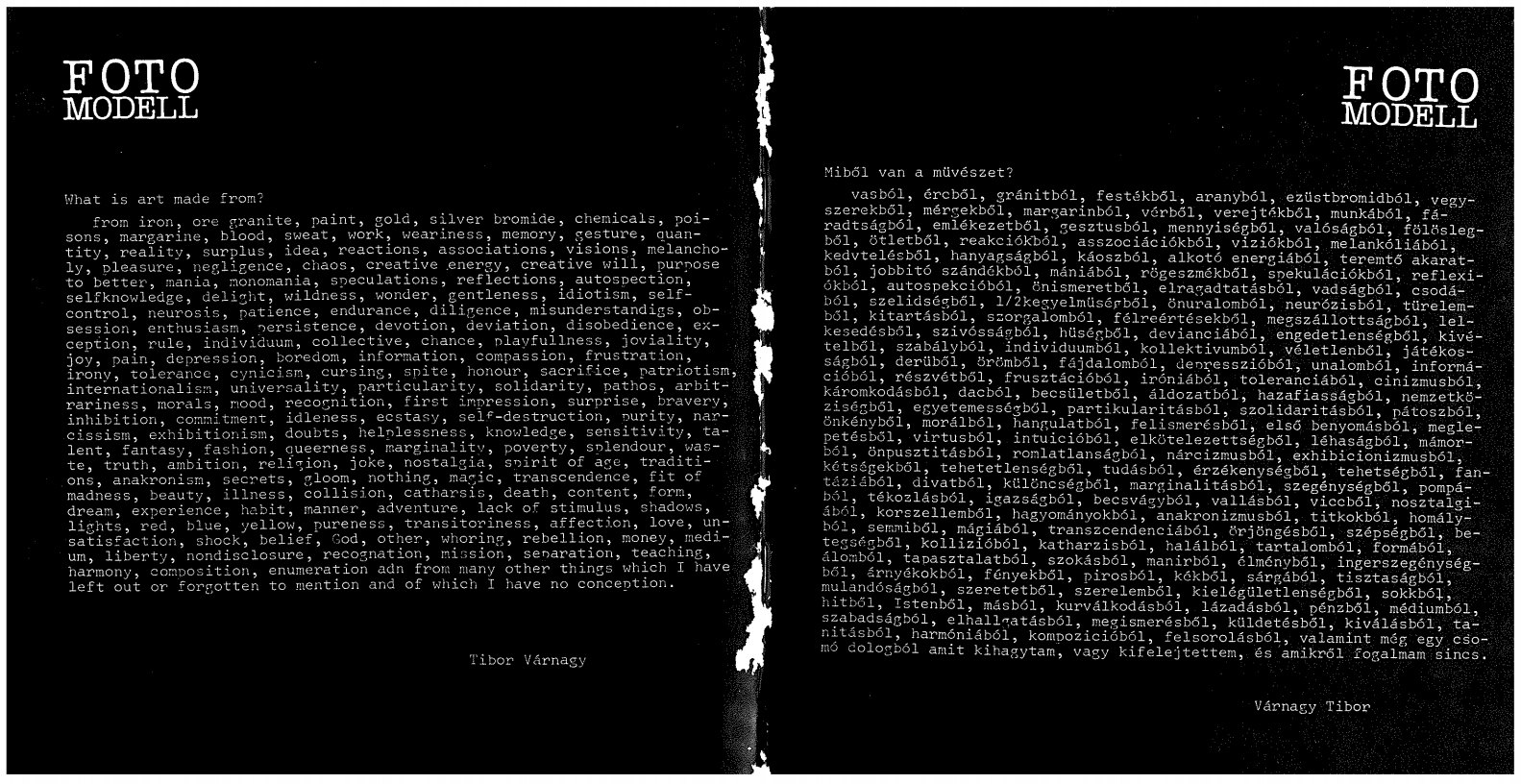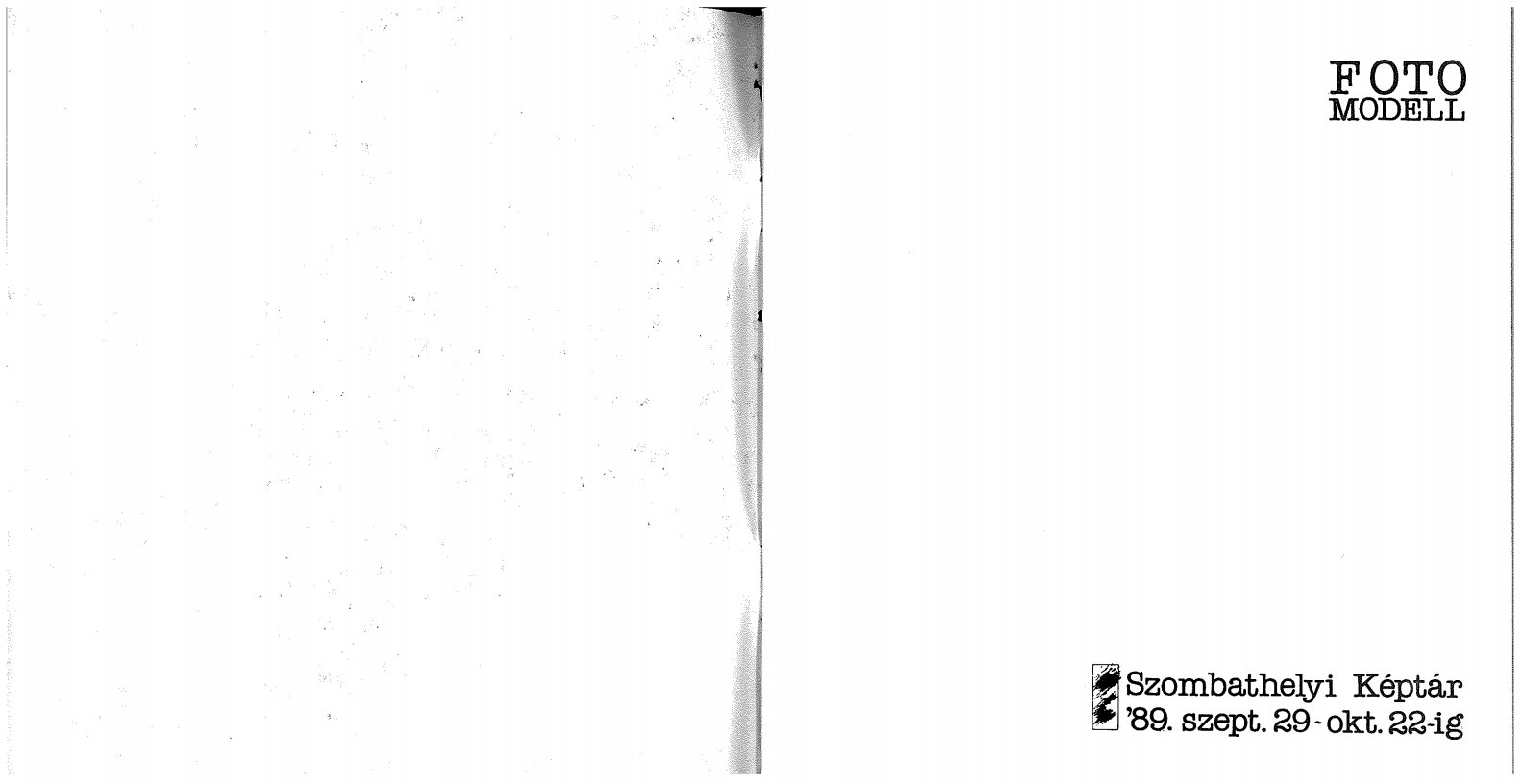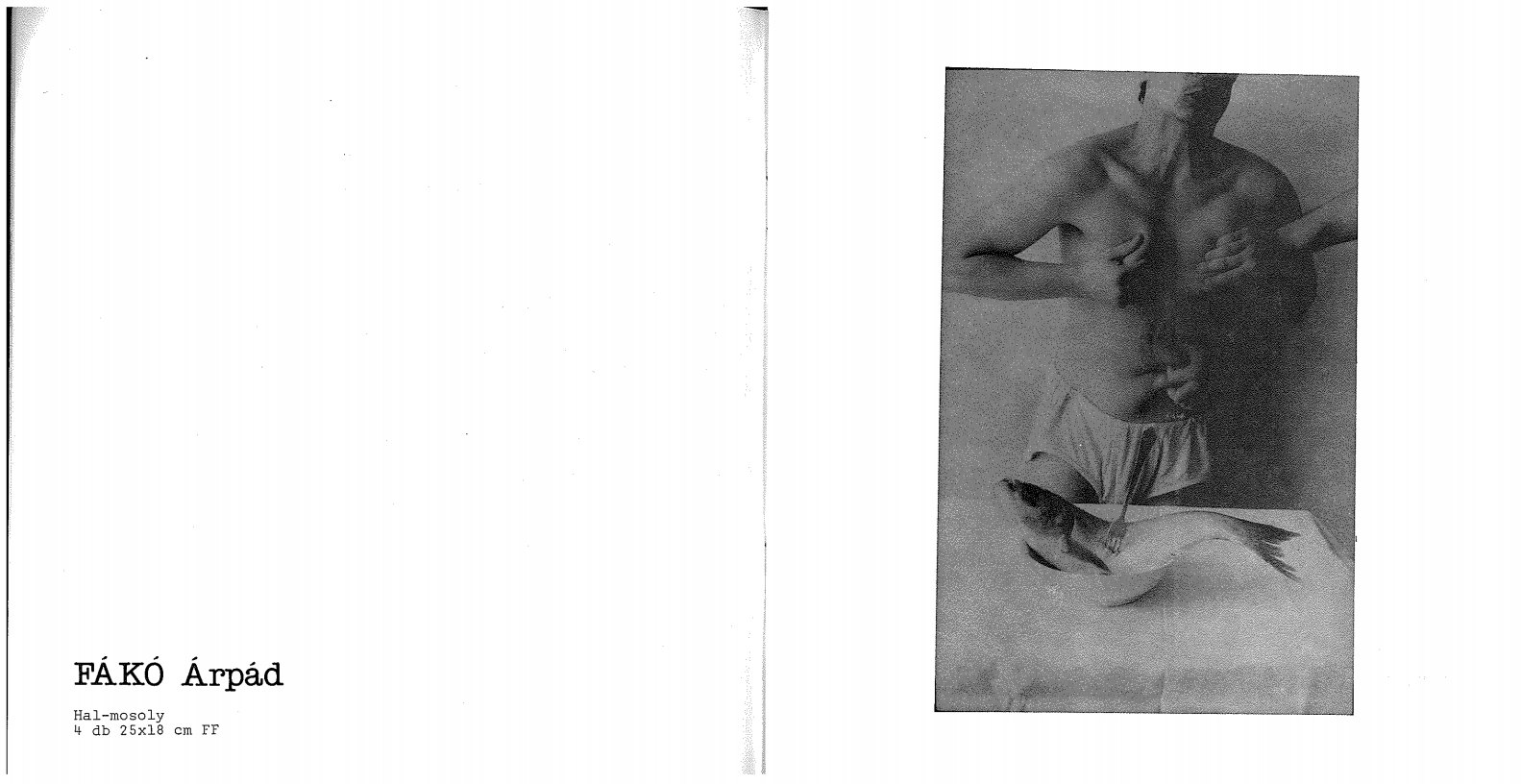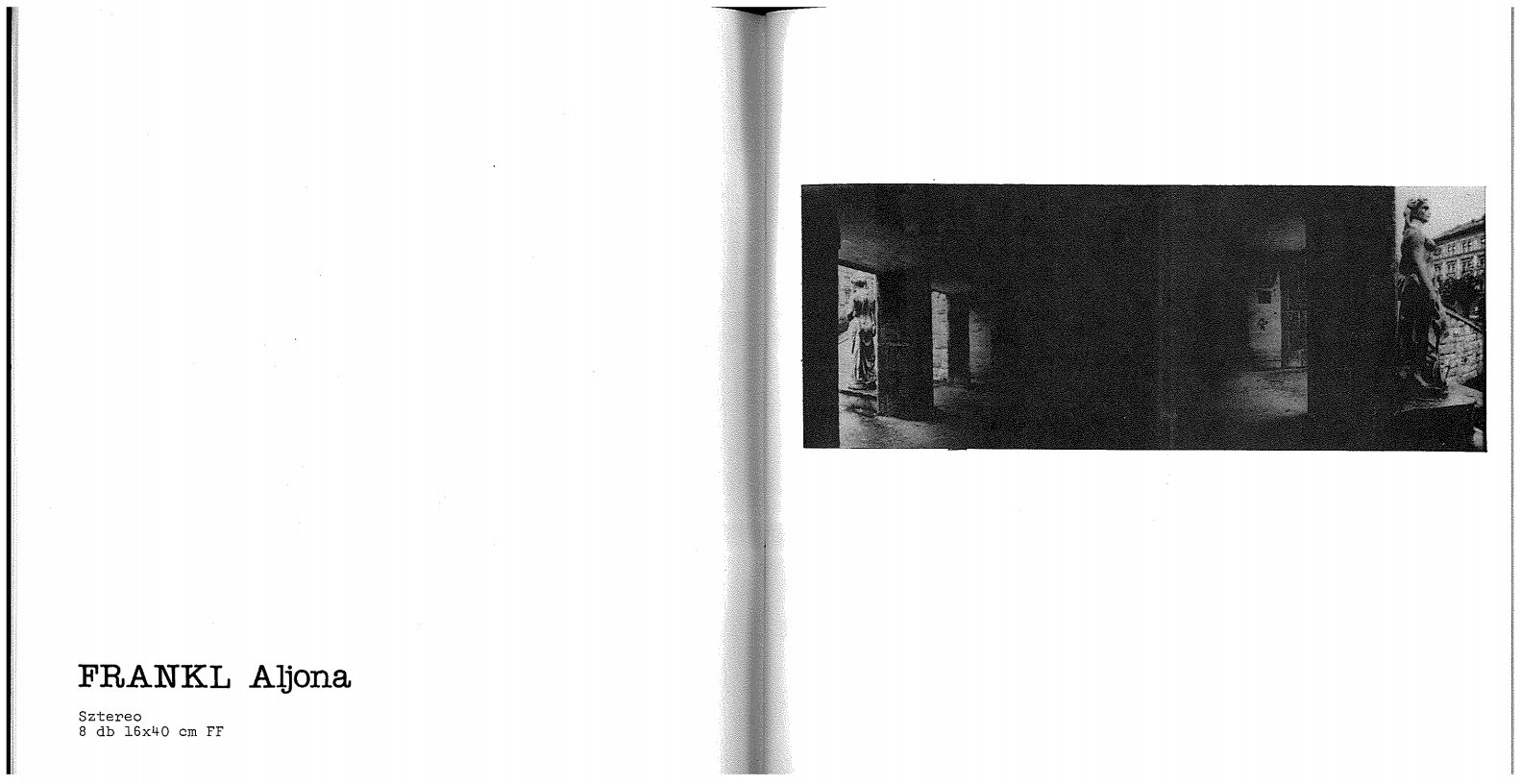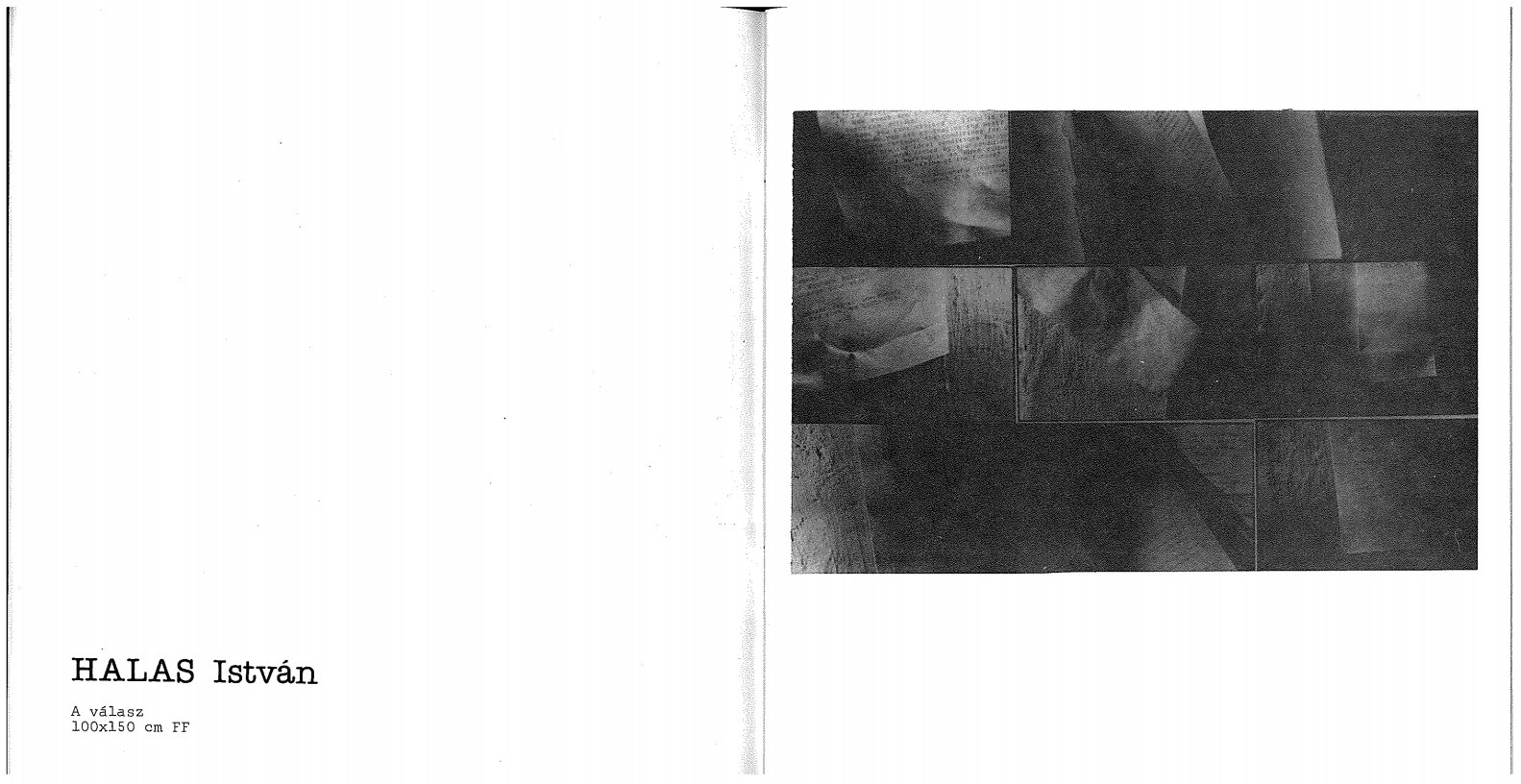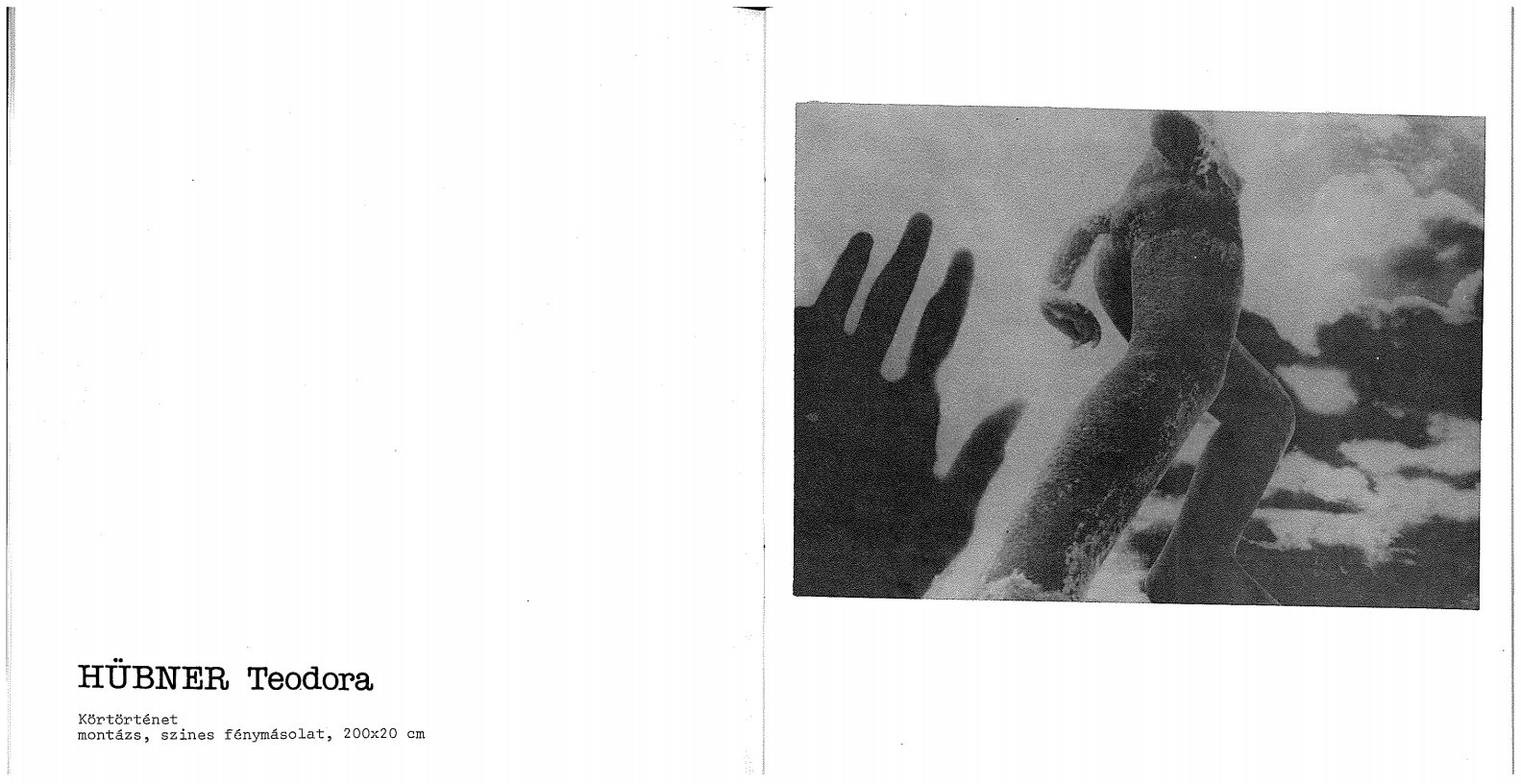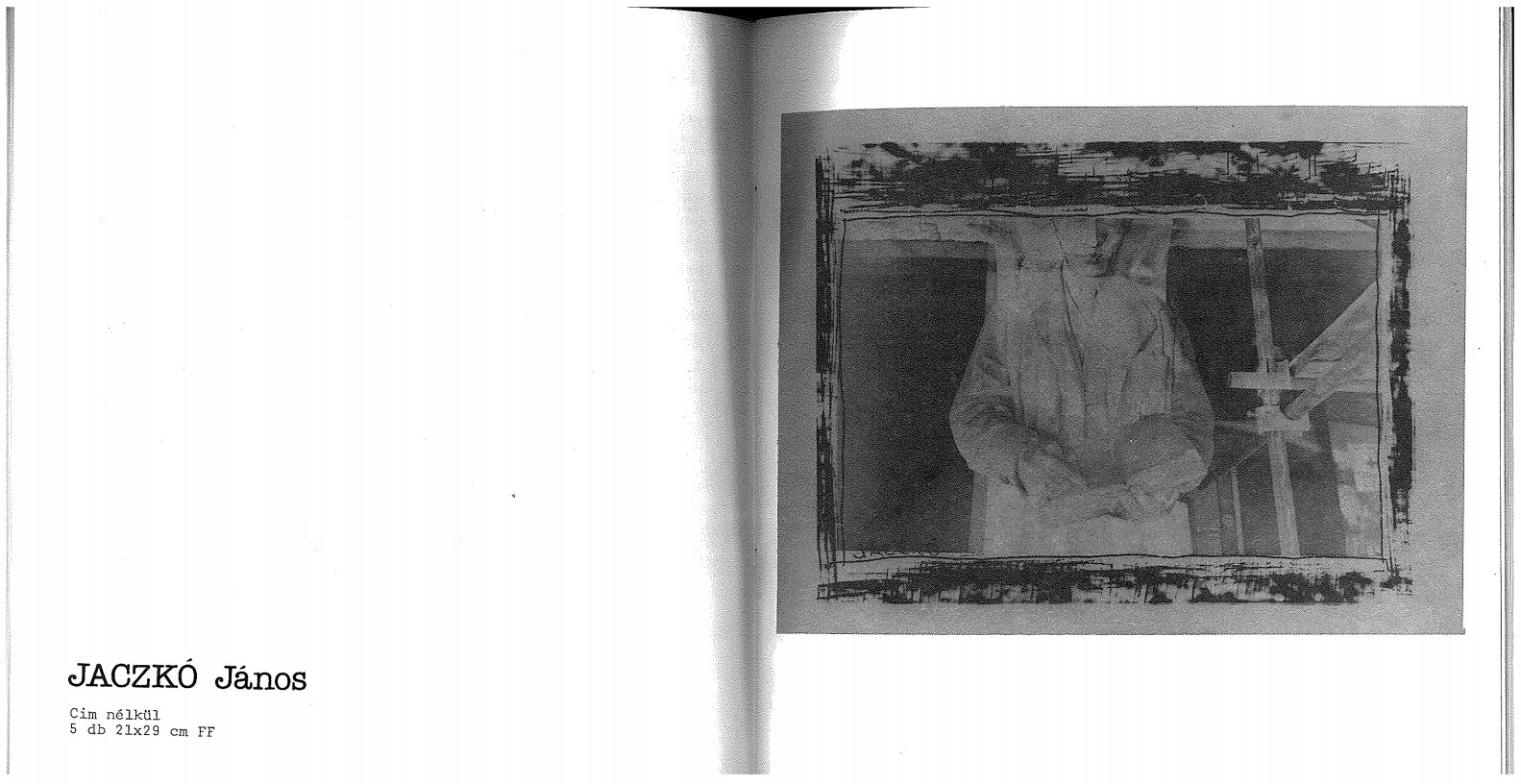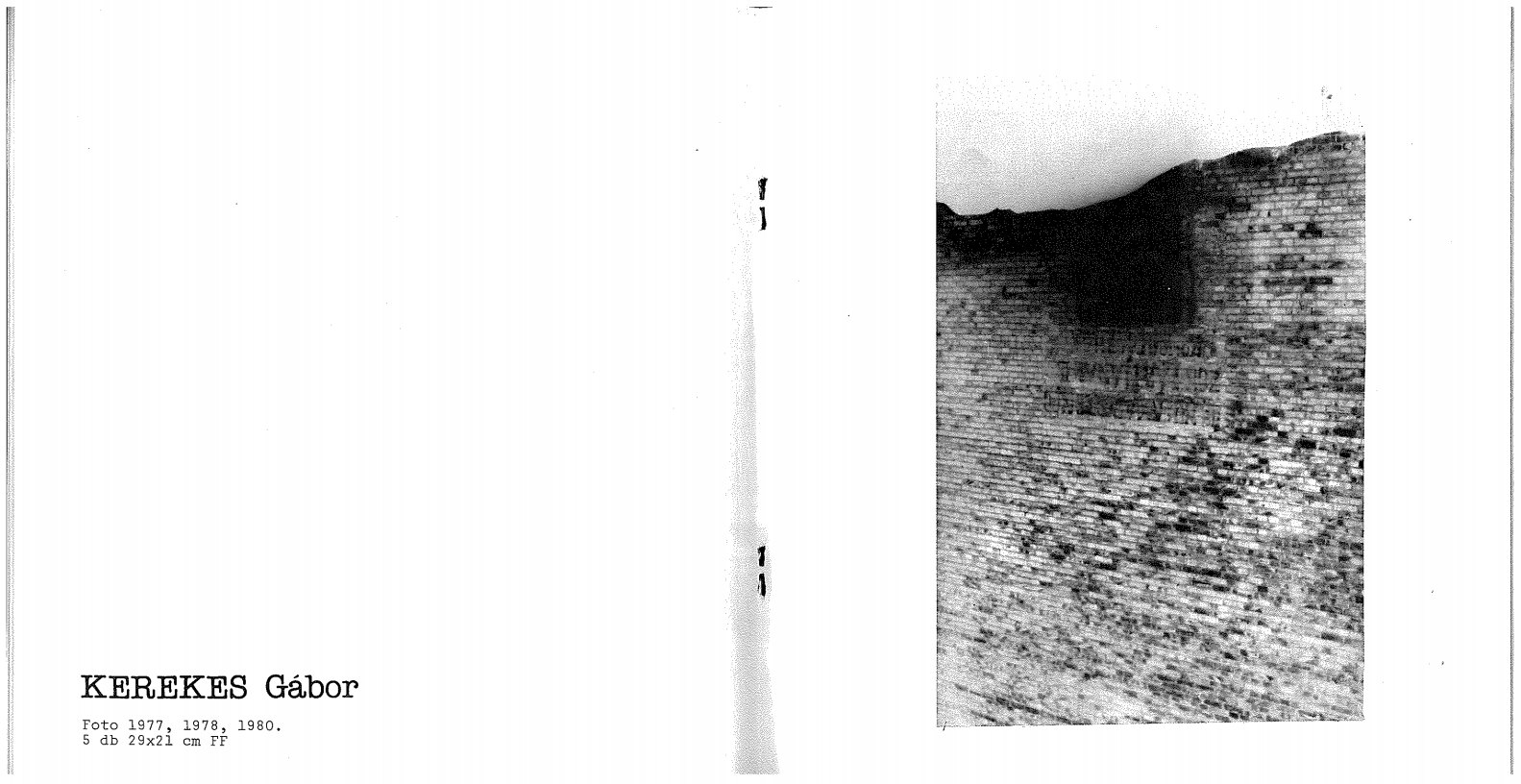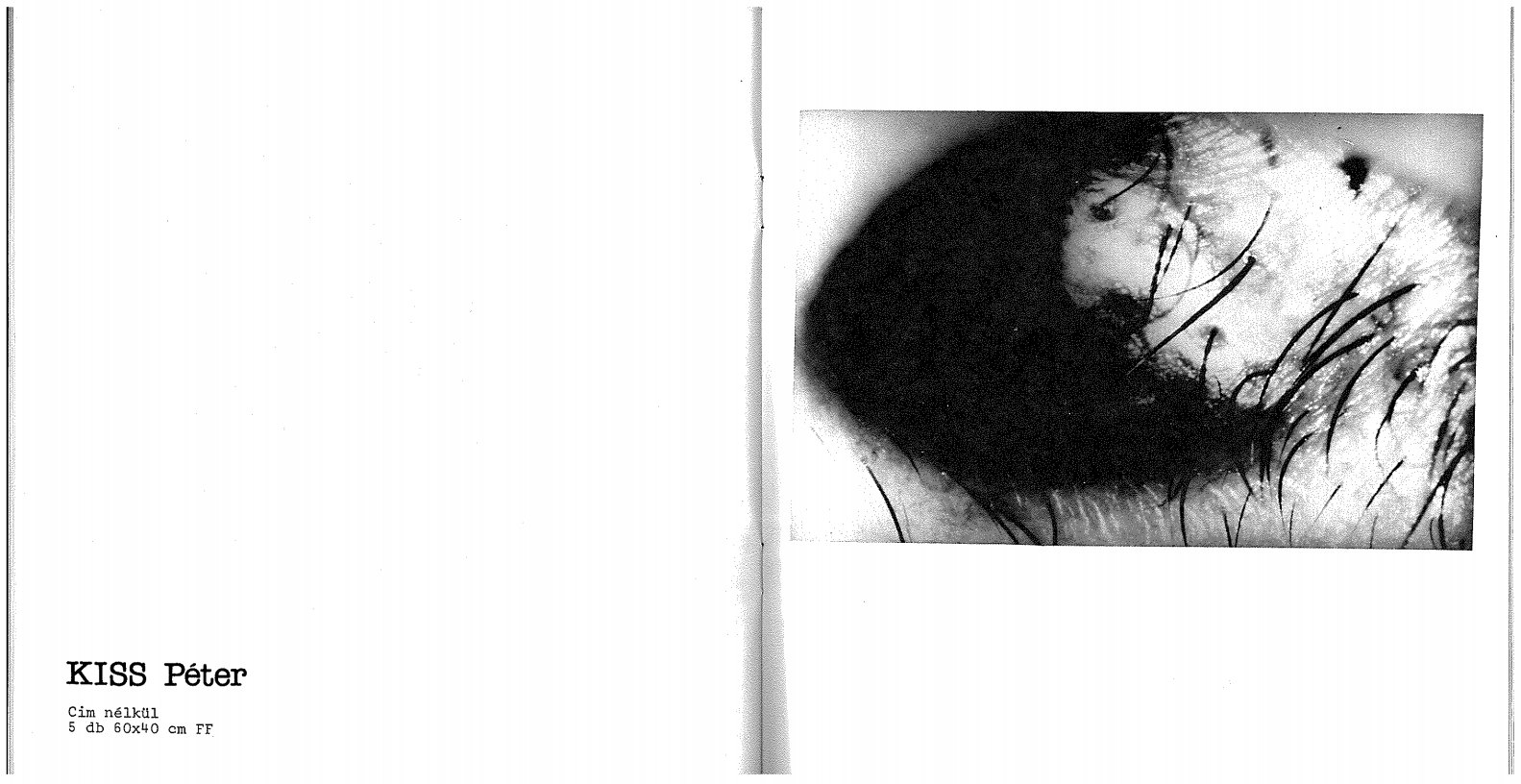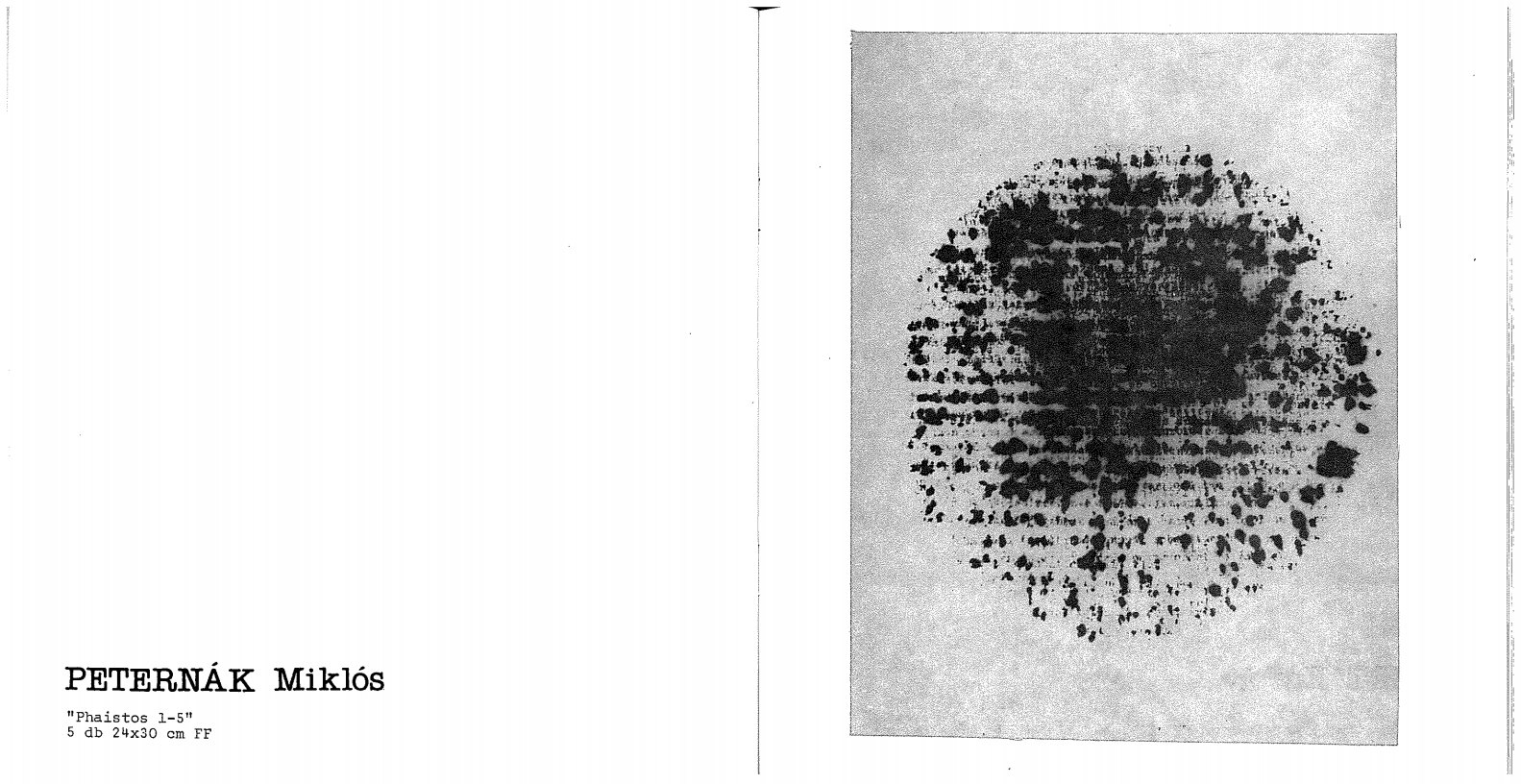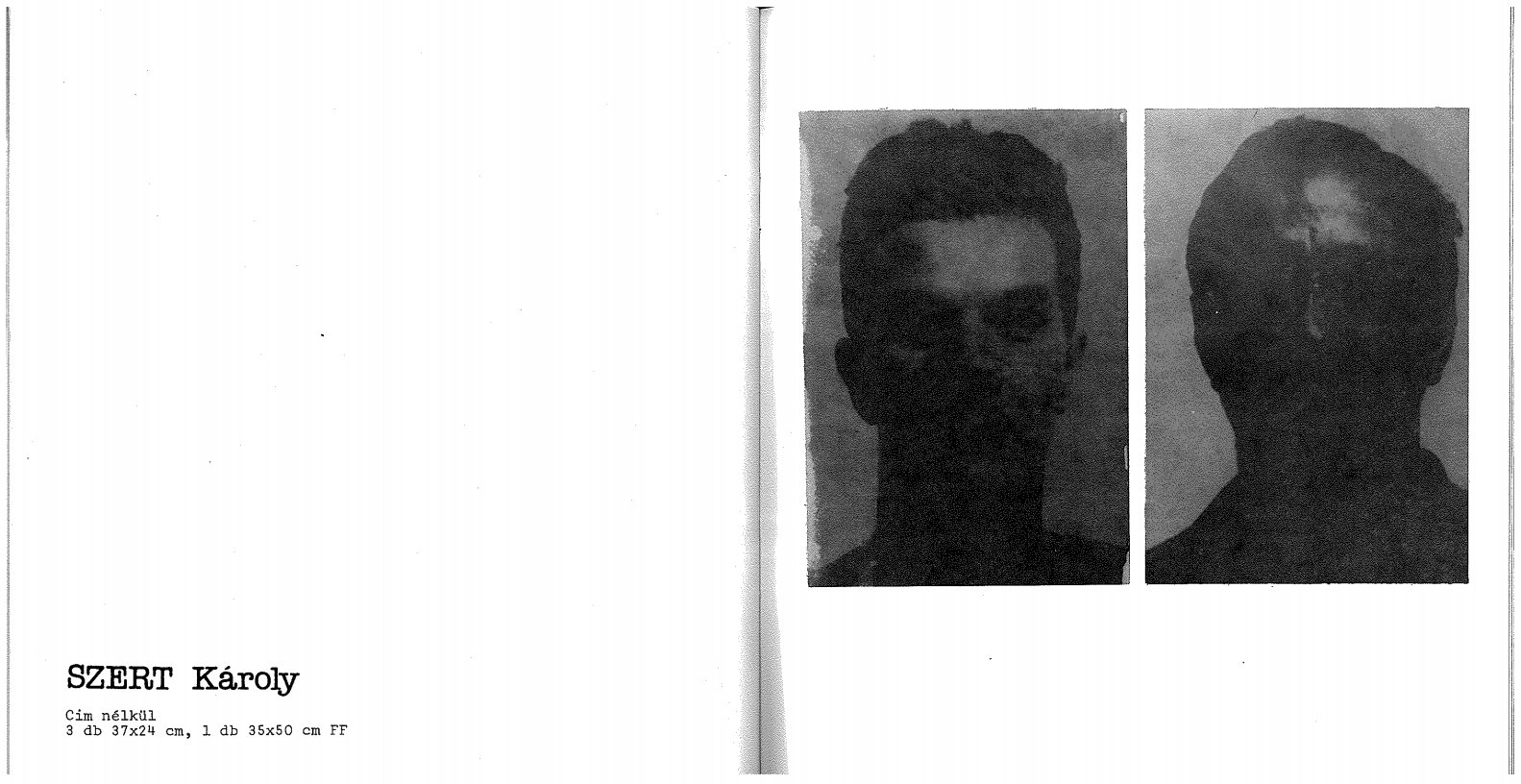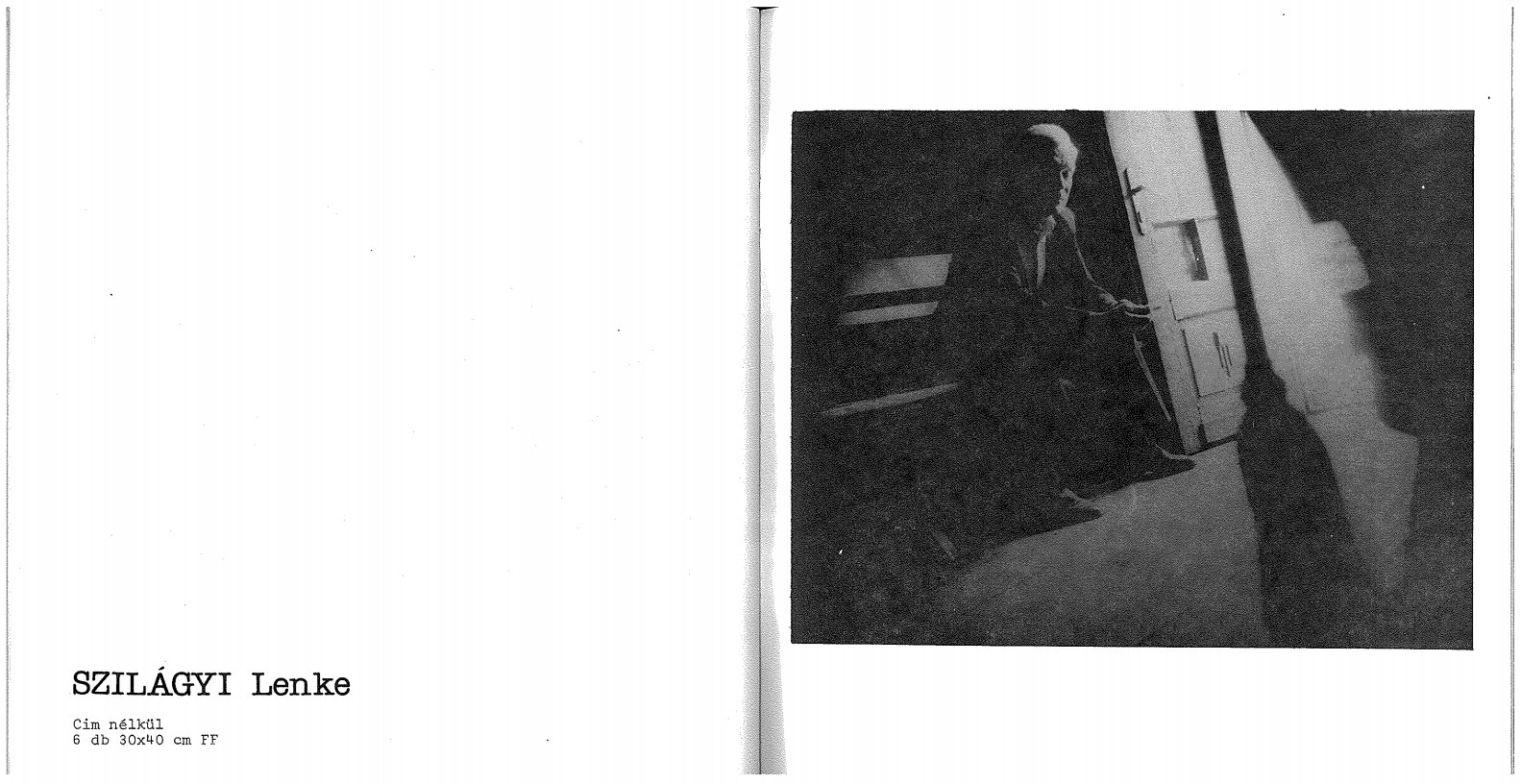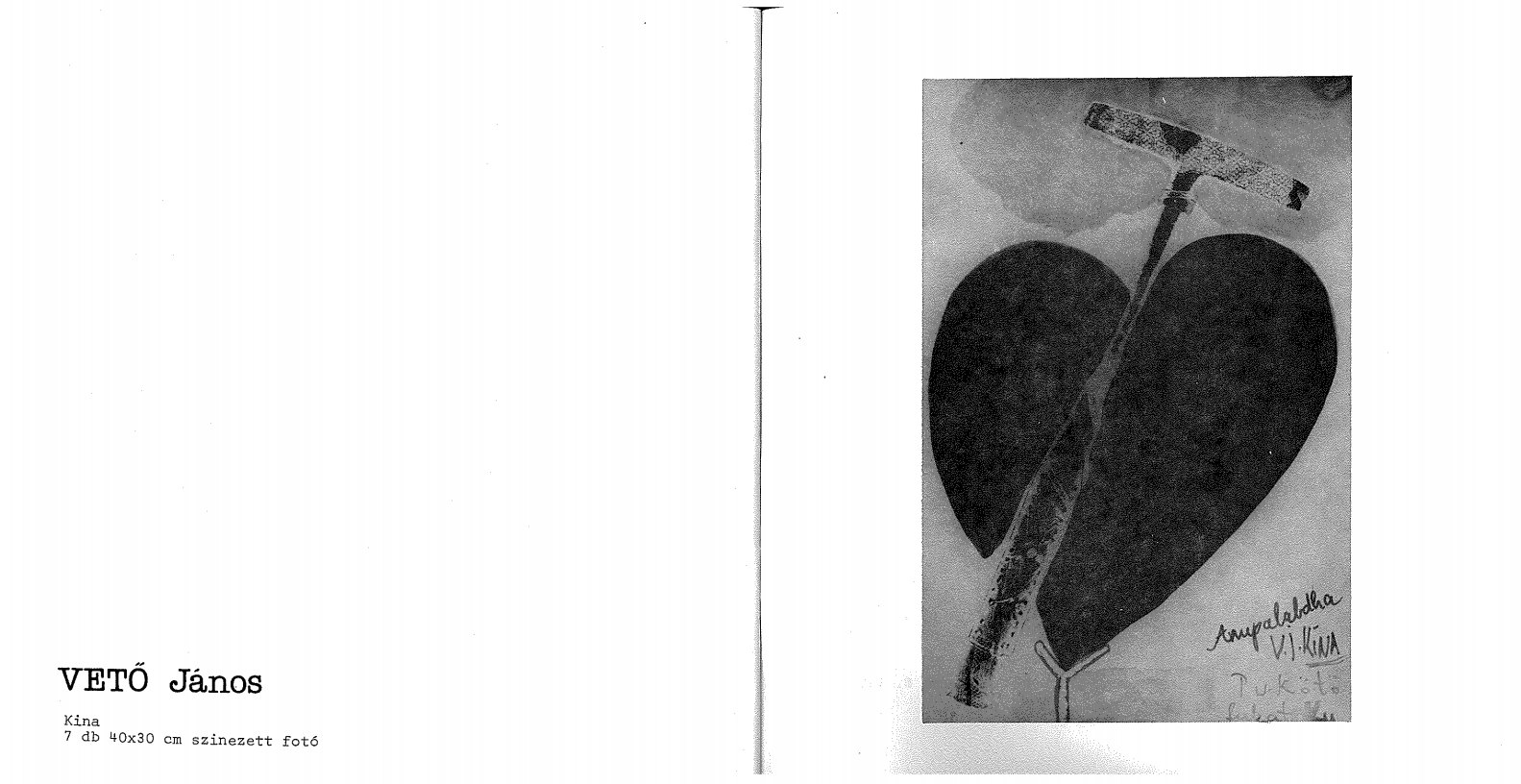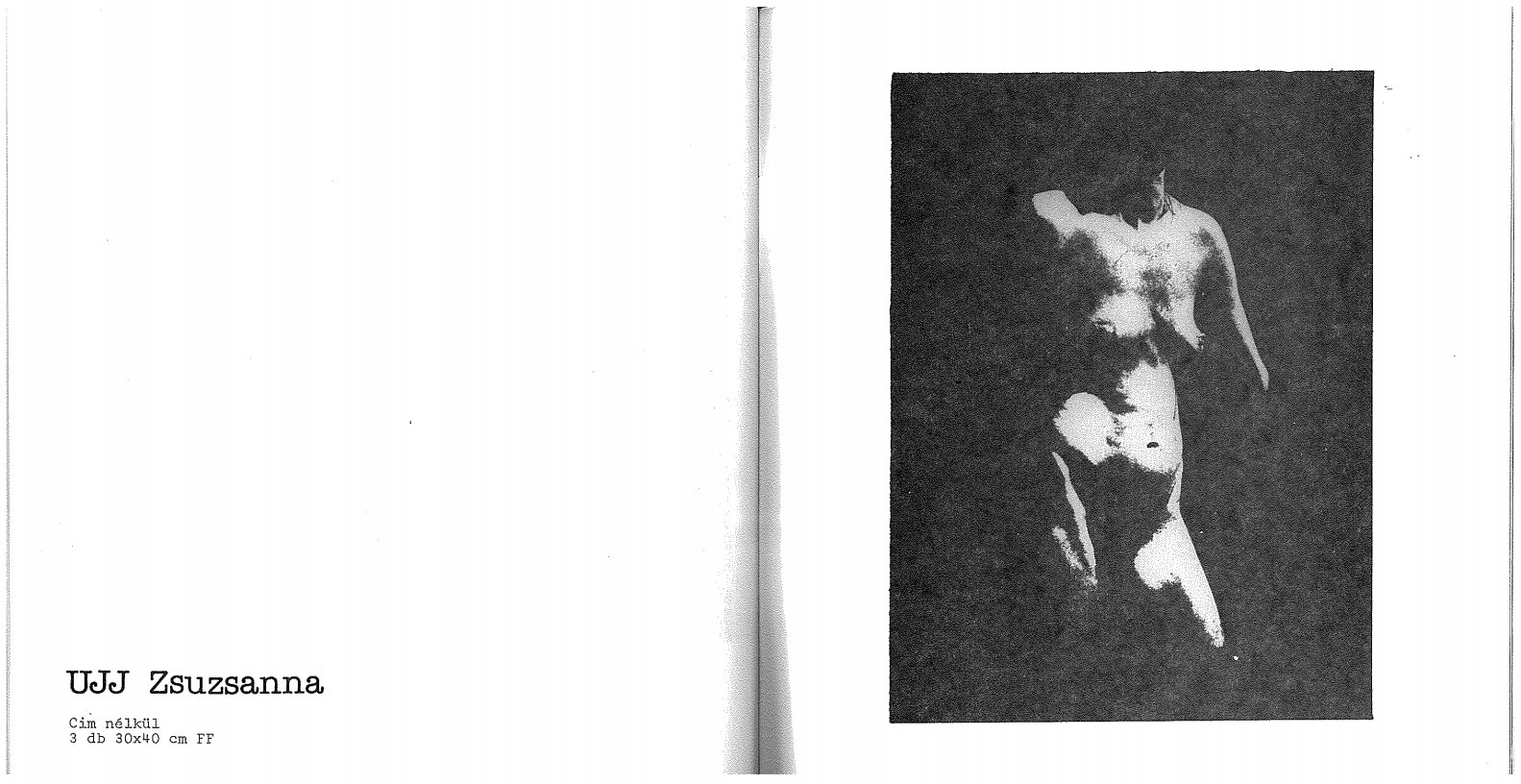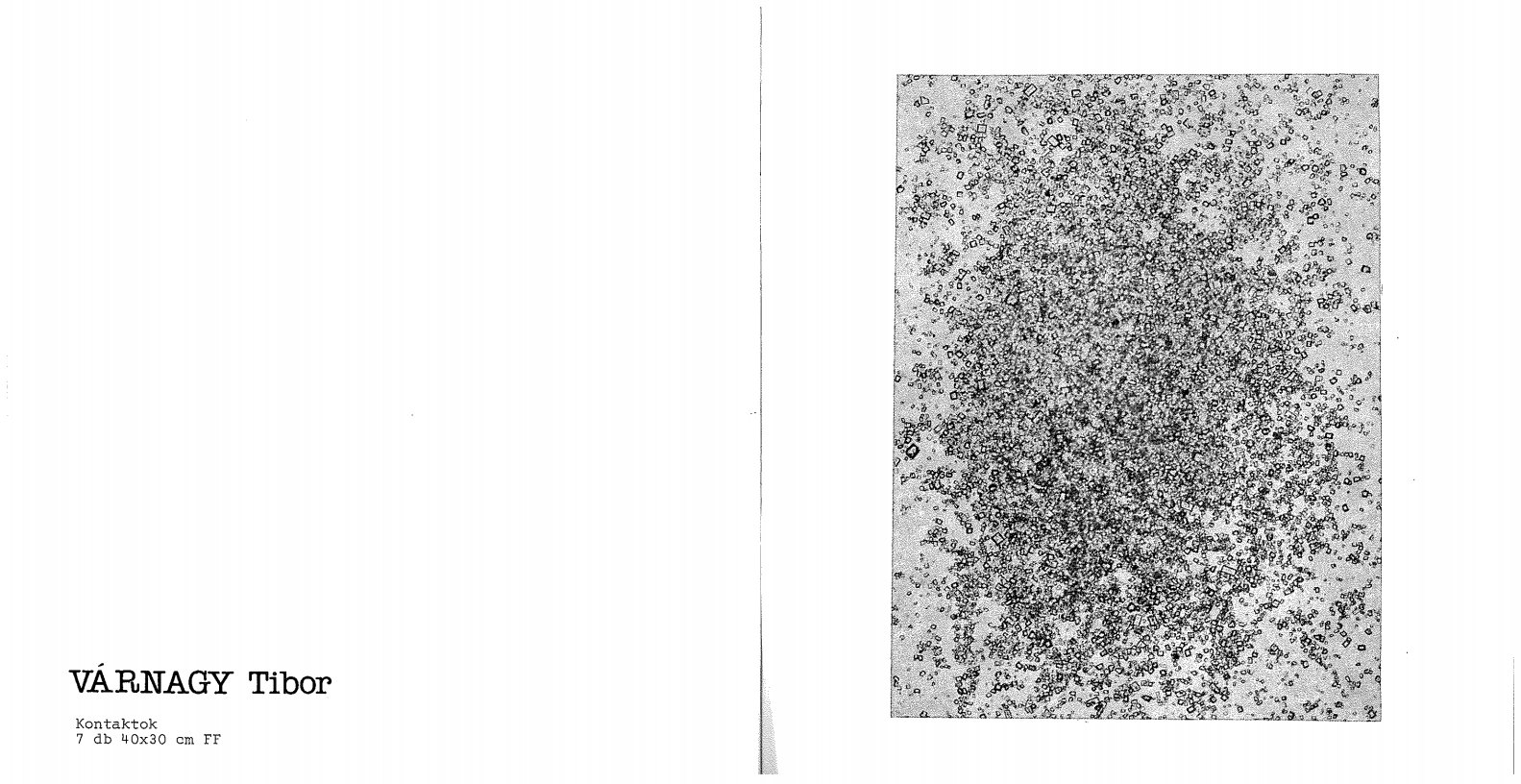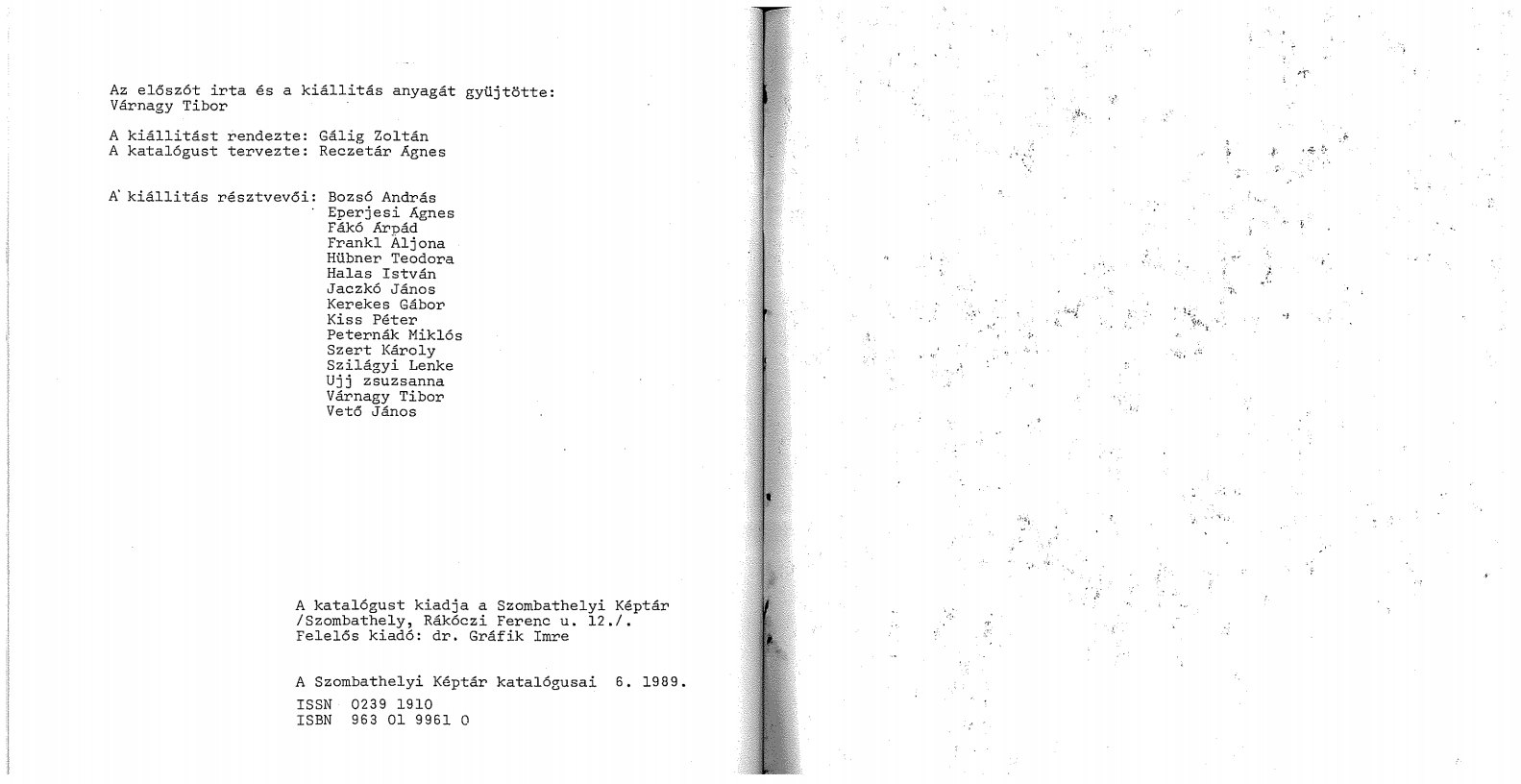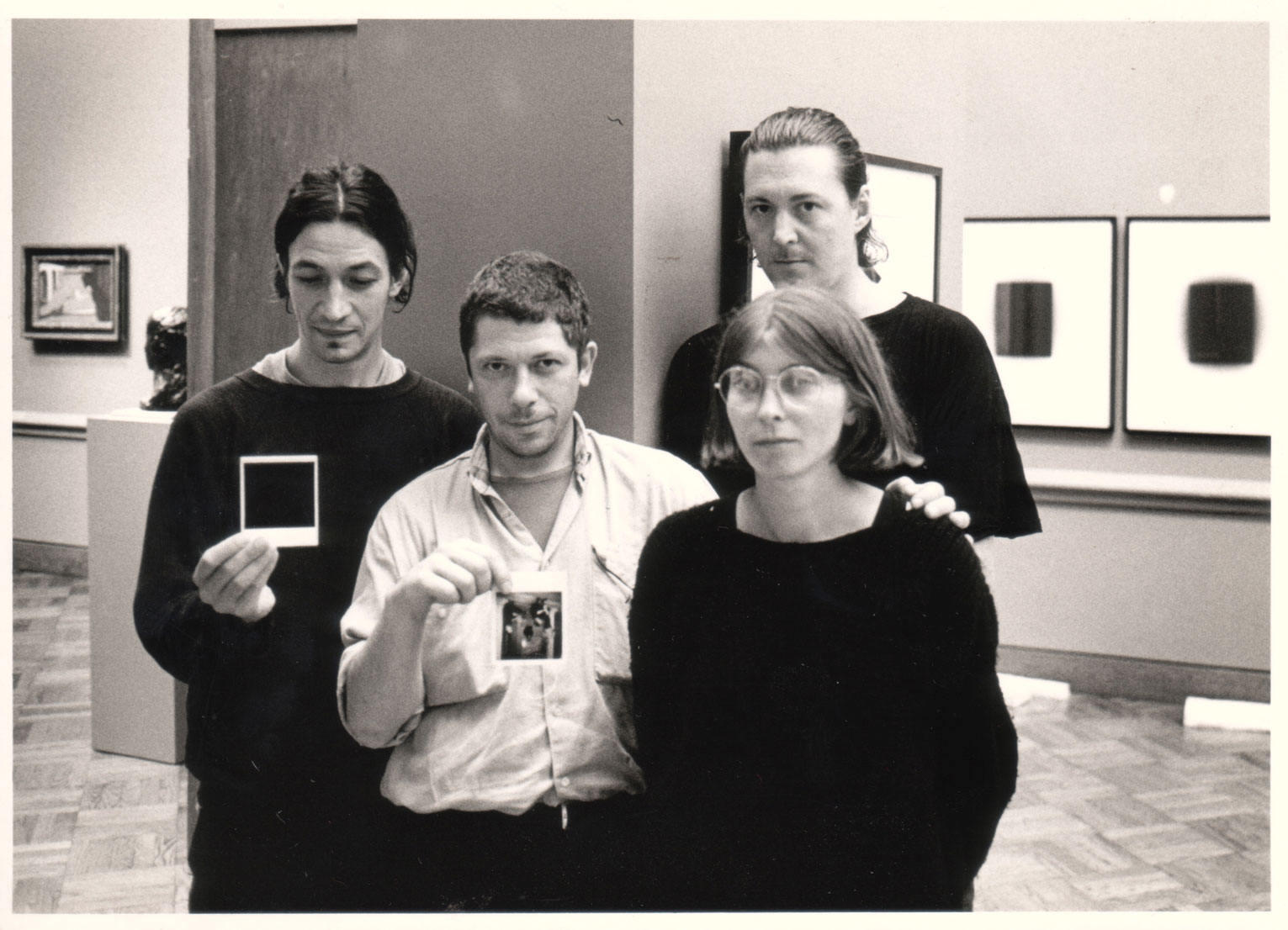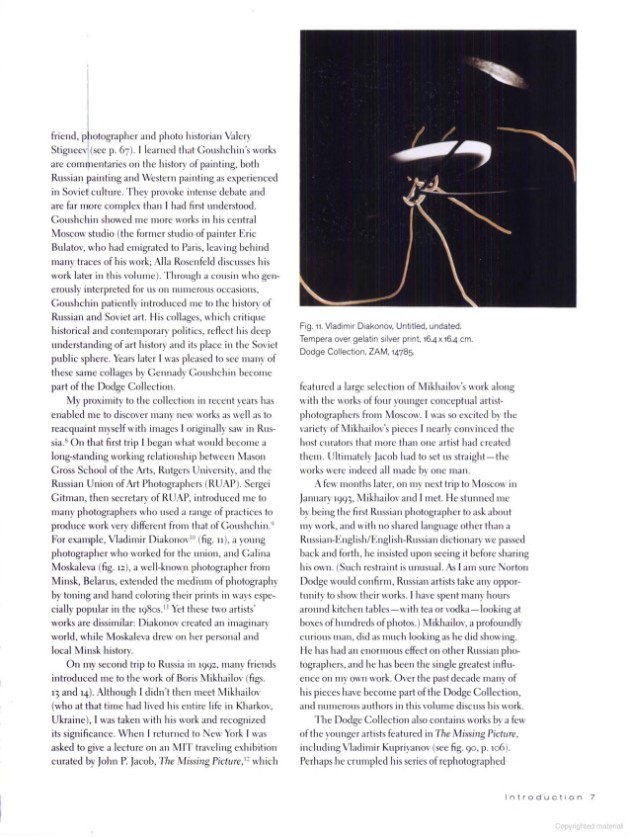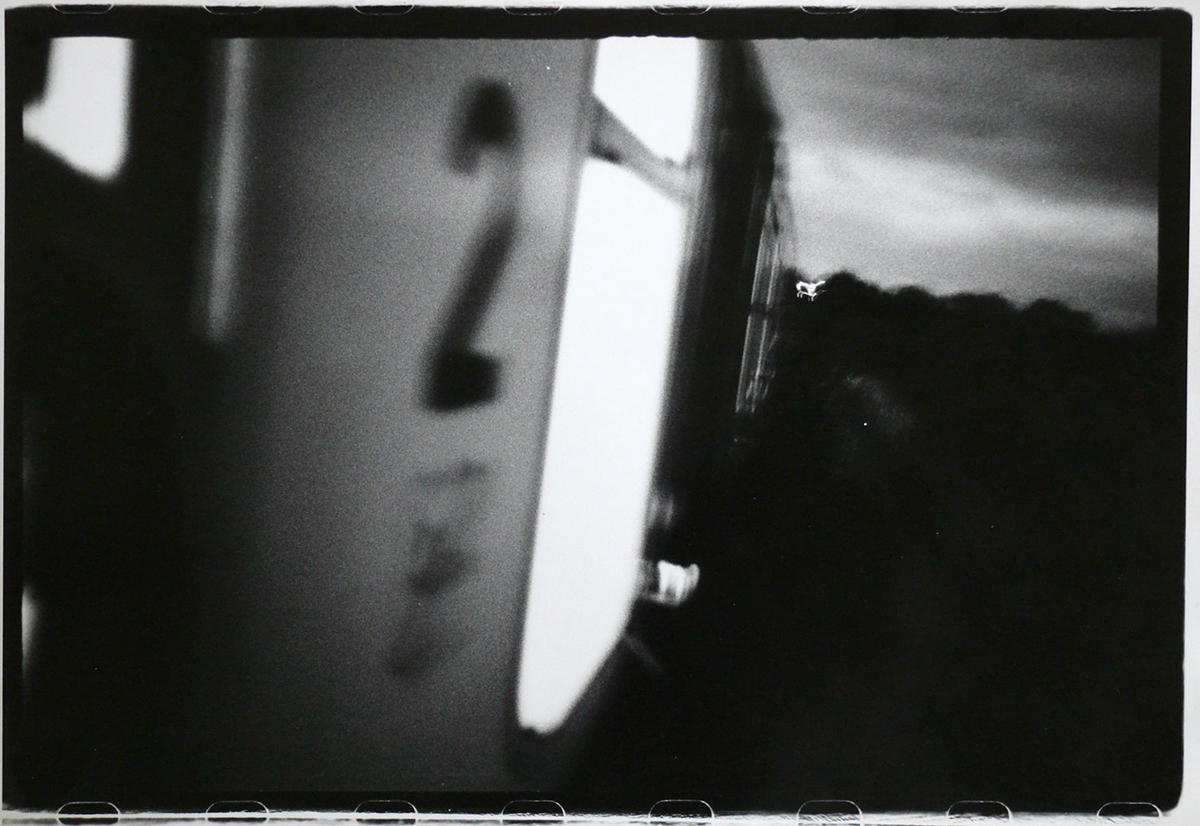Born out of opposition to the totalitarian darkroom... this is the penultimate art of spiritual confrontation. -- Jerzy Kosinsky, Introduction to Out of Eastern Europe, 1987
Introduction
Jacob began to work with Russian and Eastern European artists in the early 1980s, in conjunction with his multi-year project the International Portfolio of Artists Photography. Motivated by problems encountered by Eastern European contributors to the First Portfolio, he focused the Second Portfolio, begun in 1984, on Soviet and Eastern European photography. At the time, Jacob’s grasp of East/West geopolitics was poor. The invitation to contribute was sent to Russia, to artists working in the Soviet Bloc countries, and to artists in European Socialist countries such as Yugoslavia. The former and latter quickly distanced themselves from the label “Eastern European.” What he lacked in knowledge Jacob sought to make up for with enthusiasm. Invitees were asked to share the invitation with other artists. To limit postal censorship, and to lower costs for contributors, artists were asked to mail a single photograph or negative in an ordinary envelope, which Jacob would reproduce or print for the Second Portfolio. In 1984, Jacob printed and exhibited a selection of the works received for the East European Art Exhibition at No Se No Gallery, NYC.
Jacob travelled to Eastern Europe for the first time in April 1986, to exhibit the Second Portfolio at the Liget Galeria in Budapest. He traveled by rail for just under two months, from Belgrade and Novi Sad to Budapest, then going north via Bratislava, Prague, Dresden, Karl Marx Stadt, and Berlin, all the way to Elblag, returning to Budapest via Warsaw, Lodz, and Katowice. Along the way he visited mail artists and photographers, and he presented a slide lecture entitled Photography from the US, USSR, and Eastern Europe, showcasing his own work and that of colleagues in the US alongside Soviet and Eastern European photography received for the Portfolio project. Venues included the Liget Galeria and, in Poland, where he was registered by his hosts as a “Cultural Delegate” from the US, Praconia Dziekanka, Warsaw, and Attic Gallery, Lodz. In Czechoslovakia and the GDR he presented in private homes.
Jacob’s initial appeal for support from the Soros Foundation was declined. A representative of the Foundation explained that it supported him in principle, but the artists he was working with were too risky for it to be associated with. After an introduction from Rimma Gerlovina and Valeriy Gerlovin to Meda Mládková, Jacob visited her in Washington, DC, and presented the Second Portfolio to her. She spoke personally with George Soros, and the Foundation subsequently awarded Jacob the first of several round-trip travel grants. This was hugely consequential. With ongoing support from the Soros Foundation from 1986 through 1990, Jacob traveled twice annually to Eastern Europe and the USSR, each visit lasting eight or more weeks. He travelled as a tourist rather than the designated representative of an institution, staying in private homes. He was thus free from the restrictions on cultural delegates working for arts institutions, which would have limited his meetings to officially sanctioned artists. Unable to travel to some countries without control, Jacob opted not to work there, focusing instead on those where he could move more or less freely. The exception was the USSR, where Jacob travelled with a tourist visa but was not free to stay in private homes.
At each stop, Jacob was given photographs for the Second Portfolio project, and he collected ephemera and printed matter; books, exhibition catalogs, posters, brochures, and samizdat documenting a wide range of photographic activities. In contrast with other kinds of cultural production in Eastern Europe, photographs were not considered artworks and had no legal status or financial value. There was little risk in giving or receiving photographs, though their later use by Jacob resulted in political difficulties for some photographers. To counter this, all Jacob’s pre-1990 projects were accompanied by a disclaimer that the works presented were from his personal collection, and were exhibited or published without permission. This was a standard precaution of the time, already widely used by mail artists when publishing works received from the USSR and Eastern Europe. It was this grey zone of legality that made possible the presentation of the Second Portfolio in Budapest in 1986, as Jacob’s personal collection. At that time, Várnagy noted that it would be difficult, and possibly illegal, for a pan-Eastern Europe exhibition to be locally organized. Local cultural ministries frowned on East/East and East/West exchanges alike.
With the flexibility of his international air travel covered by the Soros Foundation, Jacob used the postal system to communicate with artists about his projects and the rail system to visit them, receiving and transporting their works back to the US. Jacob also couriered works for some photographers, to Western Europe and to the US. As his visits became more regular, his close contacts in each country collected printed matter for him to pick up at his next visit. Several times he accumulated so much that he had to cross into Western Europe and put it in storage, at Vienna Central Station or in West Berlin, for example, or at Heathrow when en route to the USSR. To do so always put both the artwork and his travel at risk, since it terminated a visa obtained in advance in the US and required him to apply for a new one at the frontier. Nevertheless, his activity seemed to go unnoticed, and he was never denied a visa.
Jacob had one close contact in each country who became a partner in his work: Milan Knizák in Czechoslovakia; Karla Sachse in East Germany; Tibor Várnagy in Hungary; Anna Bohdziewicz in Poland; and Alexei Shulgin in the USSR. Knizák was introduced by Fluxus collector Jean Brown, who also collected Jacob’s work. Sachse and her husband, Joseph Huber, were active mail artists in contact since the early 1980s. Várnagy and Bohdziewicz were early contributors to the Second Portfolio project, and actively promoted it to their networks. Shulgin was introduced to Jacob by photographer Igor Makarevich, who in turn was introduced by Rimma Gerlovina and Valeriy Gerlovin. It is important to recall that, especially during his first visits to Eastern Europe, Jacob was speaking artist to artist, and the Portfolio project was intended to produce a series of artist’s books. His development as a curator was an unexpected outcome. Jacob’s contacts were instrumental in helping shape his projects, as a whole, into a document of the wide ranging Eastern European photo-based work of the late 1980s, from documentary (Aljona Frankl, HU; Gundula Schulze, GDR; Zofia Rydet, PL), to film and performance based work (Tibor Hajas, HU; Tomas Ruller, CZ; Jozef Robakowski, PL), to network-based and conceptual photography (Tibor Várnagy, HU; Karla Sachse, GDR; Zygmunt Rytka, PL), etc.
Produce related to Eastern European & Soviet photography, pre-1990:
1983
The First International Portfolio of Artists Photography (artists book, NYC)
1984
East Europe Exhibition (exhibition, No Se No Gallery, NYC)
1985
The Second International Portfolio of Artists Photography (NYC Ed, artists book)
Networking in Eastern Europe (letter extracted for a chapter in Chuck Welch’s Networking Currents)
1986
The Second International Portfolio (exhibition, Liget Galeria, Budapest)
The Second International Portfolio (BP Ed, exhibition catalog, Liget Galeria, Budapest)
Photography from the US, USSR, and Eastern Europe (lecture tour, Liget Galeria, Budapest, Hungary; Praconia Dziekanka, Warsaw, Poland; Attic Gallery, Lodz, Poland; private homes in Czechoslovakia and the GDR)
1987
“Editorial” (catalog essay for Corresponding Worlds/Artists’ Stamps, Harley Francis, ed., Allen Memorial Art Museum, Oberlin, OH)
Artists in a Repressive Society (lecture, Allen Memorial Art Museum, Oberlin, OH)
Out of Eastern Europe: Private Photography (exhibition + catalog, List Visual Arts Center at MIT, Cambridge, MA)
Private Photography from Eastern Europe (exhibition, Rosa Esman Gallery, NYC)
The Photo Diary of Anna Beata Bohdziewicz (exhibition, Photographic Resource Center, Boston, MA; Red Eye Gallery, RISD, Providence, RI)
Private Photography from Eastern Europe (lecture, Society for Photographic Education Annual Conference, San Diego, CA)
1988
Leupold/Leupold: Staged Photographs (exhibition, Maine College of Art, Portland, ME)
“Photems Or: A History of the World in Five Parts,” (catalog essay for Photems, CEPA Quarterly, Winter/Spring)
John P. Jacob: I am Trying to See (exhibition + catalog, Liget Galeria, Budapest)
“Thomas Florscheutz: Extracting Meaning from Myth” (catalog essay for Thomas Florscheutz, Anderson Gallery, Commonwealth University, Richmond, VA)
1989
Three Hungarian Photographers: Halas, Ujj, Várnagy (exhibition, Houston Center for Photograpy, TX)
The Metamorphic Medium: New Photography from Hungary (exhibition + catalog, Allen Memorial Art Museum, Oberlin)
Tibor Várnagy (exhibition, Photographic Resource Center, Boston, MA)
Photography from Hungary and the USSR (lecture tour with Halas, Ujj, and Várnagy, Center for Soviet and East European Studies, University of Texas at Austin; University of Massachusetts, Boston; Allen Memorial Art Museum, Oberlin College, Oberlin, OH)
“Hungarian Photography: Ohne Title” (catalog essay for Zeitgenossische Ungarische Fotografie, Fotogalerie Wien, Vienna, Austria)
European Exchange: First East/West Photography Conference (panelist, Tibor Várnagy moderator, Exchange Gallery, Wroclaw, Poland)
“Metamorphic Game: The Art of Rimma Gerlovina and Valeriy Gerlovin” (catalog essay for Still Performances, List Visual Arts Center at MIT, Cambridge, MA)
“The Legacy of Witkacy” (essay, Spot, Houston Center for Photography, TX, Spring)
The Second Portfolio (Budapest version)
Following Jacob’s participation in the International Day Art mail art exhibition at the Liget Galeria, Budapest, organized by Tamás Soós, director Tibor Várnagy proposed an exhibition of the Second Portfolio in Budapest. Várnagy noted that it would be difficult, and possibly illegal, for such an exhibition to be locally organized. It had not been attempted before. It was a limit, and he wanted to test it. Várnagy invited Jacob to transport and present the Second Portfolio as his personal collection. Várnagy also solicited contributions to be sent directly to the gallery in Budapest. The exhibition opened in May, 1986. Due to the volume of the material submitted, a second exhibition venue, the Galeria 11, was required to present it all.
The exhibition included works by seventy-five artists from throughout Eastern Europe, one from the Soviet Union, and two Soviet emigre artists living in the US. The exhibition catalog, xerox-printed with a six-page gatefold of photographs by Polish artist Jozef Robakowski, contained an essay by Hungarian photographer Laszlo Lugosi-Lugo, and a co-authored text by Várnagy and Jacob. The catalog also included a disclaimer that the works presented were from the personal collection of the curator, and exhibited without the permission of the artists.
An address list of participants was circulated by Várnagy to the participants and among a small but expanding network of semi-official spaces. It simultaneously marked the existence of a parallel culture of photo-based artists working in Eastern Europe while contributing to the awareness of semi-independent spaces committed to presenting such work. Thus, the Second Portfolio exhibition set the stage for a series of increasingly adventurous international exchanges and events, including the exhibition of Milan Knizak’s Fire Prints and Matthias Leupold’s Flag Raising Ceremony at the Liget Galeria, and a long-term cooperation between the Liget and the Mala Galeria, the “little gallery” of the Polish Photographers’ Union, under the direction of Marek Grygiel, in Warsaw.
Second Portfolio, ed. Budapest (Open/Download PDF)
Contributors (by country):
Bulgaria: Guillermo Deisler
Czechoslovakia: Karel Bartonicek; J.K. Celis; Helena Hátleová; Miroslav Klivar; Milan Knìzák; Pavel Mara; Silos Sejn; Dezider Toth
East Germany: BERM/Wolfgang Eigendorf; Michael Brendel; Martina & Steffan Giersch; Michael Groschopp; Joseph W. Huber; Steffen Jacob; Karsten Matthes & Petra Grund; Birger Jesch; Andreas Münstermann; W.W. Neumann; Hans Praefke; Karla Sachse; Jurgen Schöberl; Joachim Stange
Hungary: Artpool/Galantái; András Lengyel; Atilla Pácser; László Beke; Péter Bokros & Inconnu; Péter Forgács; Flesch Bálint; Aljona Frankl; István Halas; János Sugár; M. Detvay Jenö; László 2. Hegedüs; Szilágyi Lenke; László Lugosi-Lugo; Géza Perneczky; ; Róbert Swierkiewicz; Soós Tamas; Gábor Tóth; Tibor Várnagy; Zoltán Bógdandy; Zsigmond Károlyi; Tibor Zátonyi; Anna Kárpáti
Poland: Anna Bohdziewicz; Jacek Józwiak; Piotr Kowalski; Ir Kulik; Andrzej Kwietniewski; Natalia LL; Miklos Novottny; Zdlislaw Pacholski; Kuba Pajewski; Józef Robakowski; Piotr Rypson; Zygmunt Rytka; Tomasz Sikorski; Janusz Szczucki; Tomasz Szmosiontek; Krystyna Ziach
Romania: Cálin Beloescu; Ioan Bunus; Florin Maxa; Veres Pavel; Iosif Eiraly
Yugoslavia: Dobrica Kampereelic; Janez Pipan; Predag Sidanin; Jaroslav Supek; Andrej Tisma
USSR: Rimma & Valeriy Gerlovin; Igor Makarevich; Vagrich Bakhchanyan
Liget Gallery page:
http://www.ligetgaleria.c3.hu/dupla8390.htm
Out of Eastern Europe: Private Photography
After returning to the US from his first visit to Eastern Europe, Jacob was invited by Dana Friis-Hansen, then a curator at the List Visual Arts Center at MIT, to submit a proposal to guest-curate an exhibition there, based on the Second Portfolio. Remarkably, considering Jacob’s lack of experience, the proposal was approved. Altogether unexpectedly, for himself and the artists he met earlier that year, Jacob returned to Eastern Europe in October 1986, and traveled to the Soviet Union for the first time. In Budapest, Várnagy organized a parallel exhibition at the Liget Galeria of the Hungarian photographers under consideration, not all of whom were ultimately included in the MIT exhibition. Jacob met István Halas, who had been abroad during Jacob’s first visit. Zsuzsanna Ujj, in the meantime, had begun work on a series of staged photographs. Halas, Ujj, Várnagy, and Jacob formed a close and enduring bond at this time.
Out of Eastern Europe: Private Photography opened at the List Center in January, 1987. It was presented in conjunction with the exhibition Counter Monuments: Krzysztof Wodiczko’s Public Projections. Wodiczko, then living in New York, was an early advisor for the Second Portfolio project, and Jacob had introduced him to the List Center. A more concise selection than the Second Portfolio, Out of Eastern Europe focused on artists working in the Soviet Bloc nations Jacob had visited. The exhibition included works by thirty artists from Czechoslovakia, East Germany, Hungary, and Poland, and was accompanied by a catalog with essays by Jacob and Lynn Zelevansky. Repeating the security measure used in Budapest, the catalog included a disclaimer that the works presented were from Jacob’s personal collection, and were exhibited without permission of the artists. For its presentation in New York City, at the Grey Art Gallery at New York University, then directed by Tom Sokolowski, émigré writer Jerzy Kosinski contributed an introductory statement describing the exhibition as “the penultimate art of spiritual confrontation.”
In retrospect, Out of Eastern Europe was a transitional event for Jacob. All earlier exhibitions, including the presentation of the Second Portfolio in Budapest, had been guided by the mail art principles “No fee, no jury, all works shown, none returned.” All earlier printed works, particularly the multi-volume International Portfolio project, were guided by the principle of assembling. In his text for the First Portfolio, Jacob declared that principle “perhaps the most important advancement in the curatorial arts during this century,” because it denied the curator her traditional authority and placed it in the hands of artists. Though he wore his authority lightly and with visible discomfort in Out of Eastern Europe, it was a curated exhibition. It was a first, with real consequences for Jacob.
Installation Photos
Floorplans
From the Exhibition
Jacob was utterly unprepared for the attacks, personally and in the press. Out of Eastern Europe traveled widely in the US, and received extensive media coverage. In an article for AfterImage, artist/writer Deborah Bright critiqued the exhibition as paying homage to “the Greenbergian aesthetic and the culturally dominant liberalism it serves.” During a presentation (his first ever) for the annual national conference of the Society for Photographic Education, Ute Eskildsen, curator of photography at the Museum Folkwang, Essen, personally attacked Jacob, repeatedly interrupting him and accusing him of misrepresenting the art of Eastern Europe. In San Francisco’s Artweek, artist Mark Alice Durant wrote of the “knee-jerk, paranoid reaction [with which] some politically correct left-wing academics” were responding to the exhibition.
In a review for the New York Times, photography critic Andy Grundberg observed the exhibition’s relatedness to “Conceptual, Fluxus, Earth, Performance and Correspondence art forms,” making it different more in circumstance than in kind from Western art. For those who accepted its curatorial premise, as being directly related to Jacob’s work as an artist and his interactions with Eastern European artists, the exhibition offered opportunities for revelation. For those who brought to it another set of art historical or geopolitical expectations, it could feel frustratingly neutral. Already in its title, Jacob’s use of the descriptor “private photography” sought to isolate his work and Out of Eastern Europe from the false binary of official/unofficial art and culture. Viewers seeking a stronger political stance by its curator or its artists were disappointed.
The simple premise, that an art of the everyday flourished in Eastern Europe sustained by the enthusiasm of its makers, was the central and most challenging contribution of Out of Eastern Europe. This was an exhibition of works by non-professional artists, made, shared, and exchanged among private or semi-public networks. Visitors who affiliated with conceptual, Fluxus, earth, performance, and mail art saw themselves in the exhibition because, in the West as in the East, those practices were still marginalized in the mid-1980s, operating largely outside the art market. For most visitors, however, what Vaclav Havel labeled Eastern Europe’s “parallel cultures,” distinct to the Soviet Bloc nations but also distinctive from one to another, was unthinkable. An artistic practice not motivated by politics or the marketplace was beyond their experience or their capacity to imagine. Moreover, the inevitable self-positioning of Western viewers as the originators of conceptual, Fluxus, earth art, etc., made anything coming from elsewhere seem duplicative of the West, a copy. Jacob, too, frequently responded from bias. “You [also] had to face up to the preconceptions that American critics had about Eastern art at the time,” Várnagy reminded him in 1995, referring to the criticism of Out of Eastern Europe.
Press
The typewriter was central to Jacob’s early mail art practice. As an artist presenting the work of other artists, he felt compelled to respond to each critic, typing long letters to the editors of newspapers and journals, accepting criticism where it was due and detailing where their writers were misinformed or wrong. Few of the letters were published but, though he did not yet recognize it as such, his dialogue with the public media initiated a process of self-criticism that was transformative. It was a kind of critical thinking that he had never learned at home or in school, that, in time, he developed into an artist-centered curatorial practice. It was this that made Out of Eastern Europe such a transitional event in his career. If he was to continue as a curator, as he had by then decided affirmatively, he would need to wear his authority less lightly. This put Jacob at odds with both the free-for-all principles of mail art and the neutral editorial principles of assembling, which until then had guided his work on the Portfolios. It meant finding a different path for future editorial and curatorial work.
It also put him at odds with some of his colleagues in Eastern Europe, for whom the state was the ultimate editor. Though things differed from one Soviet Bloc nation to another, under state socialism everyone worked for the same boss. The museum curator, the magazine editor, the street cleaner, and the artist all served common professional objectives by all serving the state. Those who chose to work as professional artists received the benefits and endured the limitations of their profession. Others, like Várnagy and Sachse, worked in art related fields (gallerist and teacher, respectively). They did not receive the perks that professional artists enjoyed, such as easy access to inexpensive art supplies. But they were not prohibited from making and sharing art. An active amateur culture was a benefit of living under state socialism. There was no art marketplace, but there were periodicals for amateurs and professionals, different stores for them to obtain supplies, and lively cultural organizations, like the Liget Gallery, that supported non-professional artists with exhibitions, competitions, and other opportunities.
The Liget was among the earliest such spaces to become international in its programming, when Várnagy invited Jacob to present the Second Portfolio in Budapest. For Várnagy, the primary role of the gallerist was to hand the keys of the gallery to an artist, and help facilitate whatever she wanted to do there. It was a deliberately undirected space in an otherwise highly directed culture. Out of Eastern Europe was a slight narrowing of the door that was opened to Jacob in Budapest. He excluded emigre artists altogether, and limited contributors to those working in the Soviet Bloc nations (which eliminated Yugoslavia) where he was able to travel freely (which eliminated Romania, Bulgaria, and the USSR). He deferred Soviet photography to its own exhibition, should that prove possible. And he sought to feature artists whose conceptual and media-based work with photography arose as an art of resistance within an evolving socialist aesthetics, but who did so as outsiders through their non-professional status, through the freedoms and limitations on amateur artists. Ultimately, the core of Out of Eastern Europe was the material originally exhibited in Budapest. It was the first of three large survey exhibitions that Jacob organized related to Eastern Europe. The second was Chimaera: Aktuelle Photokunst aus Mitteleuropa (1997), and the third/last Recollecting a Culture: Photography and the Evolution of a Socialist Culture in East Germany (1999), both organized with the Staatliche Galerie Moritzburg Halle. Between them, he focused on individuals and small groups of artists, working in and responding to an Eastern Europe transformed by the political changes of 1989.
In anticipation of its thirtieth anniversary, in 2016 Jacob and Várnagy proposed a re-hanging of Out of Eastern Europe at the Ludwig Museum, Budapest. Tentatively titled Long Journey: Re-Staging Histories, the effort was not successful. Nevertheless, work on that proposal resulted in Jacob and Várnagy drafting a timeline of their corresponding projects in the 1980s and 1990s.
Out of Eastern Europe: Private Photography (Open/Download PDF)
January 17 – April 12, 1987
List Visual Arts Center at MIT, Cambridge, MA
Contributors (by country):
Czechoslovakia:
Karel Bartonicek, Ivan Kafka, Milan Knizák, Libor Krejcar, Tomás Ruller, Rudolf Sikora, Peter Zupnik
East Germany:
Thomas Florschuetz, Leupold/Leupold, Andreas Prüstel, Karla Sachse, Gundula Schulze
Hungary:
Frankl Aljona, Hajas Tibor, Halas István, Hegedüs 2 László, Károlyi Zsigmond, Miklós Novottny, Schmall Károly, Szilágyi Lenke, Várnagy Tibor, Zátonyi Tibor
Poland:
Janusz Bakowski, Anna Bohdziewicz, Jerzy Caryk, Lucjan Demidowski, Józef Robakowski, Zofia Rydet, Zygmunt Rytka, Antoni Zdebiak
Texts: Katy Kline, JP Jacob, and Lyn Zelevansky
Exhibition Venues:
List Visual Arts Center, MIT, Cambridge, MA; Grey Art Gallery at New York University, New York, NY; Art Space, San Francisco, CA; Salina Art Center, Kansas City, MO; Painted Bride Art Center, Philadelphia, PA;
Baxter Art Gallery, Maine College of Art, Portland, ME
Parallel Exhibitions, US:
In conjunction with Out of Eastern Europe, Jacob organized one-person exhibitions by Anna Bohdziewicz at the Photographic Resource Center, Boston, MA, the Area Gallery, University of Southern Maine, Portland, and the Red Eye Gallery, Rhode Island School of Design, Providence; by Matthias Leupold (GDR) at the Maine College of Art, Portland; and by Thomas Florscheutz (GDR) at the Anderson Art Gallery, Virginia Commonwealth University, Richmond, VA.
During its presentation in New York, Jacob organized a parallel exhibition at the Rosa Esman Gallery, introducing works by Klaus Elle (GDR) and Krzysztof Pawela (PL).
Parallel Exhibitions, Hungary:
In Budapest, Várnagy organized a parallel exhibition of the Hungarian artists selected for Out of Eastern Europe (including several who were excluded from it: Bálint Flesch, Zoltan Hajtmanszki, Zsuszanna Ujj, and Janos Veto) in October, 1986.
In 1987, Várnagy organized exhibitions by several Second Portfolio participants, including Fireprints by Milan Knizák (CZ), Egotizm by Krystina Ziach (PL), and Fahnenappel by Matthias Leupold (GDR).
Parallel Exhibitions, Poland:
In 1988, Várnagy also organized the first exchange exhibition of Hungarian photo-based works at the Mala Galeria, Warsaw, led by Marek Grygiel. One year later, Grygiel organized an exhibition of Polish works for the Liget Galeria.
Related:
Poland
Anna Beata Bohdziewicz: The Photo Diary, or the Song About the End of the World
In Budapest, In September
Marek Grygiel, Warsaw, 2014
Budapest is always a great pleasure to return to. Not only because it is a beautiful and interesting city. It is always a bit of a return to the past.
In the late 1980s, a group of Hungarian artists centered around the Liget gallery came with the young American critic and curator John Jacob and Tibor Varnagy to Warsaw and Lodz. The result of this visit was an exhibition that Jacob organized in the U.S. – in short, an exhibition of independent art from Eastern European countries. It was also then that the first contacts and cooperation between Liget Gallery and Mala Gallery in Warsaw began. In June 1987, during the visit of Pope John Paul II to Poland, an exhibition of Liget Gallery artists was held at Mala, and already in the spring of 1988 the first exhibition of Polish artists was held at Liget.
In the years that followed, there were many mutual contacts and artistic endeavors in which many participants took part. A large international group exhibition FOTOANARCHIV, with the participation of Austrian artists as well, the famous happenings of Lodz Kaliska, a trip to Transylvania or the Hungarian province to Szombathely, Miskolc, Szekesfehervar, Zala, which was later reported in Mala Gallery. An exhibition by Gabor Kerekes, a prominent Hungarian photographer who died this year, or the celebration of the Lodz Kaliska exhibition “Let Men Die” at the Center for Contemporary Art in Warsaw with a performance by Zuzsi Ujj and the underground group Csokolom four years ago.
There were many such events. We are adding more to them: Ania Bohdziewicz’s Photo Diary exhibition, which opened in mid-September at Liget Gallery. A gallery that managed to survive the recent period of administrative and political crisis and which, unlike the Mala Gallery (closed by ZPAF in 2006), continues its very rich and interesting program.
The Photo Diary is a project that the author has been carrying out continuously since 1982. To date, it has already produced 10,000 photos. It is a very authorial, own, sometimes intimate record of everyday life, but also of landmark events that changed the course of history. The author was in the circle of anti-communist democratic opposition, she photographed all the major events, strikes, transformations we have witnessed over the years.
It can be said that this is such a civic-social record, sometimes very lyrical when describing private reality, family, friends, and sometimes sharp and critical, getting into the most heated events of the era. All the photos, accompanied by the author’s own written commentary, constitute a very personal document of the times we live in.
To the 48 selected photographs from these more than 30 years – and it must be said that such a narrow selection is not easy – the author has added an excerpt from her Budapest Photo Diary from 1988, when she was with a group of artists at the Liget Gallery for the first time.
Also on display during the exhibition was an album entitled “Wszystko od nowa/Life anew, 1989,” which will launch a whole series of such publications. Anna Beata Bohdziewicz intends to collect all the yearbooks and publish them in separate volumes. An extremely ambitious, labour-intensive and future-oriented intention. But it will be a priceless record for future generations.
Fototapeta, 2014
https://fototapeta.art.pl/2014/bbu.php
The Photo Diary, or the Song About the End of the World
1987:
Photographic Resource Center, Klebenov Galery, Boston University, Boston, MA
Grey Art Gallery, New York University, New York, NY
1988:
Area Gallery, Maine College of Art, Portland, ME
Randolph Street, Chicago, IL
1989:
Red Eye Gallery, Rhode Island School of Design, Providence, RI
Related:
1986
The Second International Portfolio, Liget Galeria, Budapest
1987
Out of Eastern Europe: Private Photography, List Visual Arts Center at MIT, Cambridge, MA
Private Photography from Eastern Europe, Rosa Esman Gallery, NYC
1988
Polish Experimental Photography, Liget Galeria, Budapest
1997
Chimaera: Aktuelle Photokunst aus Mitteleruopa, Staatliche Galerie Moritzburg Halle
2014
Anna Beata Bohdziewicz: The Photo Diary, Liget Galeria, Budapest
Liget Gallery page:
GDR
Jacob also worked extensively in East Germany in the late 1980s. He was less successful there because American institutions were skeptical that a parallel culture could exist in the repressive GDR, and unwilling to support projects that rejected the binary of official/unofficial art.
Jacob’s earliest contacts in the GDR were Robert Rehfeldt and Ruth Wolf-Rehfeldt. He invited them to contribute to the 1st Portfolio, and, though correspondence with Robert, he learned of the limits on East German artists, prohibited by law from making multiples over a certain number without authorization. It was not prohibited to mail Jacob a negative, however, so Robert did just that, and Jacob printed Rehfeldt’s contribution of seventy-five prints to his specifications. That elegant solution was applied directly to Jacob’s concept for the 2nd Portfolio, for which artists were invited to send a negative or series of negatives that he would print and assemble for them. When Jacob first traveled to East Germany in 1986, he made plans to stay with Robert and Ruth in Berlin. A change of schedule for them resulted in Jacob staying with Joseph Huber and Karla Sachse, with whom he became close friends. Jacob had already corresponded with Huber, and included his work in PostHype 3.1 and the artist’s book Unsolicited Hype. Like Várnagy in Budapest, Sachse became a partner in Jacob’s ongoing work in Eastern Europe.
Jacob was introduced to Thomas Florscheutz, Matthias Leupold, and Gundula Schulze during his first visit to the GDR, by Sachse and Huber. All were included in Out of Eastern Europe. When it traveled to its second venue, the Grey Art Gallery at New York University, Jacob organized a parallel exhibition at the Rosa Esman Gallery, with them, montage artist Andreas Prüstel, and Klaus Elle, whom Jacob had met too late to include in the MIT exhibition. Florscheutz won First Prize for New Photography by European Photography magazine in 1987, and was among the first East German photographers to receive international recognition. Jacob introduced him to Jeffrey Hoone at Light Works in Syracuse, NY, and to Steven High at the Anderson Art Gallery, Richmond, VA. High had hosted Out of Eastern Europe at the Baxter Art Gallery, Portland, ME, where Jacob also organized a parallel exhibition of staged photographs by Leupold/Leupold. Florscheutz was later invited for a residency at Light Works, and, after High moved on to the Anderson, a one-person exhibition there; Jacob contributed a catalog essay to the latter. (In 1989, Florscheutz was included in New Photography V at the Museum of Modern Art, NY.) On his second trip in 1986, to prepare for Out of Eastern Europe, Schulze entrusted Jacob with a portfolio of her prints to carry to Robert Frank, who had recently met with photographers in East Berlin and would become an active supporter of her work.
The photography of Gundula Schulze, one of Germany’s most famous and acclaimed photographic artists, first appeared in Poland in the mid-1980s. It was then that American John P. Jacob and Hungarian Tibor Varnagy visited Warsaw and Lodz. Their visit was connected with collecting and searching for works of independent photographers for a large exhibition of photography and art of Central European countries. This exhibition was later presented at M.I.T/Cambridge Mass. and was one of the first presentations of independent, actually underground art photography of the countries of the so-called People’s Democracy in America. Work on this exhibition resulted in numerous contacts and friendships that have endured to this day ( e.g., regular contacts between artists centered around the Small Gallery in Warsaw and the Liget Gallery in Budapest). A specific reminder and reference to that situation was the recent (1997) exhibition titled “Chimaera – Aktuelle Photokunst aus Europa” in Halle (reported in Foto Tapeta), also curated by John P. Jacob.
Marek Grygiel, Foto Tapeta, 1999
https://fototapeta.art.pl/fti-gseldowy2.html
Joseph Huber & Karla Sachse
Jacob and Sachse cooperated on several prospective projects. In addition to contributing an essay to Jacob’s unpublished manuscript for the MIT Press, and helping coordinate with other GDR writers (Wolfgang Kil, Christoph Tannert, and Gabrielle Muschter), Jacob and Sachse co-edited a collection of texts and portfolios of East German photography for VIEWS, the journal of the PRC. The collection, Out of Control: Photography from East Germany, included a Foreword by Sachse; “Ostkreuz – An Origin in Stopped Time” by Wolfgang Kil with a portfolio of by Ostkreuz photographs (Sibylle Bergemann, Harald Hauswald, Ute Mahler, Jenz Rotzsch, and Harf Zimmerman); “The Work of Evelyn Richter” by Andreas Krase with a portfolio by Richter; and “The Near Distance – Cultural Otherness in the Two Germanies” by Susanne Klengel with a portfolio by Matthias Leupold. It was published online in 1993, an early web-based publication that Jacob himself coded.
They also worked on one successful and three unrealized exhibitions in the late 1980s and early 1990s, including an ill-fated presentation of I Am Trying to See in East Berlin after it was shown in Budapest. The photographs were confiscated by border police at Friedrichstrasse. The ransom Jacob paid for their return, when he exited the GDR after that visit, was the most ever paid for his photographs. In 1991, Sachse and Jacob were participants in Montage als Kunstprinzip: Colloquium zur John Heartfield, a conference celebrating Heartfield’s centennial at the Akademie der Kunst in Berlin. At that time, they co-curated Photomontage Heute, an exhibition for the Fotogalerie Berlin-Friedrichshain, Berlin.
Jacob’s and Sachse’s unrealized exhibition proposals examined Public Murals in East Berlin and East German Artists Working in the Tradition of John Heartfield. Sachse and Huber were active internationally as mailartists and locally as public artists, leaders of a group of artists who took advantage of East Berlin’s unused advertising kiosks, on the street and in the U-Bahn, to show their work. Some brought works from their studios, such as paintings, and hung them in the empty spaces. Others, like Sachse, created unique installations. Sachse documented some of this activity, but Jacob never found a taker for the exhibition, so it never advanced beyond a very preliminary stage of development. The Tradition of Heartfield proposal was fully developed and presented to the Contemporary Arts Museum, Houston, which ultimately declined it. The artists included Huber and Sachse, as well as Manfred Butzmann, Martin Hoffmann, Andreas Prüstel, Wolfgang Janisch. The exhibition materials (138 objects in total) are held with the John P. Jacob/Riding Beggar Press Papers at the Beinecke Rare Books Library, Yale University.
Joseph Huber
1984
PostHype 3.1
1985
Unsolicited Hype
1986
Second Portfolio (NYC & Budapest versions)
1991
Photomontage Heute, Fotogalerie Berlin-Friedrichshain, Berlin (contributor)
1999
Recollecting a Culture: Photography and the Evolution of a Socialist Aesthetic in East Germany
Karla Sachse
1986
Second Portfolio (NYC & Budapest versions)
1987
Out of Eastern Europe: Private Photography, List Visual Arts Center at MIT, Cambridge, MA
1991
Photomontage Heute, Fotogalerie Berlin-Friedrichshain, Berlin (co-curator)
1993
“Out of Control: Photography from East Germany” online anthology, Photographic Resource Center, Boston, MA
Related
Jacob’s and Sachse’s unrealized exhibition proposals examined Public Murals in East Berlin and East German Artists Working in the Tradition of John Heartfield
Matthias Leupold: Staged Photographs
Jacob formed immediate and enduring friendships with Matthias Leupold and Andreas Leupold, two unrelated artists who shared the same family name, then collaborating with a third friend, Andreas Hentschel, as Leupold/Leupold. Days before Jacob’s first visit to East Berlin, Matthias Leupold received approval to emigrate to West Berlin; Andreas had emigrated some months earlier. Coming late one night to Sachse’s apartment, Matthias entrusted Jacob with a portfolio of oversized prints. Matthias and Andreas visited Jacob in New York City in 1987, leaving a crate of large prints with Jacob to work with before traveling on to New England to experience “Indian Summer.” Following an idea they’d picked up watching American movies, they bought a used car for a few hundred dollars and, before returning to Berlin, abandoned it on the New Jersey Turnpike.
In late 1988, Jacob drove from Berlin to Budapest with Leupold, Leupold, and Hentschel, for an exhibition of Leupold/Leupold’s Fahnenappell organized by Várnagy at the Liget Gallery. Jacob also presented Leupold’s series Gartenlaube and Fahnenappell at the Photographic Resource Center (PRC) at Boston University in 1995, and contributed an essay to the exhibition catalog for Leupold’s Living Pictures in 1997. Leupold was also included in Jacob’s exhibition CHIMAERA: Aktuelle Photokunst aus Mitteleuropa, in 1997, for the Staatlichte Galerie Moritzburg Halle, and in Recollecting a Culture: Photography and the Evolution of a Socialist Aesthetic in East Germany, in 1999 at the PRC. Both exhibitions were organized with T.O. Immisch, photography curator for the Staatlichte Galerie Moritzburg Halle, to whom Jacob was introduced by Sachse and Huber in the 1980s. Immisch would be a key collaborator with Jacob in the 1990s.
Staged Photographs
1988
Maine College of Art Gallery, Portland, ME
Related:
1987
Out of Eastern Europe: Private Photography, List Visual Arts Center at MIT, Cambridge, MA
Private Photography from Eastern Europe, Rosa Esman Gallery, NYC
1988
Matthias Leupold, Liget Galeria, Budapest, HU
1995
Leupolds Gartenlaube & Fahnenappell. Leupold’s Allotment & Flag Raising Ceremony. Photographic Resource Center at Boston University, MA
1996
“Introduction” (catalog essay for Matthias Leupold: Living Pictures 1983-1995, Stipendiat im Künstlerdorf Schöppingen, Germany)
1997
Chimaera: Aktuelle Photokunst aus Mitteleruopa, Staatliche Galerie Moritzburg Halle, D
1999
Recollecting a Culture: Photography and the Evolution of a Socialist Aesthetic in East Germany. Photographic Resource Center at Boston University, MA
Thomas Florscheutz: Extracting Meaning from Myth
John P. Jacob, Austin, TX, 1988
Western audiences may be surprised to learn that many of the younger generation of artists from the nations we know as “Eastern Europe” regard their attentions with wariness. Frequent past misuses have damaged not only the artists’ self esteem but often, too, the artists’ future possibilities for exhibitions. Little better serves the sentimental purposes of Western propaganda, however, than the enigmatic and disquieting images these artists produce. Isolated from their original intentions by the walls of the museum or gallery, these works appear to offer a profound reinforcement of the gothic spectres of censorship and the “cultural cemetery” (Heinrich Boll), which are our comprehensive understanding of artistic possibility in these nations.
But censorship is no longer the lethal force that it was in the days of Stalin, and Eastern Europe no longer the cultural cemetery of our imagination. Indeed, the artist has become an important and privileged member of the socialist state, and is allowed freedoms unimaginable even a few short years ago. Today, “independent spaces” or “workshops” exist in most Eastern European nations where younger artists (artists of all ages who have not been admitted to either the art academies or unions) are encouraged to exhibit and perform unsanctioned works. The best of these artists receive awards and commissions from the state. Later, they may receive official recognition, enabling them to enter the artists’ unions. The reward of membership is the shared responsibility of helping to build the state, of working toward the common good through the power of their medium. Such responsibility transforms the individual from an artist into a “cultural worker,” and the artist’s work from solipsistic to socially relevant, endowed with the powers of utility and influence. With such power is implied the potential of the artist to effect change within his or her culture.
Given these opportunities, it is difficult to understand why so many young Eastern European artists prefer that their works not be classified as referring to social and/or political circumstances, or as representative of their nation’s cultural interests. Instead, these artists regard themselves as engaged in the struggles of the individual within a dominant culture, of identity struggling against identification. What we must understand, they ask, is that the struggle of the self against the immensity of all forms of oppression, such as may be found in all political and economic systems, is the only valid expression of, and witness to, truth.
The work of Thomas Florschuetz exemplifies this apparent contradiction. Born in the German Democratic Republic in 1957, Florschuetz is a self-taught photographer who has developed a technique that is unique in the DDR. Until approximately 1986, Florschuetz used the square frame of the photographic negative to fragment his body, and the print, each containing a piece of the fragmented whole, to rejoin the parts. Occasionally he employed more or less identifiable objects, such as tea bags and film canisters, as suggestive physical extensions. The contortion of the body through an unusual placing of limbs and/or objects where none should be, as well as an almost perpetual appearance of physical pain, dominate his early images. Underscoring their power is his technique of execution, the “excessive amateur strategy” (Klaus Werner) by means of which Florschuetz sets aside the historical fetish of the fine print in favor of grey tones, grainy and dusty. Fragmentation, pain, and contortion work together with the physical flaws of the artist’s medium to establish meaning.
Many of Florschuetz’s recent photographs have abandoned simple fragmentation to explore in greater depth the relation of the body to things. For a series of installations, Florschuetz constructed large, recognizable objects from particle board, such as pieces of furniture, and joined them to his photographs. Though recognizable, the dimensionality of the objects has been severely altered by flattening. The connection of the body to the objects they join continues beyond the confines of the photographic print in these works. The small print of the misshapen body thus becomes an extension of the far larger, altered object. Through mutilation and reconnection, both body and object are removed from their traditional, cultural roles. In the process, both are robbed of meaning.
To respond to Florschuetz’s photographs as being descriptive of the hardships endured by the artist in the socialist state is to enlist their meaning to fulfill our own mythical needs, to assure ourselves that ours is a world free of such pain. This interpretation can only return us, full circle, to the imaginary cultural cemetery that the very presence of these photographs defies. To extract meaning from myth, it is necessary to reexamine the role of the artist in the contemporary socialist state.
Rigid censorship in the arts is no longer practiced in many Eastern European nations. Artists, who have long been courted by the state for greater participation in official culture, have been rewarded with this lessening of control for their acceptance of self-censorship. As increasingly influential styles of creative production, such as those originating in the West, are tried and approved by Cultural Ministers for their value to socialist culture, broader expanses of expression have opened to Eastern European artists with which they are free to work. To be of value in the socialist state, however, the art work must be constructive; its meaning must possess a value beyond that of self-reference. Self-censorship, by means of which the artist transcends his or her own interests for the good of the state and community, implies an acceptance of the specific realities of socialist culture. For the artist who participates in official culture, self-censorship means the necessity of finding the social context of his or her work such that the values of socialist culture are promulgated. Although a diversity of interpretations are now acceptable, and artists wishing to may now directly influence the look of state culture by their participation in it, the historical relationship of the Eastern European artist to the demands of Socialist Realism has not changed.
In the practice of Socialist Realism today, only one taboo remains: the acknowledgement of more than one reality, including a reality of one’s own. To recognize the existence of more than one reality is to devalue the concept of reality itself, for clearly there can be no “real” reality when more than one exists. With the devaluation of reality, the construct of history, shaped of the political and economic chain of events by which a culture is defined, is shattered. Without history, the “givens,” by means of which we recognize ourselves at home in the world, disappear. Thus, art works that construct their own reality reject the dictum of Socialist Realism that all art, if it is truly art, exists for the social good. Such art works possess no value for the community, and are prohibited for their failure to support the structures of socialism.
Thomas Florschuetz is a nonconformist, but he is not a “dissident.” His work does not conform to the demands of Socialist Realism, so he cannot be counted among the representatives of official culture. Florschuetz has studied photography independently. He has developed his unique style by working outside and, when possible, inside the academies, unions, and exhibition spaces of the DDR. Above all, Florschuetz is profoundly aware of the tug-of-war of influence from the West and the power structures on either side of the border capable of permitting or prohibiting, and thus of defining, his work. Thus, the photographs of Thomas Florschuetz do not so much contest the values of socialist reality as they stand against all oppressive forms of representation and identification that define individuals as existing to fulfill an abstract historical agenda. Florschuetz rejects not only the single-mindedness of Socialist Realism, in his denial of the validity of any reality, but also the small-mindedness of Capitalist Aesthetics, in his defiance of the saleable fine print.
The photographs of Thomas Florschuetz speak strongly because of the powerful questions they pose: What is the process of our identification in the world? If we choose not to accept the construction of our identification by external forces, how may we then know the world, which is identifiable to us only through constructions determined for us by the very forces we reject? How are we chosen for and identified through our work? What is the role of the artist in the construction of representation and identification?
Florschuetz dissects the reality of the identified (gendered, classed, politicized) self through a process of self-fragmenting and reconstruction. He dismantles his as well as our own relationship to the objects that surround us, and with which we surround ourselves, by mutilating them. By means of this process he denies their function as signposts for our self-identification. Alone in the DDR, Florschuetz’s photographs move beyond the study of the self in society to deconstruct the relationship of the individual to the world. The deconstructed world to which he brings us is one in which the universality of recognizable signs has been removed, where we must discover our own solutions, reconstruct ourselves to our own specifications, create our own reality, our own history.
Thomas Florschuetz’s photographs are not so naive as to propose that reality may be altered by the simple crossing of a border. The rejection of ideological constructions which his work proposes may be understood fully only when we accept that our own reality, our history and self-identification, our mythology as a united people, is fraught with equally virulent constructions. Florschuetz’s photographs demand we extract ourselves from mythology, East and West.
The Fragmented Universe Within Us
Christoph Tannert, Berlin, DDR, 1988
Thomas Florschuetz, traveler between worlds, moving from Germany to Germany to spur his ego, sees where the fissures of this world lead. We first perceive them between the two social systems. But the torpedoes of ideological curses come, first of all, from ourselves. Their firing devices have left their dispersed traces within us, long before we become aware of them. A key picture that reminds me of this is one he simply titles Head I; and he dates it, as usual, as a diary entry: 4.5.1985.
Florschuetz comes from Saxony, lived for a long time in East Berlin, and now, since freedom of thought did not give him enough fulfillment without freedom of action, he has moved to West Berlin.
He sees that desolation and isolation surround him, that communication in mass society is failing, and that hopes for mutual exchange and closeness are shattered. Yet his intention is not didactic or literary. When he places his body in front of the camera, he does so to inject his fever into our blood and not because he is obsessed with self-sterilization. Notice his decision against the extravagant use of staging with models in selected locations and for the simple utilization of whatever is at hand: heads, arms, legs, hands, feet, as well as whatever everyday objects are found on or under the table; also trash, leftovers from a meal, and debris from civilization. This shows him to be an artist with an eye for whatever is out of place, unnoticed, unsightly, unspectacular. Florschuetz can be compared to his friend and fellow artist Klaus Hahner-Springmuhl, an “excessive amateur strategist” who also “breaks through strict autism and, acting contrary to his contemporaries, makes his way down in his career” (Klaus Werner). Likewise, Florschuetz is not concerned with professionalism, which, with surface gloss and a fetish for neatness, kills the suggestibility of insignificant things. To be not a zoom-lens voyeur but an archaeologist in remote fields—here, perhaps, is photography’s chance to escape its role identification and the emphasis on technique. The individual photographs (50 x 50cm each), arranged in rows, a block or cross, or other configurations, strike me as a nightmare dreamer’s playground. The photographs project the power that must have been present at their creation, the emotion that Florschuetz possessed. It is certainly possible that Florschuetz executed the shot just when his venturing head (daring to go too far?) hit against the lens. Such a risk in art, as in life, is not without wounds. We see that the medium always tries to escape from the viewer’s desired view of reality. Florschuetz exploits this uncertainty that arises when one doubts the veracity of a photograph by confusing the viewer, accustomed to documentary or eyewitness account photography, with an aesthetic reminiscent of that kind of painting in which the fragmentation, the controlled cracks, and the picture’s sensuality override the motivation of content. Yet the photographs of Thomas Florschuetz also visualize something that is particularly significant in John Cage’s thinking and his “Music of Silence,” namely, unmeasured time, nonknowledge, nonsharpness, chance; in short, “anarchy where it works” (Cage), (not that Florschuetz has done an exhaustive study of Cage’s work). What stands out, however, is that calculating what is intuitive means a lot to him, whereas the subsequent processing of prints means nothing at all. While photography in the DDR, Florschuetz’s homeland, was becoming deadlocked, Florschuetz loosened the fetters of impartial object-orientation with the help of a vigorous emotion that shatters objective calculation. Florschuetz denounces “the shit of being and its language” (Artaud). For him, dependencies do not exist except for the bondage of having his own ego coerce him. With co-op projects organized in East Berlin between 1984 and 1986, some of which he organized with the painter Wolfram A. Scheffler, Florschuetz clearly expressed this claim of independence from society. Just as body parts strike the edges of his pictures in revolt, Florschuetz’s psychical disposition resists norms and shows itself the exploitation of space for making a personal decision. Formal disarrangements, whether the anatomical peculiarities of a cuttlefish or the entangled legs of a kitchen chair saving itself from functional use (nailed to the wall as a particleboard cut-out), these are the platforms for the Florschuetz difference. He stumbles up the platforms into the hall of fame but always lands back down into the disarranged sidelines of role assignments.
Since his first photographs in 1982, Florschuetz has continued to develop his style. From the very beginning he ventured beyond the boundaries of photographic organization and experience and established a new approach to reality. Whether “genial dilettantism” (Wolfgang Mueller) or a threat aimed at the photographic domain which surrounds him, his work is still characterized by long exposure and a flexible camera arm that can judge degrees of focus and nonfocus. First, there are the portraits of his friends. They register moods, perceptions, and conditions in a manner that expresses the incidental movement of the camera toward the face, as well as a hint of incompletion suggesting possible completion. His later inclusion of body parts clearly proves what motivated his early portraits: Florschuetz breaks off where unclear impulses begin to be clear. Process-oriented thought and action acquire form in complex images which, with illusion shattering impact, put our existence on a pillory. This is an existence which, fragmented in time and space, gets lost in high-security buildings, crumbling reactors, and rivers of money, searching for the certainty of life’s continuation after realizing the limitations on our grand hopes for change.
More recently, Florschuetz has been working to create contrast with the forms he discovered. Entangled bodies clash with extravagant particleboard silhouettes of chairs and tables as if to simulate interior design. Rooms exist only in the imagination. Outreached arms are empty promises. Florschuetz mobilizes our senses so that we become aware of our atrophied brains. Other works based on an image-within-an-image drive us further into uncertainty. The principle of embodiment joins that of juxtaposition. Photos of hands holding some sort of objects (bones, a photograph, a withered rose) combine with photos that show photos of hands holding some sort of objects … Florschuetz disorients us, making us doubt the reality of the photographic reality. What is inside? What is outside? Beyond the prints of the prints is there perhaps no reality, no world? Has Florschuetz discovered Hegel or Lyotard or… ? A dash of philosophy taken from the stocked supply of forms of a spontaneous artist interested in the overemphasis of form spikes his works with an even more potent dose of selfassurance. First the primitive images of a man trembling with palsy who splits open his heart; then, a catharsis. After the display there is registration in a state of new sublimity.
Translated from the German by Mil Norman-Risch.
Thomas Florscheutz (Open/Download PDF)
September 1 – October 17, 1988
Anderson Gallery, Virginia Commonwealth University, Richmond, VA
JP Jacob
Thomas Florscheutz: Extracting Meaning from Myth
JP Jacob is an artist and independent curator who works extensively with artists in Eastern Europe.
Christoph Tannert
The Fragmented Universe Within Us
Christoph Tannert is a writer and critic who lives in East Berlin. He has written several essays on Thomas Florschuetz.
Th. Florscheutz Bio
Born in Zwickau, East Germany (DDR), 1957
Lives and works in Berlin
1987 First prize for Young European Photographers in Frankfort am Main
1988 Stipend from the Senators for Cultural Affairs in Berlin
Solo Exhibitions
1983 Jugendclub W.-Pieck-Strasse, Berlin (East)
1984 Privat-Galerie (with Wolfgang Scheffler), Berlin (East)
1985 Galerie Herrmannstrasse, Karl-Marx-Stadt, DDR
1987 Atelier V. Henze, Berlin (East)
Museum Folkwang, Essen, BRD
Rencontres D’Arles ’87, Arles, France
Galerie Neue Raume, Berlin (West)
Mary Porter Gallery, Santa Cruz, California
1988 Galerie du jour agnes b., Paris, France (cat)
Anderson Gallery, Virginia Commonwealth University, Richmond, Virginia (cat)
Group Exhibitions
1984 Kunstler fotografieren—Fotografierte Kunstler, Galerie Mitte, Dresden; Galerie
Oben, Karl-Marx-Stadt, DDR (cat)
1985 Junge Fotografen der achtziger Jahre, Galerie Mitte, Dresden; Galerie Oben, Karl-Marx-Stadt, DDR (cat)
1986 Der Hang zum Pathos, Stollwerckumenta, Koln, BRD (cat)
1987 Junge europaische Fotografen, Frankfurter Kunstverein, Frankfurt am Main, BRD
Out of Eastern Europe: Private Photography, List Visual Arts Center, Massachusetts Institute of Technology, Cambridge, Massachusetts (cat)
1988 Figur & Zeichen, Staatliche Museen Cottbus, Cottbus, DDR (cat)
Young European Photographers, Houston Foto-Fest ’88, Houston, Texas
entgrenzungen, Hahnentorburg, Koln, BRD (cat)
Bibliography
DDR FOTO. Edited by W. Koenig and G. Adler, Berlin (West), 1986.
Tiefe Blicke—kunst der achtziger Jahre aus der Bundesrepublik Deutschland, der DDR, Osterreich und der Schweiz. Koln, 1985.
Thomas, Karin. Nahe und Feme—Zweimal deutsche kunst nach 1945. Koln, 1985.
Thomas, Karin. “Korperbilder,” European Photography 32 (October/November/December 1987): 16-17.
“Young European Photographers ’87,” European Photography 33 (January/February/March 1988): 18, 40-41.
Portfolios
Thomas Florschuetz. Edition Karin Thomas, Koln, 1985. Series of six photographs with story by Stefan Doring. Edition of 30.
zweite sekunde eines schrittes. Berlin (East), 1987. Series of 17 photographs and text by Christoph Tannert. Edition of 11.
Czechoslovakia
Milan Knizák
USSR
Jacob travelled to the Soviet Union the first time in 1986, during his second visit to Europe of that year (his first trip to work on Out of Eastern Europe: Private Photography). He traveled with a tourist visa and visited Moscow, where he stayed at the historic Hotel National on Red Square, and Leningrad. Jacob and Katy Kline, new as director of the List Visual Arts Center (LVAC) at MIT, agreed that, depending on what Jacob found there, he might guest-curate a subsequent exhibition, following Out of Eastern Europe.
In Moscow, Jacob travelled with a contact list given by Rimma Gerlovina and Valeriy Gerlovin. His primary contact there was Igor Makarevich, a conceptual artist and member of the Collective Actions group who was active in Moscow’s underground art scene since the 1970s. Makarevich was a contributor to Second Portfolio exhibition in Budapest (along with the Gerlovins and Vagrich Bakhchanyan). He introduced Jacob to other members of the Collective Actions group, and also connected Jacob with Alexey Shulgin, whose English language skills made him central to Jacob’s work with Soviet artists. Jacob was less successful in Leningrad. During his week there he mostly walked and visited museums.
Jacob initially planned to organize a large survey exhibition of Soviet photography for the LVAC, mirroring his work on Out of Eastern Europe. That plan was scrapped, due in part to the vast geographic scale of the USSR and the difficulty of traveling there for a foreigner. More importantly, Jacob came to identify a small, Moscow-based circle of photographers influenced by the Ukrainian photographer Boris Michailov as a strain of Moscow Conceptualism. When The Missing Picture: Alternative Contemporary Photography from the Soviet Union opened at MIT in 1990, it offered a one-person exhibition of works by Michailov and a separate group exhibition of works by four young Soviet photographers inspired by him, Vladimir Kupreanov, Ilya Piganov, Maria Serebrjakova, and Shulgin.
Metamorphic Game: The Art of Rimma Gerlovina and Valeriy Gerlovin
John P. Jacob, Austin, TX, 1989
The Moscow School of artists, from which Rimma Gerlovina and Valeriy Gerlovin emerged in the late 1960s, originated in the trauma of de-Stalinization. In 1956, in a secret session at the 20th Party Congress of the Communist Party of the Soviet Union, Khrushchev denounced the memory of Stalin, detailing his crimes against the Soviet State. Khrushchev’s attack on the former leader, and on the way of life that the period of his leadership had come to signify, had a profound and irreversible effect. In the years that followed, the Soviet Union experienced a liberalization of power that, in the field of the arts, came to be recognized as a cultural revolution. The “thaw,” as it came to be known, lasted into the early years of the Brezhnev regime. In 1968, as Soviet troops entered Czechoslovakia, crackdowns on the arts and culture resumed.1Portions of this text were adapted from an earlier essay “Photems, or: A History of the World in Five Parts,” CEPA Quarterly, Winter/Spring 1988, pp. 18-21.
Many young artists working in the early years of the thaw (1950s) sought to expand their education and practice beyond the stylistic offerings of the official Moscow Art Institute. They were among the first generation to learn of (though not necessarily to see) the long suppressed work of the early 20th century Russian avant-garde, and to feel the influence of Post-Impressionism and Surrealism. Vilified by Khrushchev and later suppressed by Brezhnev, Soviet artists continued to work in experimental styles despite official disapproval.2Gerlovina, Rimma and Gerlovin, Valeriy, “Samizdat Art,” Russian Samizdat Art, Charles Doria, ed. New York, Willis, Locker & Owens, 1986, p. 70.
By the late 1960s there had emerged from the Moscow School a loosely associated network of artists whose shared concern was the use and effects of language.3Gerlovina, Rimma and Gerlovin, Valeriy, “Samizdat Art,” Russian Samizdat Art, Charles Doria, ed. New York, Willis, Locker & Owens, 1986, p. 70. Recognizing language as the cornerstone in the social construction of reality, these artists sought to reveal the many functions — social, spiritual, and institutional — to which language has been harnessed. The linguistic experiments of artists working in this period, like those of artists working in pre-revolutionary Russia, were deeply rooted in social upheaval. Although they shared a common socioeconomic context for their experimentation, however, it is clear now that the artists working in the 1960s and 1970s formed distinct (if at times overlapping) groups, and that they worked toward radically different ends.
Central to the activity of artists experimenting with linguistic constructions in the thaw period was the proliferation of self-published materials. Though self-publishing had disappeared from the Soviet Union in the 1930s, it quickly returned following Khrushchev’s denunciation of Stalin in the form of memoirs of the victims of Stalin’s purges, and in numerous manuscripts of formerly suppressed literature and poetry.4Medvedev, Roy, op. cit., p. 214. The term samizdat, which has come to encompass the varieties of Soviet self-publishing activity, was coined in the late 1950s by the poet Nikolai Glaskov, and is an ironic adaptation of the term Gosizdat, meaning State publishing.
Two distinct variants of self-publishing, political and artistic, emerged in the thaw period. Political samizdat consisted largely of critical texts by authors whose writings, for political reasons, were banned. Aleksandr Solzhenitsyn’s The Gulag Archipelago is a good example of a repressed political text available only in samizdat editions. Artistic samizdat, on the other hand, aimed at reflecting the problems and values of the creative community. Most artistic samizdat was apolitical; it addressed private rather than institutional concerns. “In the social and cultural climate of contemporary Russia, literary and artistic samizdat nonetheless took on a political flavor by virtue of its unofficial status and nonconformist position.”5Gerlovina, Rimma and Gedovin, Valeriy, op. cit., p. 69.
It is as emerging from the linguistic experiments of the period, and rooted in their activities with artistic samizdat, that the works of Rimma Gerlovina and Valeriy Gerlovin may be traced. Through the artistic samizdat activity of the 1960s and 1970s the experiments of diverse artists may be examined as a unified whole. All were participants, either as readers or writers; many as both.6The Gerlovins’ Russian Samizdat Art brings to light the full extent of the Samizdat phenomenon. What distinguishes the work of Rimma Gerlovina and Valeriy Gerlovin is their use of artistic samizdat as a cultural and aesthetic strategy extending well beyond the book form. Originating in the artists’ recognition that the meaning of any text is completed only through the participation of a reader, this strategy is effectively carried through to the Gerlovins’ work in all other media. By the early 1970s the Gerlovins had exploded the aesthetic of artistic samizdat by transforming whole rooms into interactive textual environments.
The Gerlovin’s early work together forms two interrelated uses of the book as an artistic medium. In the first, books were created as documentation of performances, collaborations, or actions. In the second, books provided the foundation for the creation of unique textual objects and environments. In either case, the book depended upon the collaborative participation of others. Documentation, while appearing to form a fixed text, depended initially upon the interaction of the performers and the photographer (documentor), and later upon the readers to whom it gradually circulated. Meaning was not considered as fixed in such texts, but rather as an open-ended process in which the book functioned simultaneously as a document of the artists’ experiments and guide for the reader. A good example is the series Trees, or How to Photograph Dreams, 1977, which the Gerlovins made using photographs by Igor Makarevich. In this conceptual series the viewer is instructed through diagrams, text, and photographic documentation how one or more persons may select and embody themselves within a dream image which, upon waking, may be recorded by a photographer.
The construction of unique and one-of-a-kind textual objects and environments was the Gerlovins’ most influential work in the Soviet Union, and it was in such early conceptual projects that many themes common to their later work were developed. In the construction of conceptual texts, originating in Rimma’s series of cubic poems of 1973, the book format is transcended altogether. Among the earliest of the cubic poems was A Depraved Element, 1974, an eight centimeter square white cardboard cube containing a smaller, red cube with the words “a depraved element” typed on all sides. The white cube represented a unit of perfect form; the red cube a cell in its overall structure. When the smaller cube was removed from the larger, however, the unity of the whole was destroyed. Thus, just as the depraved element was necessary to complete the perfect form, it simultaneously depicted the element of potential error present in all concepts of perfection.
The cubic poems evolved from individual cubes to figurative and environmental cubes. Each cube represented a single cell within a larger structure. Each opened and unfolded to tell its own story through an ambiguous dialogue between inside and outside. “You think,” reads the outside of the cube; “But I am,” reads the inside. “There is a sphere inside me,” reads the outside of another; “He’s a sphere, I’m a cube,” reads its inside. Just as each cube represented a complete unit of time and space, however, each was also contained within a larger form which, by extension, was further contained within the larger universe. Each unit from the individual cube to the universe in which it existed as a single cell, depended upon the totality of all other units, and on the dialogue established among them, for perfection.
The extension of the cube from the private universe of the individual to the larger universe was manifested in a series of environmental constructions titled Spaces, 1975-76, which often incorporated elaborate performances. Viewers entering into the cubic Spaces became participants in the installation and action, and integrated elements within a complex whole. One such environmental cube transformed a single room by dividing a wall into three sections marked “Paradise,” “Purgatory,” and “Hell.” A grid of small cubes was constructed in each section, and each cube contained the name of a historical personality, such as Galileo, Jeanne D’Arc, The Beatles, etc. Visitors to the room moved the cubes randomly from one section to another, in some cases re-writing history and in others predicting the future. Through their participation, viewers grappled with the moral decision of whom should go to heaven and whom to hell, and why. The constructed environment suggested that the actions and judgments of individuals do not occur in isolation, but possess profound influence for the larger universe of which one is but a part.
The series Cubic Organisms, begun in Moscow in 1975 and completed in New York in 1982, was constructed in the figures of living forms. “A two-meter-high man made of cubes with inscriptions covering single concepts (from genius to lack of talent, or from saint to devil, and so on) is formed by the viewer himself, who at that moment is, in a sense, writing his own random poetry. This series also includes a ‘Calendar of 100 Years’ in the form of a dog sphinx, which the viewer uses to predict the future by means of movable cubes… In her cubes poems, Rimma developed her theory of ‘Transfism’ with the following theses:
1. Interchangeability (of time, space, sex, etc., as a basic principle of life and the unity of opposites)
2. Co-creativity and Pluralism (of the spectator, who completes the idea, changing the elements in the frames of the author’s form)
3. Metamorphic game (as a symbolic modeling of the world, as an a priori part of human nature)
4. Archetypal units (cubes together make a perfect unity)”7Ibid., p. 165.
It is through the collective and participatory aspects of the Gerlovins’ early work that Rimma arrived at her theory of “Transfism.” And it is through the development of the three theses of “Transfism” — Interchangeability, Co-creativity and Pluralism, and Metamorphic Game — that the recent work of Rimma Gerlovina and Valeriy Gerlovin has emerged.
Fundamental to “Transfism” is the idea of oppositional unity; for every force there exists a counterbalancing oppositional force. Thus, in Rimma’s cubic poems the concept of angel is always balanced by the concept of devil, and so forth. In Valeriy’s early sculptural works the co-existence of the natural with the artificial was expressed through the construction of objects using mechanical elements (such as the metal pieces contained in children’s “erector sets”), and organic substances (notably brown bread). One such mechanical structure, Party Meeting, 1974, now sits provocatively in a window of the Museum of the Berlin Wall, overlooking Checkpoint Charlie. Many of Valeriy’s mechanical sculptures from this period, such as Spermatazoid, 1974, and Leaf, 1974, brought organic concepts together with mechanical materials. These sculptures were often welded to the tops of music stands. His project Bread Insects Community, 1976, combined such media to form a colony of mythological bugs molded from brown bread to create “a mystification of the life of organisms.”8Ibid., p. 168.
Oppositional unity is critically expressed in Mirror Game, 1977, a book documenting the Gerlovins’ performances in Moscow. Originally constructed in Moscow and later re-constructed using the original photographs in the United States, Mirror Game is composed of a series of photographs pasted to pages of a Soviet newspaper printed in the USA. As the book is opened, the individual photographs facing each other on each page present conceptual oppositions. For example, in one pair of photographs Valeriy stands half naked in trousers and Rimma wears a fur coat and hat. In the first photograph the landscape is covered with snow; in the second it is summer, and trees are in full bloom. They stand in exactly the same places, in the same attire, in both photographs. Implicit in the opposition is a game of time.
Another page of Mirror Game opens to show two shots of Valeriy, once again only in trousers. On the left page the abbreviation “CCCP” is written across his body. On the right page Valeriy’s body reads “USA.” This seemingly simple opposition extends to the actual construction of the book. The newspaper represents the official logic, thinking, and historical record of the Soviet citizen. The photographs pasted to each page of the newspaper in Mirror Game represent a conceptually opposite logic, thinking, and historical record. Mirror Game is also one of the artists’ first uses of their bodies as subject and object, a practice to which they returned ten years later.
Equally critical to the Gerlovins’ work is the pursuit of intellectual and spiritual development. This concern is exemplified in Valeriy’s Ages, 1975, a one-meter square metal book welded to a music stand and divided into four parts or chapters. The first part, marked “0 Age – 15 Age,” is an empty space. The second, marked “15 Age – 35 Age,” contains a transparent sheet of glass. The third, marked “35 Age – 60 Age,” contains a sheet of translucent glass. The fourth, marked “60 Age – 0 Age,” contains a mirror. Ages depicts the gradual transition of the self from invisible to transparent to translucent to reflective, and suggests that in the eventual return of “0 Age” the self becomes invisible once again as another stage of development is begun. In Ages, it is the self which passes, not time.
Central to the Gerlovins’ work is the development of linguistic and numerological systems. These systems are at once scientific and mystical, serious and playful. Their play with words and numbers also encompasses a profound awareness of their use in the construction and maintenance of ideological values in contemporary cultures. Quite different from artists who incorporate elements from semiotic theory into their work, however, they regard their linguistic and numerological systems as the source and substance of spiritual transformation. Words and numbers combine to form the key to their metamorphic games through which the spiritual consciousness is developed. Where semiotics offers viewers a glimpse of how language defines and systematizes the real world, metamorphic games propose participation in the universal.
For as long as man has been capable of speaking, the naming of things has been the primary structure used for ordering the environment. By means of language the objects of the natural world are identified for their use-value within a given culture. The natural is thus transformed into the cultural, and the world becomes recognizable within an ordered system of relationships that is perceived as “real.” Through language we come to identify reality.
In looking at the Gerlovin’s work, it is important to consider its relation to reality and spirituality. Participation in reality is contingent upon acceptance of the linguistic constructions by which it is identified. Not only must we accept the construction of reality in order to identify it and to be within it, we must also suppress our awareness of its contingency. For to be aware of the contingency of reality is to deny its existence. To deny the existence of reality is to reject history, the sequence of political and economic events through which a culture defines itself. To be aware of the contingency of the linguistic construction of reality is therefore to reject cultural self-definition.
The transformation of language such that the contingency of its construction is revealed has existed as an element within spiritual practice through the ages. It is recorded that in primitive clans the shaman often spoke or enacted the reverse of his or her meaning, answering yes when no was intended, moving forward when told to go back. The shaman’s action was a re-enactment of the sacred time-before-time, of the disorder that preceded order. The awareness of reality, according to shamanistic wisdom, is not complete without awareness of its opposite: chaos.
Shamanism is rooted in the powers of the earth. It is a highly physical tradition through which cultural order is reified through participation in sacred order; the sacred is harnessed to the cultural. In the tradition of early Hinduism, by contrast, the connection of the body to the earth is regarded as a passing, if critical, phase of spiritual development. In this and other esoteric traditions both body and earth are transcended for participation in the universal. Transcendence is accomplished through intellectual and spiritual exercises, or games, of which the mantra and the koan are but two examples. Through such exercises, as suggested in the sculpture Ages, the practitioner accomplishes a gradual cleansing or purification of the self; a return to “0 Age.”
The Gerlovins’ earlier work performs a task similar to the shaman’s, proposing a re-investigation of the mystical by presenting their metamorphic games as open-ended systems in which the viewer participates physically. In the series Trees, for example, the dream element into which the Gerlovins entered was a tree. In shamanistic tradition the tree, the axis mundi or world tree, was the source of wisdom, and was characteristically represented as growing upside down with its roots reaching into the heavens and its branches penetrating the earth. The tree was the place of intersection between chaos and order within which the shaman resided.
The Gerlovins’ recent work has undergone a significant transformation. From Rimma’s cubes and the rectilinear forms necessitated by the mechanical materials utilized by Valeriy, their work has evolved into circular forms. This transition from square to circle demonstrates a development in spiritual consciousness. The square, with its four points, represents a firm grounding in the world. It is a sign of material struggle. The circle is the most spiritual of forms, representing the full or absolute universe which cannot be defined. Their use of the circular form is especially poignant in Rimma’s Ten Circles, 1988-89, and Valeriy’s Personal Numbers, 1987-88, which represent a departure from their earlier work in that they are profoundly personal explorations of the metamorphic games. The use of the circular form evinces a transcendence of the earthy physicality of shamanistic culture for the rigorous ethical and intellectual practices common to early Hinduism and Christianity.
The Gerlovins’ development is similarly exemplified in the transition from the use of performance, or physical drama, to symbol, or intellectual drama. In their recent work the artists continue to engage the viewer in metamorphic games, but now the games occur through utilization of arcane or archetypal symbols taken from their study of the esoteric traditions. In their work the power of these symbols is re-actualized. Thus, in the series of magic squares, such as Valeriy’s Homage to Pythagoras, 1987, numerical systems that have come to form an oppressive element in modern consciousness through product design and urban architecture are returned to their origins as symbolic representations of spiritual perfection, of beauty and logic. In Rimma’s series of clocks the order of time is abolished. In Absolute Clock, 1986, a hand labelled “now” hangs moveable between two sides marked “after” and “before,” while in Spiral Clock, 1988, a spinning black spiral revolves inward from the numerical indicators 3, 6, 9, 12. Rimma’s clocks powerfully reject the function of time as money, dissolving the cultural relationship between time and labor.
Valeriy’s aluminum sculptures are distinguished by a multitude of uniform heads, each marked by a unique number. The numerical system here represents “a paradigm of creation from one to ten, in which ten is a turning point for all countings, return to the completeness of one, but in [a] higher octave.”9von Kreitor, Nikolai, CEPA Quarterly, Winter/Spring 1988, P- 22. As the fingerprint identifies the body into which one is born, numbers identify one’s spiritual potential and destiny. Each person possesses a unique set of numbers in accordance with which he or she acts and lives; they are the keys to the spirit. Implicit in the recognition of one’s personal numbers, as exemplified in Valeriy’s Personal Numbers, is an awareness of the numerical system as encompassing both time and space. Through such consciousness the individual transcends the secular order of the world to join with the universal.
The Gerlovins’ latest body of work, featured in this exhibition, continues the themes of transformation and oppositional unity through the playing of metamorphic games while addressing a fundamental dilemma encountered since their emigration to the United States. In the Soviet Union, social and political circumstances necessitated the coming together of different groups of artists with other creative people to form an unofficial culture. Given the systematic oppression of creativity in response to which if emerged, the unofficial culture existed in part as a structure for support, through which like-minded people found opportunities to meet for discussion, collaboration, and exhibition. The existence of an unofficial culture brought together artists with their audiences as one group, united by a shared oppositional stance.
The traditional line that divides artists and their works from viewers was obscured by the occurrence of unofficial exhibitions and events in private apartments and country homes, and by the fact that the unofficial culture was, in essence, an intimate community. Viewers entered exhibitions and events as participants. In such circumstances, they took a risk, and were as much a target for repression as artists. Simultaneously, they became an integral element within the ongoing dialogue of the unofficial culture. While artists like the Gerlovins prepared the framework for the creative process, it was through the participation of their audiences that the process acquired meaning.
In the United States there is no cultural division comparable to that which took place in the Soviet Union, and the viewing of artworks occurs almost without exception in an institutional context. American audiences, familiar with the surveillance of uniformed security guards in their museums, know not to get too close to the works of art. This is a sharp contrast to the intimate and participatory environment from which the Gerlovins have emerged, one which presents a serious obstacle to the metamorphic games in which their work seeks to engage its audience. The invitation to participate is implicit within the artists’ work, but the physical circumstances of its presentation within an institutional context inhibit the viewer’s response. Soviet viewers were collaborators in the construction of meaning, sharing a commonality of experience with the artists. Most American audiences are capable only of observing; the work of art remains essentially distant from their experience.
The medium of photography offers a unique solution to this problem. As Allan Sekula has noted, “the photograph, as it stands alone, presents merely the possibility of meaning. Only by its embeddedness in a concrete discourse situation can the photograph yield a clear semantic outcome.”10Sekula, Allan, Photography Against the Grain. Essays and Photo Works, 1973 – 1 983, Halifax, Press of Nova Scotia College of Art and Design, 1984, p. 7. Such a discourse situation takes place between the photograph, which (through the intentions of the artist) proposes to offer meaning, and the viewer, who seeks meaning within it. The photograph itself does not possess meaning; rather, the photograph represents meaning through the cultural elements, or signs, it contains. The photograph is an unfinished text that is completed, or put into order, only through the participation of the viewer. Photographic meaning is established through discourse between image and audience.
Much recent work in the field of photography seeks to pry art from its cultural constraints through structural analyses of the cultural signification implicit in the photographic image. Such analyses provide the means for investigating the structures of power through which the realities of a given culture are represented to us. Their concern is to reveal the institutionalized harnessing of image and language to the reification of cultural (i.e. ideological) values. As such they are grounded in the terminology of the cultural order they propose to examine.
Characteristic of such work is the effort to identify the imbalance of cultural order by contrasting it with other equally corrupt forms, and of identifying such imbalance exclusively in terms of the economic and political events of the day. While this effort reveals much about our world, it fails to fulfill our “devouring” need for meaning; we are shown the oppressive forces that unbalance our culture, but rarely how balance may be restored. Such work solidifies the belief that imbalance, meaninglessness, and alienation constitute the natural order of our world. The particular significance of the Gerlovins’ work with photography is their outright rejection of this belief.
Begun in 1986 with photographer Mark Berghash, the series Photems “emerge[d] from a fusion of artistic and philosophical polarities, such as:
Positive Negative
Up Down
Male Female
Close-up AND Distant
Playful In Earnest
Temporal Eternal
Flesh Spirit”11Gerlovina, Rimma, Berghash, Mark, and Gerlovin, Valeriy, Photems, self-published documentation, New York, 1987, np.
In Photems, the Gerlovins effected a powerful return to many of their early concerns, seeking to engage the viewer in the metamorphic games through which the artists’ own heightened metaphysical state had been reached. Highly popular, the esoteric aims of the series were nevertheless undermined to some extent by the sheer beauty of the color prints.
It is in their work with photography that the influence of early Hinduism clearly manifests itself. Using words as mantras and the body as the mandalas in which the mantras are contained and revealed, these photographs are reminiscent of the monastic Hindu practice of tattooing the mantra upon the shaved head, then letting the hair grow over the tattoo. The mantra is at once outside and inside, hidden and not hidden. This opposition between what is revealed and what is obscured is seen in the constant emerging and submerging of meaning in Photems. In the photograph Ahead, 1987, for example, the back of Valeriy’s shaved head is barely distinguishable from a pile of large rocks. On a rock to one side is written “A,” on his head is written “HE,” and on a rock at the other side of his head is written “A.D.” The photograph forms the texts “A Head,” (of a man) “A HE A.D.” (a man A.D., i.e., now) and “Ahead” (through the rocks). In Endless, 1987, meaning is transformed as the word “End” on the tip of Rimma’s nose is joined with the word “less,” hidden on her tongue. “You see the end of the ‘tip of the nose.’ To see beyond you have the open ‘the mouth,’ passageway to and from the gut (= the sixth sense).”12ibid.
Working on their own, the Gerlovins began the series Фotos in 1989. Textually, Фotos continues the metamorphic games of Photems. Physically, the new series is noticeably stark; the concepts have been visually simplified and texts appear only in the English language or numerical form. In Фotos, the structures for recognizing order are read as a historical transition from sacred to secular. The photograph is understood as possessing the power of mirroring, of representing and reifying, that order. Implicit in Фotos, however, is the understanding that if for every force there exists an oppositional, counterbalancing force, then the photograph also possesses the power of dissolving secular order, of reversing the historical transition.
Фotos re-engages archaic symbols long absent from cultural discourse. Joining the visual with the linguistic, meanings immediately apparent in the images dissolve quickly as others are formed. In common with much of their earlier work, Фotos requires that the viewer participate in the metamorphic game of the construction of meaning, thus engaging him or her in the process of transformation. Transformation is effected through the undermining of the cultural values of words and objects. Constant reference to the balancing principles of the magic square, numerological systems (Tefraktys, 1989), and the mandala (Spiral Clock, 1989) reinforce the intent of these images that the order of nature transcends that of culture, and that meaning is to be found only in the act of transcendence.
“This is a new order based upon old wisdom,” the artists have written. “Light does not exist without shade. Unity comes in a fusion of duality… We regard art as an organic union of interrelated parts whose balance, as in any living organism, is important to maintain.”13Gerlovina, Rimma and Gedovin, Valeriy, ‘Фotos. Self-published documentation, New York, 1989, np. Unity, as exemplified in My Self/My Slave, 1989, and Sense, 1989, consists in the attainment of balance, the awareness of the contingency of cultural order through awareness of its opposite. We are slaves to ourselves only in the sense that we are chained to cultural order. Freedom from such slavery does not lie in the destruction of self, but in the transcendence of culture, the unbinding of our cultural shackles. We cannot find our true essence before we come to know that good sense is nonsense. That is common sense. Фotos demands that we recognize that the ethical values of sacred order is not taught, but exists within us. We are the makers of our own destinies.
Фotos are representative neither of truth nor reality, but must be recognized instead as offering the example of an available process. Like the rest of the Gerlovins’ work, Фotos invites participation in the revitalization of ethical and intellectual values in a valueless, secular world. Responding to the invitation of the artists to play metamorphic games, the viewer may find restoration to the cosmos, a return to the divine order.
Rimma Gerlovina and Valeriy Gerlovin: Photems, or A History of the World in Five Parts, CEPA, 1988 (Open/Download PDF)
Rimma Gerlovina and Valeriy Gerlovin: Still Performances, List Visual Arts Center at MIT, 1989 (Open/Download PDF)
Photoglyphs: Rimma and Valeriy Gerlovin, New Orleans Museum of Art, 1993 (Open/Download PDF)
The MIT Manuscript
In 1987, Jacob was approached by an editor at the MIT Press to organize a collection of essays by Eastern European artists and art historians. Due to a change of staff, the collection was not published. The manuscript is held with the John P. Jacob/Riding Beggar Press Papers at the Beinecke Rare Books Library, Yale University.
The MIT Ms
Contributors:
On Czech photography: Milan Knizák, Vladimir Birgus, and Antonin Dufek;
On East German photography: Karla Sachse, Wolfgang Kil, Christoph Tannert, and Gabrielle Muschter;
On Hungarian photography: Tibor Várnagy, László Beke, and Zsigmond Karolyi;
On Polish photography: Janusz Bogucki, Jan Maria Jackowski, and Ursula Czartoryska.
I’m Trying to See
In 1987, Várnagy invited Jacob to present a one-person exhibition of his photographs at the Liget Galeria. Entitled I’m Trying to See, the exhibition opened in 1988, and was Jacob’s final exhibition (under his own name) as a visual artist. During his first trip to Eastern Europe, Jacob carried a medium format Rolleiflex camera and a 35mm Exacta, with flash, in a large case. The kit was so large and the cameras so unwieldy that he barely used them, and thereafter worked with a tiny, handheld Olympus XA. The Olympus fit into a pocket, was silent, and could be used without drawing attention. Jacob used Ilford XP film set to ASA 800 in order to photograph in a wide range of lighting situations, mostly dark.
For the exhibition, Jacob created three groups of prints, enlarging 35mm images onto 4×5 and 8×10 inch sheet film, then arranging the sheets in grids on 20×24 inch sheets of Oriental Seagull paper. The emulsion on the outer frames of the 4×5 film sheets were mottled using a flat edge razor blade, giving them a kind of texture. Texts were cut onto the 8×10 film sheets using a Xacto knife. The title of the exhibition, and the prints made from ruined film sheets, sought to convey Jacob’s discomfort making any kind of statement about Eastern Europe with his photographs, as was plainly expected of him.
For the first group, 4×5 inch images were contact printed onto the 8×10 sheets, accompanied by extended hand cut texts. The texts recorded the banality of Jacob’s travel experiences, and also included his dreams. Jacob had a recurring dream that his legs were too tired to move, or turning to stone, and he made many photographs of strangers’ legs and feet to pair with his dream texts. Other texts were about train travel, and he made innumerable photographs of, in, and around trains for them. Jacob had studied rudimentary German. Several of the texts were written in bad German to convey the difficulty of communication. Imagine bad German translated back to English, then into Hungarian. Translations accompanied all the first group.
The second group of prints were vertical triptychs. Each used a central image shot from Soviet TV with a small star cut into the film sheet. This group directly referenced Várnagy’s cameraless series TV Contacts. The upper images were Russian street scenes shot surreptitiously from below. The angle familiar from Russian Constructivist art was here made necessary by the prohibition on making such images. At the time of Jacob’s early visits to the USSR, it was still illegal and dangerous for Soviet citizens to interact with foreigners, even more so for foreigners to clandestinely photograph them. The bottom images were all details from buildings and monuments in the USSR and Eastern Europe, intended to convey the awesome power of the Soviet state at home and to its satellites.
The third group of prints showed grids of four 4×5 film sheets printed above contact prints of the 35mm film strips from which they were enlarged. This group referenced the gridded works of Austrian photographer Heinz Cibulka and also Janos Veto’s work with Tibor Hajas. The sense of oddly framed moments of banality in all of the images, images more interesting for their framing than their content, was inspired by Lenke Szilagyi. Many of the images used in Jacob’s first group were re-used here in different combinations, intended to convey that the work was subjective rather than documentary. The film strips were a source material in only the most rudimentary sense, which their random combination with other images and/or texts worked against.
Entering East Berlin for a re-presentation of his one-person exhibition I Am Trying to See, Jacob’s photographs were confiscated by border police at Friedrichstrasse. The exhibition, organized by Karla Sachse, was cancelled and the prints ransomed upon Jacob’s exit from the GDR. Jacob joked that the sum paid for their return, when he exited the GDR after that visit, was the most ever paid for his photographs. Jacob later wrote:
During the 1980s I traveled extensively in Eastern Europe and the former Soviet Union, meeting with artists and organizing exhibitions of their artworks for museums in Europe and the United States.
From 1986 through 1990, I spent three to four months out of each year there; between meetings and meals I photographed. It was a kind of a blind attempt to describe the changes that were taking place in my own life as I participated, from the periphery, in the transformation of Europe.
In 1988 I exhibited my photographs in Budapest. [The following year], on the way to Berlin where another exhibition was scheduled, my photographs were confiscated by East German border police. A week later the Berlin Wall fell. I filed away my negatives and tossed all my undeveloped film. The pictures just couldn’t come close to the lived experience.
I thought that I knew the world and could express my knowledge through photography. But working in Eastern Europe during its period of unravelling was a process of unlearning, and my camera could not describe the complexity of the changes I was witnessing. My parallel self-transformation seemed trivial by contrast.
My daughter was born in 1990, and I put my cameras in a box in a closet. I closed the door on what had been, for more than a decade, my way of interpreting the world.14Closing the Book: Samizdat in New York City, essay for Liget Galeria Almanack: Central European Art in the Late ’80s
I Am Trying to See (Open/Download PDF)
October 17 – November 4, 1988
Liget Gallery, Budapest, Hungary
Liget Gallery page:
http://www.ligetgaleria.c3.hu/dupla8390.htm
The Metamorphic Medium: New Photography from Hungary
In 1987, stamp artist Harley (Francis) curated the Corresponding Worlds International Mail Art and Artistamps Symposium for the Allen Memorial Art Museum at Oberlin College, Ohio. Jacob was a participant, and gave a presentation of his experiences in Eastern Europe entitled Artists Under Repression. Chief Curator Larry Feinberg had seen Out of Eastern Europe in New York, and invited Jacob to curate an exhibition for the Allen. The Metamorphic Medium: New Photography from Hungary opened in October 1989, presenting works by eight artists, including one collaborative project. A parallel exhibition of the material to be shown at the Allen was presented by Várnagy at the Liget Gallery in late 1988. Among the institutions Jacob worked with, the Allen was unique as a teaching museum with a significant art collection. During the exhibition, permanent collection spaces were reinstalled to include works that contextualized the Hungarian photographers within the broader framework of art history, such as works by Russian expressionist painter Alexej von Jawlensky. The exhibition traveled to other venues in the US from 1989 to 1991, overlapping with the tour of Out of Eastern Europe.
Várnagy introduced Jacob to Beke László in 1986, during Jacob’s first visit to Hungary. An erstwhile photographer himself, Beke was an influential writer and curator, and in 1976 had organized the first mail art exhibition in Hungary with American artist David Zack. In 1977, in a series of highly consequential articles reflecting on the evolving conceptual language of Hungarian photography, Beke framed the key questions motivating it. “To what degree can the ‘picture’ of reality be identified with reality?” he asked. “Can a ‘picture’ intervene in reality itself? If so, what are these media in fact? How does art itself behave as a medium?” Jacob’s curatorial focus for The Metamorphic Medium was media- or process-based work in photography that responded to these questions. Seven of the eight artists featured — Halas István, Hegedüs 2. László, Lugosi-Lugó László, Károlyi Zsigmond, Szilágyi Lenke, Vetõ János, and Várnagy Tibor — were introduced in Out of Eastern Europe; Vetõ was represented by his collaborative works with Hajas Tibor. With a total checklist of fifty-five objects, The Metamorphic Medium gave each artist space to present a body of work in one or two groupings, about ten images per person each depending on print size. Working with Jacob, the artists were essentially free to choose what went into the exhibition. In the catalog, each was given a two-page spread to design if they wished.
Because the exhibition was to be focused on media-based work, Lugó László, more of a documentary photographer, was not initially expected to contribute. Hegedüs “Tutu” László invited him to collaborate on The Great Székesfehérvár Flood, for which Tutu painted an imaginary deluge onto Lugo’s documentary images of 1950s era Soviet buildings from that city. Ujj Zsuzsanna was the newcomer. Ujj was a poet, performer, musician, and visual artist who worked with photography for a brief but intense period of less than ten years, overlapping with Jacob’s work in Hungary. She first exhibited in 1986, at the Liget Gallery, in the exhibition of prospective artists for Out of Eastern Europe; notably, that was also the first posthumous exhibition in Budapest to include the works of Hajas Tibor. Her next exhibitions were the Liget Gallery’s pre-Allen version of The Metamorphic Medium and a three-person exhibition, with Halas and Várnagy, at the Liget, both in 1988. Those were followed by a three-person exhibition organized by Jacob in Houston and The Metamorphic Medium itself, in 1989. In 1989, Várnagy curated Foto Modell for the Szombathelyi Képtár, including works by Ujj and Janos Jaczkó, Jacob’s Hungarian pseudonym, among many others. That year, Várnagy, Halas, Ujj, and Jaczkó represented Hungary at the East/West Conference on The New Spaces of Photography, organized by Jerzy Olek for the Polish Photographers’ Union, Wroclaw, Poland.
The most important Hungarian artist to be introduced in Out of Eastern Europe was, arguably, Tibor Hajas. Works by him were not available for The Metamorphic Medium because the Hajas Estate had already loaned to the MIT exhibition, and all remaining works were on hold for a Hajas retrospective — the first in Hungary — in Székesfehérvár, in 1987; Jacob was already pursuing opportunities for a one-person Hajas exhibition in the US. Várnagy also introduced Jacob to Vető János, an artist and musician who collaborated with Hajas, documenting and making sequential artworks of his performances, and to György Széphelyi, Hajas’s brother. Vető was included in The Metamorphic Medium with a body of his own work. In 1986, Ujj visited Széphelyi with Jacob and Várnagy, and Széphelyi introduced them to the Hajas archive. Ujj later said, “I had already taken photos before, but upon seeing the works of Tibor Hajas I was shaken. It dawned on me that the camera and photography could be used in a completely different way from what I was used to seeing. This wasn’t a conscious turn for me, I would rather say that something in his pictures moved me.”
In his catalog essay for The Metamorphic Medium, Jacob wrote that Ujj’s work “deals powerfully with the cultural representation of gender, the power of sexuality, and, ultimately, with the dual relationship of sex to death and representation to violence.” This was undoubtedly accurate, but it was complicated by the fact that this aspect of Ujj’s work was sui generis in Hungarian art. The impact of Hajas’s work on Ujj is self-evident, and is notable because it was new to her. Other women artists, such as Natalia LL (who contributed to the Second Portfolio) in Poland and Valie Export in Austria, also worked with staged photographs, self-portraiture, and sexuality, but Ujj was unaware of them at that time. The discourse of Hungarian art, dominated, as elsewhere, by male artists and critics, did not embrace women artists or issues related to gender representation for at least another decade. Recognition of Ujj’s work came much later, well after she had abandoned photography, from abroad as it had at the beginning. “Jacob was the first to use the phrase ‘gender representation’ in reference to [Ujj’s photography] — but also in reference to the work of any Hungarian artist,” the ACB Research Lab noted.
Installation Photos
Press
The Metamorphic Medium: New Photography from Hungary (Open/Download PDF)
October 3 – December 10, 1989
Allen Memorial Art Museum, Oberlin College, Oberlin, OH
Contributors:
Halas István, Hegedüs 2 László & Lugosi-Lugó László, Károlyi Zsigmond, Szilágyi Lenke, Ujj Zsuzsanna, Várnagy Tibor, Vetõ János (Kína)
Texts: Michael Simon and JP Jacob
Liget Gallery page:
http://www.ligetgaleria.c3.hu/dupla8390.htm
Parallel Exhibitions, Hungary:
Halas – Ujj – Várnagy, Liget Gallery, Budapest
Halas István, Hegedüs 2 László, Károlyi Zsigmond, Szilágyi Lenke, Ujj Zsuzsanna, Várnagy Tibor, Vetõ Kína. Allen Memorial Art Museum exhibition The Metamorphic Medium at Liget Gallery
FOTO MODELL, Bozsó András, Eperjesi Ágnes, Fákó Árpád, Frankl Aljona, Hübner Teodóra, Halas István, Jaczkó János (JP Jacob), Kerekes Gábor, Kiss Péter, Peternák Miklós, Minyó Szert, Szilágyi Lenke, Ujj Zsuzsanna, Várnagy Tibor, Vetõ Kína, Szombathelyi Képtár, Szombathely
Parallel Exhibitions, Austria:
Zeitgenossische Ungarische Fotografie, Baranyai András, Fákó Árpád, Hajas Tibor, Halas István, Kerekes Gábor, Szilágyi Lenke, Ujj Zsuzsanna, Várnagy Tibor, Vécsy Attila, Vetõ János, Zátonyi Tibor (curator Dr. Gerlinde Schrammel), Fotogalerie Wien
Parallel Exhibitions, Poland:
Fotografia/Photogtaphy, Frankl Aljona, Halas István, Hegedüs 2 László, László Lugosi-László, Szilágyi Lenke, Várnagy Tibor, and Zátonyi Tibor (curator Marek Grygiel), Mala Galeria, Warsaw
Related:
Michael and Carol Simon collection of Hungarian photography, 1850s-2009 (see box 22, folders 17 and 18, for correspondence with Jacob, 1987 – 1991, and about The Metamorphic Medium)
Halas – Ujj – Várnagy
With travel funds from the Soros Foundation, Várnagy, Ujj, and Halas traveled to the US, arriving in Austin, TX, where Jacob had re-located from New York City in 1988. Jacob organized a cross-country tour, starting with a lecture by Ujj at the University of Texas, sponsored by Women and their Work Gallery. Ujj, who spoke no English, presented a slideshow accompanied by words pre-recorded and played using a portable cassette deck. She later said, “I remember causing great outrage among students, because the lecture also involved a text I’d written, because I didn’t speak English and I’d pre-written a text that was translated and played on a tape player, plus the slides were shown. The students said that the whole thing was outrageously personal.” Also in Texas, Jacob organized Three Hungarian Photographers for the Houston Center for Photography. The exhibition, as Várnagy later noted, was neither a group show nor a curated show. It brought together in the US works by three artists who had worked together closely on the exhibition Halas – Ujj – Varnagy, at the Liget Gallery in 1988. There, each artist presented a series of images, each series representing a single idea, each occupying a single wall of the gallery. The concept was roughly followed in Houston, with different series presented by Ujj and Halas, and the addition of a single, large print by Halas in dialogue with Jacob.
In 1987, Jacob sent a questionnaire to photographers he worked most closely with. The questionairre was intended to obtain personal information from artists subsisting in the Eastern European parallel culture, since no data was available about their lives and practices. Jacob was reluctant to interpret from his own direct experience, especially after the attacks on Out of Eastern Europe. Few on either side of the iron curtain at that time recognized the significant number of artists then working between official and unofficial cultures, so Jacob solicited information directly. None of the recipients of the questionairre responded except Halas, who turned it into an artwork titled The Answer, which was first exhibited in Houston. Jacob also wrote about The Answer in his essay Hungarian Photography – No Title for the Fotogalerie Wien’s 1988 exhibition Zeitgenossische Ungarische Fotografie, curated by Dr. Gerlinde Schrammel.
After the installation of The Metamorphic Medium in Oberlin, they traveled to New York, where Várnagy and Jacob met with Martha Wilson, director of the Franklin Furnace, to discuss an exhibition of Eastern European samizdat. They also visited artists’ studios, including Rimma Gerlovina and Valeriy Gerlovin. In Boston, Jacob organized a one-person exhibition by Várnagy at the Photographic Resource Center at Boston University. As in Houston, Jacob coordinated and Várnagy self-curated, presenting his cameraless photographs including Fire Prints, TV Contacts, and Black Squares. Ujj repeated her slide and cassette deck lecture to Boston University students. Várnagy’s exhibition opened in conjunction with the List Visual Arts Center’s presentation of Still Performances by Gerlovina and Gerlovin, which would later travel to the Anderson Art Gallery in Richmond; Jacob had introduced them, and contributed an essay to the exhibition catalog. Várnagy recounted, “John arranged for the program to cover all of our travel expenses, with even a little extra money left over for us to spend. I thought to myself then that with the change of regime, our professional lives would remain like this for good: we would travel freely and organize exhibitions in Hungary — in Budapest and in the countryside — as well as abroad, at more and more prestigious venues wherever we went.” In the 1990s, Jacob became director of exhibitions, then director, of the Photographic Resource Center at BU.
PRC Announcement & Installation Photos
Press
Halas – Ujj – Várnagy
Metamorphic Medium Parallel Exhibitions, Hungary:
Halas – Ujj – Várnagy, Liget Gallery, Budapest
Allen Memorial Art Museum exhibition The Metamorphic Medium at Liget Gallery. Halas István, Hegedüs 2 László, Károlyi Zsigmond, Szilágyi Lenke, Ujj Zsuzsanna, Várnagy Tibor, Vetõ Kína
FOTO MODELL, Bozsó András, Eperjesi Ágnes, Fákó Árpád, Frankl Aljona, Hübner Teodóra, Halas István, Jaczkó János (JP Jacob), Kerekes Gábor, Kiss Péter, Peternák Miklós, Minyó Szert, Szilágyi Lenke, Ujj Zsuzsanna, Várnagy Tibor, Vetõ Kína, Szombathelyi Képtár, Szombathely
Parallel Exhibitions, US:
Three Hungarian Photographers: Tibor Várnagy, Zsuzsanna Ujj, and István Halas, Houston Center for Photography
Tibor Várnagy, solo exhibition (cameraless photos), Photographic Resource Center at Boston University
Still Performances: Rimma Gerlovina and Valeriy Gerlovin, List Visual Arts Center at MIT; Anderson Art Gallery, Virginia Commonwealth University, Richmond
Related:
Ujj Zsuzsi: Chansons in Black and White, acb Gallery, Budapest (go to 31:55 for conversation with Ujj, Halas, and Várnagy about their work with Jacob and travel to the US)
The Enigma of Meaning: Transforming Reality in Hungarian Photography
John P. Jacob, Austin, TX, 1989
All the manifold tendencies in art have as their ultimate aims to represent our new life true to reality — discarding superficial brilliance — in works inspired by great ideas and of high moral standard. In this, the State too, plays no small part. Not only by frequently bestowing orders of great importance on our artists and thereby encouraging emulation between them but also by constantly helping them to attain an awareness of the essence of socialism. The imagination of artists inspired by their tasks is thus disciplined and ennobled so that it can bear fruits of value.15Zoltan Halász, ed., Hungary: Geography, History, Political and Social System, Economy, Living Standard, Sports, Budapest, 1963, p. 343.
Faith in the evidential value of the photograph is the foundation upon which the many forms of photographic practice have been built. Not until the advent of electronic manipulation of photographic imagery in popular culture of the 1970s, in fact, had the American public seriously considered the reliability of photographic representation. In the Soviet Union and Eastern Europe, however, the evidential value of the photographic image is a construction which many contemporary artists flatly reject. If we are to comprehend their work, we must begin by foregoing our faith in the photograph. We must acknowledge with them the thin skin of ideology that holds our perception of reality, of our culture and our history, together.
In the Soviet Union, photography has often been used to depict the potential disintegration or separation of reality from its photographic representation. This potential was explored in the Revolutionary era by artists such as Alexandr Rodchenko. Rodchenko ascribed ideological significance to the angle of the camera, believing it to possess powerful narrative and symbolic associations with bourgeois tradition. He identified the ideological function of art and, by harnessing it, sought to define revolutionary perspective. “The revolution does not consist in photographing workers’ leaders instead of generals while using the same photographic techniques as under the old regime, or under the influence of Western art,” he wrote. “A worker photographed like Christ, a woman worker photographed like the Virgin Mary, is no revolution… We must find a new aesthetic… to represent the facts of socialism in terms of photography.”16Alexandr Rodchenko in Thinking Photography, ed. Victor Burgin, London, 1982, p. 178.
By 1930, in the leading article of the first issue of “USSR in Construction,” ideologues were demanding that “photography must serve the country not in a haphazard, unsystematic way, but constantly and according to a plan.”17Daniela Mrázková and Vladimir Remes, Early Soviet Photography, Oxford, 1982, p. 9. Thereafter, Soviet photographers joined increasingly with the press. “[Soviet] photography passed through years of seeking and struggling, of chaos, misunderstanding and mistakes before finally maturing as the powerful medium of photojournalism, which continues to perform the functions defined for it from the outset: to inform, disseminate and educate.”18Ibid., p. 10.
In the 1930s, many of the practitioners of the experimental New Vision found themselves and their work subject to increasing critical scrutiny. As the experimental period came to a close in the Soviet Union, the photograph, like all other forms of visual expression, came under State control. Like many other artists, Rodchenko was condemned for his “formalism.” In 1931, Rodchenko was charged with “attempting to put proletarian art on the path of Western advertisement art, formalism and aesthetic.”19John E. Bowlt, “Alexandr Rodchenko as Photographer,” in The Avant-Garde in Russia, 1910-1930. New Perspectives, eds. Stephanie Barron and Maurice Tuchman, Cambridge, Mass., 1980, p. 58. In the end, anti-formalist critics crushed artistic experimentation by declaring its failure to satisfy the ideological requirements of revolutionary society. Thereafter, cultural uniformity under the control of the State was ruthlessly enforced.
In 1934, at the First All Union Congress of Soviet Writers, Socialist Realism was ratified as “the only artistic style acceptable to a Socialist society.”20John E. Bowlt, ed., Russian Art of the Avant-Garde: Theory and Criticism, 1902-1934, New York, 1988, p. 291. This declaration rendered all forms of artistic experimentation, formalist tendencies, or Western influence in any field of creative expression essentially anti-Socialist and therefore illegal. Following the ratification of Socialist Realism, photojournalism became (and to-day remains) the dominant trend in Soviet and Eastern European photography.
Despite imposed limitations, it has fallen to the artists of these nations to speak as the “voice-of-the-people.” Traditionally, this position has been held by poets, whose gift could be discreetly transported and freely shared. Following the thaw of the late 1950s in the Khrushchev era, restrictions on visual artists were significantly relaxed. Communication between East and West improved, and international travel became a possibility. During this period especially, visual artists began to break with the doctrine of Socialist Realism and to adopt critical positions in their work. This break from Realism was seen by many as an attempt to return to realism. Such a return could be effected only by the complete dismantling of Socialist Realist aesthetics and of the structures that support them. A dismantling of this magnitude, however (necessarily taking into account all forms of ideological production, including the printed and electronic media), remains impossible.
Today the aesthetic of Socialist Realism is rejected for its failure to acknowledge the rich cultural traditions shared by the nations of Central Europe. In dismissing the enforced Soviet aesthetic, artists are rejecting “Eastern Europeanness” in favor of a pre-Warsaw Pact, nationalist self-identification (nationalism is itself a primary taboo, indicating in a work of art its maker’s relation to Sovietization).
In the present political and cultural situation, Hungary is considered the most stable and consistently liberal of the Soviet bloc nations. Political progress has been made slowly in Hungary since the Revolution of 1956. To achieve the goal of socialist democracy, the Hungarian Socialist Workers’ Party (HSWP) has gradually recognized a plurality of voices within the fields of culture and politics, providing the working classes (including cultural workers) with a role in the exercise of power. By listening to dissenting voices, and by incorporating their ideas into the party program, the HSWP has proposed to regain legitimate authority in the eyes of the working people. As János Kádár declared in 1980, “our most important method is persuasion, and not ordering people about.”21Peter A. Toma, Socialist Authority. The Hungarian Experience, New York, 1988, p. 76.
Today, artists in Hungary are considered full members of the socialist State and participate in the construction of socialist democracy. The artist need not be a member of the party, only a responsible citizen whose work performs a relevant task, as determined by the various ministries, within the socialist structure. The Hungarian artist is offered a role in the exercise of power by creating work that will help the State to grow; the artist becomes a “cultural director” in a system of directed culture. In compensation, he or she is rewarded with the resources to continue such work.
It has been said that the arts in Hungary have “opened up,” that they have transcended the boundaries imposed by Socialist Realism. Yet, until very recently, the arts have opened to diversity largely to the extent that they show their appreciation of socialism. “The characteristic features of the past thirty years are a readiness to accept things, the presumption of good intentions and understanding,” declared István Katona, a former leading member of the Central Committee of the HSWP, “as long as no one takes action against the socialist system and its political foundations.”22Miklós Haraszti, The Velvet Prison. Artists under State Socialism, New York, 1987, p. 100. According to György Aczél, a member of the Hungarian Politburo and head of the Institute of Social Sciences of the HSWP, “there is no opposition that has to be reckoned with in Hungary… there is no censorship in our country.”23Ibid., p. 37. The HSWP has traditionally regarded oppositional criticism as coming from “maladjusted, untalented, mentally troubled and/or disappointed people who never blame themselves but always society,” and whose opinions are not worthy of attention.24Ibid. If what they have to say has any connection with reality, it is strictly by chance.
Hungarian audiences have long been protected from any influence that might be considered harmful through State control of all cultural institutions. Despite the relaxing of restrictions in recent years, experimental artists are still regarded with suspicion in Hungary and throughout Eastern Europe. Until approved by party cultural officials, experimental work is regarded as having more in common with Western than with home interests. Vanguard Hungarian artists are rarely prevented from working; they support themselves with non-artistic jobs, the materials they require are generally available, and they are free to pursue their artistic interests in their homes. Nevertheless, few exhibition or publication opportunities exist for them in their own nation. They cannot complain that their work is censored, only that it is not seen. The artist who chooses to work outside the system of State direction is thus denied the possibility of performing a social function.
Until very recently, all experimental artists in Eastern Europe and the Soviet Union constituted a parallel culture, an unofficial culture that never intersected with official, or State sanctioned, culture.25Vaclaw Havel, A Besieged Culture. Czechoslovakia Ten Years after Helsinki, Stockholm, 1985, p. 133. In the past, developments in parallel culture within these nations have tended to occur in relative isolation; artists in Poland, for instance, often knew as little as Western Europeans and Americans did about artists working in Hungary. Whereas Western perception has tended to regard Eastern Europe as unified and monolithic, in fact, these nations are profoundly divided.
Even in the most difficult years, Hungary has long been regarded as a gateway between Eastern and Western Europe. Much more than several of its neighbors, Hungary has had access to information about developments in the West. Even when Western styles were condemned and when artists who incorporated Western ideas into their work were unable to exhibit or to publish, developments in foreign culture were part of the Hungarian cultural dialogue. In contrast to the situation in the West, however, a marketplace has never existed for Hungarian art.
Only one “independent” gallery exists for exhibitions of Hungary’s young experimental artists. The Liget Galéria in Budapest has been open for six years under the directorship of Tibor Várnagy. Funding for the Liget comes from the leaders of the district of Budapest in which it is located. They receive funds directly from the State to use as they deem appropriate. The situation is somewhat unusual in that funding for culture is usually provided by the Hungarian Ministry of Culture. As the economic situation in Hungary has decayed, however, funding has disappeared for all but Hungary’s largest cultural institutions, with the result that independent galleries have been forced to close their doors. Only the Liget, its source of revenue undiminished, has survived.
Under Várnagy’s leadership, the agenda of the Liget has proven somewhat enigmatic. Together with Marek Grygiel, director of Warsaw’s Mala Galeria, and Dr. Gerlinde Schrammel, director of the Fotogalerie Wien, Várnagy has arranged for exchanges of exhibitions between Hungary, Poland, and Austria. Since 1986, the Liget has hosted exhibitions by such diverse international artists as Milan Knízák (Czechoslovakia), Kirsten Thomas Delholm (Denmark), and Hermann Nitsch (Austria). Programs have ranged from exhibitions to performance art and video, to poetry readings and concerts. Within the confines of the Liget, Várnagy has constructed an astonishing dialogue between artists of many cultures; each exhibition appears to build upon the one that preceded it.
Without the demand for novelty that a marketplace tends to create, Hungarian artists have been more or less free to develop their ideas privately, incorporating elements from their own culture as well as from others. The enforced privacy of their production grants them the freedom to work and re-work an idea over prolonged periods, which is quite unusual to those familiar with the relentless trendsetting of Western, particularly American, art. Increasing opportunities for Hungarians to participate in an international artworld is simultaneously a welcome and intimidating new element in the lives of many artists. It is a situation that the Liget Galéria has helped artists to cope with, encouraging them to maintain the Hungarianness of their work by providing them with an at home space in which to develop, and by offering examples of related experiments from beyond the Hungarian borders.
The artists in the present exhibition are related far more by the Hungarianness of their works than by their relationship to the Liget. As a whole, their work is indicative of a Hungarian photographic tradition largely unknown in Hungary before the 1960s, informed by the images and ideas of Hungarian émigrés, such as André Kertész and László Moholy-Nagy. From Kertész these artists have learned the tradition of the Subjective photograph, which developed extensively in the post-World-War-II photography of Western Europe and the United States, but was forbidden in the East. From Moholy-Nagy, they have learned how to transcend the simple making of pictures in order to develop suggestive visual forms, and how to explore the potential of their materials, a significant skill in times when equipment and/or materials are scarce. From both Kertész and Moholy-Nagy, as well as from the likes of Brassai, Kepes, and Munkácsy, Hungarian artists have gained the pride of knowing that many significant developments of twentieth-century photography have been determined by Hungarian artists.
As deeply rooted in a buried Hungarian culture as these works are, they are simultaneously informed by Socialist Realism, both in their use and rejection of its restrictions. The photographers in this exhibition do not accept the value of the photograph as evidence. In their images reality is either absent or is presented as absurd. The truth that they offer is unyielding. Deeply personal to the point of obscurity, these images refuse to be defined by the terms of an officially sanctioned reality. The relationship of these photographs to Western Conceptualism is also abstruse. In 1976 László Beke charted this relationship, listing “radically new principles” in photographic production as having been anticipated by Hungarian artists of the 1960s:
What have these new principles been? The following issues came in-to the light: The relationship of reality and artistic reality, the setting and expanding of the borders of art, the nature of the epistemological and social function of art. To what degree can the “picture” of reality be identified with reality… Is art entitled to deal with subjects “strange to its genre” like e.g. time? (The representation of processes, the depiction of momentary events.) Can a “picture” intervene in reality itself?… Starting from the undoubtable social role of mass communication media: can art make use of these media? If so, what are these media in fact? How does art itself behave as a medium?26László Beke, Expozició, Hatvan, Hungary, 1977, n.p.
Conceptualism offered Hungarian artists the development of highly private forms of visual language, obscure to the censors yet highly readable to their intended audience. Thus a form of Conceptualism dealing explicitly with the relationship of the artist to institutions of power, a distinct precursor to American postmodern photography, has flourished in the work of Eastern European photographers. Similar in appearance to much Western photographic Conceptualism, this work often incorporates elements from performance art. However it possesses little of the humor of American artists such as Hollis Frampton, whose photographic works poked fun at the assumed veracity of scientific uses of the medium. Rather, Hungarian Conceptualism is more closely related to European Action art, such as the work of Hermann Nitsch, Joseph Beuys, and Milan Knízák.
Action art has continued as a viable form of expression in Eastern Europe. The collaborative photographs of Tibor Hajas and János Vetö made during the 1970s, for example, offer a profoundly disturbing response to the restrictions of official culture. The first of nine photographs in the series “Tumo I” presents a close-up of Hajas, his face burned and wrapped in gauze, inserting a syringe into his eye. In other images his wrists and genitals appear to be electrically wired, and long needles are inserted into his nose. The backdrop of the photograph, from which Hajas has disappeared in the final frame, presents a mass of Constructivist-like forms, abstracted from their historical context. The corrupted forms, like the mutilated body, have become useless signifiers. In similar works Hajas is shown tied and suspended, standing with his genitals exposed over flames, and masturbating while explosives ignite nearby.
Language has historically formed the foundation of Hungarian self definition, and until the nineteenth century Hungarian culture was largely language based. Unique to the artists in this exhibition, however, is their use of the photographic medium to reveal the failure of language. If reality is constructed through ordering (visual or verbal) language, and if, through language, reality (history, cultural order) has been conscripted into foreign service and falsified, then language must be understood as having failed its people.
As much as the works in this exhibition are indicative of a dissatisfaction with the situation in Hungary in general, and with the role of culture in specific, they expose a distinctly optimistic element combined with melancholy. In revealing the failure of language, the last vestige of traditional culture, this Hungarian photography has abjured its long relationship with the social representations of Socialist Realism in order to address deeply felt spiritual needs. A new kind of order, the private order of a spirituality that predates cultural history, has emerged.
The photographs of Lenke Szilágyi emerge from the profound rupture in contemporary Hungarian photographic discourse between social reportage, much of which descends directly from the aesthetic of Socialist Realism, and Subjective photography. In contrast to the social orientation of reportage, the Subjective photograph focuses upon the individual and the search for an inner truth. The development of a subjective style of photography in Western Europe and the United States after the Second World War was not followed in Eastern Europe. Socialist Realism imposed the truth of Socialist society over the truth of the individual in the Soviet Union and Eastern Europe. Individualism, regarded as an implicitly corrupt remnant of Western influence, was prohibited. During the thaw of the 1960s, the Subjective photograph appeared among other oppositional forms in Hungarian photography.
Szilágyi’s photographs are reminiscent of the earliest photographs of Kertész, made in Hungary shortly before he emigrated to Paris. Her images descend directly from the tradition of the “decisive moment,” established by Kertész and Cartier-Bresson after him. What characterizes Szilágyi’s photographs, and differentiates her work from the work of her predecessors, is the artist’s refusal to provide a single, distinct subject within the photographic frame. Immediately appealing in their realism, Szilágyi’s photographs are also extraordinarily disorienting.
In each of the photographs of the series “Sunday’s Photographs” the landscape, more than the figures within it, dominates the image. The figure of the artist appears in several photographs, in which she seems to wish to merge with the vegetation. In one the silhouetted figure’s head has become a leafy branch. In another the figure lies in a foetal crouch in dense vegetation. In the last, the figure rests on the broken branch of a tree, looking out at the smoke covered city below. Photographs in which the artist is not present show figures framed by their natural environment, yet always distinct or isolated from it. It is their clothing or their games, or the photograph itself, to which these figures belong.
There is a potent melancholy to Szilágyi’s photographs. They speak clearly of the artist’s isolation from nature and of her alienation from culture. Perhaps the most telling image in the series is a self portrait of the artist sitting alone on a plain bench in a stark room. The artist looks at a chicken that is eating from the floor. A window at the side of the room is sealed. Where other photographs in the series suggest the dislocation of the figure within his or her natural surroundings, this image depicts the absolute containment of nature by culture, and of the artist as central to it.
Minor White, an early proponent of Subjective photography in the United States, defined the inner search characteristic of the style by declaring that “ever since the beginning, the camera points to myself.” In Szilágyi’s photographs this inner search is undermined by the trappings of culture, which has come to use and define nature for its own purposes. Szilágyi’s camera points to the absence of self, the impossibility of inner truth in a world where natural order has been subsumed by cultural order.
“The Great Fehérvár Flood” is the collaborative project of László 2. Hegedüs and László Lugosi-Lugó. Hegedüs is a graphic artist who has worked extensively with film and photography. Lugosi-Lugó is a documentary photographer. With his wife, Aljona Frankl, he has worked for years documenting various elements of contemporary Hungarian culture. In the “Shops Series” Frankl and Lugosi-Lugó recorded the growth and decay of the “Hungarian economic miracle,” the privatization of small shops to stimulate the economy. Simultaneously, Lugosi-Lugó has documented the gradual disappearance of elaborate neon signs, constructed in the 1950s, from the streets of Budapest as the face of the city changes.
Fehérvár is a small city south of Budapest. Its distinctive old town center has been beautifully reconstructed, whereas countless nondescript concrete high-rise buildings line its outskirts. The city is at once the site of tourism and the home base of the Soviet occupational forces in Hungary; it is, in other words, a site of conflict. There is no river or sea nearby that could possibly cause flooding. “The Great Fehérvár Flood” is an elaborate fantasy. It presents the dual possibilities of an indiscriminate washing away of post-war culture and a much needed cleansing of the debilitated Hungarian soul.
“The Great Fehérvár Flood” is a powerful incrimination of the imposition of Socialist Realism on all aspects of Hungarian culture, and of that culture’s disappearance behind the facade of reconstruction. Beautiful as it may be, the reconstructed city center is no different from the high-rise workers’ housing in these photographs. It is less a tribute to Hungarian architectural tradition (most of which, after all, reflects the cultures that have dominated Hungary) than to the wisdom of the Central Committee who recognized in the city a stopover for tourists on their way to Lake Balaton. The flood washes away the history of Hungary’s domination, the ideological landscape, from official buildings and workers’ housing to private shops and monuments to the Liberation. Its rising waters hint at the possibility of a rebirth of Hungarian culture.
Zsigmond Károlyi’s untitled series offers his audience quite a different view of Hungarian reconstruction. As in so many Eastern European cities, post-war reconstruction has been slow to occur in Hungary, and housing is poorly maintained. Many of Budapest’s old buildings are suspended in scaffolding, much of it quite old. In Károlyí s photographs these wooden structures offer dual significance. Hand painted onto the photographic paper using old or poor photo-chemicals, the images appear to be physically disappearing from the edges of the print as much as they are, in fact, chemically decaying on its surface. Károlyí’s scaffolding is a none-too-subtle indictment of the Socialist regimé s failure to live up to its promises.
On a very different level, Károlyi’s photographs indicate the frailty of the remnants of Hungarian culture. In speaking about the geometric “X” motif in his photographs, the artist gestured at the scaffolding that holds up the inside walls of his studio. These structures, hidden from the view of the public, support the room in which the artist has lived and worked; without them the walls would quickly weaken and fall. Like “The Great Fehérvár Flood” Károlyi’s photographs speak of the disappearance of Hungarian culture behind the facade of reconstruction. Further, Károlyi questions what would remain following the dissolution of imposed culture. Frail as they may be, these structures support the artist’s work. Prophetically Károlyi poses the question now plaguing Hungarian political reformists: With what shall we replace that which is all we know?
Károlyi’s photographs speak of the interior definition of the artist by exterior forces, of the struggle to find a voice of one’s own in circumstances where the only known language supports a decaying structure. The photographs of István Halas reveal a similar struggle. Using only photographs made inside his small studio, Halas combines fourteen negatives in each of the four photographs that make up the individual “Sonnets” in the series “Sonnets I-V.” In this series, Halas speaks eloquently of the artist’s difficulty in finding a place within the structures of Hungarian culture without perpetuating its terminology.
Like Károlyi, Halas was trained as a painter. His work with photography has fluctuated from portraiture to landscape to “interior landscape,” using both color and black and white. His earlier work with portraiture and landscape was distinctly influenced by Western photographic trends. In his minimalistic landscapes, Halas attempted to bridge cultures using unifying elements from the architecture of different European and American cities. Halas’ work with photographic tableaux, of which “Sonnets I-V” is the most recent series, represents a retreat from his earlier efforts.
Sonnet 1 depicts a photocopy of a portrait of Robert Frank by Richard Avedon, one of many images hanging in Halas’ studio. The photograph is significant in its representation of two artists whose radically different approaches to photography have greatly influenced Halas’ earlier work. Here it signals a departure both from the influence of these artists and, by extension, from the dicta of Western photographic trends.
In Sonnet II crumpled paper and cigarettes lie on the studio floor. The graphic image of an umbrella, used in a collaborative film of Halas and László 2. Hegedüs, and a pin commemorating the Polish Trade Union Solidarity appear, as does a wall label used in an earlier exhibition of Halas’ work. In Sonnet III, the black frame of a single photographic image is obscured by the text of a poster from the Esztergom Foto Biennial. Sonnet III also contains an earlier work, a simpler tableau of four photographs of the stairwell to Halas’ studio. In the fourth and final image, a glowing lightbulb is montaged with the insignia of the Liget Galéria taken from a poster designed by the artist. Behind the bulb and the insignia looms the first of Halas’ complex tableaux, made in 1986. This early work encapsulates the history of Halas’ development as a photographic artist, beginning with his first and ending with his most recent image.
Sonnet IV and Sonnet V return the viewer to the objects of the artist’s studio. A copy of the catalogue Bilder recalls the exhibition of Hungarian photographers at the Photogalerie Wien in which Halas’ tableaux made their first public appearance. The outline of a hand obscures the image of a single frame photograph and the form of a long strip of film overshadows a pile of prints. Finally, the word “zenit” (zenith) emerges, suggesting that the artist has found, within the confines of his studio, his own voice.
In “Sonnets I-V,” Halas presents a series of juxtaposing signs that show the crosscurrents of his life as an artist. His photographs are distinctly self referrential; the artist speaks only for himself. He confines himself to his studio, but that small space is filled with signs from the outside. “Sonnets I-V” is a dialogue of signs, many of which are but notes by the artist to himself; they are the origins of a private language and, as such, offer little information to the viewer. It is in the juxtaposition of these private signs with others from the outside that the viewer is encouraged not so much to understand the artist, to seek reassurance in his images, as to engage in the dense visual process that he has begun.
The photocopied Avedon portrait represents a removal from the sleek, formal surfaces and highly public life of one artist (Avedon) to the obscure meaning, damaged surfaces, and highly reclusive life of the other (Frank). At least a fourth-generation copy of the original and rephotographed by Halas only in pieces, the photocopied portrait depicts a physical tearing away of the image from its context in reality, from cultural order. The glossy poster from the Esztergom Foto Biennial, a place where conformity to genre and institutionalized practice are encouraged and rewarded, is juxtaposed to the insignia of the Liget Galéria, where the development of the private language of the artist, as free from influence as it is free to appropriate the terms of influence, is encouraged.
Halas’ photographs speak of the search for self through the subversion of meaning in visual forms. Like Zsigmond Károlyi, he presents a response to official culture while recognizing that the work of the artist, particularly if it is to achieve public response and support, must always be deeply rooted in its terminology. The terminology by which the artist is defined in the photographs of Zsuzsanna Ujj are, by contrast, archaic. They are the signs of an imposed cultural order that far predates the Hungarian Liberation.
Ujj is a poet, performer, musician, and visual artist who works exclusively outside the Hungarian system of directed culture. She is one of the few Hungarian artists who continues to link performance, Action art, and photography. Exhibitions of her photographs have often been accompanied by performances and documentation.
Ujj’s work deals powerfully with the cultural representation of gender, the power of sexuality, and, ultimately, with the dual relationship of sex to death and of representation to violence. In one photograph, the artist sits upon a fabric draped chair that rests on a platform. Her body is painted to emphasize her eyes, mouth, breasts, and vagina. Her position, looking down at the camera, is one of power. A second image shows the painted body swooping down upon the viewer. Her arms and legs disappear into the black background. Her mouth is open as if in a scream, her look menacing, devouring. In the third image of the series, the artist stands with the figure of Death. Death is a man in a dark suit; the artist’s hand rests provocatively on his leg.
Ujj’s poses in her photographs are often reminiscent of prehistoric figurines of the Goddesses of Fertility. Such figurines are thought to have commemorated the relation of the fertility of women to nature, and to “give magical aid in childbirth and conception.”27Joseph Campbell, The Masks of God. Primitive Mythology, New York, 1959, p. 139. In her earliest representations, the Goddess was depicted as the source of life, and intercourse with her the source of knowledge; like nature itself, she was untamed. In the course of history, however, nature came increasingly to serve the needs of man and reproduction became an integral part of his economic development.28Gayle Rubin, “The Traffic in Women,” in Toward an Anthropology of Women, ed. Rayna R. Reiter, New York, 1975, pp. 1S7-210. The role of women, and with it the perception of the Goddess, changed.
Artemis Diana, once the wild mother of vegetation…was rendered chaste and frigid, she was made into a virgin. She no longer fetched men into her womb, but rather struggled against those who pursued her in order to watch her bathe in the nude. Later on this Diana was compared with the Virgin Mary…Intercourse was less and less knowledge, it developed into a menace. The vagina acquired teeth. It ate and devoured.29Hans Peter Duerr, Dreamtime. Concerning the Boundary between Wilderness and Civilization, New York, 1985, p. 43.
Like Halas, Ujj makes photographs that are self referential. The setting of her photographs is always an anonymous space within which darkness encroaches from all sides, reminiscent of the caves in which Goddess rituals were performed. In one photograph, a bright light illuminates and beckons the viewer to her womb. In the next, her blurred and bleeding figure appears in pain (fig.10). In the final image, a horrible, bloody mass emerges from her. In these images, Ujj represents a powerful Goddess whose sexuality must be feared. The Goddess is no longer connected with nature, nor does she bear any relationship to the Virgin.
Ujj’s photographs struggle against the historical violence of the representation of women by focusing on sexuality as an imposed cultural construction. Through a series of confrontational poses directed at the viewer, recognizable through their appropriation of sexual symbols, Ujj undermines her audience’s “innocent gaze.” To strike a pose, as Dick Hebdige has written, is to pose a threat. The anonymous space of the Ujj’s photographs extends to the space of the gallery or museum; the threat of her pose extends to the viewer within it. Returning the gaze of the viewer Ujj defies the borders of the print. Her photographs transform the gallery, and with it the tradition of the passive female nude that it represents, into a site of confrontation.
János Vető’s photographic constructions, like those of István Halas, are unyielding and enigmatic; they are composed of many layers. In subject and construction they are both striking and defiant. Well known in Hungary for his work as a musician, especially as a member of the legendary “cassette band” Trabant, Vető is also recognized for his profoundly influential work with the late Tibor Hajas. His photographic work, made under the pseudonym “Kina,” is inconsistent, ranging from the hand-painted series “Poisoned Candies” to documentation of his visit to the United States made with a low-grade Soviet camera, the “Lomo.” His works are often presented in unusual installations.
The present series of Vető’s photographs was first exhibited in Budapest in 1989 at the Contemporary Art Forum of Almássy Square. For the installation, the series was attached to hinged, book-like binders that were attached to a random pile of hard wooden chairs. The chairs were stacked on top of a similar pile of tables and desks. The tables and chairs are the same as those in which students sit to study in Hungarian schools and cultural houses. Vető’s photographs are intended to turn the academy upside down.
Vető’s subjects are the things with which he surrounds himself: pencils, cigarettes, a jar full of paint brushes. In his photographs, however, familiar things are removed from their usual context. Their cultural use, and thus their function as objects within culture, is robbed from them. In photographs such as Gitárlecke Földönkivülieknek (Guitar Lesson for Extra Terrestrials) and Black Could Flag, his materials seem to have been elaborately arranged in abstract patterns for the artist’s own amusement. Considerably more enigmatic are the photographs Cave and Realiti. In the densely layered Cave, documents, a palm leaf, and fabric encircle half-naked women wearing pig masks. In Realiti, a plastic female doll, whose physical features have been scratched by the artist into the negative, is attacked by a rubber bat and dinosaur; all other details of the image have been obliterated by the artist’s scratching away the emulsion from the film.
Vető’s photographs defy classification. His Still Life is not still, but is constantly disappearing and re-emerging as the eye focuses upon the different elements that it contains; its brushes fade from view as the eye discovers the outlines of palm leaves. Realiti is not reality; rather, it is a haphazardly constructed joke. Perhaps an oblique reference to Plato’s cave, the figures that emerge from the shadows of Cave mock the viewer’s search for meaning and reassurance in the photograph, just as Black Could Flag, apparently a stain on film, transforms the symbol of patriotic fervor to an abstract and useless form. By emphasizing inchoate form, Vető’s photographs seem to represent the dissolution of reality and the laughable condition of those who continue to hold to it.
The photographs of Tibor Várnagy recall the experiments of Russian Suprematist Kazimir Malevich at the turn of the century, and the cameraless photographs of Moholy-Nagy. The Suprematist vision of Malevich existed as a spiritual counterpoint to the revolutionary social vision of the Russian Constructivists.30Michail Grosman, “About Malevich,” in The Avant-Garde in Russia, 1910-1930, p. 25. In contrast to the Constructivists, Malevich sought pure form in art, form as it emerges from raw material. He believed that the depiction of things, the reproduction of nature, was indicative of “cowardly consciousness and insolvency of creative power in an artist.” “The square is a living, regal infant,” Malevich declared in 1916. “The first step of pure creation in art.”31Kazimir Malevich, “From Cubism to Futurism to Suprematism: the New Painterly Realism,” in Russian Art of the Avant Garde. Theory and Criticism, p. 133.
The path charted by Malevich toward the purity of form, toward the artist as a “null” freed from slavery to the obligations of art, was profoundly influential to the young László Moholy-Nagy. Whereas the pursuit of pure form was for Malevich an inquiry into human spirituality, for Moholy-Nagy “religion simply did not exist.”32Krisztina Passuth, Moholy-Nagy, New York, 1985, p. 25. 19. Ibid., p. 319. Moholy-Nagy believed that art was “the activation of the energies of the subconscious through the optical organ of the eye…the education of man’s subconscious.”33Ibid., p. 319. It was an educational process in which he saw photography playing a primary role.
In the pursuit of pure form in photography, Moholy-Nagy advocated the use of the cameraless photograph. “The photosensitive layer — plate or paper — is a tabula rasa where we can sketch with light in the same way that the painter works in a sovereign manner on the canvas with his own instruments of paintbrush and pigment,” he wrote in 1928, in the publication Bauhaus. “Whoever obtains a sense of writing with light by making photograms without a camera, will be able to work in the most subtle way with a camera as well.”34Ibid., p. 303. In his photograms, Moholy-Nagy demonstrated how photography could accommodate the Suprematist experiments in pure form.
Várnagy’s photographs combine Malevich’s spiritual quest with the technological consciousness of Moholy-Nagy. His Four Black Squares and Fifth Black Square emerge from a devotion to photographic experimentation and from his development of schnass. An obscure word originally used by German guestworkers in Hungary to describe the poverty of the Hungarians and their culture, schnass is the term used by Várnagy to describe his practice of working exclusively with Hungarian photographic materials, and eliciting from them their inherent qualities.
Underlying Várnagy’s photographic experimentation is a dialogue with Hungarian culture. In the series “Strabizmus” (1986), for example, Várnagy used many small sheets of paper to create a large image. The manufactured sheets were poorly cut, and when placed together in a large rectangle gaps showed between them. The gaps became an integral element in the overall work. In his Four Black Squares and Fifth Black Square, Várnagy found his materials incapable of yielding a perfect edge; light consistently permeated whatever borders he constructed to inhibit it. This work acts at once as a return to the spiritual quest of Malevich’s Black Square, and as a poignant indicator of the social and material poverty that necessitates such a quest.
In common with many other artists, Várnagy’s photographs are indicative of a departure from realism, the desire to divest objects of meaning by denying the validity of their cultural functions. In his work with cameraless photographs, Várnagy has been particularly successful. His series of “TV Contacts,” made by holding pieces of photographic paper against the television screen, transformed the ever present features of newscasters to pure form. Removing them from their context, from the distrusted, State controlled media, Várnagy effectively robbed the newscasters of their role as the determiners of Hungarian reality and culture. His work with a camera, distinguished by a marked decay of the image created by reproducing the negative numerous times before printing, has accomplished similar results by underscoring the role of the artist within Hungarian cultural production.
“The group of suprematists. . . has waged the struggle for the liberation of objects from the obligations of art,” Malevich wrote in 1916.35Kazimir Malevich, “From Cubism and Futurism to Suprematism: The New Painterly Realism” in Russian Art of the Avant-Garde: Theory and Criticism, p. 135. 22. Ibid. Train, near Karl Marx Stadt, 1987 Second Class Car near Karl Marx Stadt, 1987.35Kazimir Malevich, “From Cubism and Futurism to Suprematism: The New Painterly Realism” in Russian Art of the Avant-Garde: Theory and Criticism, p. 135. That struggle continues in the work of Várnagy, who recognizes the only real liberation as spiritual. Only through such liberation will the artist rediscover his relationship to the world of natural forms, from which a new language can be constructed. Only through the emergence of such a new language will the imposition of ideological values upon pure form disappear from art, and a new Hungarian culture appear.
Today Hungary, with Poland, is charting the future of Eastern European political and social life. The single party system is opening up to embrace the plurality of voices that has always existed there. The disappearance of borders, however, does not necessarily imply the arrival of independence. More than most, Hungary’s artists are aware of the encroaching influence of the West. What they seek, as domination from the East fades and the influence of the West beckons, is the rediscovery of their own traditions and histories. In Hungary, language has always served as a unifying factor, as that which distinguished Hungarian tradition and history from the histories and traditions imposed upon the Hungarian people by the Turkish, the Austrians, the Germans, and the Russians. To explore visual language, to remove from it the remnants of dishonor and servitude and to uphold in it that which has, somehow, retained its purity, is the goal of these artists. By looking into themselves, by liberating form from ideological domination, they are rewriting their own histories. In the work and spirit of these artists, the language of independence is being born.
I have released all the birds from the eternal cage and flung open the gates to the animals in the zoological gardens. May they tear to bits and devour the leftovers of your art.36Ibid.
I wish to thank William J. Chiego, Larry J. Feinberg, and Elizabeth A. Brown for reading through this text and providing thoughtful suggestions.
The Enigma of Meaning, in The Metamorphic Medium: New Photography from Hungary, William J. Ciego, ed., Allen Memorial Art Museum, Oberlin, 1989
Liget Gallery page:
http://www.ligetgaleria.c3.hu/dupla8390.htm
Jaczkó
For the celebration of the 150th anniversary of the invention of photography, Várnagy organized the exhibition Foto-Modell for Szombathelyi Képtár. The exhibition presented an overview of Hungarian media-based photography, introducing emerging artists such as Ágnes Eperjesi and Minyó Szert, in relation to well-known ones, such as Gábor Kerekes and Miklós Peternák. Among those selected, Várnagy included the work of an unknown Hungarian émigré artist, Jaczkó János. It was the pseudonym adopted by Jacob for this and subsequent exhibitions. For Foto-Modell, he revisited the difficulty of seeing with an installation of photographs all hung in a darkened room and viewable only using the light of a camera flash.
In 1989, Várnagy, Halas, Ujj, and Jaczkó represented Hungary at the First East/West Conference, organized by Jerzy Olek for the Polish Photographers’ Union, Wroclaw, Poland.
Foto-Modell
September 29 – October 22, 1989
Szombathelyi Képtár, Szombathely, Hungary
Curator: Várnagy Tibor
Contributors: Bozsó András, Eperjesi Ágnes, Fákó Árpád, Frankl Aljona, Hübner Teodóra, Halas István, Jaczkó János (John P. Jacob), Kerekes Gábor, Kiss Péter, Peternák Miklós, Minyó Szert, Szilágyi Lenke, Ujj Zsuzsanna, Várnagy Tibor, Vetõ Kína; kurátorok: Várnagy Tibor és Gálig Zoltán
Postscript
All things considered, Jacob’s trajectory was as unexpected as it was unlikely. Reflecting on their work together many years later, Várnagy, Ujj, and Halas observed that when political change abruptly came to Eastern Europe in 1989, Jacob was already on the ground and he was turned to as a kind of expert. Until then, Jacob had spoken to his collaborators as one artist to another, and as working on a shared project. Thereafter, he and Várnagy in particular began to speak as curator to curator. The transformation from artist to expert was one that neither Várnagy nor Jacob was comfortable with.
For Jacob, the skills developed as an artist did not translate easily to curating, where academic specialization was the norm. So in 1990, finally embracing the transition from artist to curator, Jacob enrolled as a PhD student in the art history program at Indiana University, where he studied with Janet Kennedy, a historian of Russian and Soviet art, Sarah Burns, an Americanist, and Patrick McNaughton, Professor of African Art, who introduced Jacob to the internet. One year into the program, when Jacob was contacted about an opening at the Photographic Resource Center (PRC), he applied for the job. An inveterate dropout, Jacob relocated to Boston and completed his MA as Director of Exhibitions at the PRC, accepting the job and abandoning the doctorate.
The American photographer Diane Neumaier, in her history of Soviet non-conformist photography, credited Jacob’s projects as foundational to the work of later historians such as herself. What was achieved by Jacob and his collaborators was not just an engagement with the parallel culture. Taken together, his pre-1989 projects document its movement from the periphery to the center during the political changes of the late 1980s, and the corresponding marginalization of Eastern Europe’s official artistic communities — its professional artists. Jacob’s post-1989 efforts considered the impact of Western attention, including his own, on Russian and Eastern European artists more broadly. Important among these were his essay for Art Journal, After Roskolnikov: Russian Photography Today, and the exhibitions Tibor Hajas: Nightmare Works (Anderson Art Gallery, 1990) and Recollecting a Culture: Photography and the Evolution of a Socialist Aesthetic in East Germany (PRC, 1989).
Before Jacob travelled to Eastern Europe the first time, a prominent American curator told him, “Art flourishes under democracy. Where there is no freedom of expression, there can be no art as we understand the term.” If there is a thread through Jacob’s work in Eastern Europe, it was to counter this self-aggrandizing arrogance in his own and others’ perceptions. The statement is a cascade of false binaries: democracy/not democracy; free/not free; art/not art; us/them; and, by inference, capitalism/socialism. Eastern Europe was difficult to see through such blinders. Moreover, “art as we understand the term” is an inappropriate, othering measure that will always identify art not made by “us” as duplicative, a copy. Art flourishes wherever there are creative people, whose acts of making will invariably respond to the different circumstances of their lives and livelihoods. It may look familiar, but it is not familiar, precisely because it is not art as we understand the term. The encounter requires a decentering of both the beholder the beheld. It was this decentering that Jacob sought in his post-1989 efforts.
Jacob later wrote:
It’s difficult to speak of the chaos ensuing from regime change. From my own safe vantage point in the US, suddenly in 1989 there was no iron curtain left to see through. Now every Western eye was trained upon an East that had never existed in reality as brightly as it had in media representations. All those subject to the constraints of socialism, who could never have imagined their annulment by the events of 1989, were at liberty to move and express themselves freely. Some wrote their first resumes and applied for jobs. Others rejected the new economy and lived in poverty. A few took their own lives in despair. Most struggled to adapt and get by. Only a handful made the transition to the international art market. Even for them, however, the attention from abroad faded just as suddenly as it had appeared.37“Time Travel with Tibor Várnagy,” catalog essay for Várnagy Tibor: Photos without Camera, 1985–1993, acb ResearchLab, 2019
“Ultimately,” Neumaier wrote, “Jacob had to set us straight.”38Diane Neumaier, Beyond Memory Soviet Nonconformist Photography and Photo-related Works of Art, 2004, 7.
The Riding Beggar archive is housed with the John P. Jacob Collection at the Beinecke Rare Book and Manuscript Library, Yale University.
